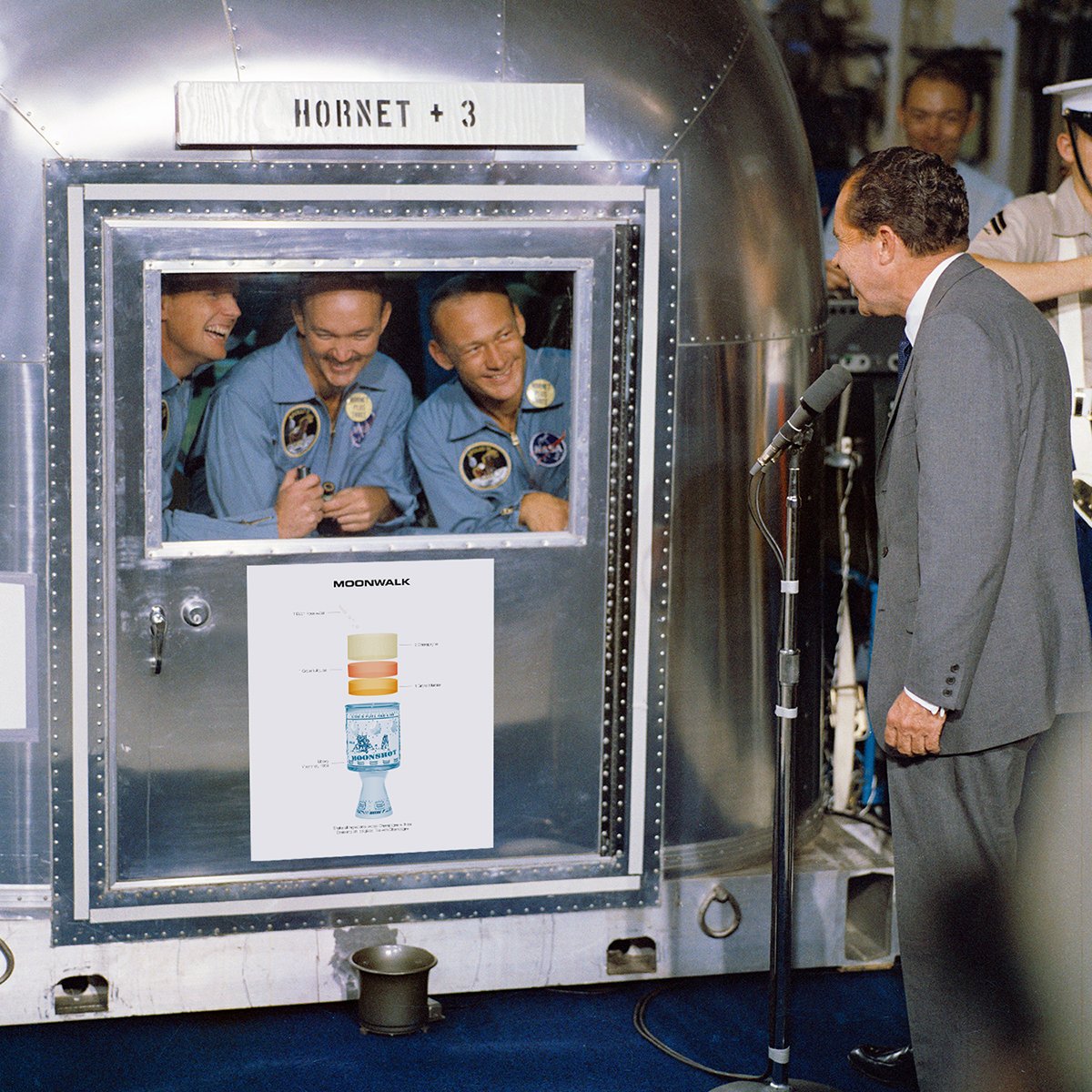ILLUSTRATION

bahama mama
During Prohibition in the United States, lasting from 1920 until 1933, the Bahamas became an important hub for smuggling Caribbean rum into the United States. Thanks to its convenient location, just 53 miles or 85 kilometers from Miami. This period could very well have been when the Bahama Mama was created, possibly to cater to the
new crowd of American bootleggers, gangsters and tourists. The impact of the bootlegging and the American tourists completely changed the islands economy as well as its society. The smuggling lead to an influx of money and increased urbanization, and with that, investment in infrastructure, particularly in Nassau. For Bahamas this became the starting point of a lucrative tourism industry that is still the driving force of its economy today.
The first time Bahama Mama was referenced was in a song from 1932 called Bahama Mama: That Goombay Tune. The Goombay being a genre of up-tempo music with elements of calypso and rhythm and blues, typical to Bahamas. The same year Henry Hall, a popular band leader for the BBC Dance Orchestra, remade into a Foxtrot. It became so popular that calypso singer Dorothy “Dottie” Lee Anderson started using Bahama Mama as a stage name twenty years after the was first recorded. She also used the monikers “The Nassau Sizzler,” “The Calypso Hip Wiggler,” “The Tropical Heat Wave,” and “The Shake and Shimmy Jungle Queen,” but “Bahama Mama” was understandably the name that stuck. Dottie made a name for herself singing in the hottest Miami nightclubs during the 1950s, a decade when the drink started to appear on cocktail menus, maybe as a tribute to Dottie.
Finally, a name that often gets mentioned in regards to Bahama Mama is Oswald Greenslade. He was a Bahamian bartender at the Pink Elephant Nightclub in Nassau Beach Hotel and says he invented the Bahama Mama in his bar in 1963 for three tourists who asked for a unique, fruity cocktail. He didn’t name his drink straight away but when Maureen Duvalier, Bahamian calypso singer, entertainer and global ambassador for the Bahamas, came into the bar a short while later he decided to name it Bahama Mama since she also used the popular stage name.
There has been questions about Mr. Greenslade claims, saying that the drink was well established and featured on cocktail menus during the 1940s and 1950s, even though said menus seem to be hard to find. Whoever invented the Bahama Mama, Oswald Greenslade has clearly been instrumental in popularizing the drink.
Giò Ponti was an Italian architect, industrial designer and furniture designer born in Milan in 1891. He got a degree in architecture from Politecnico di Milano in 1921. During his career he started the Domus and Stile magazines, built houses with flexible furniture, designed the Superleggera Chair, glass for Murano, built the Pirelli Tower in Milan and designed sets for La Scala, amongst other things. The Pezzente glass was designed by Ponti in 1946.

klainguti cocktail
In 1826 four brothers, confectioners from the Swiss town Pontresina close to St. Moritz, came to the Italian port city Genoa. The intention was work and save up money to emigrate and seek their fortune in America. Being successful and much appreciated in their new, supposed to be temporary home country, the Klainguti brothers decided to stay in Italy and set up a pastry shop in Genoa instead. In 1828 they opened Fratelli Klainguti on Piazza Soziglia in the heart of the old town in Genoa. The brothers soon became a beloved part of the city, especially among high society.
One of the most famous pastries at Fratelli Klainguti is the Torta Zena. Made with layers of sponge cake and filled with zabaglione cream, flavored with Marsala and rum, and topped with marzipan it is a cake found in many pasticcerie in Genoa today. The name Zena derives from the Genoese name for Genoa. Another of the Klainguti inventions is a brioche they created for their most famous customer, Giuseppe Verdi, who was a frequent patron of the pastry shop. They even named it after Verdi’s opera Falstaff and it was so well received by Verdi himself that he left Klainguti a thank you note reading: “Dear Klainguti, thanks for the Falstaff. Superb... much better than mine!”
In the late 19th century Italian pasticcerie, pastry shops, began transforming and adopting to the new Italian café culture, serving coffee and alcoholic beverages as well as lighter meals. This was a shift that spread across Italy and Fratelli Klainguti were part of this change.
The creation of the Klainguti cocktail is lost in history but it is very much a part of the Italian cocktail culture. Probably made sometime during the 20th century it has a lot in common with its Italian cousins featuring Campari, Italian vermouth (even though it is usually of the red variety), gin and Prosecco. You could say that the Klainguti Cocktail is like a Negroni Sbagliato where the bartender didn’t use Prosecco instead of the gin but instead used both. Where the cocktail stands out is with the addition of Cointreau a product that doesn’t generally feature in the true Italian classics.
THE DESIGNER
The glass, which is actually a candy dish, was designed in 1925 by the Austrian designer Oswald Haerdtl.

tallulah
This cocktail is not, as you might assume, named after actress, movie star and serious cocktail and Bourbon enthusiast Tallulah Bankhead. Instead, the cocktail is a tribute to the Southern blue collar tradition of putting a handful of peanuts into a bottle of Coca-Cola as a quick snack. This particular way of mixing salty peanuts into the sugary soda, sometimes referred to as “farmer’s Coke”, started in the 1920s when shelled and salted peanuts were first sold in small packets in grocery stores. The practicality of being able to have both food and drink in one hand, leaving the other hand free to drive your car or work made for it to quickly spread through the Southern states from Texas to the Carolinas. Basically all States that grew peanuts.
According to the National Peanut Federation it was convenient in another way too. Workers with dirty hands didn’t want to eat their peanuts without first washing their hands. When that wasn’t possible they could instead simply dump their snack into their bottle of Coke.
The Tallulah was invented by bartender Zak Kittle while working at Ollie Irene, a gastro pub in Birmingham, Alabama. The co-owner of Ollie Irene, Chris Newsom, had a great-aunt called Tallulah and her love for whiskey made them borrow her name for the drink.
The Tallulah is made with whiskey, typically Jack Daniel’s, peanut orgeat, instead of the regular orgeat made with almonds and featured in many tiki drinks, Coca-Cola and a garnish of salted peanuts.
THE DESIGNER
The glass was designed by Akira Minagawa, in 2021 as a collaboration with Sugahara glassworks. It is called Peanuts.

the long island iced tea
The Long Island Iced Tea hasn’t got anything in common with Iced Tea, it does however seem to have a lot to do with Long Island either Long Island, New York or Long Island, Tennessee.
In 1972, a bartender called Robert "Rosebud" Butt, working at the Oak Beach Inn on Long Island, New York entered a competition to create a new cocktail requiring the use of triple sec. The result, the Long Island Iced Tea, didn’t actually feature that much triple sec but it did contain loads of liquor. Some say that this blend of equal measures of vodka, gin, rum, tequila, triple sec, lemon juice, sugar syrup and cola has the taste of a hangover but the fact is that it is oddly well put together.
This is the most widely accepted origin story but there is at least one other often told claim. According to this, the drink was invented in the 1920s in Long Island, Kingsport, Tennessee by “Old Man Bishop”. This Prohibition era version was made with whiskey, rum, vodka, tequila, gin and maple syrup. During the 1940s Mr Bishop’s son Ransom Bishop added lemon and lime juice and a splash of cola to the drink. During Prohibition it was common for bar owners to mask the drinks by trying to make them look inconspicuous for example like an innocent glass of iced tea.
Interestingly the state of Tennessee had enacted their first prohibition laws as early as 1838 so bar owners were probably used to dealing with bootleggers in the 1920s. Especially in the eastern parts of the state, like Kingsport, where law enforcement officers were often in conflict with bootleggers and moonshiners. That said, it would have been very difficult to make a drink with five different types of liquor when spirits were already hard to come by, even with good contacts within the bootlegging world. Paired with the fact that vodka wasn’t widely used in the US until the 1940s, it isn’t very likely that the Long Island Iced Tea is native to Tennessee after all. Besides the drink wasn’t featured in print until the 1970s.
Regardless of its reputation of being a drink ordered solely for its alcohol content the Long Island Iced Tea became immensely popular during the 1980s and remains so to this day.
The glass, called Crystal Edge, was designed by Japanese glass designer Kenji Matsuura for Sugahara Glassworks in 2014.

the alvar and aino aalto savoy vase
Alvar Aalto was Finnish architect and design pioneer born in 1898. Known for his organic designs, Aalto's career was marked by a blend of architecture, furniture, and glassware, making him a key figure in Scandinavian modernism. His innovative approach to materials and forms, particularly his use of laminated wood and glass, set him apart in the design world.
One of Aalto's most iconic creations is the Savoy Vase, also known as the Aalto Vase. The story of this vase begins in 1936 when Aalto, alongside his wife Aino, entered the Karhula-Iittala Glass Design Competition. Their oflyt named entry "Eskimoerindens skinnbuxa" (Eskimo woman’s leather trousers), won first prize. The vase's design, was inspired by various sources, including the leather breeches of a traditional Sami woman, waves in water, and the contours of Finland's lake-rich landscape. The name "Aalto" itself means "wave" in Finnish, adding another layer of meaning to the design.
The Savoy Vase was created for the interior of the Savoy Restaurant in Helsinki, which the Aaltos were designing at the time. The vase's production posed significant manufacturing challenges, using a wooden mold that was slowly burned away, a technique that highlighted the vase's organic nature. Today, each vase is still hand-blown at Iittala, maintaining the original hand-crafted quality.
The vase gained international acclaim when it was presented at the 1937 Paris World's Fair, thereby cementing Aalto's reputation as a master of modern design.
In 1935 Aino and Alvar Aalto founded the company Artek together, with the aim of producing and selling their designs. Aino Aalto was the head designer and at Artek she created both glassware and furniture design.
To this day the Savoy Vase remains one of Alvar Aalto’s most famous and best appreciated designs. It is a great symbol of thee Aalto legacy.

la pasta italiana: casarecce
The Casarecce pasta originated in Sicilia and got its name from the Italian word “casareccio” meaning home made. The distinctive scroll like shape is obtained by rolling small rectangles of dough round a thin wooden stick or metal rod called a “ferro”. This process creates a pasta with the perfect amount of nooks and crannies to evenly distribute the pasta sauce to every forkful.
If the Casarecce isn’t home made the best commercially made pasta is produced with a bronze die, creating a rougher pasta surface that is even better at catching sauce than the home made version.
In Sicily, Casarecce is often served with traditional dishes from the region such as Sicilian pistachio pesto or seafood and fish like swordfish.

the french blonde
Considering that Stockholm has recently experienced a total Taylor Swift craze with three concerts on May 17 through 19 why not celebrate with her alleged favorite cocktail, the French Blonde. It’s a summery blend of Lillet, Gin, Elderflower liqueur, pink grapefruit juice and lemon bitters.
As usual with cocktail history the origin is a bit murky. Even the year of creation is vastly different from one story to another. The French Blonde might have first been mixed at a Parisian bar in the 1920s. Inspired by the classic French 75 the bartender wanted to create a cocktail with a feminine twist, giving it the name French Blonde as the color of the drink resembles blond hair.
Another story is that it was made by a bartender in New York in the 1950s. Also in this version the inspiration came from the French 75 but the idea was to create a modernized version of the WWI cocktail by adding the elderflower liqueur.
This said, I have found neither any confirmation of these stories nor any early recipes of the French Blonde. Which takes us to the Difford’s Guide where you can read that the cocktail was actually first published in Saveur.com in 2011, created by Caraline Bianchetto Chase. This might be the most plausible story of the three.
The glass is called Travasi and was designed in 2023 by Astrid Luglio.
By the way. Apparently Taylor Swift’s favorite color is purple, hence the sudden change of glass color.

the konstantin grcic chair one
Konstantin Grcic was born in 1965 in Munich but was brought up in Wuppertal, a city in the industrial part of Germany. The city is considered to be one of the ugliest cities in the whole country. “Growing up there created an awareness in me that there is beauty in ugliness” as Mr. Grcic describes it.
During the 1980s he studied cabinet making at Parnham College in British Dorset after which he continued studying Industrial Design at the Royal College of Art in London and worked for a while with Jasper Morrison. In 1991 Grcic went back to his home country to start his own design studio, Konstantin Grcic Industrial Desig, in Munich. Throughout his career Grcic has been fascinated by the industrial process following the footsteps of designers like Marcel Breuer, Vico Magiatretti, Gerrit Reitveld and Achille Castiglioni.
The Chair One was designed for the Italian design company Magis in 2004 and is a great example of Konstantin Grcic’s approach to design.
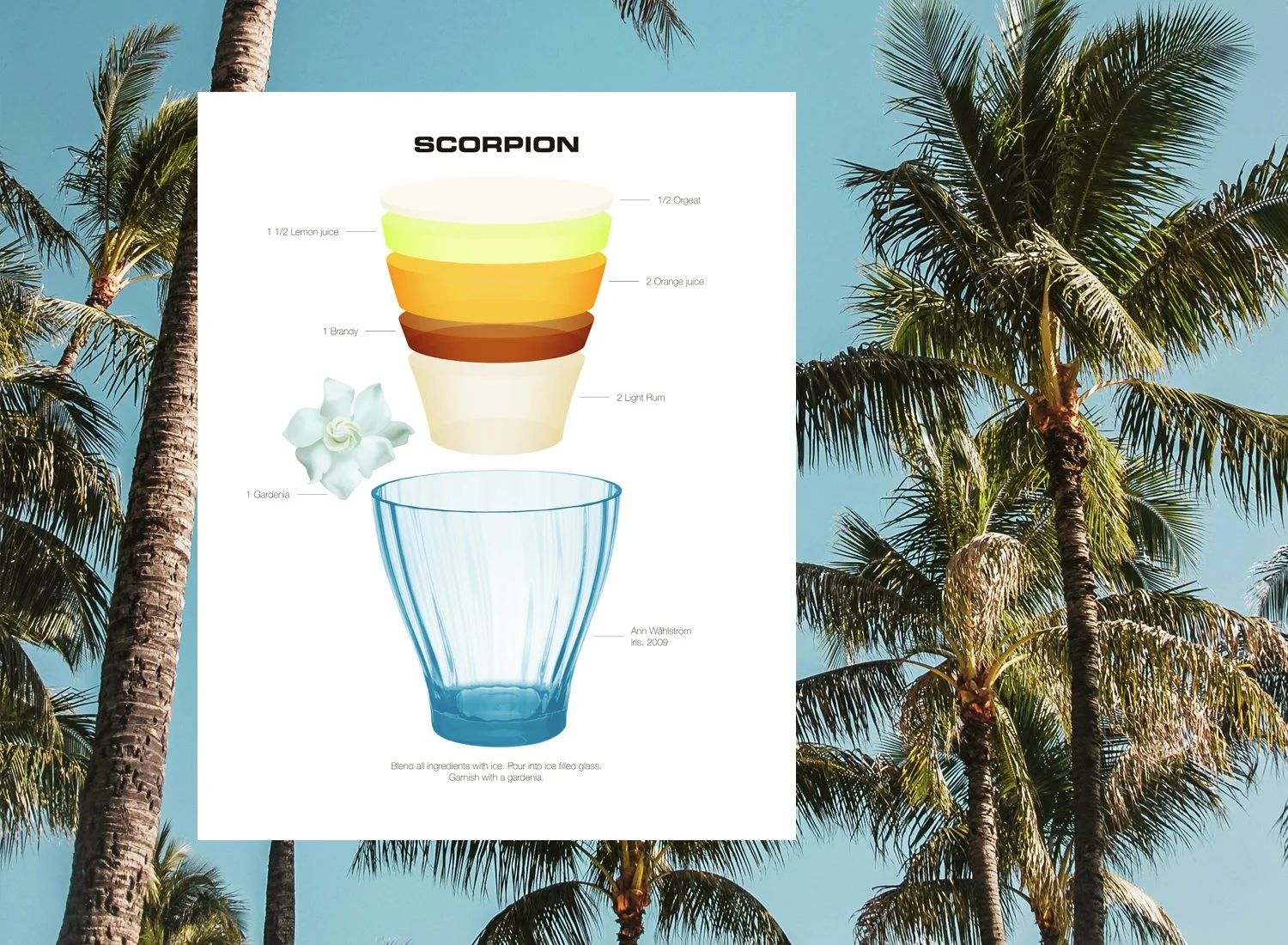
the scorpion
This drink is also known as the Scorpion Bowl as it was originally made and served in a communal bowl for up to 15 people. The Scorpion is attributed to tiki pioneer Victor Bergeron aka Trader Vic, but rather than inventing it Trader Vic found it on a trip to Hawaii at a bar called the Hut in Honolulu. At the time of Bergerons travel the base ingredient was the local Hawaiian spirit Okolehao, made from the fermented and distilled root of the Ti plant. The Hawaiians were taught the distillation process by British sailors in the 1790s. In fact, the Okolehao became so popular in Hawaii that King Kalākaoa had his own Okolehao distillery. On a side note, the king was often referred to as The Merrie Monarch thanks to his habit of entertaining his guests by singing and playing the ukulele. When King Kalākaoa died in 1891, his sister Liliʻuokalani took over the throne and became the last monarch of Hawai’i.
Back in California Trader Vic modified the Scorpion by changing the Okolehao to the easier to come by rum. He kept the idea of a communal bowl and had a custom bowl made specifically for the Scorpion. In Mr Bergeron’s “Book of Food and Drink” from 1946 the recipe contained 15 ingredients, like one and a half bottles of rum, gin, brandy and half a bottle of white wine along with the fruit juices. It was made for 12 people though. Over the years Mr Bergeron modified the recipe quite a bit, simplifying the long list of ingredients and even made a single serve option. The one thing Trader Vic kept throughout the recipes is the Gardenia as a garnish.
The glass is called Iris and was designed in 2009 by the Swedish glass designer Ann Wåhlström.

la pasta italiana: orecchiette
This very original pasta from the southern Italian region of Puglia, the heal of the boot if you will, is called Orecchiette, “little ears”. It is believed to have originated in the 8th or 9th centuries when Puglia was under Norman-Swabian rule, or Normanno-Svevo in Italian. With the origins this far back in time however, it is very hard to be absolutely certain how the pasta came about. Similar pasta is found both in Provence in France and in the northern parts of Liguria, the home of the Trofie, but the specific shape and the pasta seems to be a very Pugliese thing. Locally, the pasta is said to be made to look like the roofs of the Trulli houses, a very particular type of round, hut-like houses found in Alberobello in Puglia and nowhere else in the world.
The pasta is made without eggs and it is shaped by pressing your thump print into the dough to create a small bowl. This sauce-cup makes a perfect vessel to catch the pasta sauce, traditionally a tomato sauce, “orecchiette al sugo.”

la pasta italiana: pici
Made traditionally with just flour, water and salt, Pici is considered part of the “cucina povera” the poor cuisine, due to its lack of egg. The Pici pasta looks like a long, thick spaghetti curled up in bundles like tagliatelle. This Tuscan specialty is sometimes called “Pici Senesi” as it is believed to originate in Siena. Its roots however, dates all the way back to ancient Etruscan times. A pasta similar to Pici has been found depicted on a mural in the Tomb of the Leopards in Tarquinia, an Etruscan burial chamber from 540-470 BCE (that is technically in Lazio, not in Tuscany). From Tarquinia in the Viterbo region the Pici spread throughout Tuscany.
The rustic Pici has always been considered to be a rural, dish eaten by peasants (as opposed to the royal Mafaldine from Campania). In Tuscany it is often served with Cacio e pepe but one of the most traditional dishes is Pici all’aglione a recipe from the area surrounding Siena. The sauce is made with aglione, (a regional type of garlic), tomato, olive oil and peperoncino. Another typical way of eating the pasta is Pici alle briciole made with thin slices of Tuscan bread, peperoncino, garlic, salt, grated Tuscan Pecorino and, of course, olive oil.
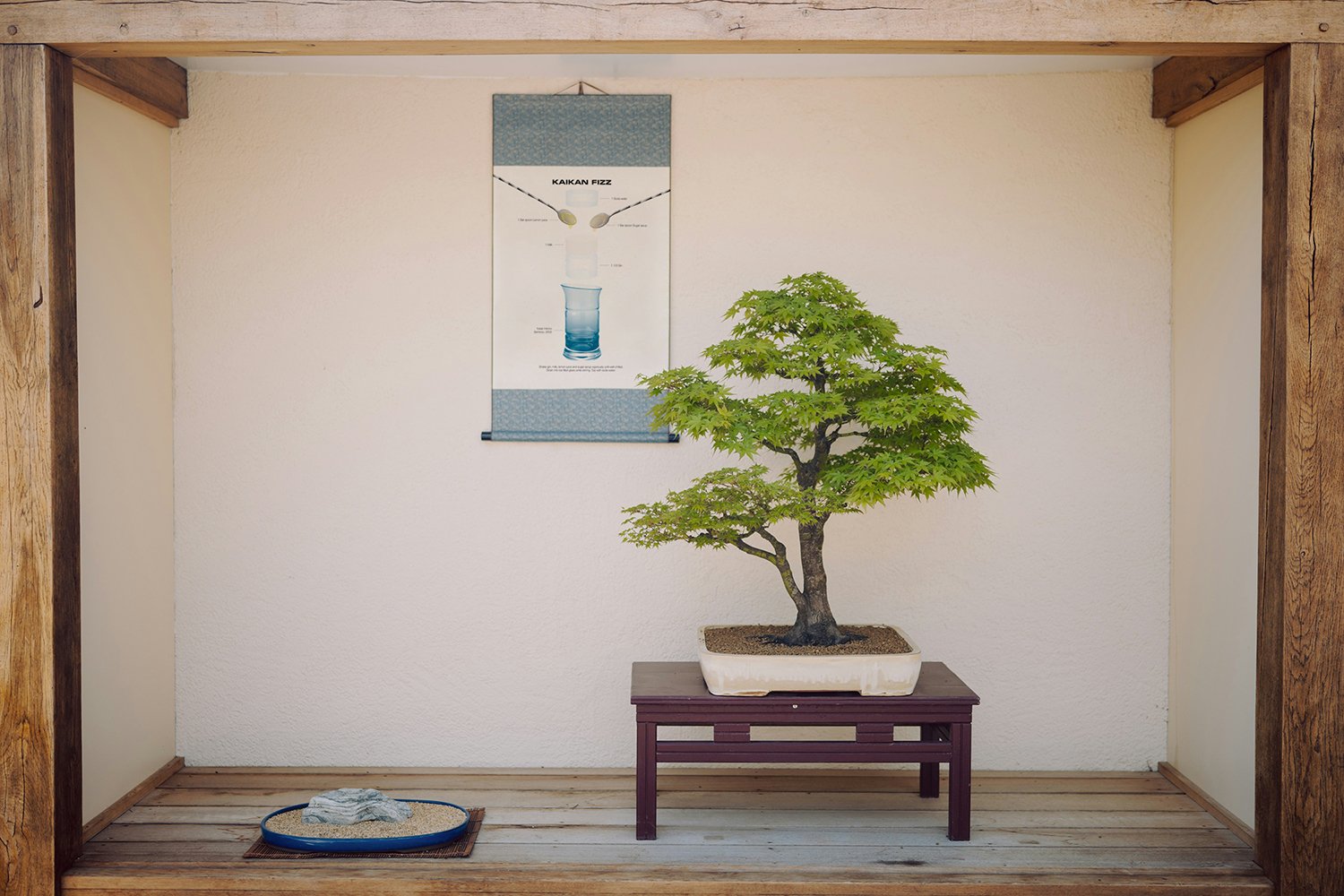
the kaikan fizz
The Tokyo Kaikan (meaning Tokyo Meeting Hall) was built in 1921, facing the Imperial Palace. It soon became a favorite spot for the city’s corporate elite with its restaurants, ball rooms and meeting rooms. The bar had five bartenders on its staff during the 1920s.
From the surrender of the Empire of Japan in September of 1945 until the Treaty of San Francisco in April of 1952, Japan was occupied and administered by the Allied Forces. During this period the Tokyo Kaikan functioned both as the US military officer’s club and as the Tokyo American Club for expatriate businessmen. With the influx of American soldiers the Kaikan soon went from five to forty bartenders on the payroll serving up to 1000 customers per day.
During the post-war occupation, people of Japan were living under hard conditions and rations while some of the American troops spent their free time in the bars of Tokyo. Overseeing the occupation was Supreme Commander for the Allied Powers, US General Douglas MacArthur. Entering the bar at the American Club in Tokyo in April 1949, General MacArthur was horrified to find American soldiers having fancy cocktails long before lunch when the Japanese outside were suffering.
After reprimanding his troops the American party stopped. That is until a crafty bartender, possibly Japan’s most famous bartender, Kiyoshi Imai, who worked the bar at Tokyo Kaikan, had a stroke of genius. He took a regular Gin Fizz, dialed down the seltzer, added an ounce of milk and called it the Kaikan Fizz. This made the drink look like a healthy glass of milk and no general could be opposed to something as wholesome as milk. So the soldiers could go back at it.
When the American troops left Japan in 1952, and the need to hide your day drinking was gone, the Kaikan Fizz had already become a modern classic that has been enjoyed ever since.
The glass called Bamboo was designed in 2002 by Japanese designer Yukari Hirono.
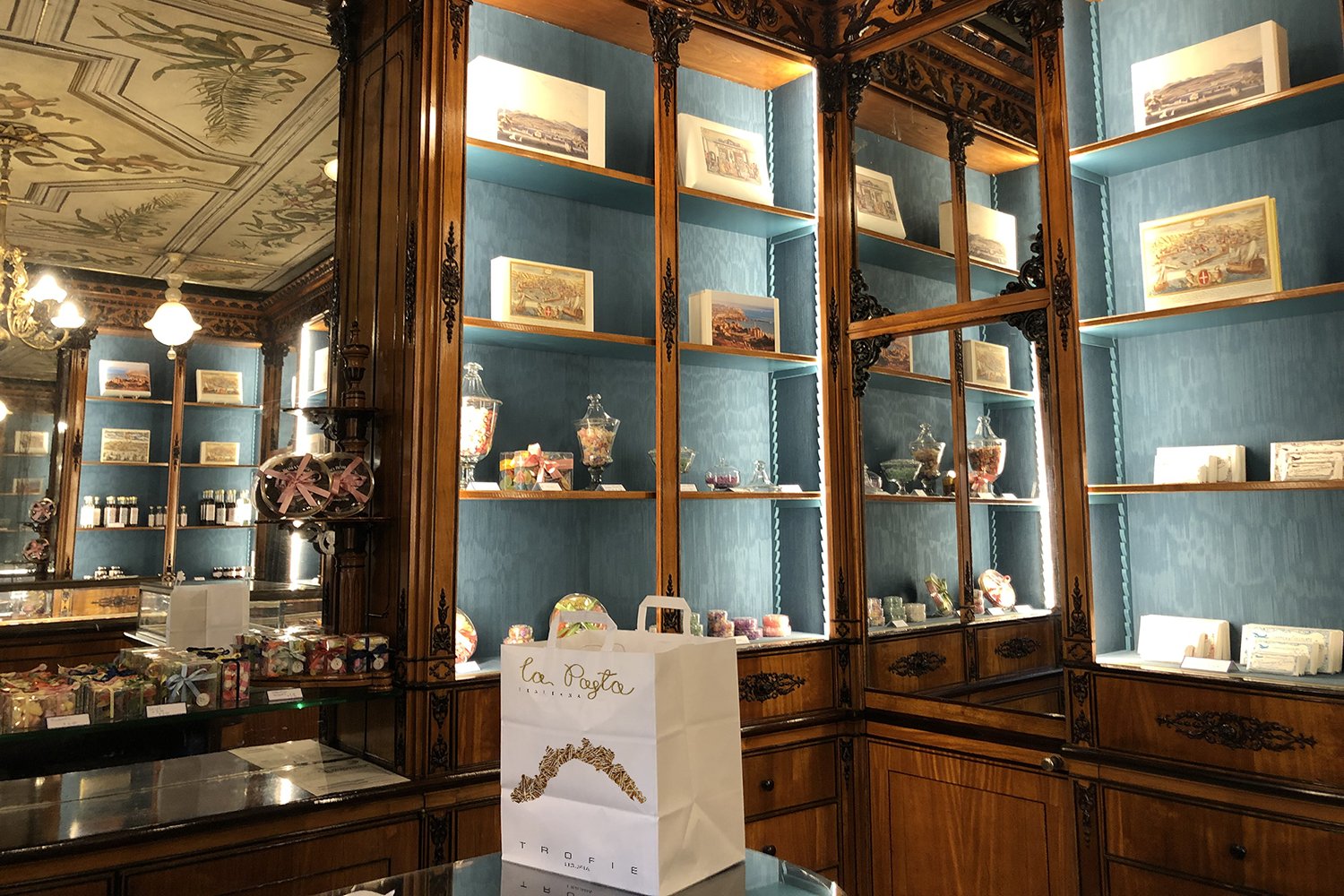
la pasta italiana: trofie
The region of Liguria is basically the continuation of the French Riviera. Known for the picturesque villages called Cinque Terre, (Monterosso, Vernazza, Corniglia, Manarola and Riomaggiore), but also Portofino, San Remo and, of course, Genova. Genova rose to power as a maritime republic in the Middle Ages, dominating trade in the Mediterranean Sea thanks to its prowess in shipbuilding and banking. During the city’s prime in the 16th century Genova rivaled Venice, attracting many artists including Rubens, Caravaggio and Van Dyck. Still to this day the city is filled with more beautiful palaces than they know what to do with, and visiting the city you often stumble upon incredible 16th century frescoes in shops, restaurants and bars. Liguria is also known for its pasta.
The pasta of choice in Liguria is the Trofie, a type of pasta originating in the Ligurian cities of Recco, Sori and Camogli m, on the so called Golfo Paradiso. This short pasta is made by hand rolling small pieces of dough, creating tapered ends. Then twisting the pasta into its final shape. It is thought that it was originally made from leftover dough from other types of pasta, rolled by fishermen’s wives while waiting for their husbands to come back from sea. The name probably comes from the Ligurian verb strufuggiâ meaning ‘to rub’ or ‘to twist’ which is essentially the technique used for making the pasta.
The Trofie didn’t make it to the port city of Genova until the mid 20th century but has since then been the go to pasta when making a Pesto alla Genovese in Genova always eaten with potatoes and green beans that are cooked together with the trofie.
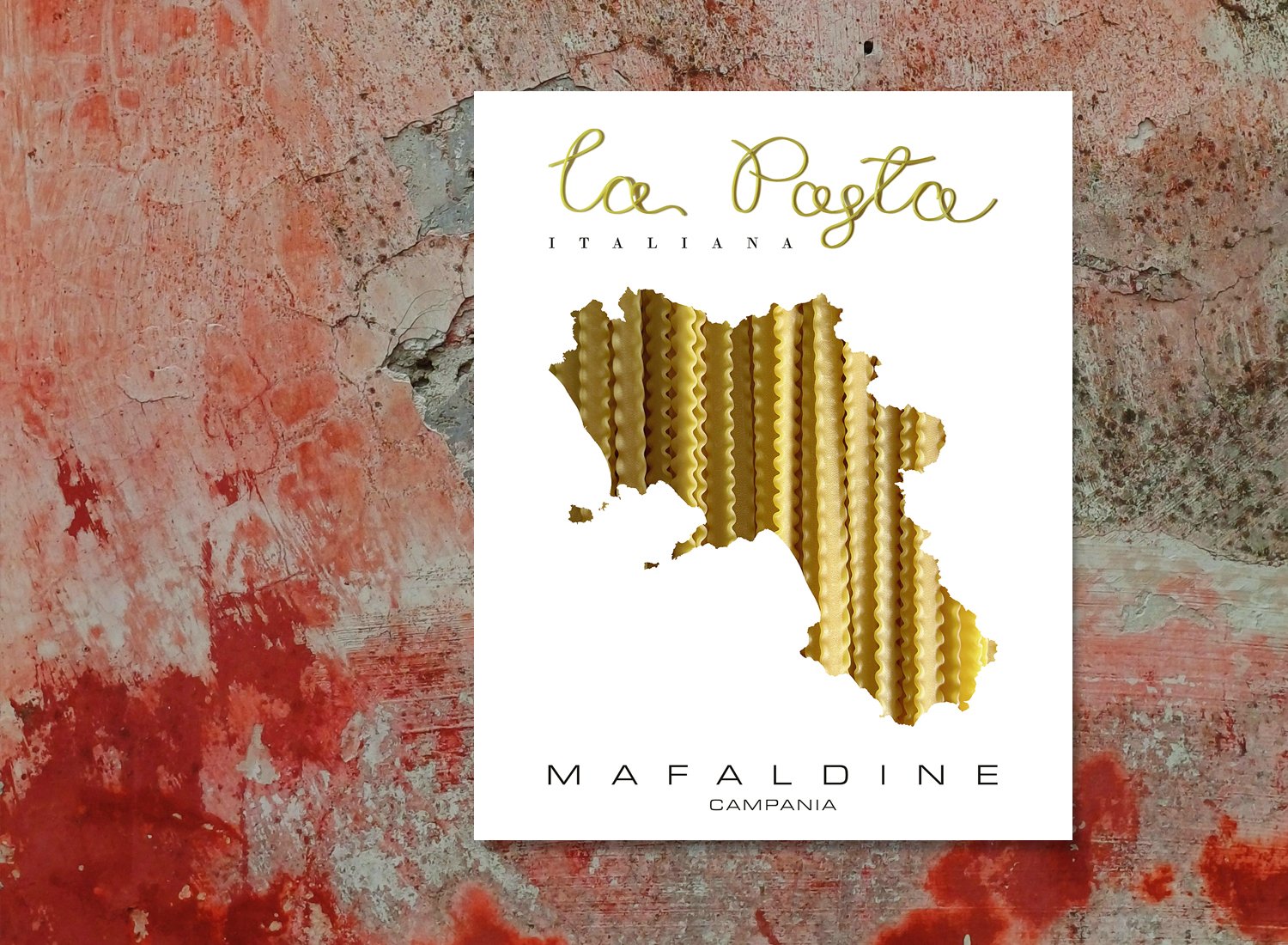
la pasta italiana: mafaldine
Here is the first in a brand new series of original artwork. This time we’re taking on the fabulous world of Italian pasta, one (or possibly more) from every Italian region, because all regions has their very own special pasta, fitting perfectly with their particular sauces. For instance Trofie from Liguria on the Italian riviera, that fits like a glove with the Pesto Genovese. For the first in the series however, we’re traveling down to Napoli and the region of Campania to try their pasta fit for royalty, the Mafaldine.
Mafaldine was originally called Fettuccelle Riccie and was created in Naples, next to one of the most dangerous volcanoes in the world, Mount Vesuvius. When Princess Mafalda of Savoy, the daughter of Italy’s King Vittorio Emmanuele III and Queen Elena of Montenegro, was born in 1902 the royal baby was honored by changing the name of the pasta to Mafaldine. Princess Mafalda happened to have wavy curly hair just like the the pasta, so the pasta fitted her perfectly.
On a side note, to honor the occasion of the royal wedding between Vittorio Emanuele and Queen Elena, specifically to honor Queen Elena of Montenegro, amaro maker Stanislao Cobianchi changed the name of his Elisir Lungavita to Amaro Montenegro. Still today you will find Amaro Montenegro in most Italian bars.
The Mafaldine is made of 1 centimeter wide pasta ribbons, las ong as spaghetti, with wavy sides that are slightly thicker than the middle part. This to make the sides sturdier, a feature that supposedly enhances the flavor of the pasta and its sause. Because of its royal connection Mafaldine is often used for special occasions, served with ragù or ricotta.
The life of Princess Mafalda however was very tragic. She married a German prince, Philipp of Hesse who worked as a Nazi intermediary between Germany and Italy during WWII. Adolf Hitler and Joseph Goebbels mistrusted the Princess and believed that she was collaborating with the allied forces. Mafalda was arrested and was sent to Buchenwald concentration camp, where she died.

the sixten sason waffle iron
In Sweden, the day of Annunciation is called Marie Bebådelsedag, (Mary’s Annunciation), or Vårfrudagen (the Day of our Lady). Vårfrudagen pronounced quickly became Våffeldagen, meaning Waffle Day, and all of a sudden this Christian celebration became a very secular waffle feast instead. At least that is the commonly accepted theory.
Waffles came to Sweden from Germany during the 17th century and have been enjoyed by Swedes ever since. Considering how expensive a waffle iron was in the olden days it remained a treat for the upper class for a very long time.
The first time waffles became associated with Annunciation was in 1867, in the region surrounding Gothenburg. It seems to have been a bit of a joke connecting the two, even from the beginning and the rather more plausible reason for the waffle feast was that it was a holiday and during holidays everyone tends to treat themselves to something nice.
Sixten Sason is one of Sweden’s most recognized industrial designers, mostly known for his streamlined designs for the Saab 92 and Saab 99. He also made several products for the kitchen ware company Husqvarna, amongst others the Waffle Iron, designed in 1957.
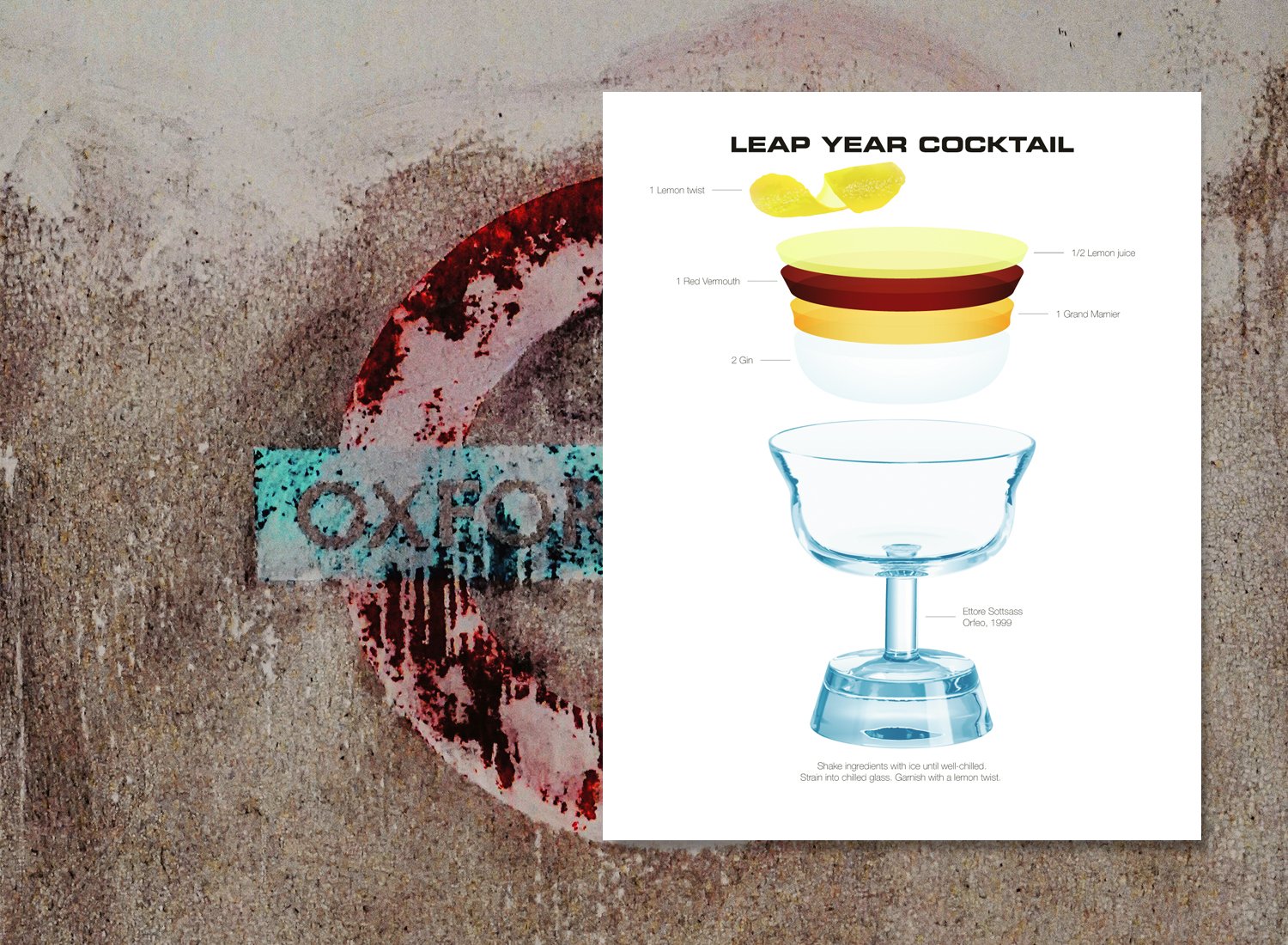
the leap year cocktail
This cocktail is one of the few with a very clear and concise history. It was made by the bartender legend Harry Craddock, head bartender at the American Bar in London’s Savoy Hotel. More specifically it was created for the hotels Leap Year celebration on February 29, 1928.
Two years earlier Harry Craddock had taken over as head bartender after another legend, Ada Coleman, was pushed out of the bar when The Savoy wanted to install an American as head of their American Bar. In reality Craddock was just American sounding. He was a Brit that had been working in the US, where he picked up an American accent. It was however good enough for Savoy.
The cocktail is presented in Craddock’s Savoy Cocktail Book with a note “It is said to have been responsible for more proposals than any other cocktail that has ever been mixed.” Maybe because of the Irish tradition that on this rarest of days women could propose to men. According to the tradition, if the man refused the proposal, he had to buy the woman a silk dress, or from the mid 20th century, a fur coat. In the upper classes of other European countries, taking over the Irish custom, any man refusing a woman’s Leap Day proposal had to buy her 12 pair of gloves. Possibly so that she could hide the fact that she was not carrying a ring.
The glass was designed in 1999 by the Italian designer Ettore Sottsass, inspired by Greek mythology.
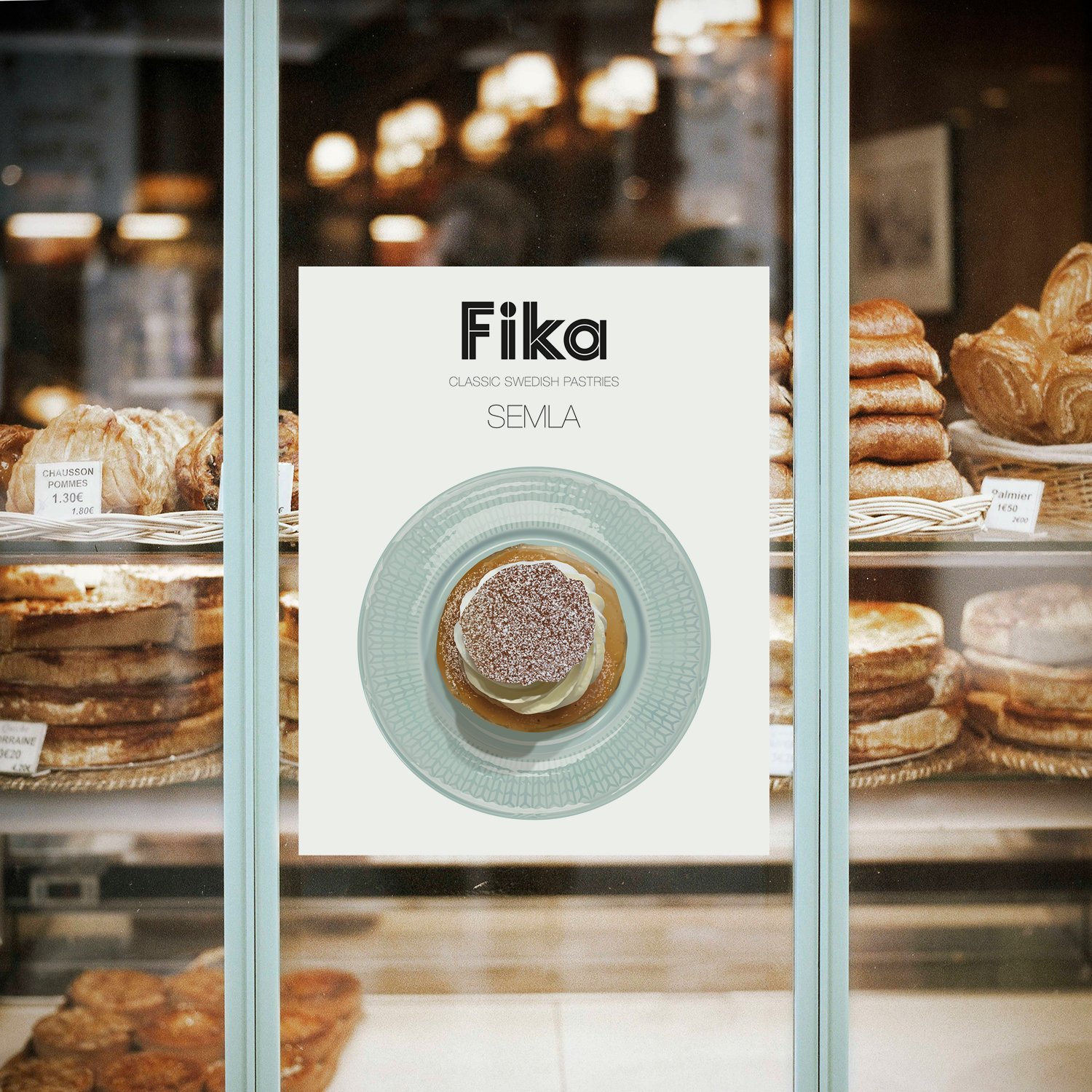
the semla
The history of this very seasonal Swedish bun is older than you might think. The name is thought to be a mix of two Latin words, “Simila” meaning wheat flour or bread baked from wheat flour, and “semi” for half. It was mixed with “semlja”, an old word of unknown origin meaning globe. Simila, and similar sounding words with the same meaning, spread during antiquity and were used by Romans, Greeks and Arabs alike.
During the 1500s in Copenhagen, Denmark there were special “Simle bakers” and in the Swedish king Gustaf Vasa’s Bible from 1541 the word appeared again when it was mentioned that offerings were made consisting of “baked semlo cakes mixed with oil”.
Starting as a plain round bun it began to transform from the 1500s and onwards. The first part of the change was that it was sweetened with honey, some years later the crumb was scooped out and cooked with cream and butter before being returned to the hole in the bun. In the 1700s almonds became more common in Sweden and they were ground and mixed with the crumb and cream mixture. In the 1850s almond paste was started to become more prevalent and took the place of the ground almonds. Not until the 1930s the whipped cream became an integral part of the bun, making it into what Swedes know and love today.
Up to the 1950s Swedes started eating Semla on Fat Tuesday, Fettisdagen in Swedish, and ate them until Easter. Only on Tuesdays though. This tradition has now given way to the Semla being sold from right after Christmas until Easter. In Sweden we eat an average of 4-5 Semla per person each year. It adds up to 40 million. Mind you, this is a bun that is solely sold during a three month period so you see them pretty much everywhere during this time of year.
In essence, when many parts of the world have carnevals, Swedes sit down with a cup of coffee and a wheat bun filled with almond paste and whipped cream.
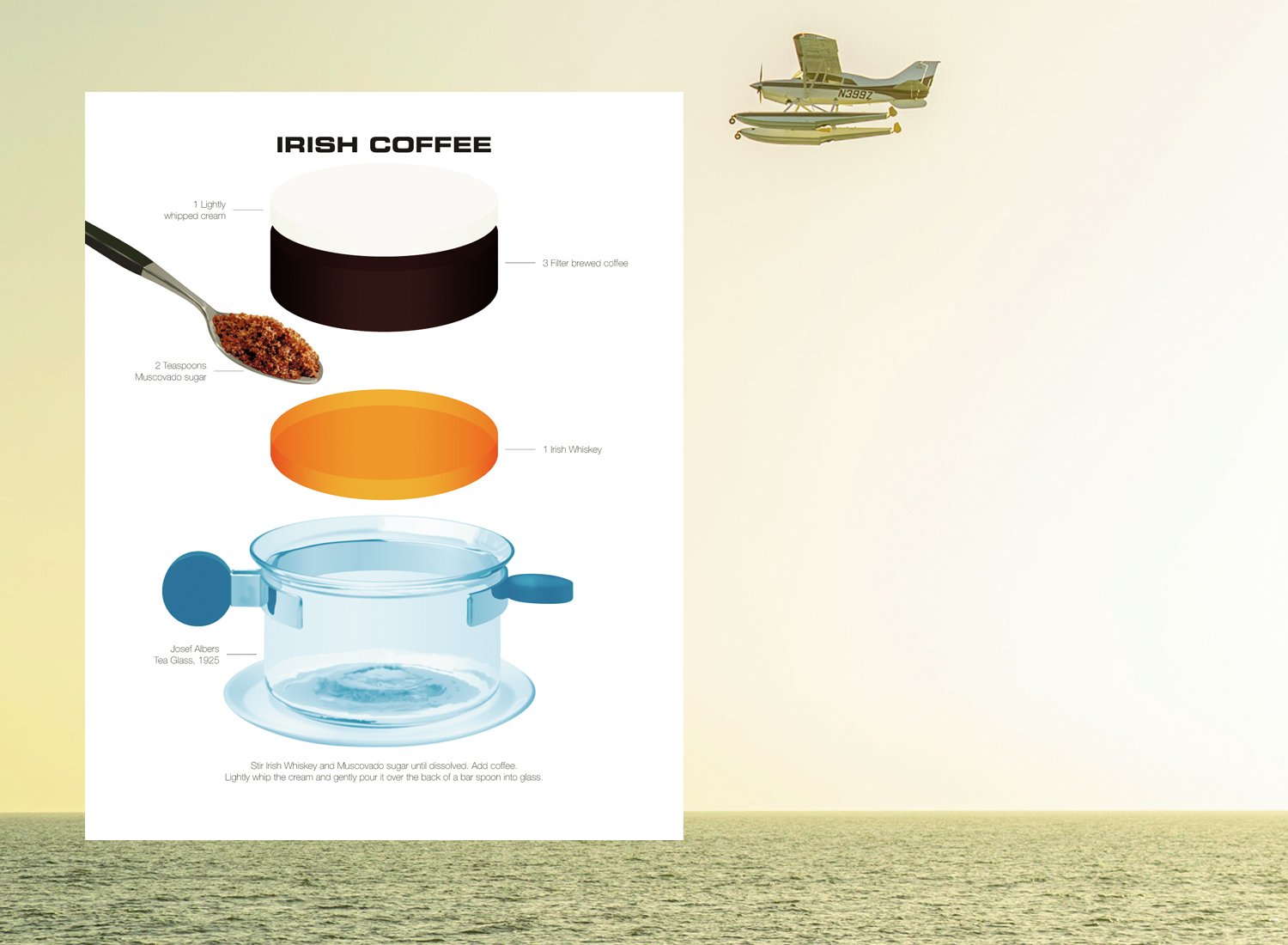
the irish coffee
The first commercial airline route from London to New York was a bit demanding. You couldn’t go straight from the UK to the US without refueling. The planes first used for the route were Boeing’s so called “Yankee Clipper”, a long-range Pan Am luxury flying boat, seating 77 passengers. The Clippers were the reason Foynes Flying Boat terminal was built in the Limerick County of Ireland in 1937, becoming Ireland’s first transatlantic air base.
On a particularly dank and cold winters night in 1942 the Pan Am flight to New York had to return to Foynes due to bad weather. The passengers took refuge at Joe Sheridan’s restaurant and bar where they were offered something to raise their spirits, a mixture of hot coffee, sugar, Irish whiskey and cream. One of the passengers asked whether it was a Brazilian Coffee. Sheridan answered that “No, this is Irish Coffee”.
The original Joe Sheridan recipe reads like a poem. “Cream as rich as an Irish brogue; coffee, strong as a friendly hand; sugar, sweet as the tongue of a rogue; and whiskey, smooth as the wit of the land”.
10 years later the American travel writer and Pulitzer Price winner Stanton Delaplane stumbled upon the drink at Shannon Airport, that had replaced Foynes, and he brought the recipe back to San Fransisco. At the Buena Vista Cafe he and his friend Jack Koeppler, the then owner, started experimenting to try and recreate the original Irish Coffee. They were so meticulous in their efforts that they finally concluded that the lightly whipped cream should be no less than 48 hour old. All their hard work payed off in the end and still today, more than 70 years later, the Buena Vista serves up an whopping 2,000 Irish Coffees every day.
The glass, originally a tea glass, was designed in 1925 by German-American designer and artist Josef Albers.
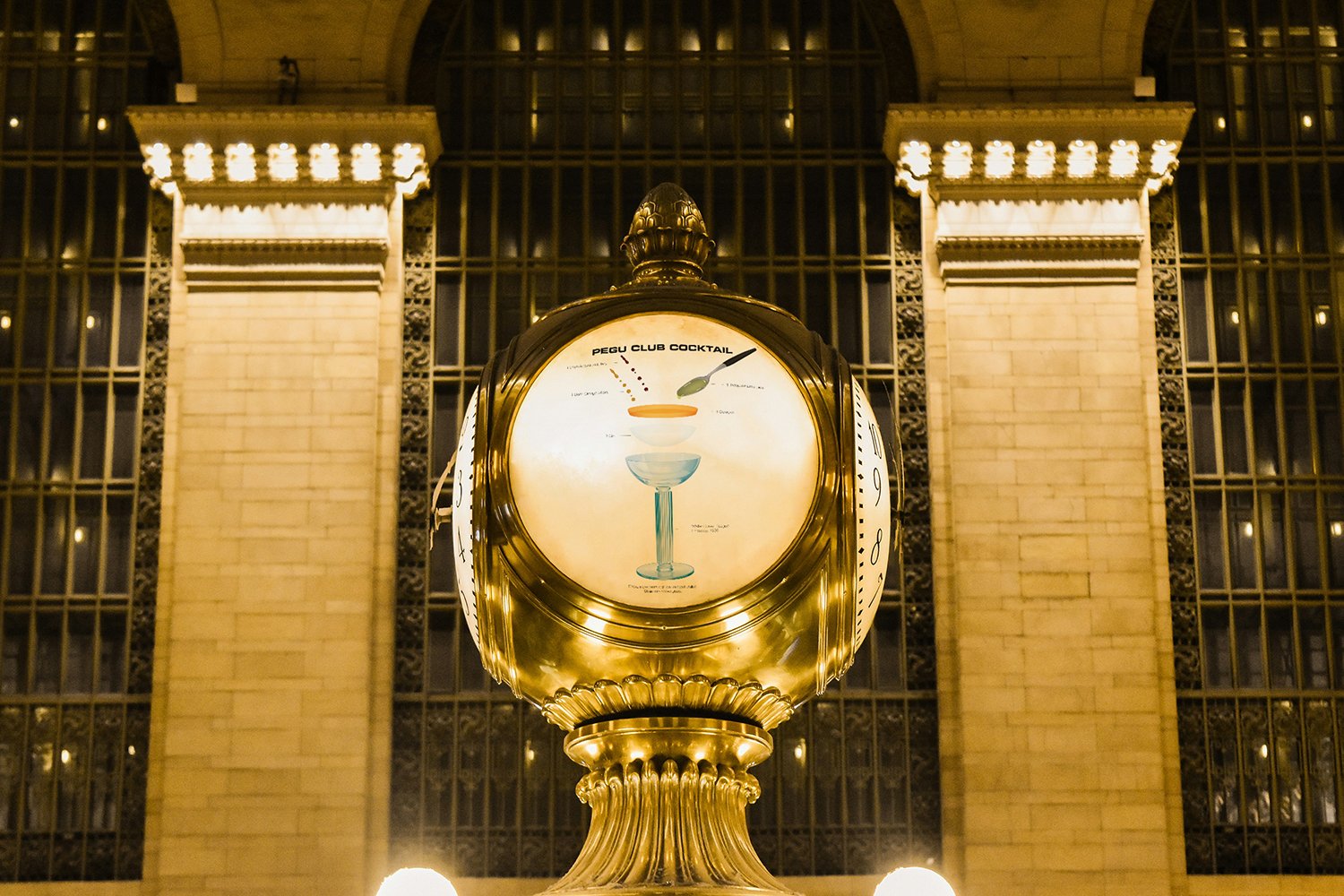
the pegu club cocktail
The Victorian style gentlemen’s club, The Pegu Club, was founded in 1871 in Rangoon, Burma (now Myanmar) during the British colonial era. Thanks to the fast rise in members they soon outgrew their original clubhouse and in 1882 they moved to their current location, a compound with several houses and gardens. The club was named after the Pegu river and was the home away from home for British officers, officials, businessmen and the likes staking a colonial claim to Burma.
The signature cocktail, bearing the name of the club, was probably created in the early 1900s. It is essentially a gin sour without egg white and with the unusual addition of two types of bitters. Whenever it was created, the cocktail had made it across the globe in 1922 when it was published in Harry MacElhone’s “Harry of Ciro’s ABC of Mixing Cocktails”. Eight years later, in 1930, Harry Craddock writes in his “Savoy Cocktail Book” that the Pegu Cocktail “has travelled, and is asked for, around the world.” In other words, it spread remarkably fast for the time. Maybe partially thanks to the fact that journalists and authors frequented the Pegu Club when in Rangoon. Rudyard Kipling, for instance, visited the Pegu Club in 1889 as a young newspaperman.
After being all but forgotten the Pegu Club Cocktail was returned to its former place among its cocktail peers in 2005 thanks to Audrey Saunders, who opened a bar called Pegu Club in New York. Her mission was to reintroduce classic gin-based cocktails to the city, at a time when vodka was dominating the New York bar scene.
After many years of disrepair the government decided to return the Pegu Club to its former glory and the buildings an gardens are now a Myanmar heritage site.
The cocktail glass called Embassy was designed in 1939 by the American designer, architect, illustrator, graphic designer and writer Walter Dorwin Teague.
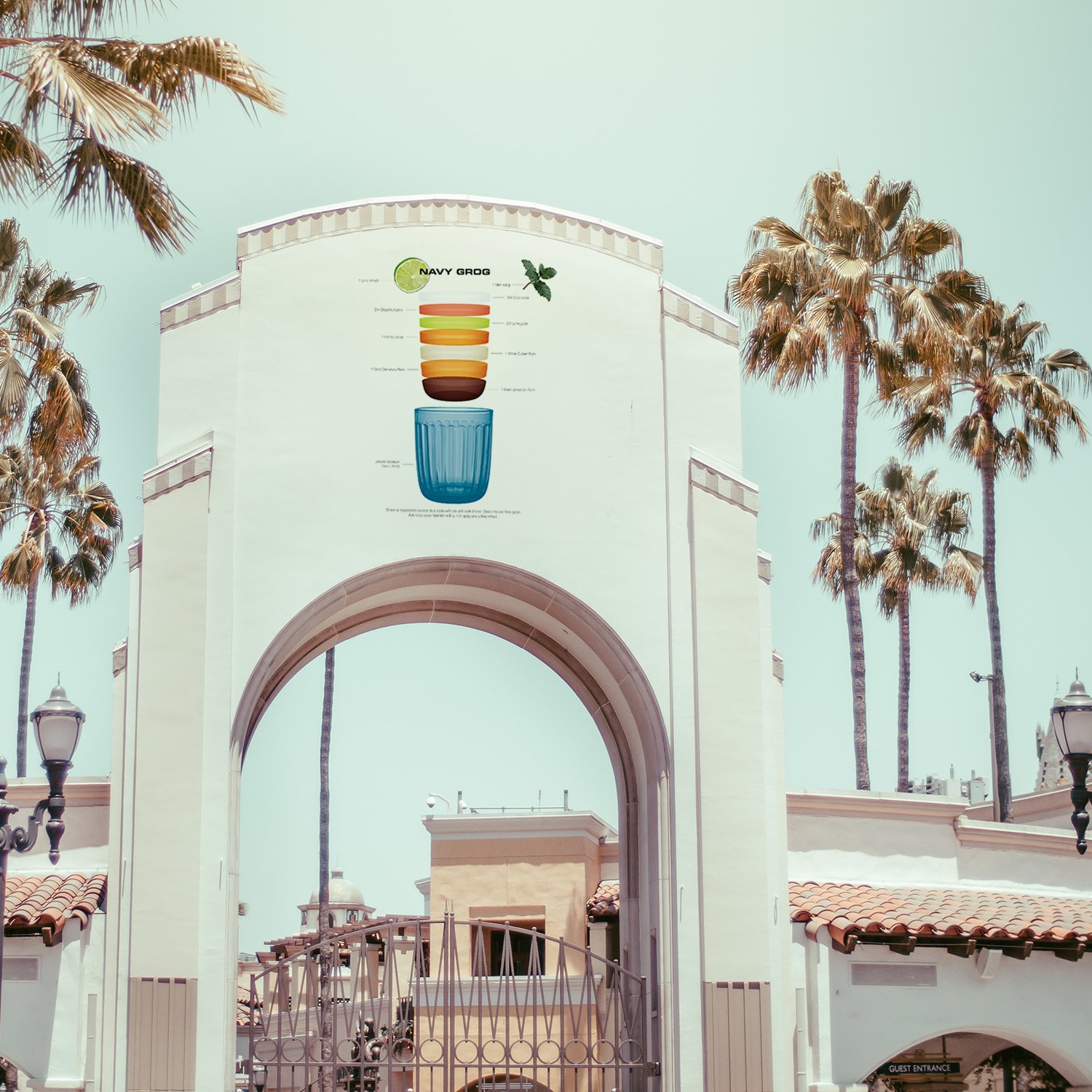
the navy grog
The history of the Navy Grog starts in the 1650s when sailors in the British Royal Navy began to receive a daily ration of half a pint of rum to boost their moral during long and treacherous journeys across the oceans. Their moral was indeed boosted but it came at the price of drunk sailors performing far below navy standards.
Enters a man and his favorite weather proof grogram overcoat. Grogram, taken from the French gros grain, meaning coarse grain, was a fabric made of silk and wool or mohair and often stiffened with gum.
The man with the coat was Vice-Admiral Edward Vernon of The British Royal Navy. Starting his career he soon realized that half a pint of rum per day was a rather bad idea, made worse by the fact that they usually had it in one go. Being drunk on a boat is generally a bad idea but being drunk during active duty in the navy is even worse.
In 1740 the Vice-Admiral ordered that, not only should the ration be divided in two quarter pint servings, the rum was to be diluted 4:1 with water. Mixing it with lime that was kept on board to stave off scurvy he unintentionally created one of the first ever mixed drinks, the grog, getting its name from Vernon’s nickname Old Grog.
200 years later in the early 1940s Donn Beach, or Don the Beachcomber, created a three ounce rum drink that he called Navy Grog. Made with three types of rum he described it in his menu as “A robust rum punch dedicated to the gallant men of the American Navy.” The Navy Grog was slightly altered by “Trader Vic” Bergeron who made it even more famous at his Tiki bars across the US. Allegedly, Richard Nixon used to sneak in the back door at Trader Vic’s in Washington DC at 3 am during the Watergate hearings to pour his heart out to the bartender over a several Navy Grogs.
The glass called Rami was designed by Jasper Morrison in 2019.
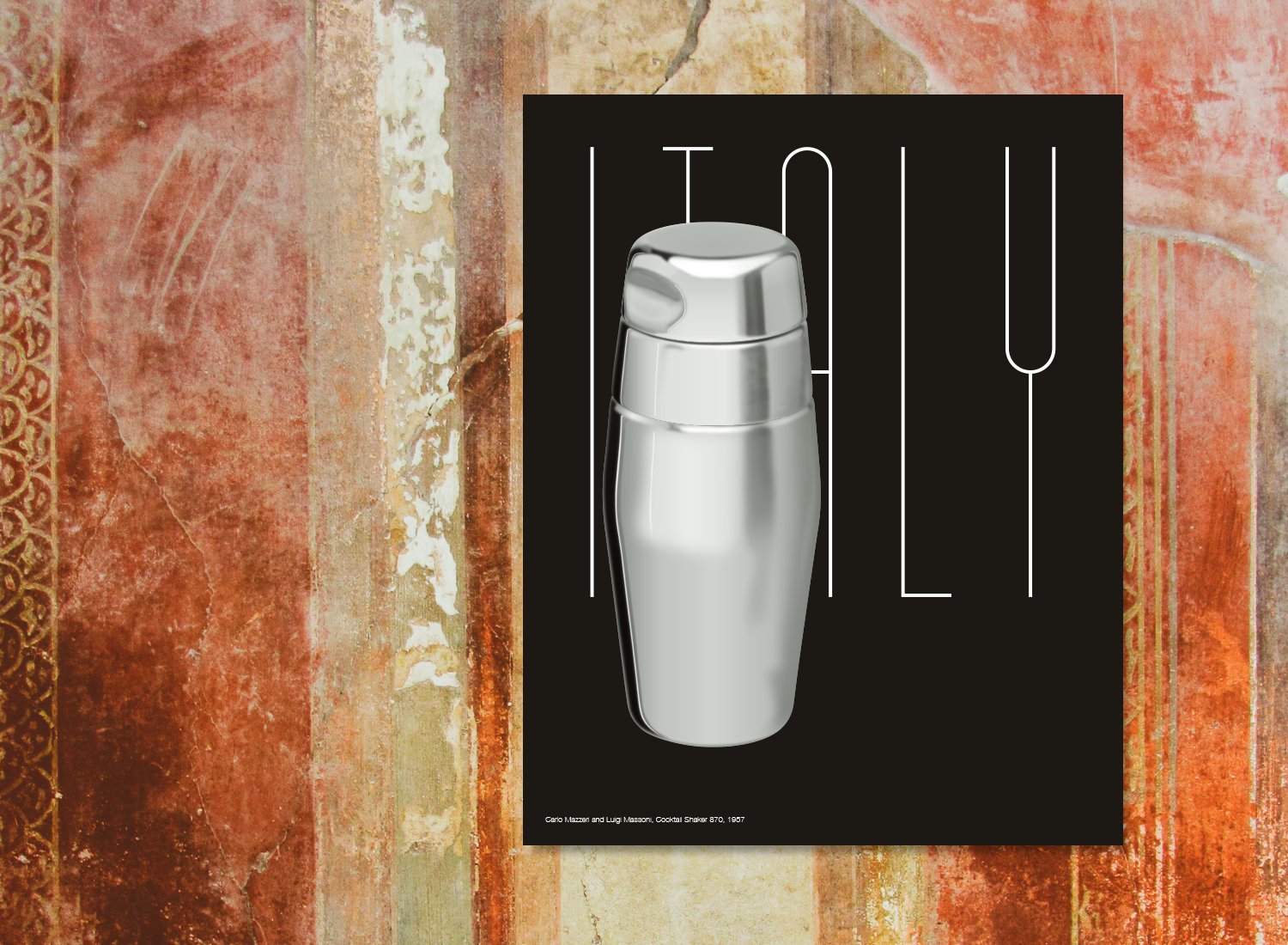
the alessi shaker 870
The Alessi company was founded in 1921 by sheet metal worker Giovanni Alessi Anghini who set up shop in Omegna, not far from Milan. The company started out making tableware in copper and brass but they soon expanded to coffee pots, trays and other household products. In 1938 Alessi introduced stainless steel and after the war this entirely replaced brass in the production. From the 1930s until the ’50s Carlo Alessi, the son of Giovanni, was head designer but when his younger brother Ettore joined the business in 1945 he made Carlo realize the potential in hiring external designers.
One of the first project being designed outside the family was the incredibly successful Shaker 870, created by Carlo Mazzeri and Luigi Massoni in 1957.
Carlo Mazzeri was born in Oleggio, Italy in 1927 and studied architecture in Venice. Just a year after graduating in 1956 he designed the shaker for Alessi with Luigi Massoni.During the 1960s and ’70s he kept working for Alessi alongside Anselmo Vitale, designing a series of products for the hotel industry. Working with industrial construction, Mazzeri also made the new Alessi plant in Omegna in the 1960-1971.
Luigi Massoni was born in Milan in 1930 and this is where he studied at the “Collettivo di Architettura”. One of his first major designs was the Shaker 870 but he continued working with Alessi, creating the Serie 5 containers. Massoni wasn’t just working as an architect and designer, he was also a freelance journalist and in 1959 he founded “Mobilia” a center for the promotion of Italian Design. Through the years Massoni kept designing for the home and kitchen working with Boffi and Guzzini.
Through the years Alessi has worked with designers like Achille Castiglioni, Patricia Urquiola, Zaha Hadid, Jasper Morrison and Philippe Starck.
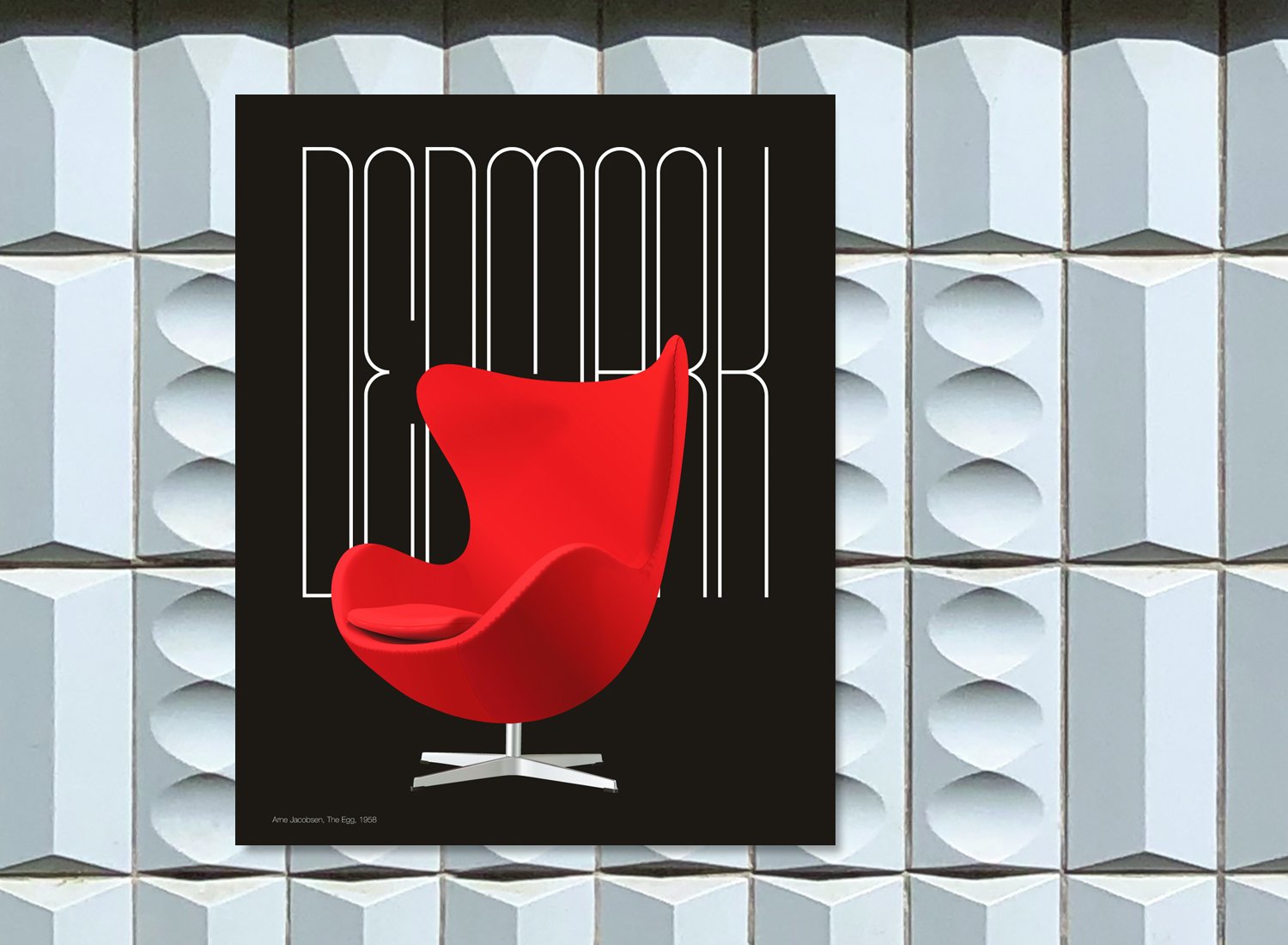
the egg chair
When the SAS Royal Hotel in the Danish capital was finished in 1960, it was a marvel. It was Copenhagen’s first skyscraper and it is considered to be Arne Jacobsen’s principal work of architecture. The building was designed with two separate sections with different functions. The 22 story tower contains 275 hotel rooms and the lower horizontal building held the hotel foyer, a restaurant and a conservatory. Regardless of the fact that the building was situated in the center of Copenhagen, 14 kilometers from the airport, it was also an airport terminal. Here SAS passengers could check in their luggage and wait in the stylishly furnished lounge for the SAS airport shuttle to whisk them away to their flights.
In the end, the most remarkable result of the project wasn’t the building itself but rather the furniture that Arne Jacobsen designed for the hotel. Not only did he create the Egg, he also designed the Swan chair and the Drop chair as well as a wide range of other custom furniture, glass wear, textiles, cutlery and more, specifically for the hotel. Just like Gio Ponti in Italy, Arne Jacobsen preferred to design all aspects of a project himself. From the structure to the furniture and down to details like door handles.
In keeping with the design trends of the day, Arne Jacobsen was inspired by organic shapes the same way Eero Saarinen and Charles & Ray Eames were. Using the latest in materials and production technology he was able to create the remarkably organic shape of his sculptural Egg, intending to lend the visitors a calm space where the chair was placed in the bustling hotel lobby. In fact, he actually made the initial model just as you would a classic sculpture by adding and filing of material from the plaster model.

kikkoman soy sauce dispenser
In a way the history of the Kikkoman Soy Sauce dispenser, designed in 1961, started at the end of WWII. Kenji Ekuan was born in Tokyo but spent his early years in Hawaii. At the end of the war his family moved to Hiroshima where his father worked as a Buddhist priest. At 16 Ekuan was just released from naval academy when the atomic bomb destroyed Hiroshima and he witnessed the devastation from the train taking him back home. He lost his sister in the blast and his father became Ill with radiation sickness and died a year later.
This tragedy lead him to rethink his career. Instead of following his father’s footsteps he decided he wanted to take part in reshaping post-war Japan through design.
In a later interview he told the New York Times “Faced with that nothingness, I felt a great nostalgia for human culture”. He continued “I needed something to touch, to look at”. “Right then, I decided to be a maker of things.”
In 1952, soon after graduating from the National University of Fine Arts and Music in Tokyo, Mr Ekuan founded his design studio G.K. Design. One of his early assignments came from Kikkoman who wanted him to create a soy sauce dispenser. Up til then soy sauce was bought in big glass bottles and poured into small ceramic dispensers. Due to the particularly high viscosity of soy sauce it, more often than not, dripped along the side of the dispenser leaving a stain on the table.
Kenji Ekuan chose to make a glass bottle so you would know exactly when to refill it, and when you did you wouldn’t spill thanks to its wide mouth. The bigger problem was how to make the cap.
This part of the project ended up taking 3 years. It had to be easy to pour but yet spill-proof. After 100 prototypes Ekuan realized that the best solution was an upward facing spout. The spout design made the last drop flow back into the bottle rather than dripping onto the table.
Released onto the international market in 1961 the Kikkoman soy sauce dispenser became a symbol of new contemporary Japanese design. Ekuan’s goal as a designer was to make design solutions for the masses and with the Kikkoman dispenser he managed to do just that with an exquisite example of Japanese design spread to kitchens all over the world.
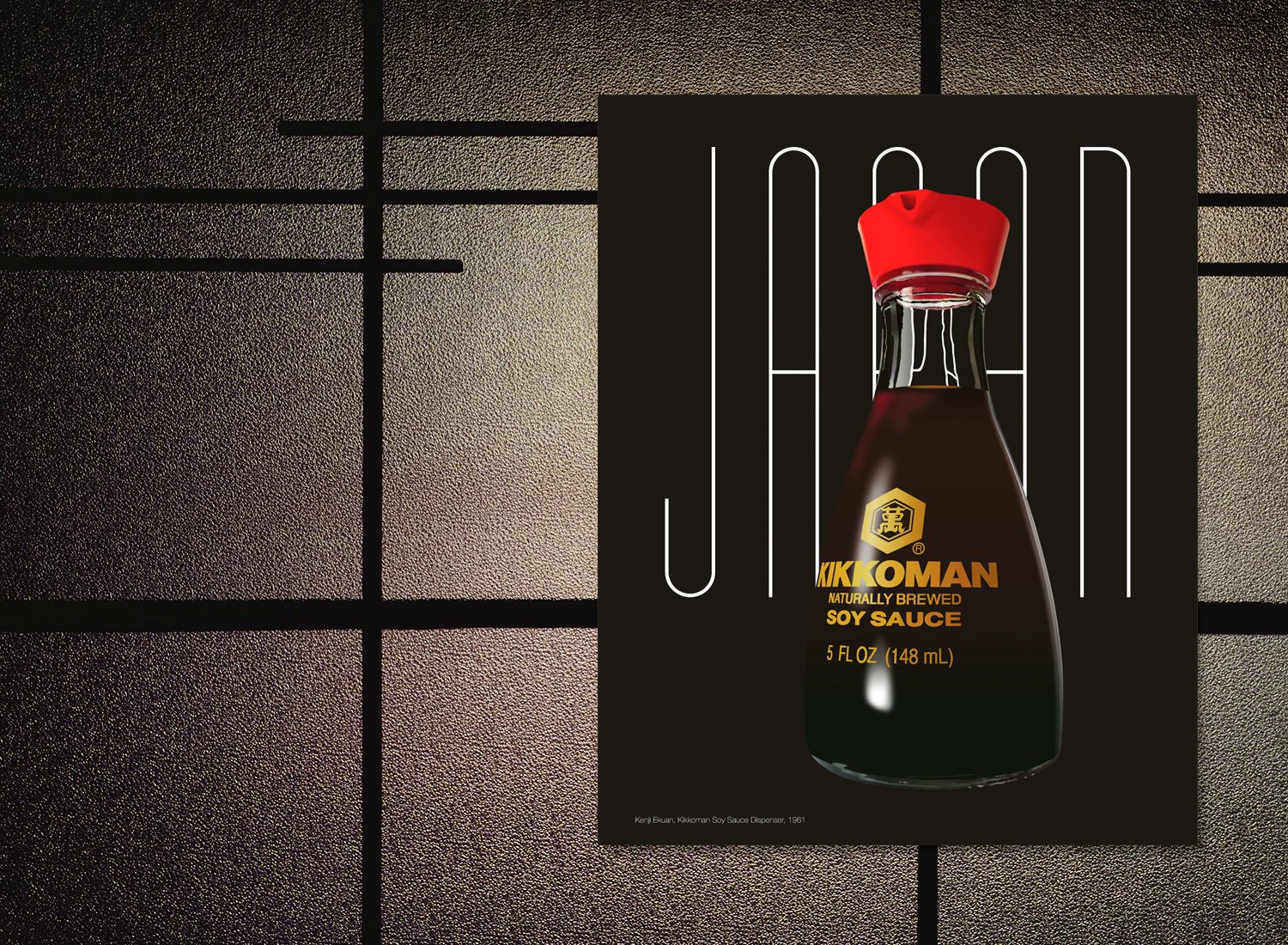
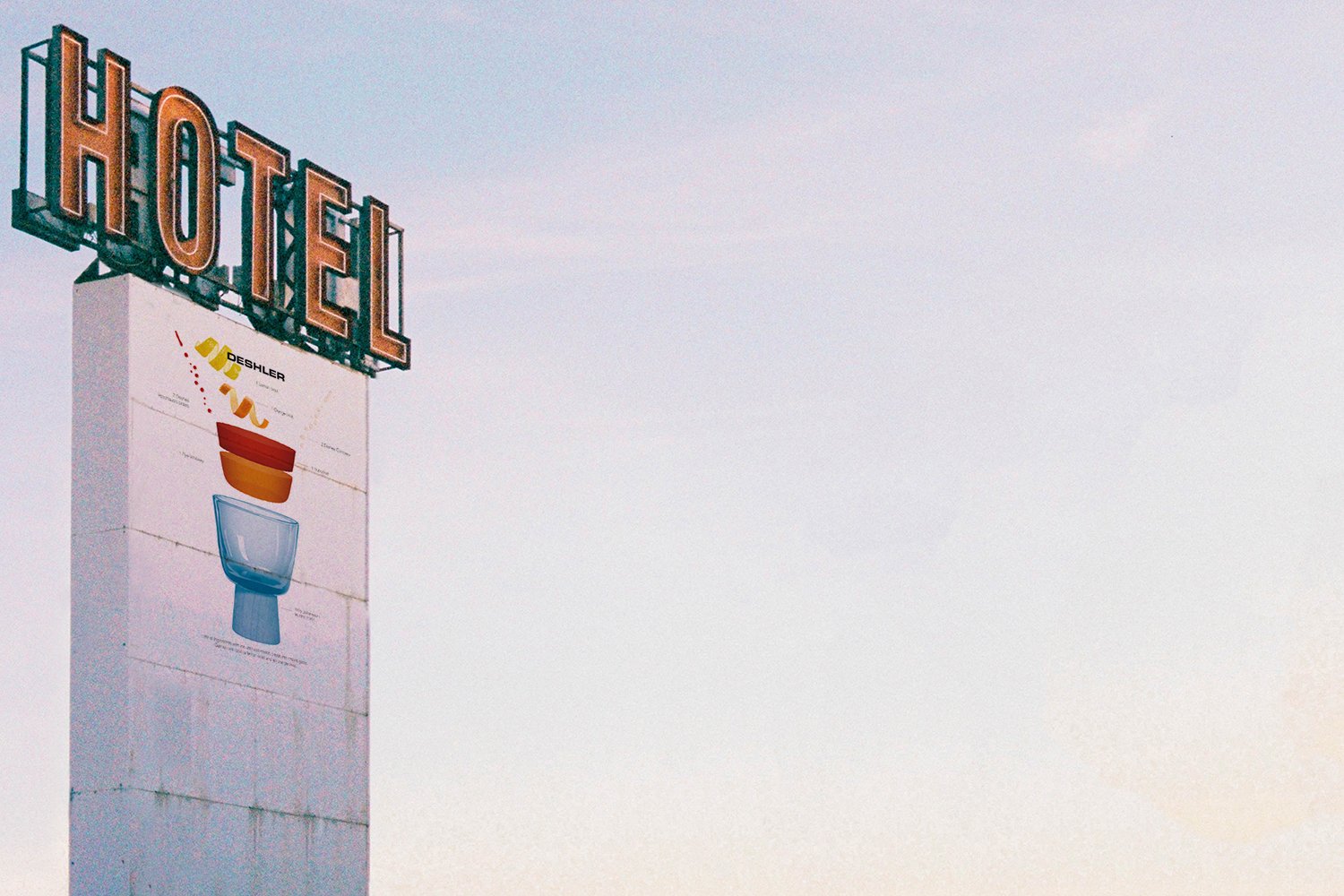
deshler
This younger cousin of the Manhattan was created a few years before the American prohibition. First published in Hugo R. Ensslin’s Recipes for Mixed Drinks in 1917 it is also, according to Cointreau, probably the first ever American cocktail that calls specifically for the French orange liqueur.
As opposed to the Manhattan the Deshler is also specific when it comes to another ingredient. Instead of using a sweet vermouth the Deshler is made with Dubonnet, the French fortified wine created in 1846 to help the French colonists in Northern Africa cope with malaria.
The name of the cocktail is taken from the Deshler Hotel in Columbus, Ohio, one of three hotels owned by two brothers called Wallick. Hugo R. Ensslin worked at all three but he worked longest at their Wallick Hotel on Times Square, New York, and this is supposedly where he created the Deshler.
Interestingly, the Deshler Hotel in Columbus was listed in the African American postal worker Victor Hugo Green’s The Motorist Green Book. This was a guide book where African Americans could find hospitable lodgings during the time of the Jim Crow laws of racial segregation in the southern states of the US.
A more far fetched background story to the cocktail is that it was named after a lightweight boxer called Dave Deshler. After a pretty good career he finished his last ever boxing match getting 7 technical knockouts in January of 1917, the same year Hugo R. Ensslin published his book. So maybe this 5 ft. 3 in. boxer was worth a cocktail in his honor.
The glass is called Buster and was designed by Willy Johansson in 1961.
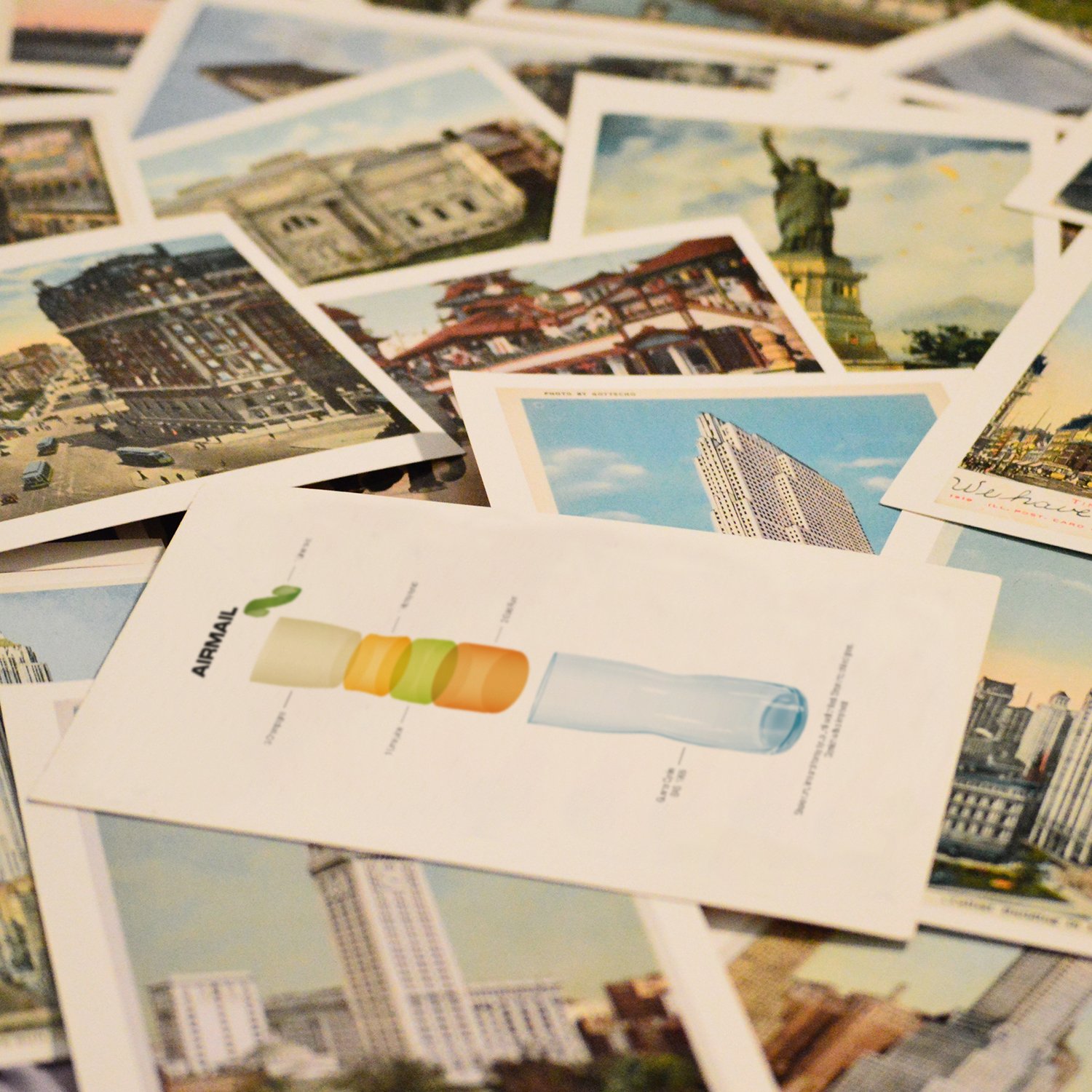
airmail
Sending messages by air started a very, very long time ago. It was the Egyptians that figured out how to use pigeons for the job around 3,000 B.C. It took almost 5,000 years until a the son of Benjamin Franklin, William Franklin, in 1784 used the, at the time, ultra modern hot air balloon to send a letter to his son William Temple Franklin on the other side of the English Channel. Using balloons never did catch on though, since they aren’t very reliable, so as far as airmail went, pigeon post was the best option. That is until the first airplanes came along.
The first recorded use of mail by airplane was three letters sent from Petaluna to Santa Rosa in California on February 17, 1911. But since the postmaster wasn’t involved the first official use of airmail was the very day after when Sir Walter Windham in India convinced the Indian postmaster general to let him operate an airmail service.
Cuba started their own airmail service in 1930 and this is where we get to the Airmail cocktail. Shortly thereafter the Bacardi rum company issued a pamphlet, Bacardi and Its Many Uses, promoting a cocktail called the Airmail, possibly to celebrate this event. The original drink was elegantly garnished with a real postage stamp.
During the 1940’s the Airmail started appearing more commonly in bartender guides like in W.C. Whitfield’s 1941 book, Here’s How, where he described the drink as “It ought to make you fly high”. The Airmail also appeared in David Embury’s 1948 The Fine Art of Mixing Drinks and in Esquire’s 1949 Handbook for Hosts.
The glass was fittingly designed for Scandinavian Airlines in 1998 by the Swedish designer Gunnar Cyrén.
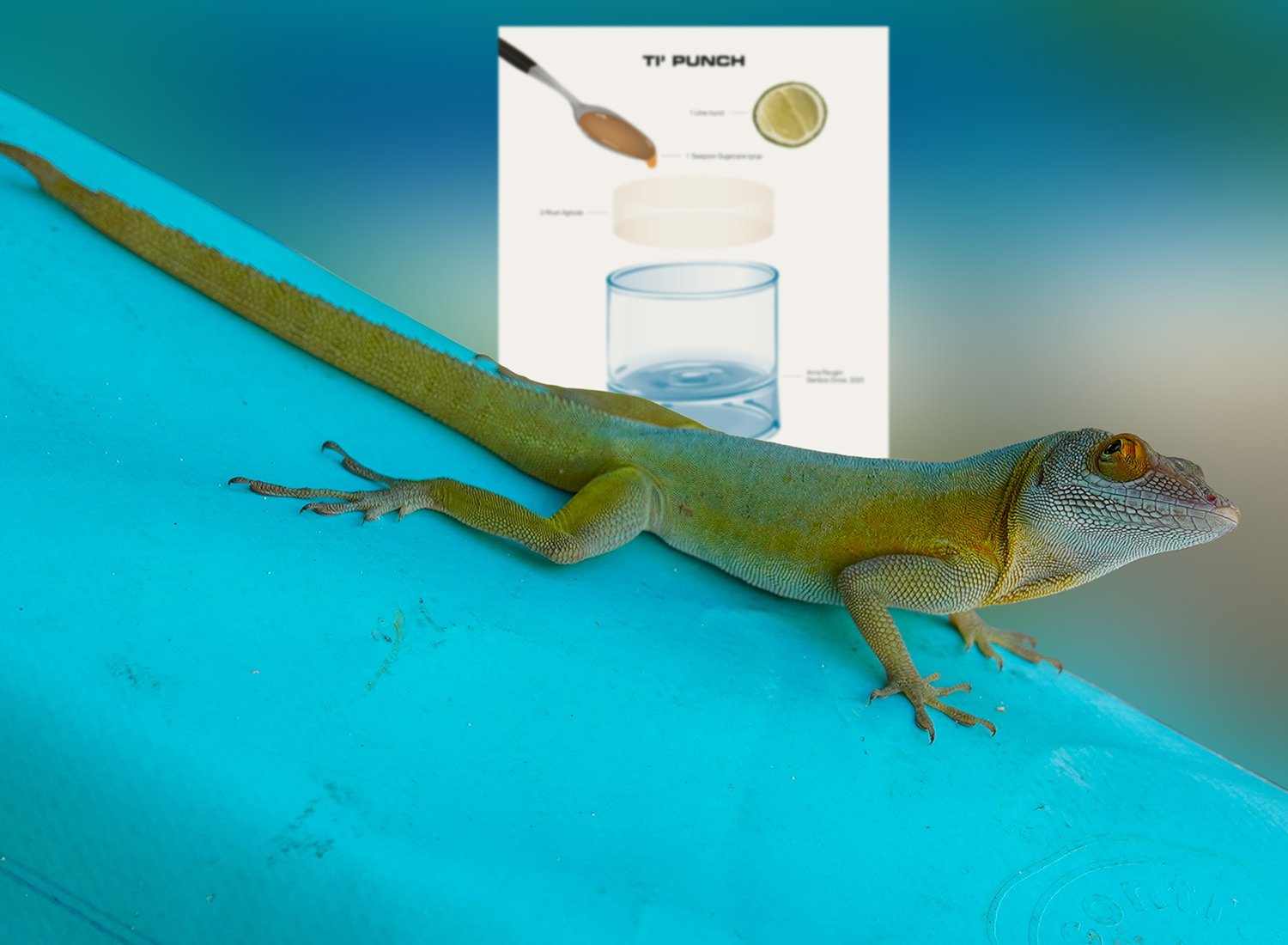
ti' punch
Wherever you find liquor and lime you will find them combined in a drink. The Daiquiri in Cuba, the Caipirinha in Brazil, the Pisco Sour in Peru and Chile and the Ti’ Punch in the French Caribbean. In this particular drink Rhum Agricole is the main ingredient, a rum distilled from freshly pressed sugarcane juice rather than leftover molasses from sugar refining, normally used in rum production. This makes for a grassier, some say rougher, rum with a very distinct character and this particular rum distillation is unique to the French West Indies. Another difference that makes Rhum Agricole stand out is that it is generally 100 proof. This fact combined with the small amount of lime juice in the Ti’ Punch compared other rum sours, the use of cane sugar syrup and the lack of dilution from ice makes for drink quite different from the smooth Daiquiri.
The history of the Ti’ Punch dates back to when French colonists started sugar cane plantations in Martinique and Guadeloupe during the 17th and 18th century. The drink was probably created by the sugarcane fieldworkers to raise their spirits during a hard days work. The Ti’ Punch is so connected to the islands, especially to Martinique, that they made it their national cocktail. Ti’ is Creole for petite so the Ti’ Punch quite literally means small punch. Since there obviously were no ice in the sugarcane fields a purist would still never dilute the drink with ice.
When traveling to Martinique or Guadeloupe you will find the Ti’ Punch everywhere, often presented for you to prepare yourself to. There is even a saying in Martinique “Chacun prépare sa propre mort” or “Everyone prepares their own death”.
The Bamboo Grove glass was designed by Anna Perugini in 2020.
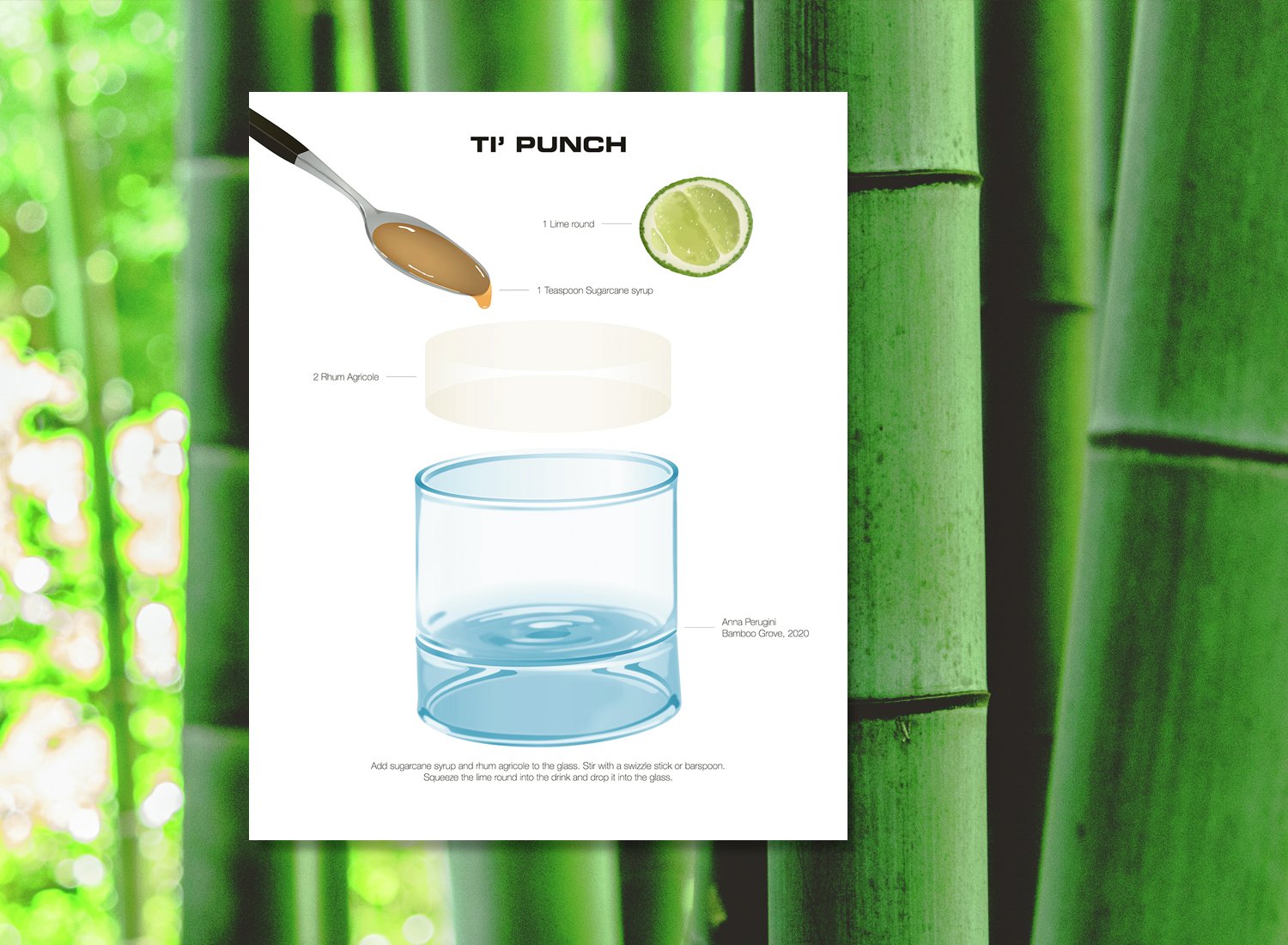
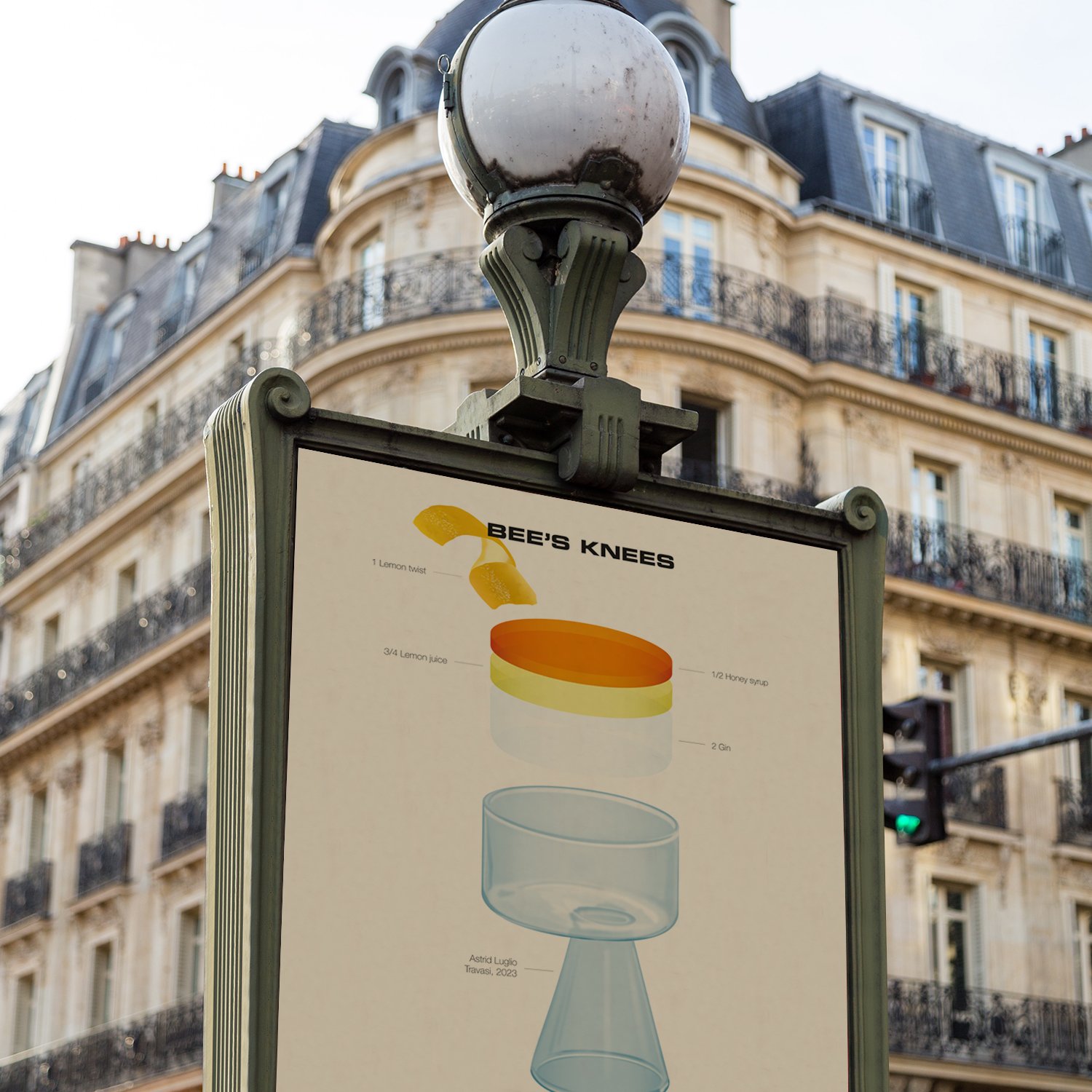
bee's knees
As with many cocktails from the early 1900s there is not one, but several different origin stories. The Bee’s Knees is no different. In fact, even the origin of the name is up for debate. Either it’s just a nonsense expression like “the cat’s pajamas”. Or it derives from the word business. In the 1920s saying that something was “the bee’s knees” was short for exclaiming that it was “the business”, that is to say, something outstanding.
Possibly the cocktail was created by the Austrian Frank Meier, during the 1920s when he was the first head bartender at Cafe Parisian at the Ritz Hotel in Paris. During WWII and the German occupation of Paris Mr Meier kept the bar open but being half Jewish he started working with the French resistance and handed information about the Germans staying at the Ritz to British intelligence. He also helped Jewish hotel guests escape the Vichy government’s concentration camp roundups by providing them with fake documents.
The first time the cocktail was mentioned however was in a news article from 1929 where it was attributed to the American socialite Margaret Brown. The article was about women-only bars in Paris and Margaret Brown, being a wealthy widow shared her time between Denver and Paris where she was a frequent guest in said bars. On a side note Margaret Brown also went by her nickname “the Unsinkable Molly Brown” after being one of the 712 people surviving the Titanic in 1912.
Yet another background story is that the honey used in the Bee’s Knees was added since it is a great way to hide the harsh taste of cheap bathtub gin. Putting it all together Margaret Brown might have had the cocktail in an America speakeasy and brought the recipe to Paris where Frank Meier made it his own making all three origin stories true. But that, of course, is just mere speculation.
The glass was is designed by Astrid Luglio in 2023 and is called Travasi.

roy rogers
The classic mocktail Shirley Temple is said to have been created for the child actor when she was enviously eying her parents old-fashioneds and wanted her own drink. A resourceful bartender mixed lemon-lime soda and ginger ale, added some grenadine and garnished the creation with a maraschino cherry.
Being considered a girly drink, solely because of its name, boys wanted a drink they could relate better to (mind you, this was some 80 years ago) so during the 1940s someone came up with the Roy Rogers. Nothing was more popular amongst boys during the 40s and 50s than cowboys and actor/singer Roy Rogers was one of the most popular. Also Mr Rogers himself didn’t drink alcohol.
Roy Rogers, also known as The Singing Cowboy or The King of the Cowboys was born Leonard Franklin Slye in 1911 and early took up singing and playing the guitar. During the Great Depression he actually worked as a cowhand in New Mexico making him a real cowboy. He began his long career in 1935 in the country singing group Sons of the Pioneers. A few years later he became star in his own movies, often with his wife to be, Dale Evans, and his horse Trigger, who got almost as famous as Rogers himself. He ended up making some 90 movies from the late 1930s to the mid-1950s and over 100 episodes of a weekly tv-show, The Roy Rogers Show from 1951–1957. Always portraying the good guy he was the cowboy who shot the guns from the villains hands rather than trying to kill them.
Interestingly, but not officially, if you watch the Disney/Pixar Toy Story 2 from 1999, the character Woody learns that he is actually the main character from a 1950s TV show called Woody’s Roundup. In the show within the movie he has a horse named Bullseye and a girlfriend called Jessie. It’s hard not to see the similarities with The Roy Rogers Show with Woody as Roy, Jessie as Dale and Bullseye as Trigger.
The glass for the Roy Rogers is called Birds was designed by Tomoko Mizu in 2022.
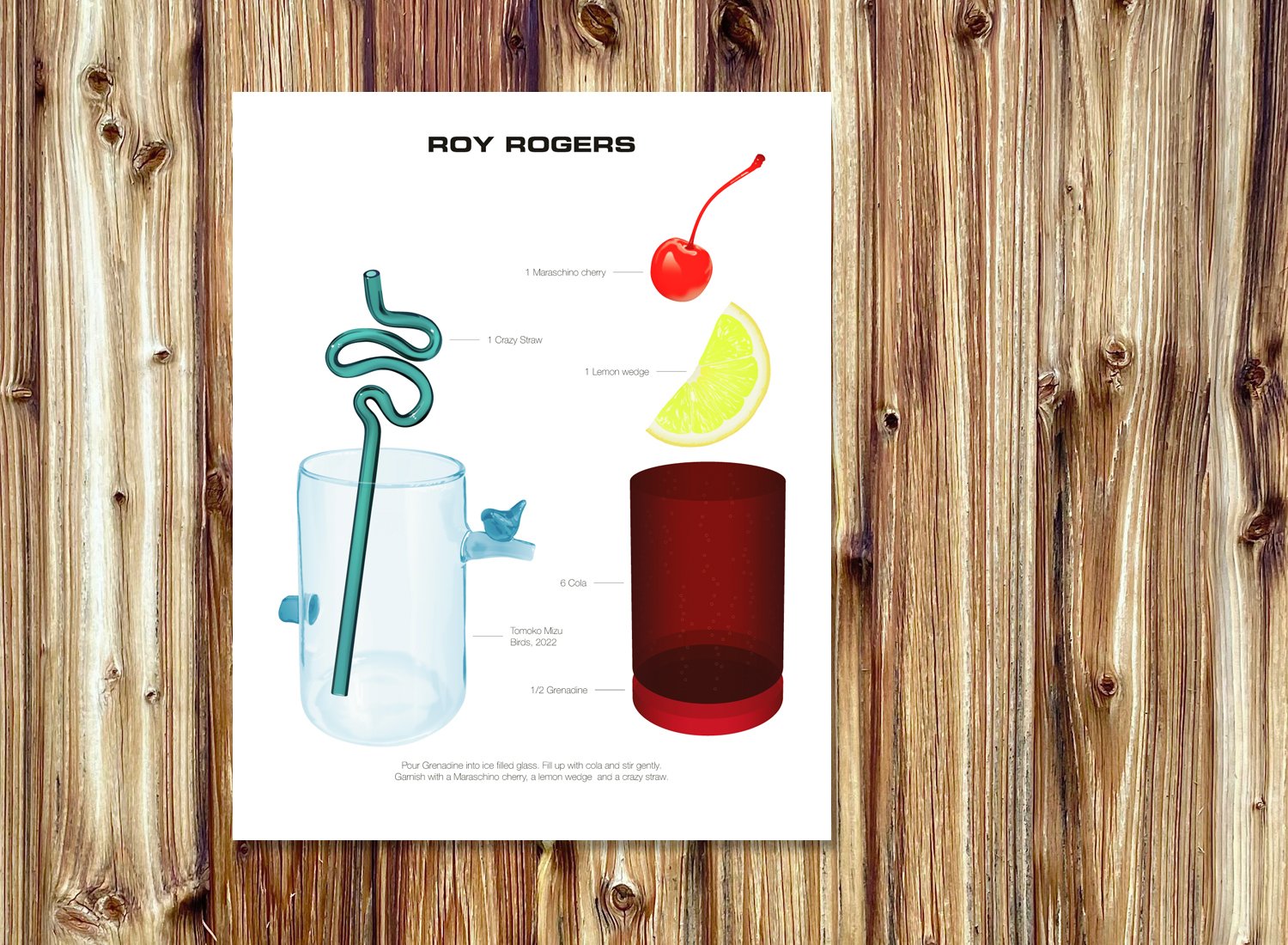
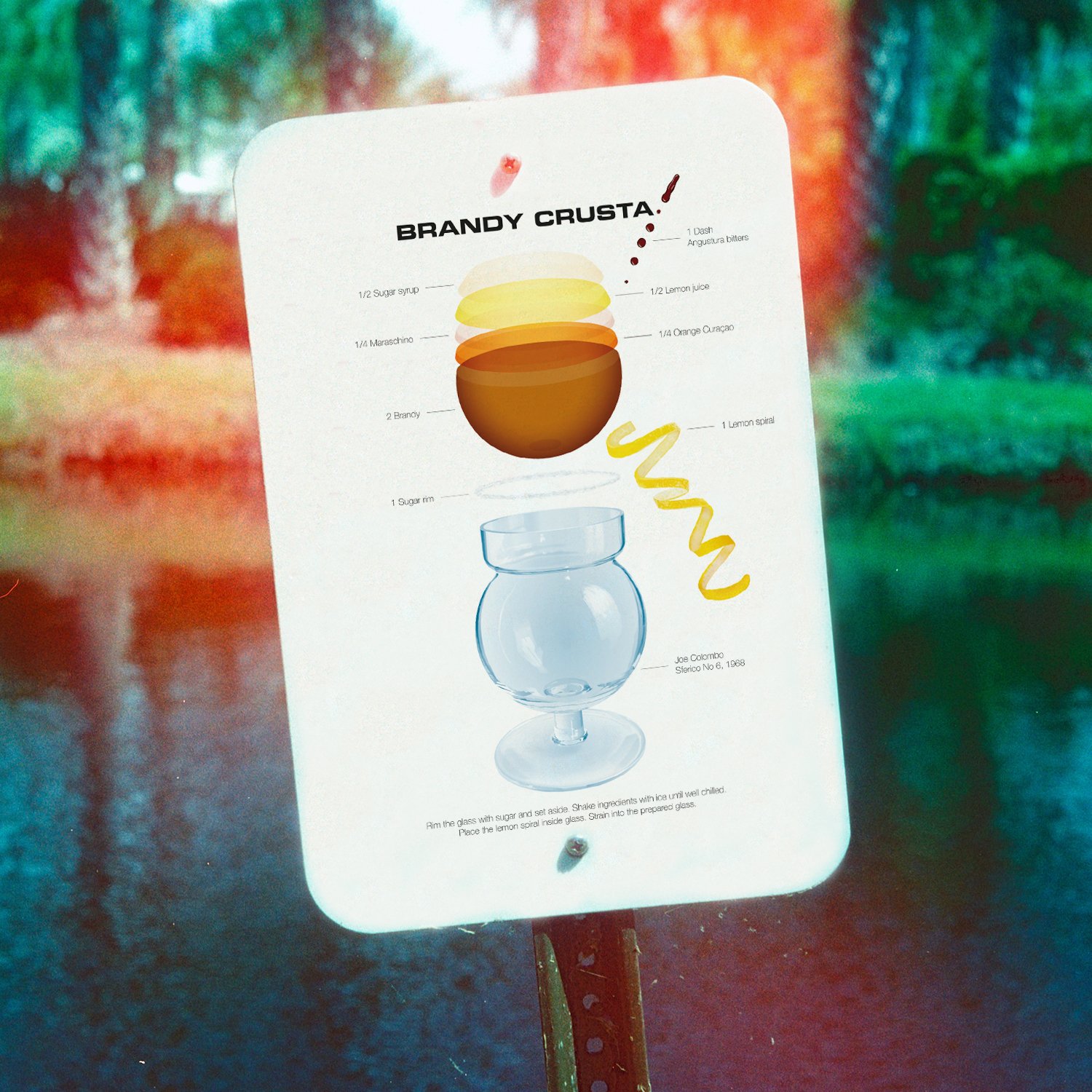
brandy crusta
Joseph Santini was a pioneer in mixology. He was born in 1804 in Corsica but moved to New Orleans in the 1830s. He started his bartending career at the then famous City Exchange where he soon showed his skills and innovations behind the bar.
Mr Santini’s is most well known creation was made during the 1850s. He called it the Brandy Crusta. This classic cocktail was either created at the City Exchange or at another bar called Jewel of the South, a bar he started in 1852. It first appeared in print in Jerry Thomas’ Bartender’s Guide from 1862. The cocktail was a departure from the much simpler cocktails of the day and so it was very well received.
A Crusta isn’t actually just one cocktail, it is a type of cocktails. Crustas always contains a spirit, lemon juice and sugar, sometimes in the form of a liqueur. In fact the name Crusta comes from the sugar rim that is supposed to be applied hours in advance to make it into a dry crust. Apart from that they are always supposed to be served in stemmed glasses with a long lemon zest spiraling around the inside of the glass.
Despite being one of the many classic cocktails created in New Orleans the Brandy Crusta was as good as forgotten until David Wondrich published the recipe in his 2007 book Imbibe! Finally the Brandy Crusta and Joseph Santini made a comeback and today the drink is almost as easy to come by as the Ramos Fizz and the Sazerac. At least in New Orleans.
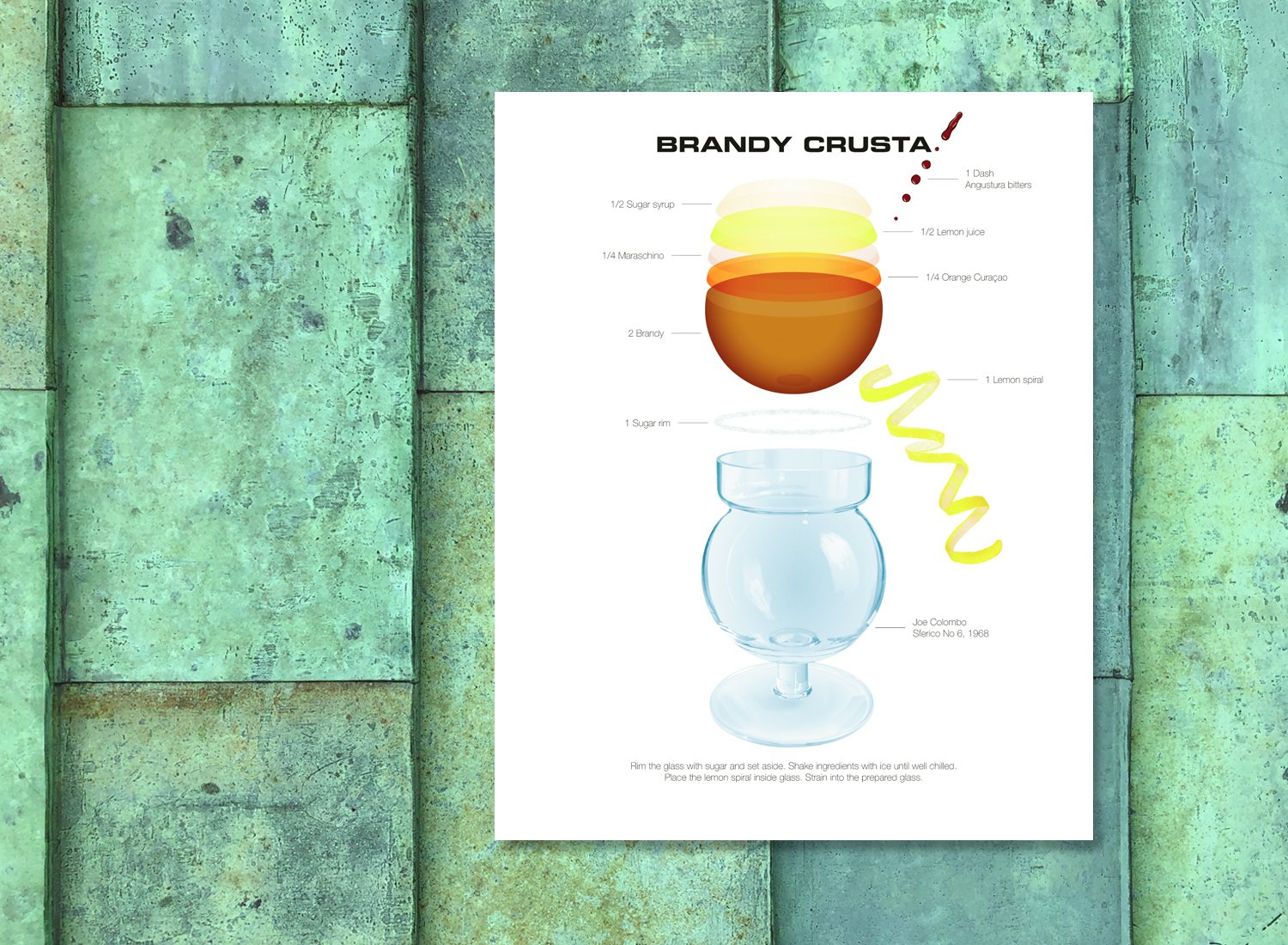
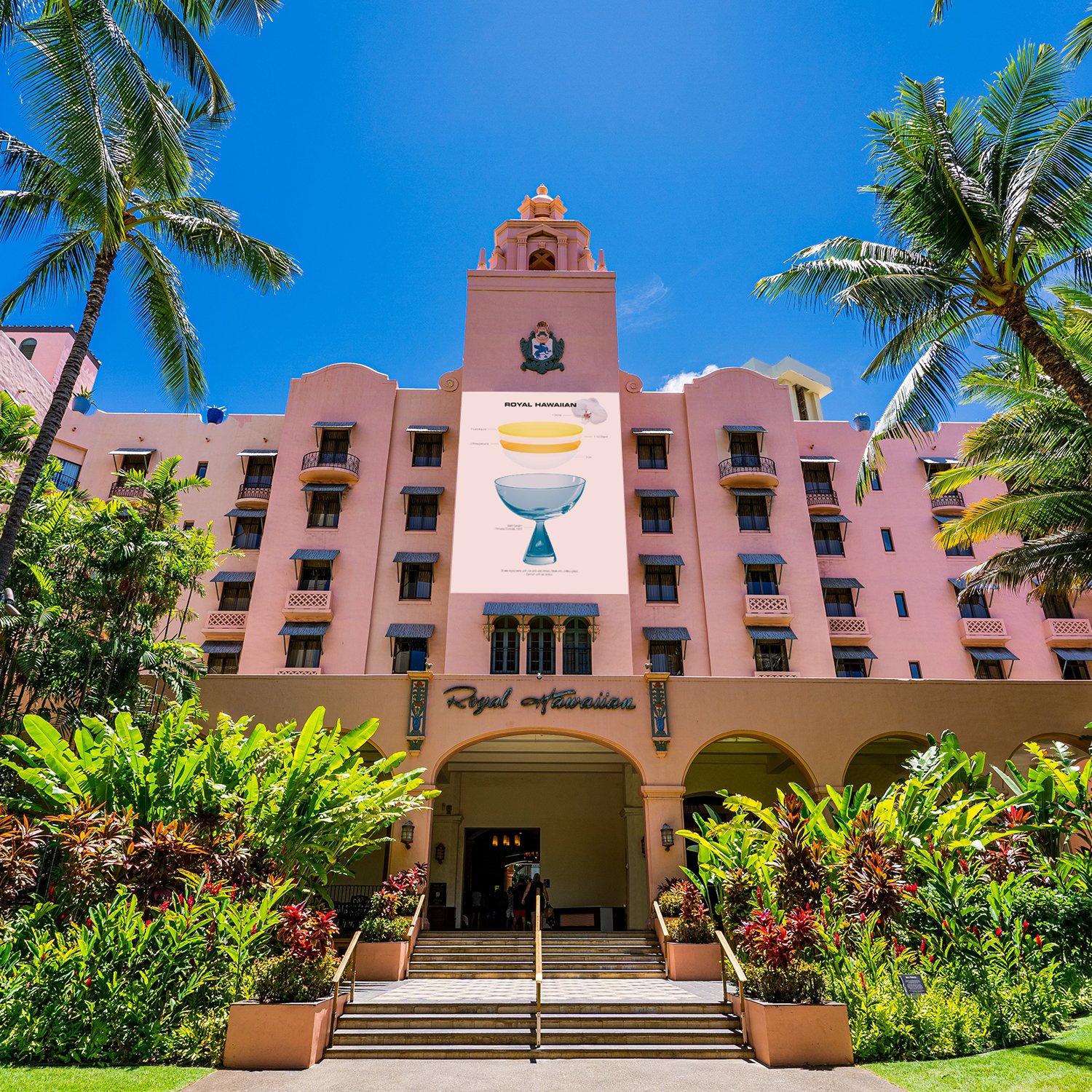
royal hawaiian
Princess Ka’iulani was born in 1875 to Hawaiian Princess Miriam Likelike and Scottish-born businessman Arthur Cleghorn, during the reign of her uncle King Kalakaua.
At birth she was given an estate in Waikiki where she grew up next door to Robert Louis Stevenson. When Princess Ka’iulani was 11 she lost her mother and a couple of years after that she was sent to England to get a British education. While there, in 1891, King Kalakaua passed away and the new monarch, the king’s sister Princess Lili’oukalani made Ka’iulani the heir apparent.
She wanted to return to home but was told to stay in England during a tumultuous time in Hawaii. When she finally came back in 1897 Queen Liliuokalani had been forced to abdicate. Princess Ka’iulani identified strongly with her homeland and became a fierce advocate for Hawaii. She spoke out against the pending annexation of Hawaii by the United States and fought to keep the Hawaiian Kingdom independent.
Her efforts were ultimately unsuccessful and Hawaii was annexed by the US in 1898. Having struggled with poor health during the 1890s the devastated Ka’iulani sadly died in 1899, only 23 years old.
Twenty eight years later, in 1927, a new hotel opened in Honolulu, a grand pink palace named the first resort hotel built in the US. Sometime during the 1920s they created a signature drink, a cocktail called Princess Ka’iulani as a tribute to the influential princess. The cocktail changed name in the 1950s and is since then sharing its name with the Royal Hawaiian Hotel but the legacy of Princess Ka’iulani lives on as a symbol of strength, grace, and the rich cultural heritage of Hawaii.
The glass is fittingly called Princess and was designed by Bent Severin in 1957.
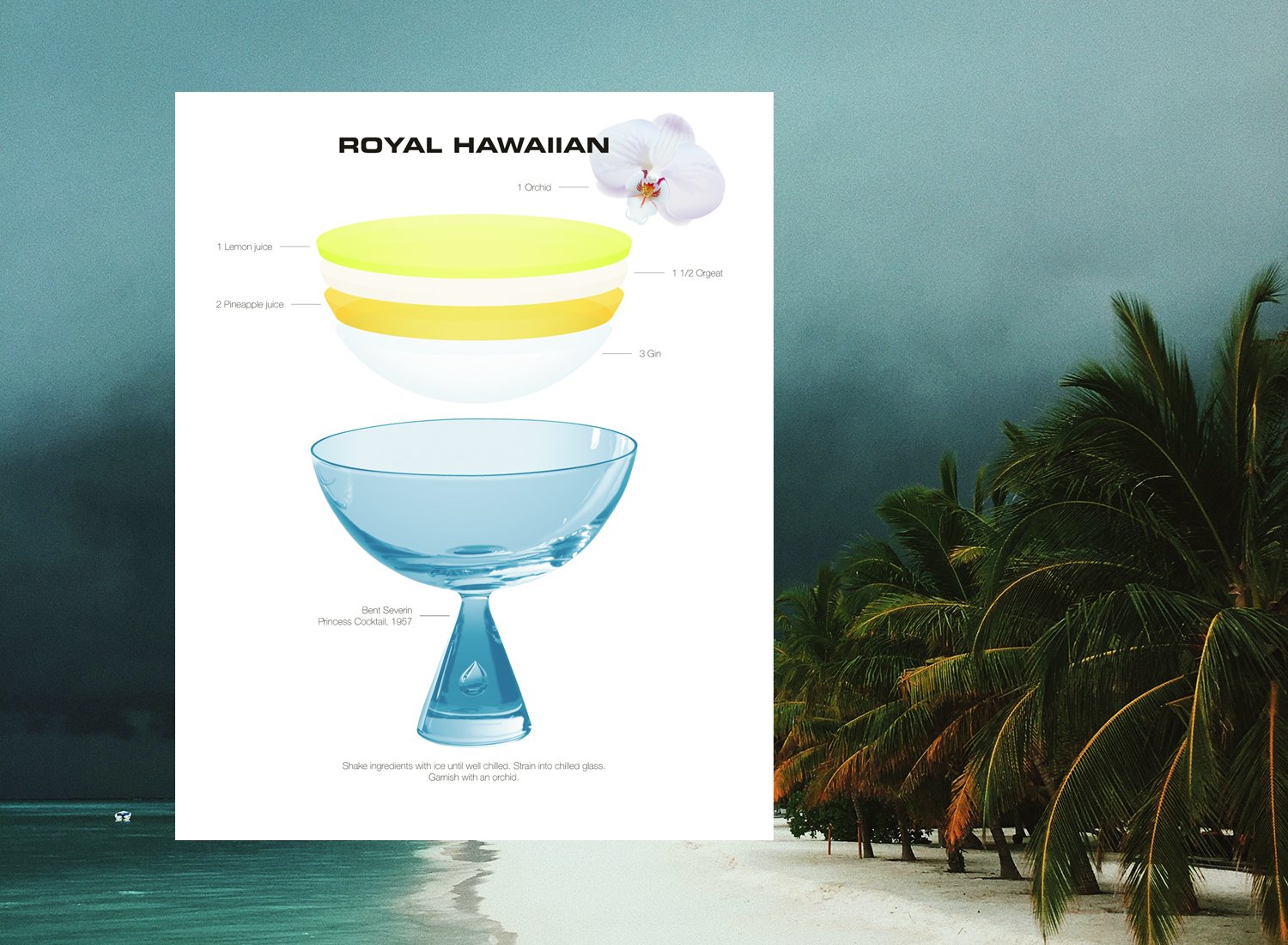

king's cocktail
King Charles III was born in Buckingham Palace during the reign of his maternal grandfather, George VI. He was only three years old when his mother, Elizabeth II, acceded to the throne in 1952, making him the heir apparent. He was made Prince of Wales in 1958.
Queen Elizabeth’s favorite drink was a Dubonnet Cocktail, most commonly prepared by stirring equal parts Dubonnet and gin. The Queen however preferred it prepared with two parts Dubonnet to one part gin.
King Charles’s preferred cocktail is said to be a Martini with equal parts gin and vermouth but he is also known to enjoy a Laphroig whisky.
With a wink and a nod to the heritage of the late Queen Elizabeth II and to the preferred drink of King Charles III here is the King’s Cocktail. One part Laphroig, two parts gin and three parts Dubonnet. Stir with ice until cold and strain into a chilled cocktail glass. Garnish with a lemon twist.
The glass called Plum Martini was designed by Tom Dixon in 2016.
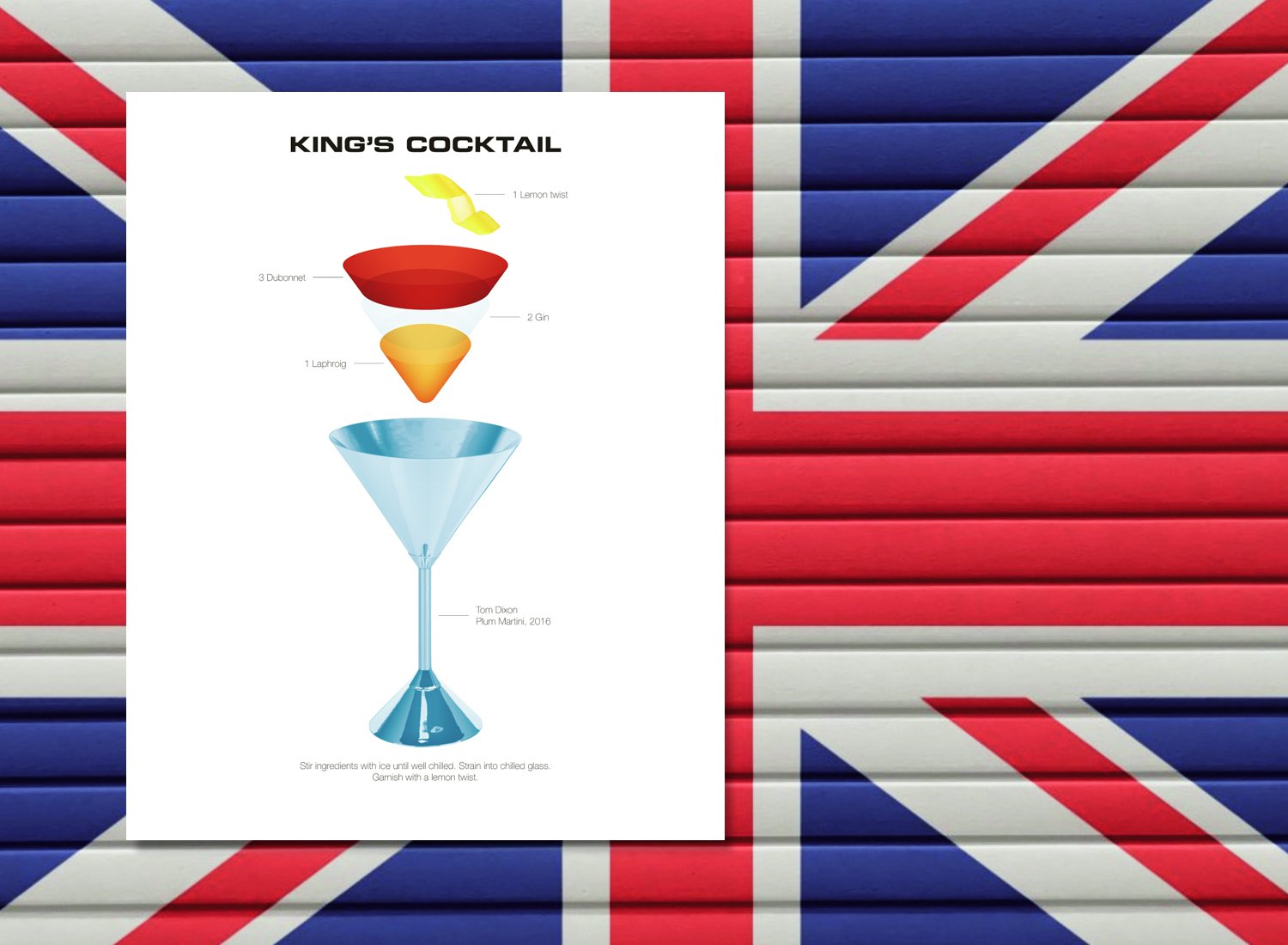
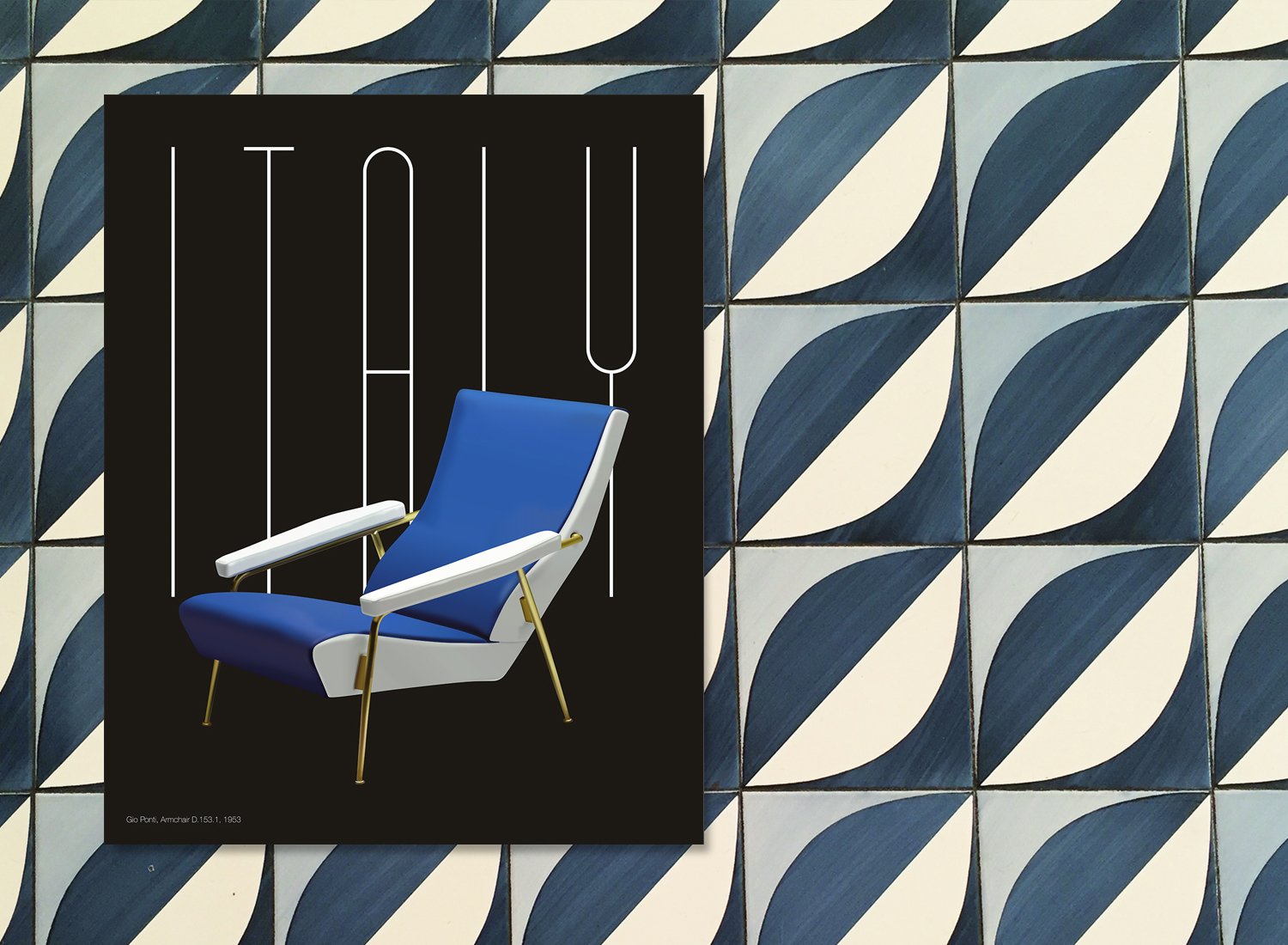
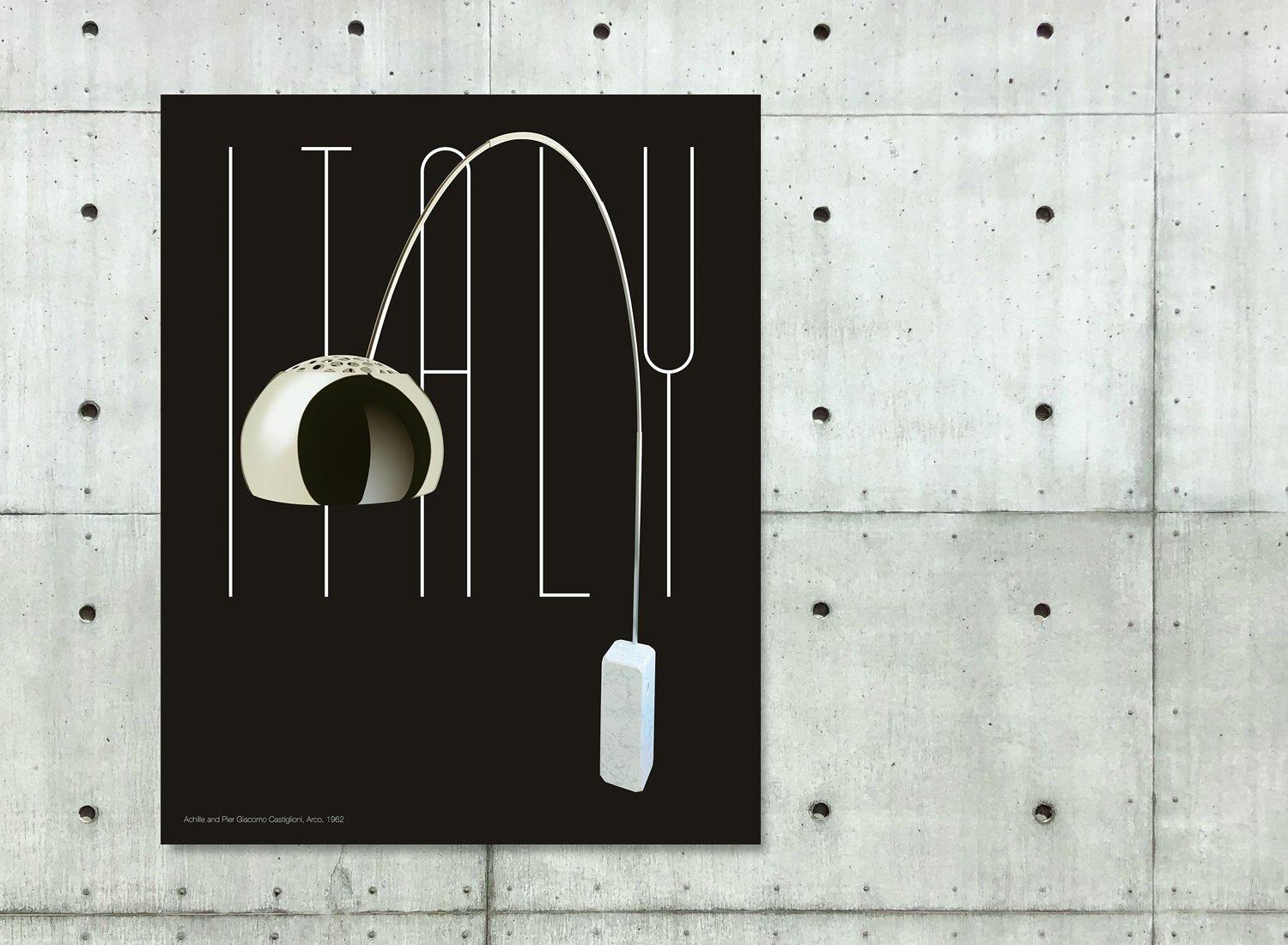
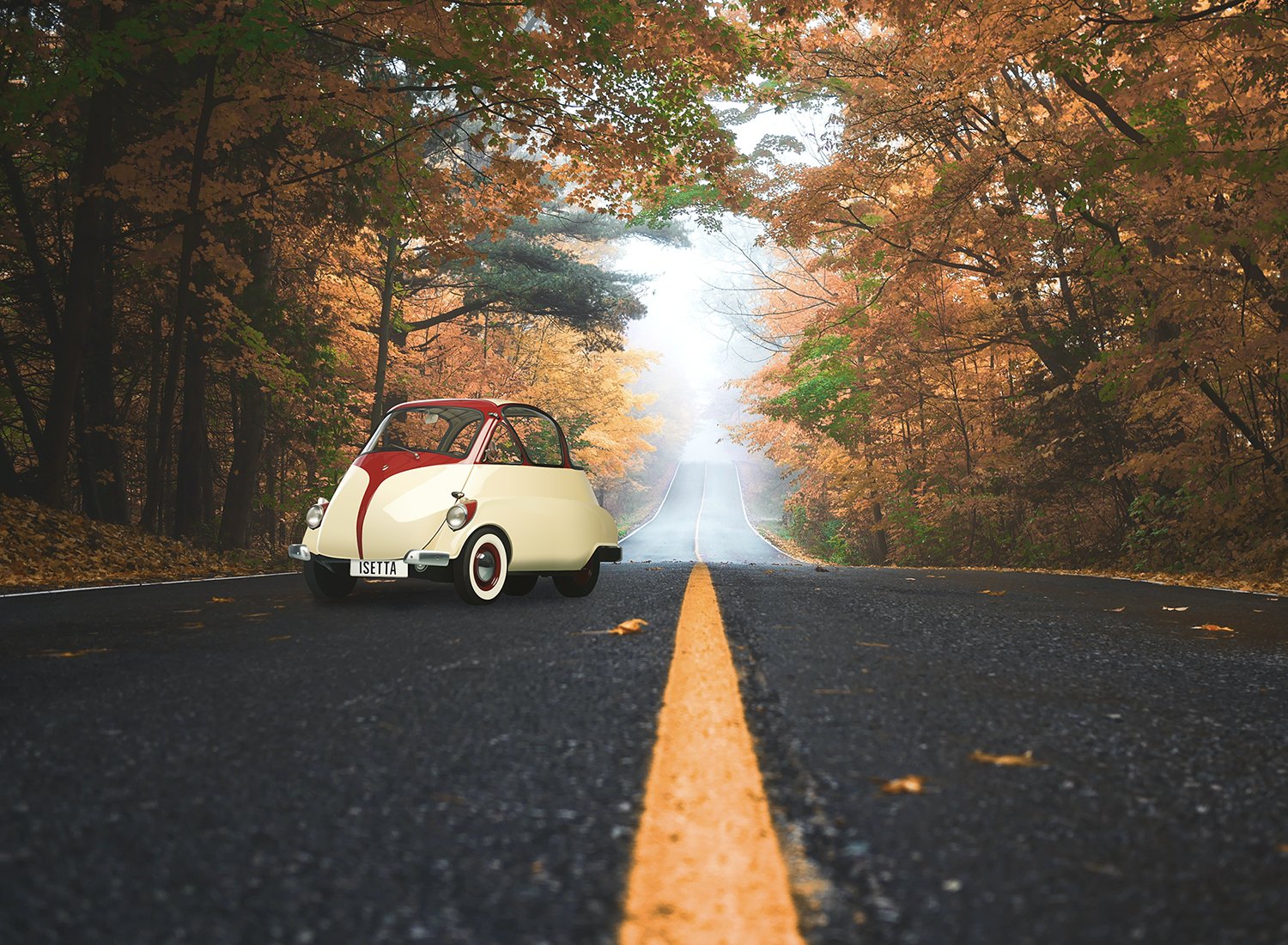
renzo rivolta isetta
During the first decade after WWII, war torn Europe was slowly trying to rebuild its economies. Engineer and businessman Renzo Rivolta, the owner of Isothermos, a company that before the war manufactured refrigerators and electric heaters, saw the rising demand for a micro-car. Rivolta was also the owner of ISO Autoveicoli, at the time Italy’s third largest producer of two-wheeled vehicles. Together with two aeronautical engineers, Ermengildo Preti and Pierluigi Raggi he created the first Isetta prototype in 1952. Isetta being the diminutive form of Iso. Legend has it that they actually used a repurposed fridge door for the prototype.
As for the performance, the Isetta, equipped with a motorcycle motor, took 30 seconds to reach 50 kph. This was, however made up by the fact that it fit two adults and was perfect for use in the narrow streets of Italian cities.
To be able to fund other project, like his sports car ISO Grifo, Mr Rivolta decided to sell the license for the Isetta to other manufacturers. BMW was at the time on the verge of bankruptcy and quickly saw the potential of the micro-car. They upgraded the Isetta with a new motor, better suspension and added a sunroof making the car reach a whopping 85 kph. BMW ended up making 10,000 cars during the first 8 months making it more popular than it ever was in Italy.
Apart from Italy and Germany the Isetta was also manufactured in France, the UK, Argentina and Brazil and has had such an influence on the automobile industry that it inspired the creation of the Smart Car in 1998.
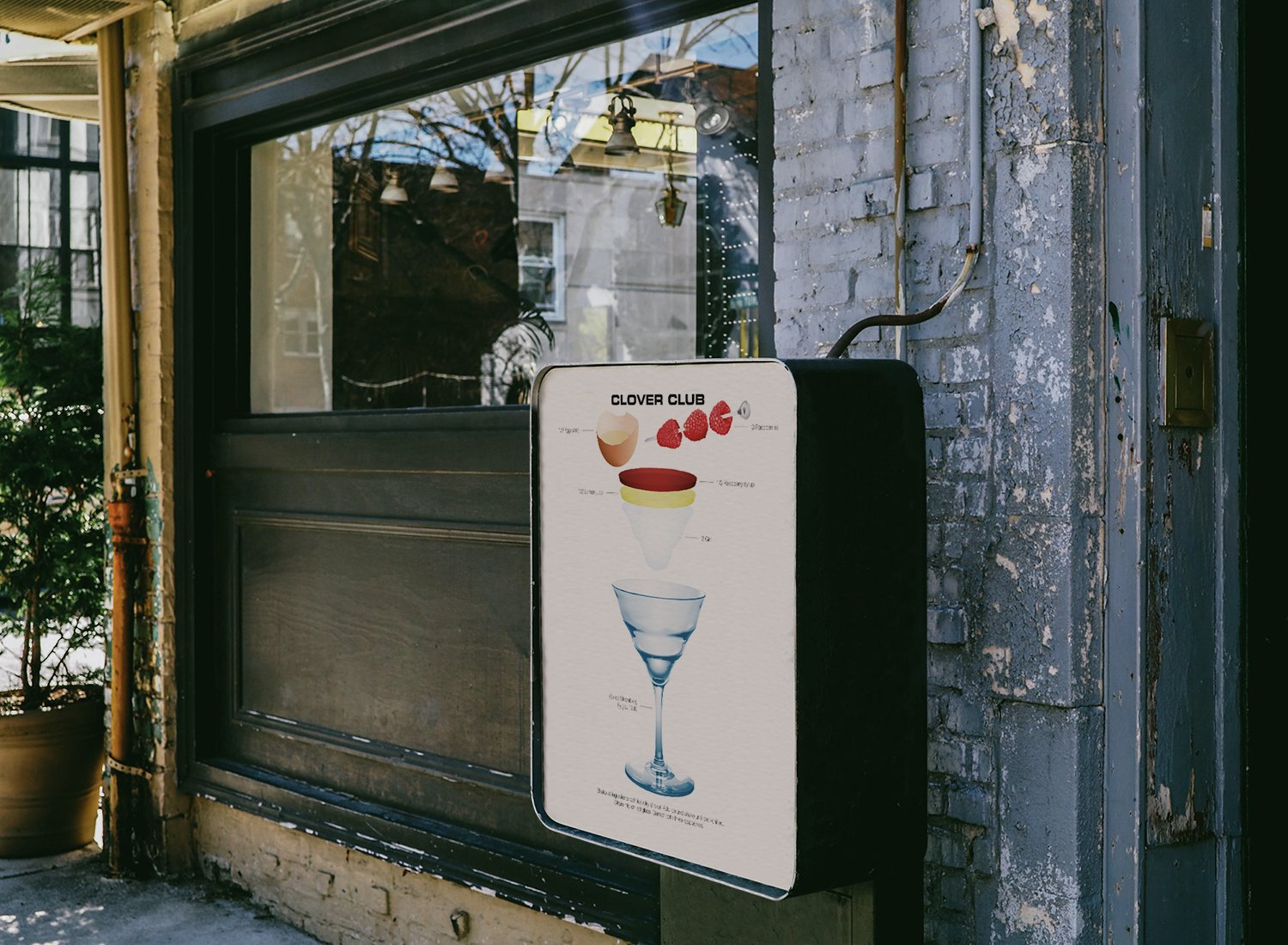
clover club
The Clover Club was a pre-prohibition gentlemen’s club that held their meetings once a month at the Bellevue-Stratford Hotel in Philadelphia from the 1882 to the 1920's. The cocktail by the same name was probably first shaken up at the turn of the last century and was published in New York Press in 1901. It went from being a favorite among the club’s members to making it big in New York when the hotelier at the Bellevue-Stratford, George Boldt, was recruited as proprietor for the Waldorf Astoria on Manhattan.
After having had a good run the Clover Club fell out of favor. In 1939 it was even listed in Esquire Magazine as of the ten worst drinks of the decade and in the 1950s it started being viewed as a ladies drink. Maybe due to the pink color of the cocktail.
Interestingly pink was originally considered a masculine power color and as thus fitting perfectly at the gentlemen’s club. In The Great Gatsby from 1925, Gatsby himself naturally sported a pink suit. Little girls were dressed in light blue and little boys in pink, a color that was said to be “a more decided and stronger color”. This changed in the 1940s and suddenly macho cocktails like the Clover Club and the Pink Lady were giving way to Manhattans and Martinis.
It wasn’t until the early 2000s when craft cocktails came back in a big way that the Clover Club started reappearing. As a tribute, American mixologist Julie Reiner, opened the Clover Club in Brooklyn in 2008, complete with wooden paneling, leather couches, velvet curtains and a tin ceiling.
The motto of the original Clover Club went “Who enters here leaves care behind, leaves sorrow behind, leaves petty envies and jealousies behind.”
The glass called Fylgia was designed by Gerda Strömberg in 1930.
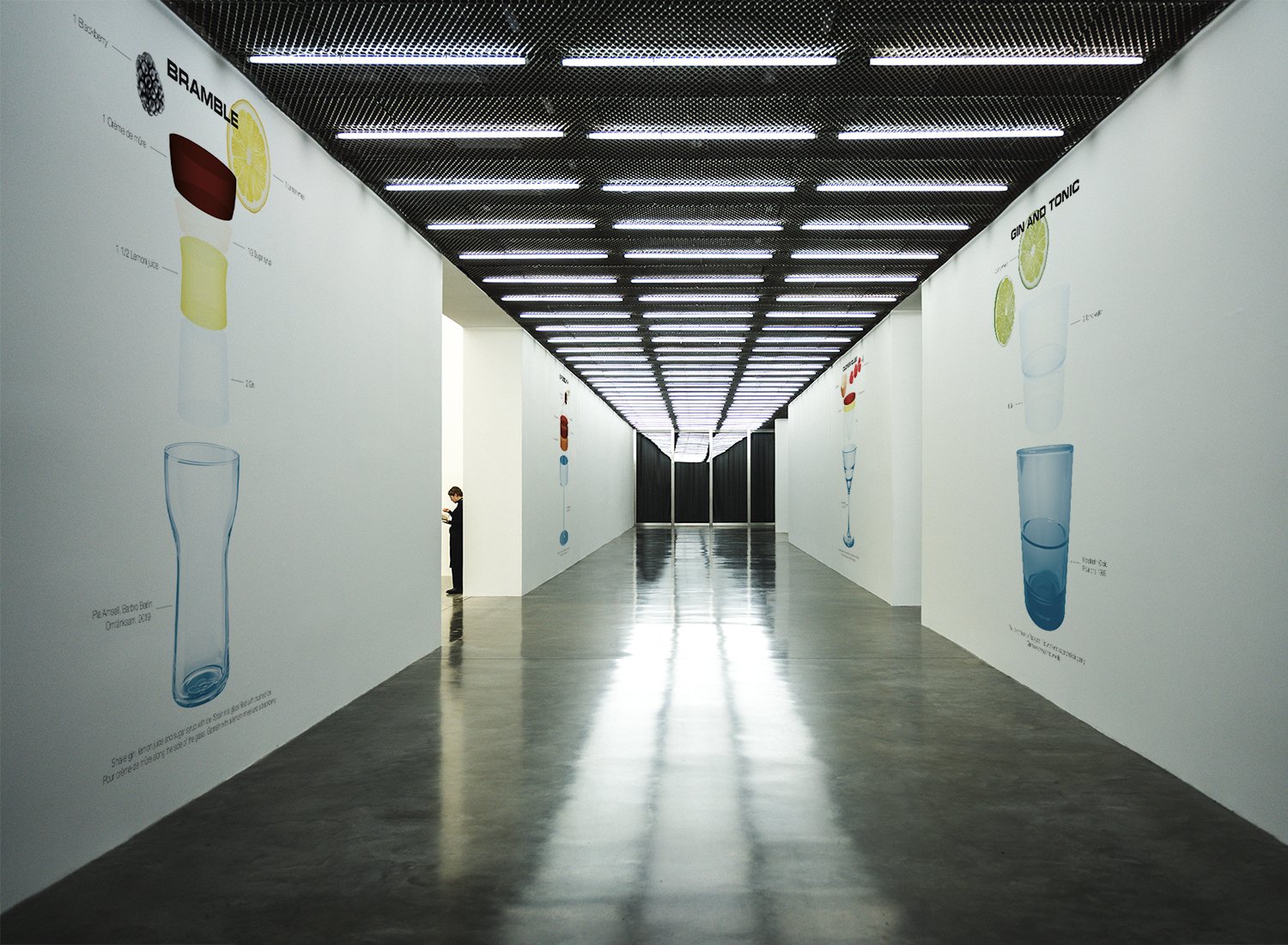
bramble
Working as bar manager during the mid 1980’s at Fred’s Club in Soho, London, Dick Bradsell created the Bramble in an effort to make a truly British drink. Even though you can’t grow lemons in the UK and he wasn’t able to find a good enough British blackberry liqueur. The blackberries did however take Mr Bradsell back to his berry picking on the Isle of Wight as a kid, getting pricked by the brambles, and you can’t get any more British than gin.
Fred’s Club on Carlisle Street was created to be the ultimate members club for a younger crowd with members like Siouxsie and the Banshees, Aztec Camera, Naomi Campbell, Neneh Cherry and Boy George. But the music connection doesn’t end there. Fred’s Club shared a kitchen with a seafood restaurant owned by one of the founders of the Ministry of Sound. The reason Dick Bradsell used crushed ice for the Bramble was that he borrowed the ice machine the restaurant used for keeping their seafood on display.
Dick Bradsell started off by making a classic sour but serving up the drink as a martini style cocktail. This made it far too sweet so instead he tried shaking the gin, lemon and sugar syrup, straining it into a glass filled with fresh crushed ice in the shape of a vulcano. Finally drizzling the crème de mûre around it.
The glass was designed in 2019 for IKEA by Swedish designers Pia Amsell and Barbro Berlin and is called Omtänksam.
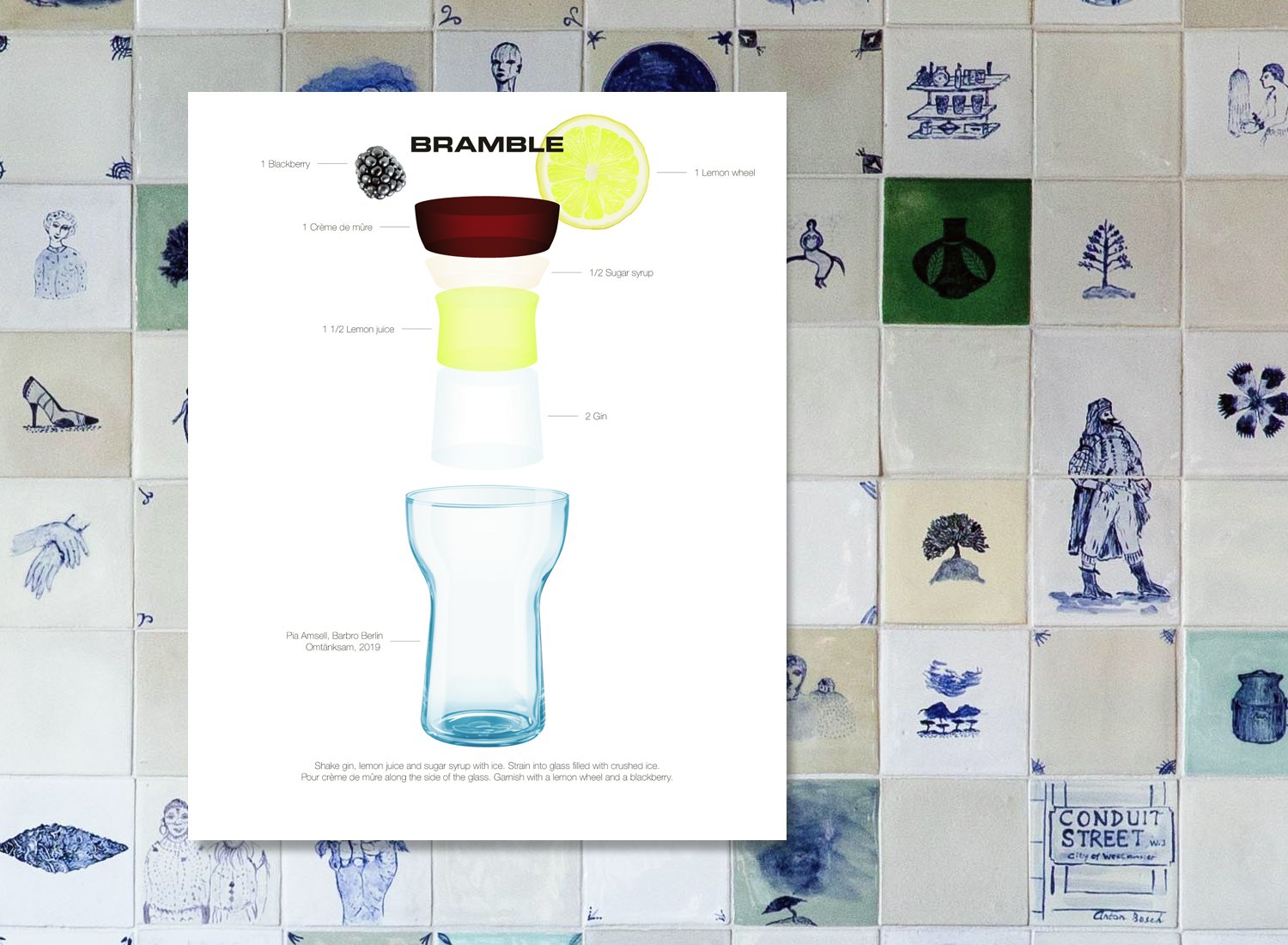
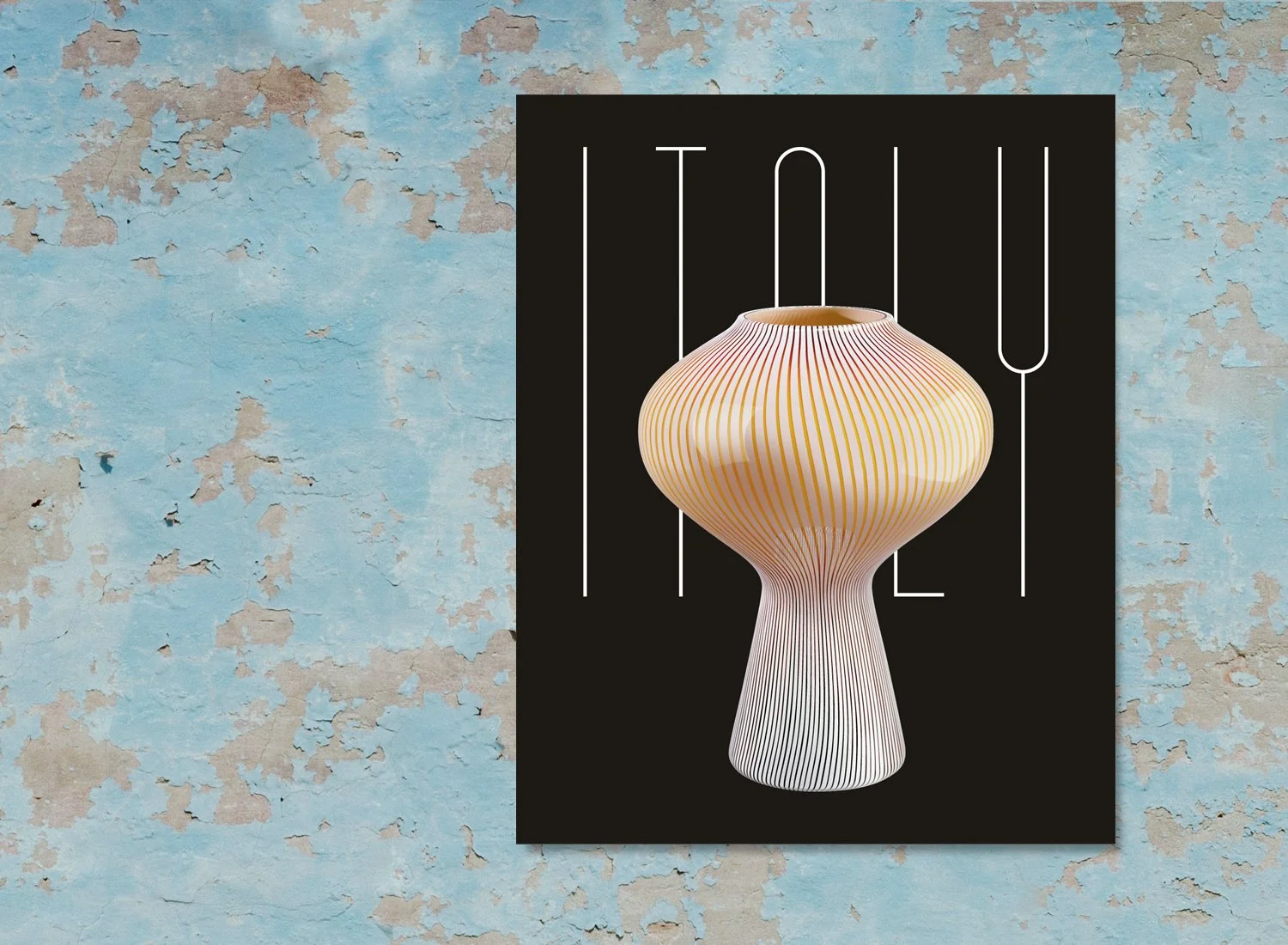
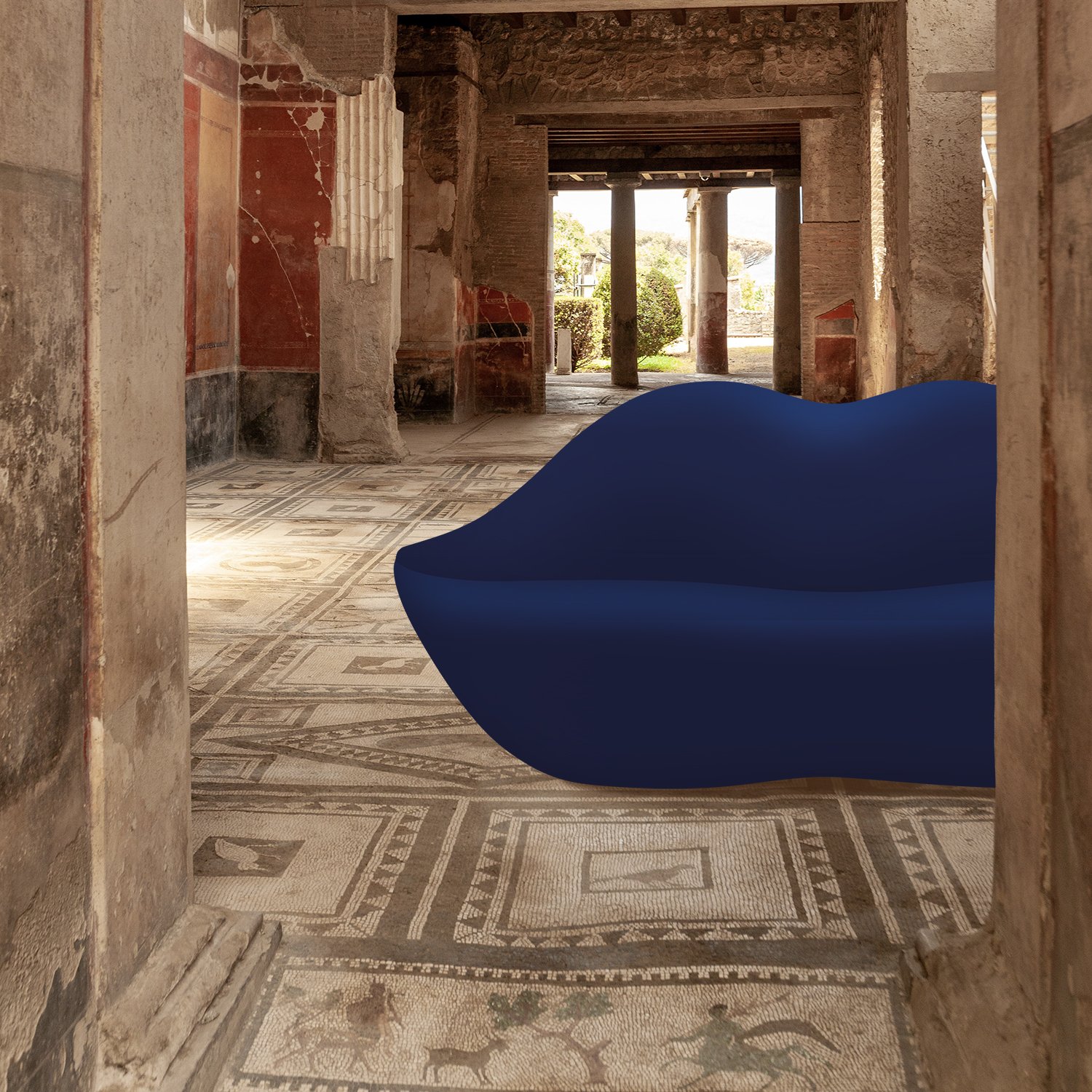
studio 65 bocca sofa
As the name suggests Studio 65 was founded in 1965 by the two architecture students Franco Audrito and Piero Gatti. The studio was started in opposition to the, in Italy, reigning International Modern Style. Five years later, in 1970, Studio 65 was commissioned to design the interior for a fitness center in Milan. Franco Audrito wanted to create a “Temple of Beauty” and came to think of a sculpture made by Salvador Dalì in 1930.
The Dalì Lip Sofa, based on a picture of Mae West’s lips that the artist found in a magazine, was commissioned by the artist’s British patron Edward James. This sofa is now part of the collection at the Museum Boijmans Van Beuningen in Rotterdam.
Mr Audrito decided to make an homage to Dalì but based the lips on a more contemporary actor, Marilyn Monroe, and originally the sofa was named Marilyn. The name might also have been chosen as a tribute to the owner of the fitness center, Marilyn Garosci. Later the sofa was renamed Bocca meaning mouth in Italian.
The Bocca Sofa is manufactured by the Italian company Gufram famous for blurring the lines between furniture and art.
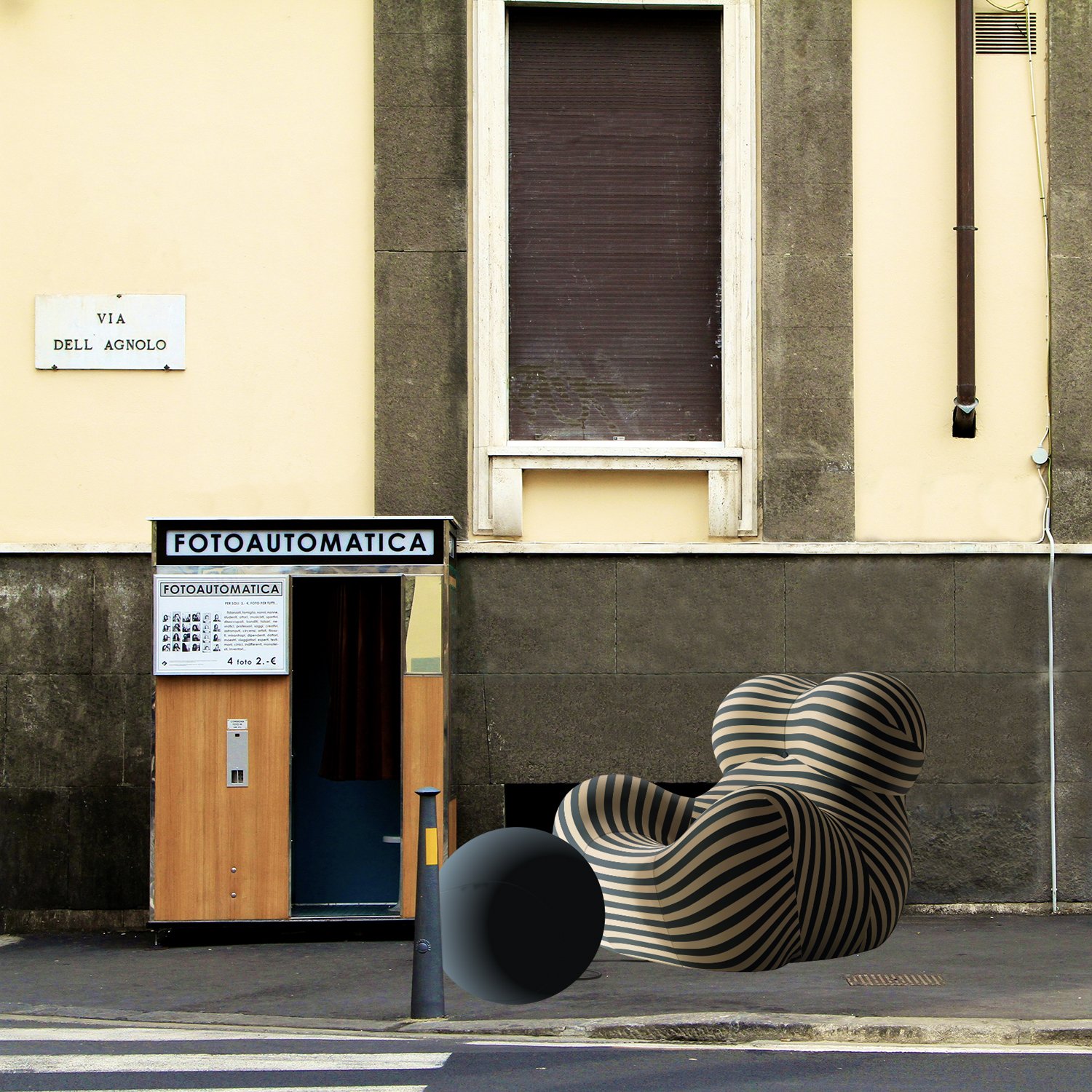
gaetano pesce up chair
Born in La Spezia in 1939 Gaetano Pesce went to study in Venice at the School of Architecture and then the Institute of Industrial Design. After graduating he worked for a while with a Padua-based collective of young architects before focusing on design from 1962.
Endlessly researching and experimenting with new materials he started working with the trendiest material of the day, polyurethane. Standing in the shower in his Paris apartment in 1968 Gaetano Pesce got the idea to try and make a chair behave like a sponge. In his workshop he realized that polyurethane was a perfect material not only for comfort but he could actually vacuum pack his new design. Opening the four-inch-thick package his new chair would almost magically expand into its proper shape rendering its name Up. This extraordinary and irreversible performance was made possible thanks to the freon gas that was present in the polyurethane blend.
This easily packaged and shipped future of furniture design unfortunately didn’t last long. In 1973, after only four years of international success with the Up Chair turning up in everything from the James Bond movie “Diamonds are Forever” to photo shoots with Salvador Dalì, the producer B&B Italia removed it from its catalog. This was due to a recent ban on freon gas making the production as it was impossible.
It took until the year 2000 for the Up Chair to to make its comeback and return to the design scene again. This time being made in cold shaped polyurethane foam and no longer inflating.
As much as it is a piece of forward thinking innovative design the Up chair was initially meant as a political statement. The shape Pesce modeled after an ancient fertility goddess (even though some say the inspiration came from Anita Ekberg’s famous bath in Fontana di Trevi) and the ball and chain symbolizes women being prisoners. “Women suffer because of the prejudice of men. The chair was supposed to talk about this problem.”
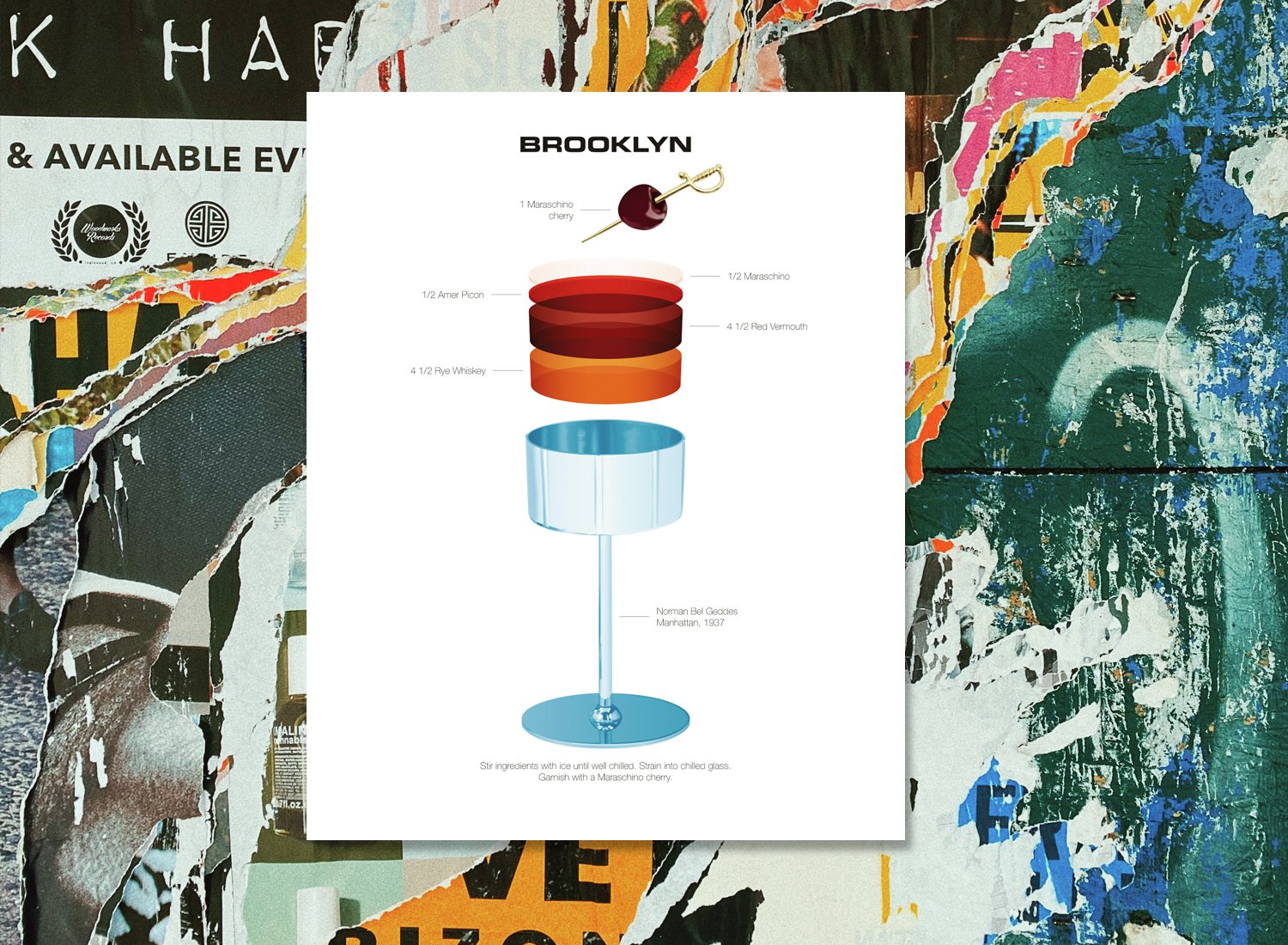
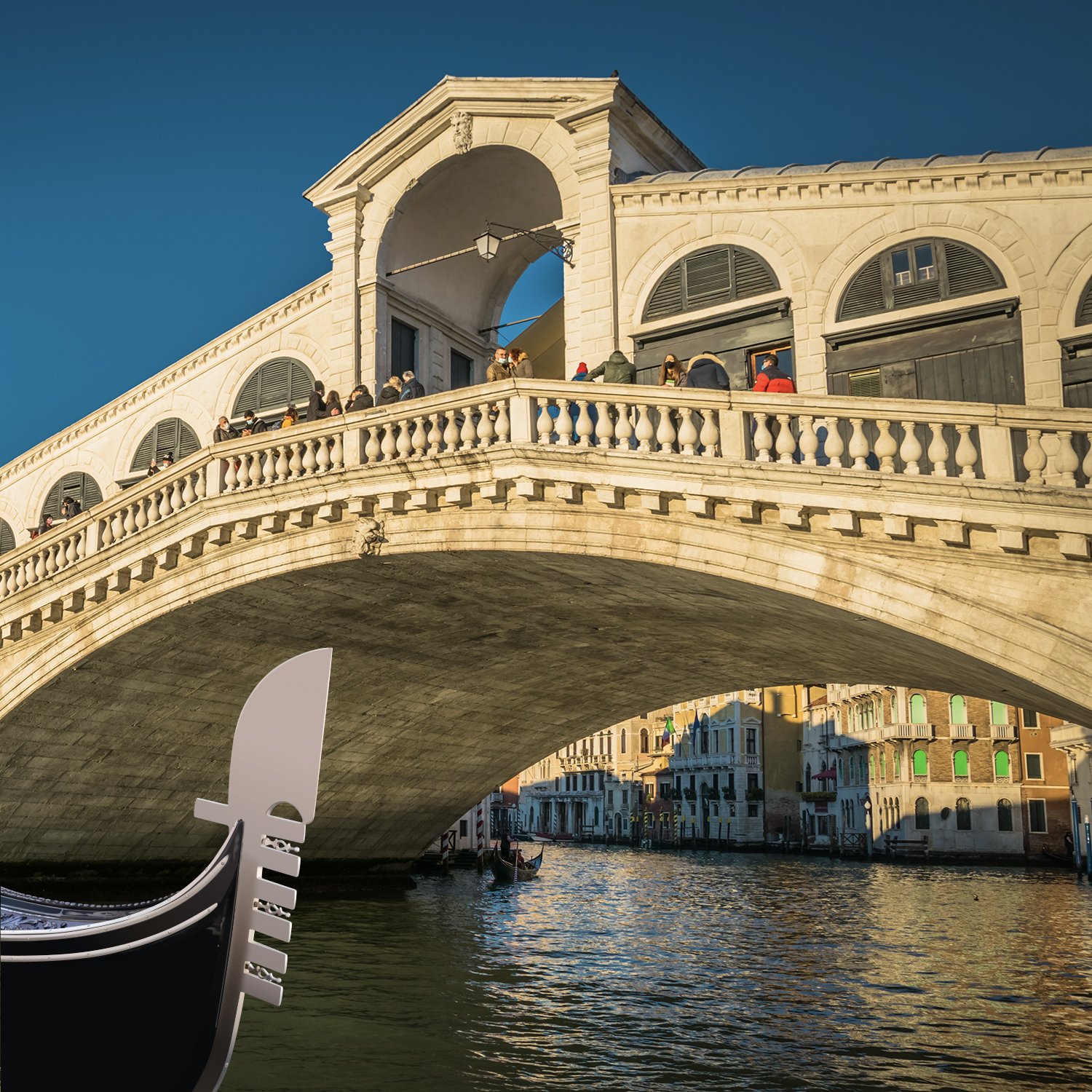
gondola bow iron
Full of hidden meanings the Gondola Bow Iron is the things that make the gondola into a gondola. Every part of the decorative bow iron is there for a purpose. But let’s start with the gondola itself.
The origin of the gondola is lost to history but already during the 11th venture the distinctively narrow boat filled the canals of Venice. It was mentioned for the first time in 1089 and during the 1500s some 10,000 gondolas were used for transportation of people and goods.
The gondoliers were soon rumored to be a rough crowd that were gambling and extorting the people of Venice. This led to the upper classes buying their own gondolas and as the status symbols they were they started competing with color, ornaments and expensive fabrics. The gaudy luxury gondolas became too much for the authorities and in 1562 they made a decree that all but ceremonial gondolas had to be black.
The gondolas developed over the centuries but all of them are built in the special gondola boatyards called a Squero. The gondolas, being adapted to fit perfectly in narrow and shallow canals have no straight lines and one boat takes close to 500 hours. Many of those 500 hours was spent on the finishing touches like the many layers of water proofing varnish made from very secret family recipes. An important part of the gondola is the oar made by a Fórcola, an oar lock. Over the years they created the very intricate fork that you can see today. The fork is the holder for the oar that makes the gondolier able to move the oar in any number of ways. The gondola itself were continously modified and by the late 1800s the gondola makers started to make the left side of the gondola wider as a counterbalance to the gondolier. Today there are only around 400 gondolas left in Venice, compared to the 10,000 traveling the waterways 500 years ago.
The final touch on the gondola must be considered to be the beautiful bow iron or Fero da próva in Venetian. It is certainly there for decoration but every part of it has a meaning. The upper part symbolizes the hat of the Doge, the almost half circle under the hat is the Rialto Bridge and the open space under the bridge is the. The six rectangular shapes pointing forward are the districts of Venice. From the top, San Marco, San Polo, Santa Croce, Castello, Dorsoduro and Canaregio. The rectangle pointing backwards is Giudecca. The intricate shapes between the districts are the islands of Murano, Burano and Torcello and finally the whole shape from top to bottom is the Canal Grande.

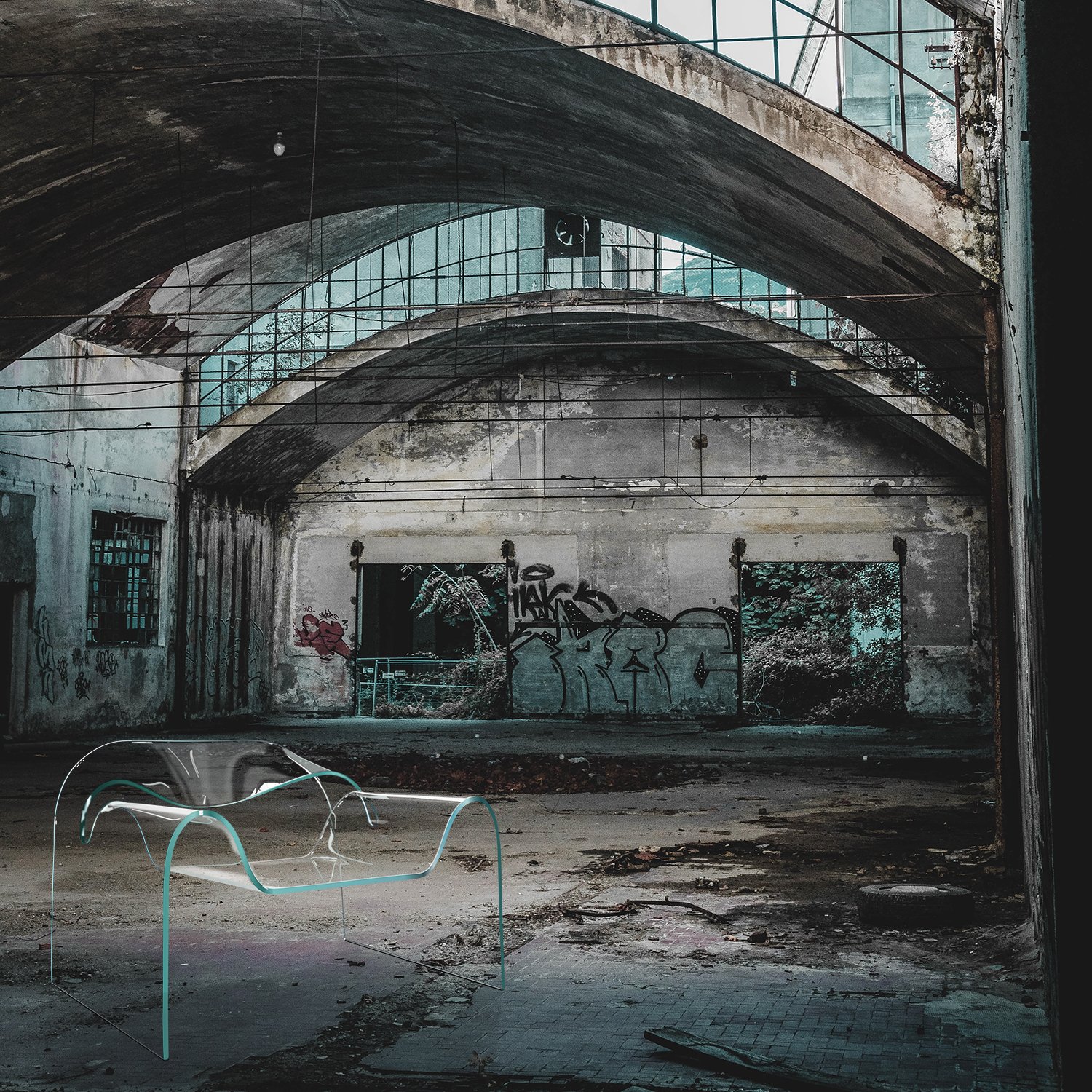
cini boeri ghost chair
Born Maria Cristina Mariani Dameno and know all over the world by Cini Boeri. After graduating from her studies in architecture at the Politechnico Milano in 1951 she went on to become one of the brightest design stars in Italy together with Gae Aulenti. In the male dominated design scene of Italy during the 1950s this was quite a feat.
When finishing her university studies she started working for one of Italy’s most well respected architect and designer, Gio Ponti, before striking up a long working relationship with another of Italy’s greats, Marco Zanuso.
During her long career she he never shied away from modern materials or never before used production techniques like her 1971 Serpentone Sofa made from polyurethane foam panels and sold by the meter to fit any interior.
In 1987, after two years of trials an modifications the Ghost Chair was finally produced by the Italian company Fiam. The company needed a new, never before used, technology suitable for the glass chair. The origami-feel of Boeri’s chair has its reasons. The chair was developed together with Japanese designer Tomu Katayanagi who first showed Boeri the idea by folding a sheet of paper. The single sheet of glass is just 12 millimeters thick and sitting in it makes it look like you are floating. Instinctively Cini Boeri dismissed the idea. To her, making a chair out of glass simply sounded impossible. Luckily her resilience payed off and the Ghost Chair is now considered a true Italian classic.
In 2011 Cini Boeri was awarded Grand Officer of the Order of Merit of the Italian Republic — the highest ranking honor in Italy.
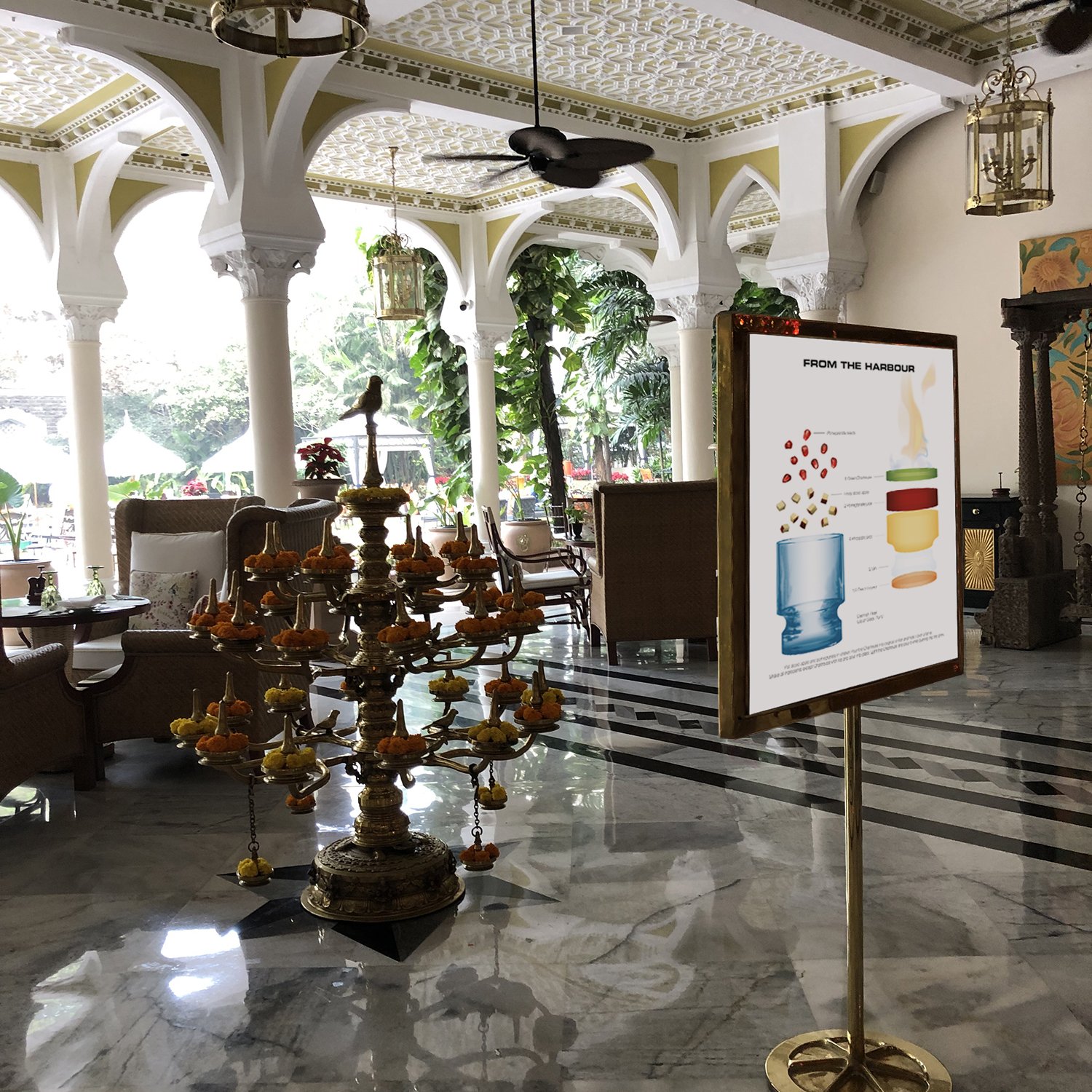
from the harbour
The magnificent Bombay landmark the Taj Mahal Palace Hotel, also called “The Diamond By the Sea”, is often said to have been built by Jamshedji Tata after he was refused entry to Watson’s Hotel at the end of the 19th century. Watson’s was a luxury hotel with a whites only policy. Others claim that Mr Tata simply wanted to build this exclusive hotel as a gift to the people of Bombay to treat them to a Royal experience. What is clear however is that the Taj Mahal Palace Hotel was built for everyone, not just for the upper echelons of society.
The Indo-Saracenic styled hotel opened to the public in 1902 and was the first building in Bombay to be lit by electricity. The Taj Mahal Palace featured ceiling fans from America, elevators from Germany, a Turkish bath and English butlers resulting in an experience unmatched in India at the time.
The hotel’s Harbour Bar opened in 1933 as the first licensed bar in Bombay and this is where their signature cocktail From the Harbour was created. The story goes that two American gentlemen crossed the Indian Ocean in their yacht. When arriving in Bombay in December 1933 one of the men received a radio message from his wife with the news that the American prohibition was finally repealed. They promptly docked their yacht outside the hotel and headed straight for the Harbour Bar to celebrate with a drink. They asked the bartender to make them a cocktail that would quench their 13-year thirst. The barman, known only as John, created a drink worthy of their celebration. When asked what the drink was called, the bartender replied, “Sir, it would be an honour if you would name it, as it has been made today especially for you.” One of the men raised his glass and announced: “From the Harbour.”
The liquor glass was designed by the Indian painter, photographer, sculptor and designer Dashrath Patel in 1970.

gae aulenti pipistrello
The multi-disciplinary Gae Aulenti was born in Palazzolo della Stella, close to Venice, in 1927. She studied architecture at Milan Polytechnic University and graduated in 1953 as one of only two female students in a class of 20.
After graduation she worked as a graphic designer at a magazine called Casabella Continuita before becoming a professor at the Venice School of Architecture in 1960 and later at the Milan School of Architecture.
Apart from her career as a graphic designer, professor and architect Aulenti also gained fame as a furniture designer. During the 1960s she produced a great variety of furniture gaining her a prize at the Milan Triennial.
The Pipistrello lamp is essentially a very successful merge of two very different design elements. The streamlined telescopic base with the feel of American design and architecture from the 1930s and the lampshade made as a tribute to the natural forms of fauna and flora of the Art Nouveau movement.
Gae Aulenti designed the Pipistrello lamp in 1965 and went, sketches in hand, to Elio Martinelli who got famous in the 1950s for his innovative lamp-company Martinelli Luce. Seeing the sketches Martinelli immediately agreed to produce the lamp. Originally it was intended for the Olivetti store in Paris but it was such a success it was later put into production.
The smooth shape of the lampshade, looking like the wings of a bat, made Aulenti name it Pipistrello, meaning bat in Italian.
As an architect Gae Aulenti is probably most famous for the transformation in Paris of Gare d’Orsay to Musée d’Orsay. In 2012 she was honored when the Piazza Gae Aulenti was inaugurated in Milan’s most modern neighborhood.
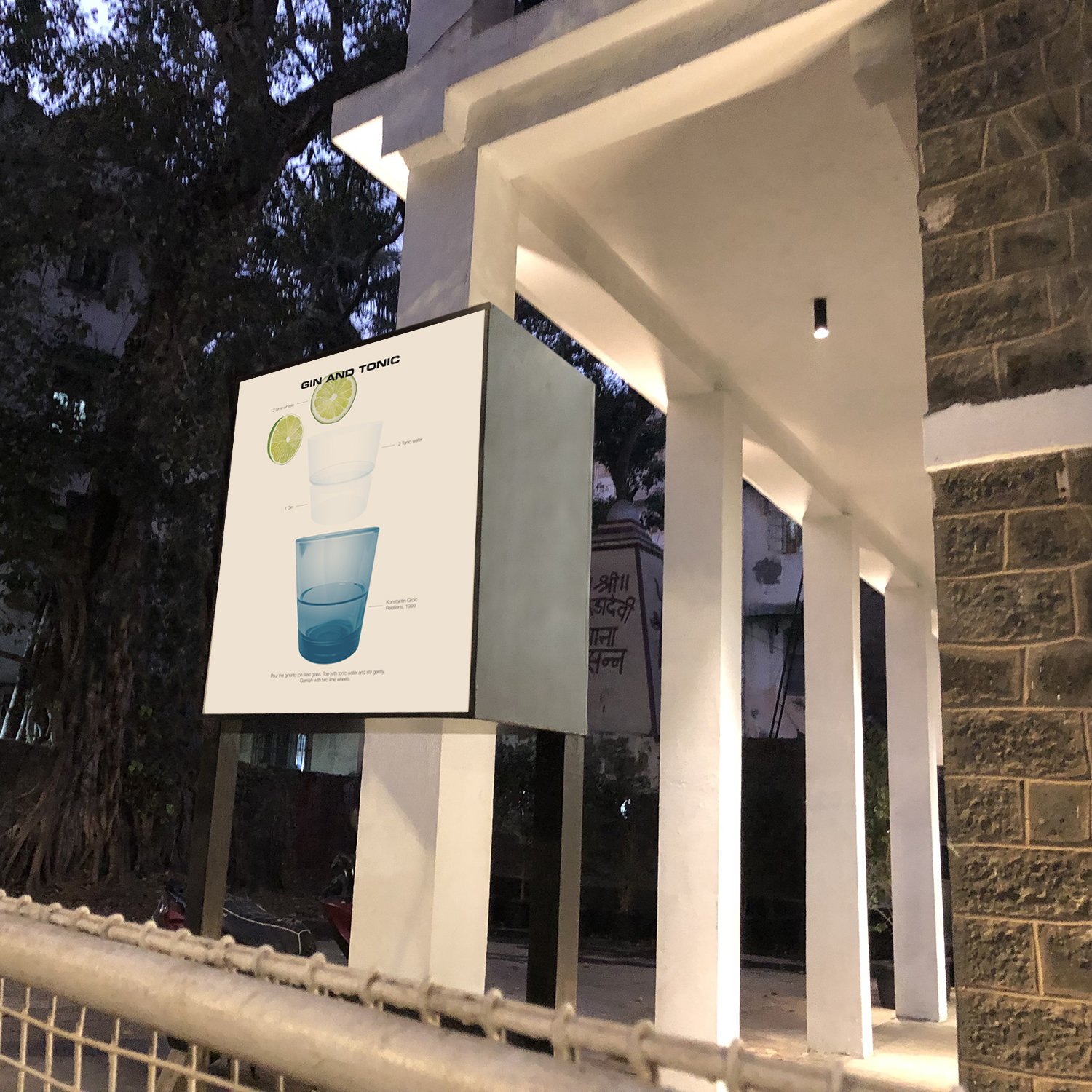
gin and tonic
In the Indian subcontinent, as well as in other tropical regions, malaria was a constant problem during the 18th century. To help his fever-ridden patients a Scottish physician called George Cleghorn became interested in quinine, a traditional cure made out of the bitter bark of the Cinchona tree, a tree native to Peru. Quinine as a malaria treatment had been used by Europeans since at least the 1630s when Jesuit missionaries brought it back to Spain from the New World. Doctor Cleghorn made a tonic from the bark but the bitter drink was too unpalatable for the officers of the Presidency armies, the military force of the East India Company. The officers took to adding water, sugar, lime and gin, to the tonic and the Gin and Tonic was born.
Originally quinine came in powder-form that was mixed with soda and sugar to make it more drinkable. The tonic became immensely popular in the British colonies, especially in India and the first known quinine-based tonics were marketed during the 1850s. Schweppes launched their first carbonated tonic in the 1870s and knowing their customers they branded it Indian Tonic Water.
As the tonic water is no longer used for treating malaria it isn’t very heavy on quinine anymore making it a lot less bitter. It is generally also much sweeter nowadays.
The glass called Relations and was designed by Konstantin Grcic in 1999.
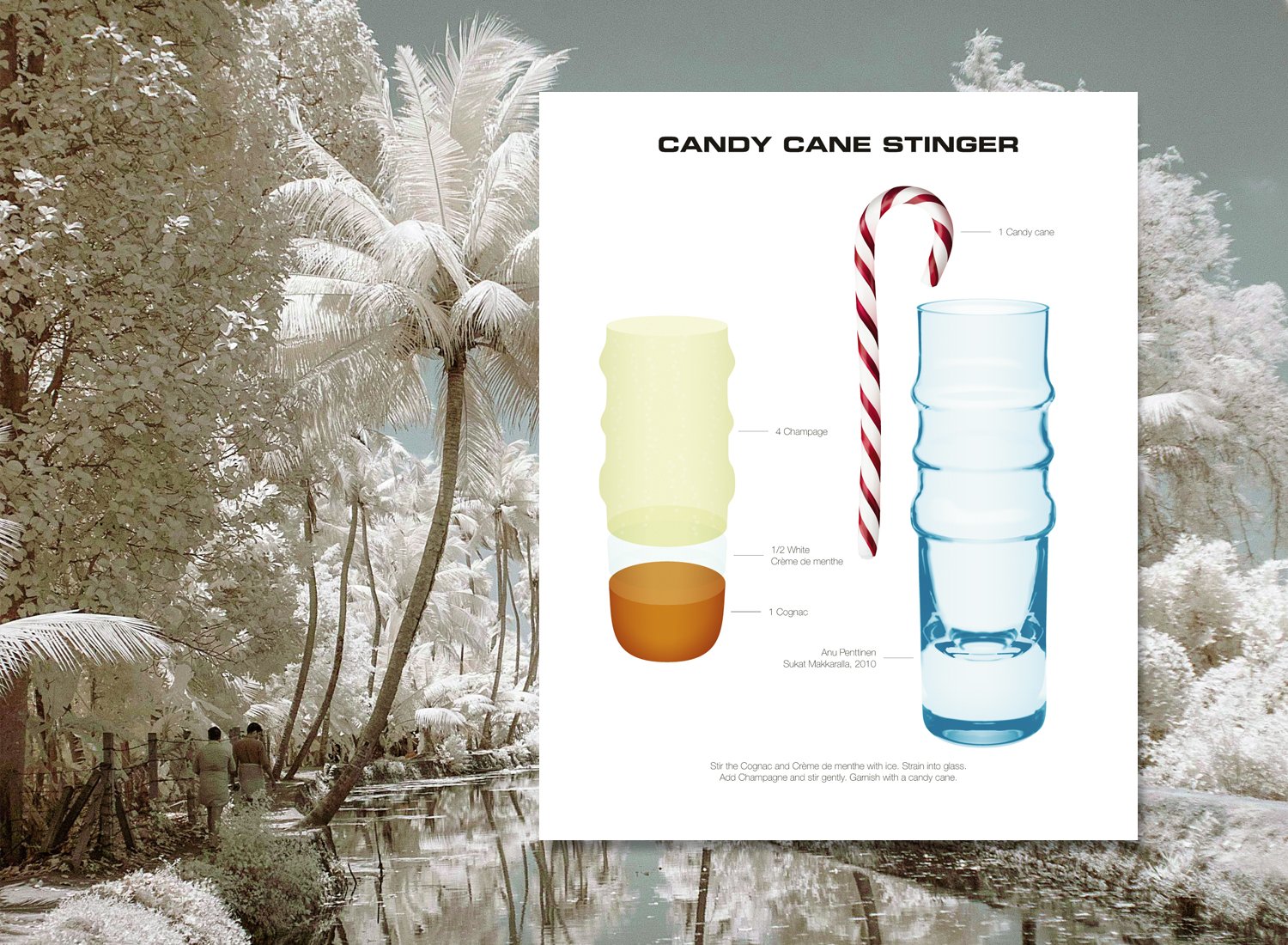

lina bo bardi bowl chair
The Brazilian-Italian architect and designer Lina Bo Bardi was born in Rome in December of 1914 as Achillina Bo. Early in her life she decided to study architecture during a time when architecture schools accepting women were few and far between. She ended up studying at the Rome College of Architecture where she graduated in 1939. After school in 1942 she opened her own office in with a school friend but with the onset of WWII there weren’t many openings for architects and she had to take on jobs as a writer and illustrator for the Italian architecture magazine Domus.
During her time at Domus she was sent to Rome to interview an art historian called Pietro Maria Bardi. Despite her being part of the resistance and Pietro Maria Bardi being an ardent supporter of Mussolini they fell in love. After the war they had no other option but to flee the country for São Paulo, Brazil where Pietro had been commissioned to head an art museum.
Coming to Brazil the couple immediately immersed themselves in the Brazilian cultural scene and Bo Bardi was enthralled by the country’s modernist architects like Oscar Niemeyer and Lucio Costa.
In 1951 she designed and built one of her most celebrated works, Casa de Vidro (the Glass House) in the outskirts of São Paulo for her and her husband. Here she stayed until her passing in 1992.
That same year, 1951, she designed the Bowl Chair. With her own design vision calling for “a process of humanization of art” she made the chair “in relation with the proportions of the human body”. The semi-spherical seat can be moved independent of the steel frame making it recline to whatever position the sitter prefers. In 1953 it was featured in the US magazine Interiors where it was described as a “cuddle bowl”.
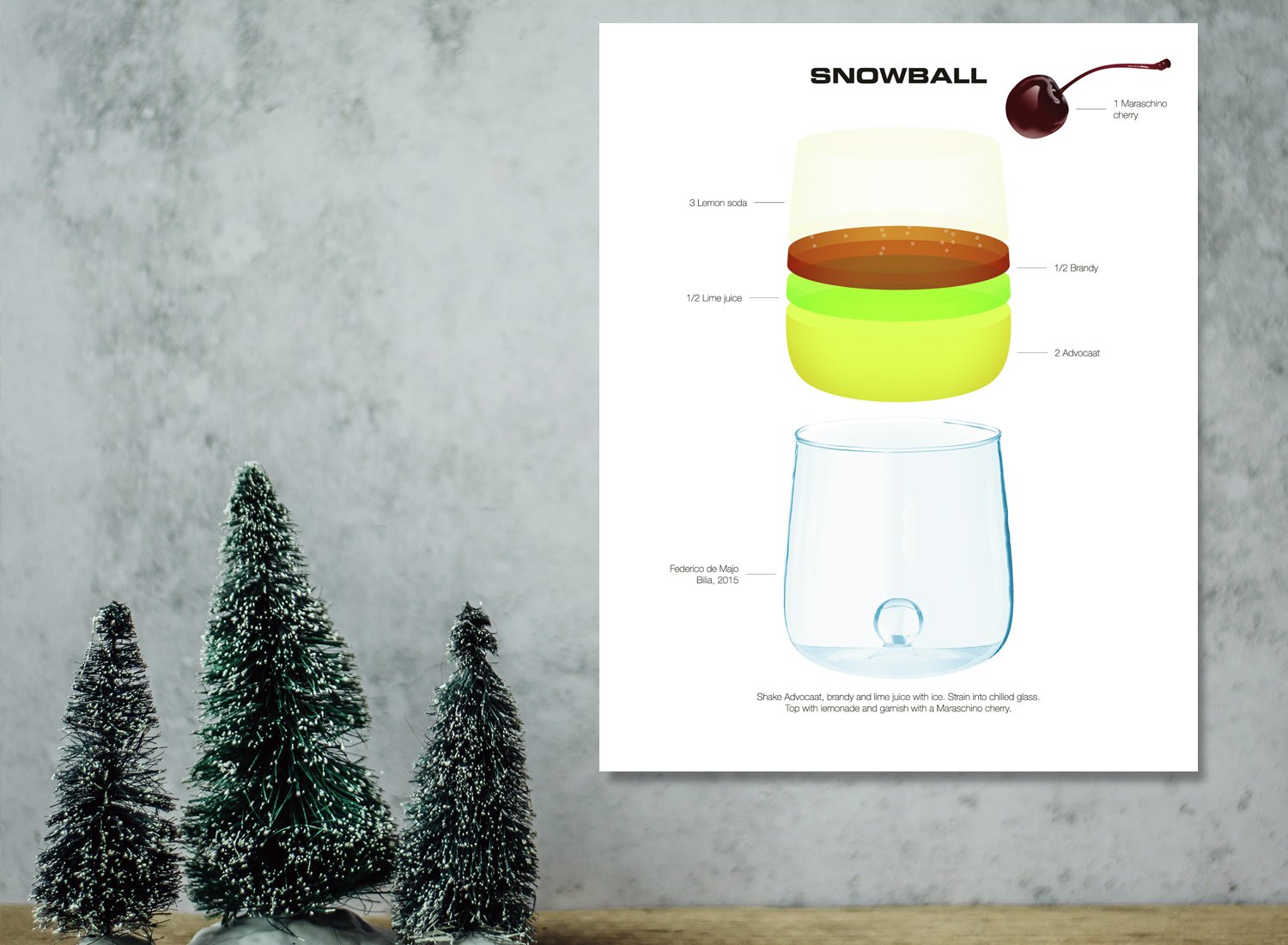
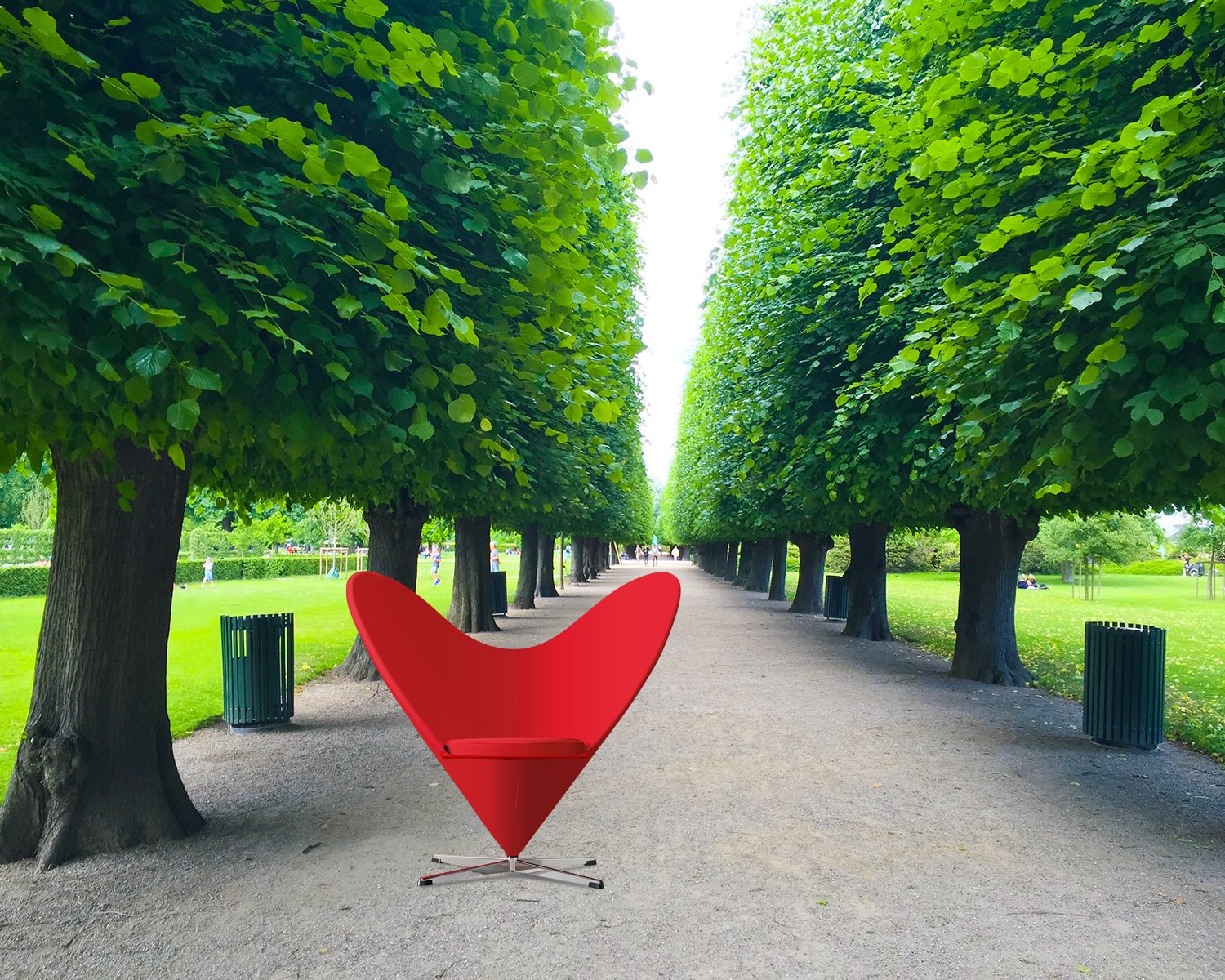
panton heart cone chair
Verner Panton was born in the Danish village of Gamtofte and is known worldwide for his colorful pop art designs, often in plastic. After his studies at the Royal Danish Academy of Fine Arts in Copenhagen, where lighting designer Poul Henningsen was one of his teachers, he worked a couple of years for Arne Jacobsen, another Danish design icon. In 1955 he left to start his own architecture and design studio.
At the height of Danish design during the 1950s designers such as Arne Jacobsen and Hans Wegner worked mostly in wood but Panton wanted to take Danish design to another level. He made the first inflatable furniture and created his designs in bright colorful plastic. He said that “The main purpose of my work is to provoke people into using their imagination. Most people spend their life living in dreary, grey-beige conformity, mortally afraid of using colors”. He wanted to make peoples lives more colorful and exciting.
His first major commission was the smaller Cone Chair that Panton designed for his parents’ restaurant in 1958. A customer admired it and offered to put it into production. According to Financial Times the arrival of Panton’s Cone Chair at a New York, Fifth Avenue shop stirred up such a commotion the NYPD ordered the chair to be removed. In 1959, ayear after his design rendered the attention in New York, Panton designed the bigger Heart Cone Chair and it became an instant classic.
During the 1960s Verner Panton started working with Vitra, which still produces his designs today like the even more famous stackable Panton chair. Designed in 1959 it was the first chair to be made from a single piece of molded plastic.
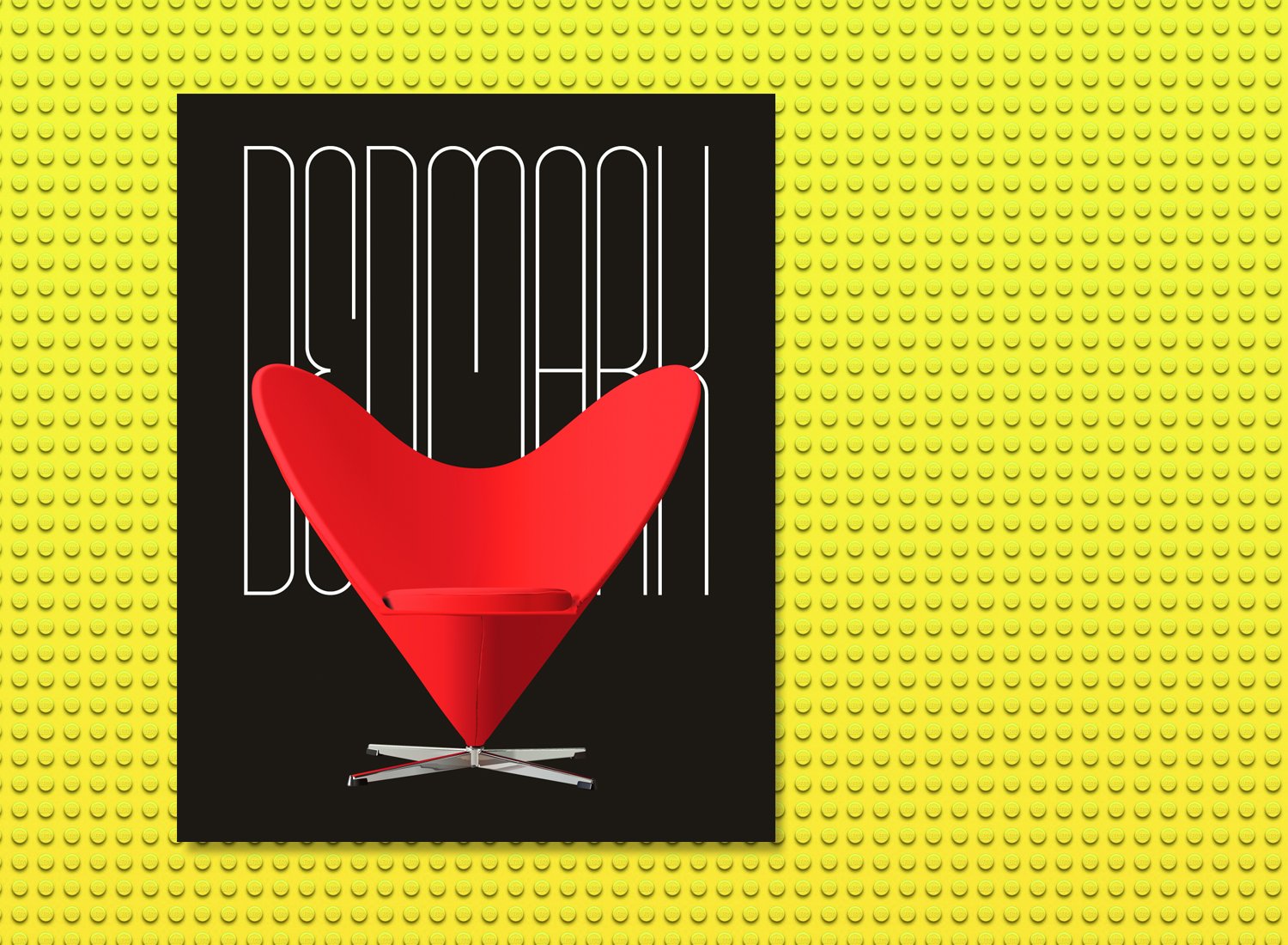
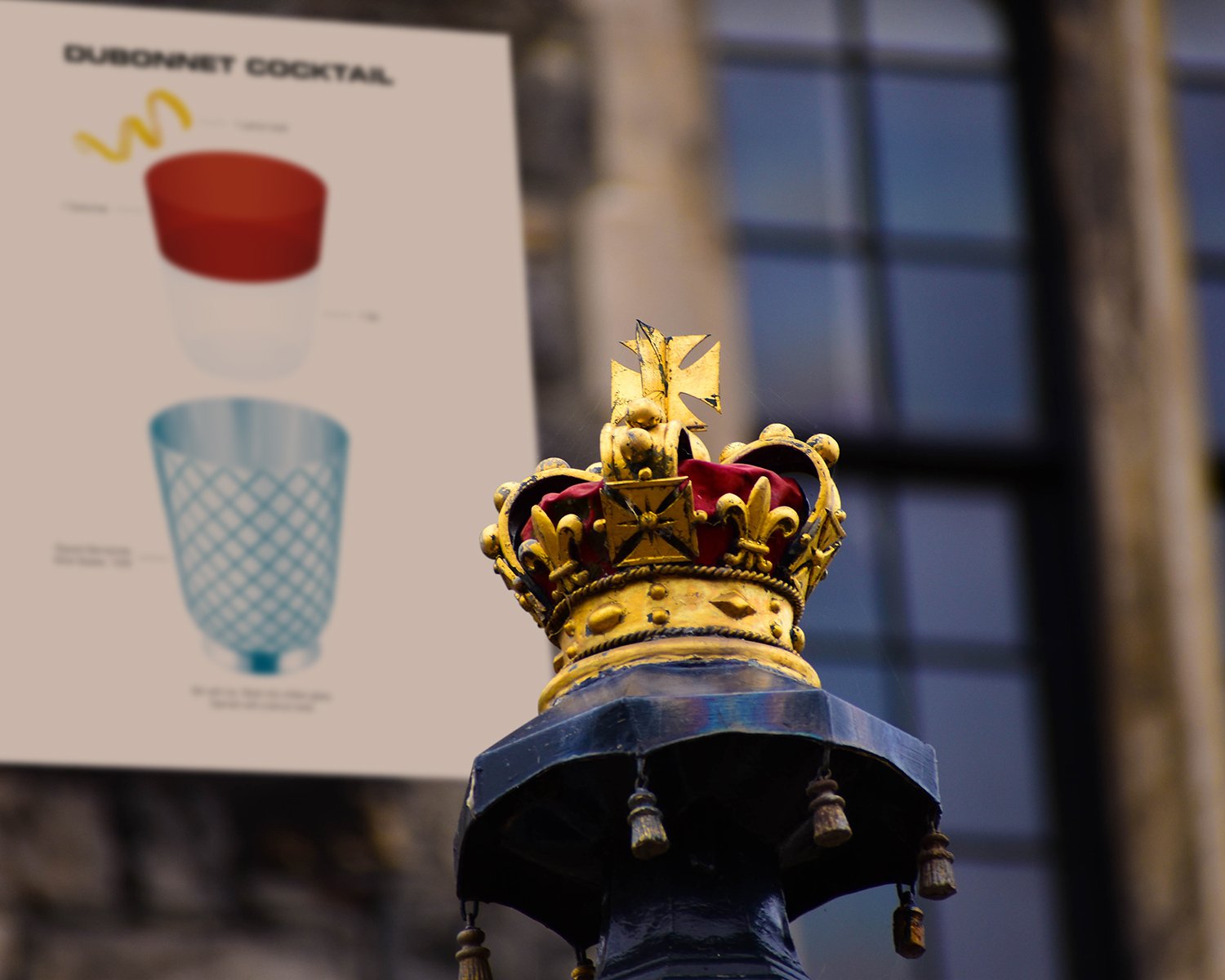
dubonnet cocktail
Dubonnet came into being in 1846 after a competition was held by the Frenchgovernment with a prize for anyone who could make a palatable quinine-rich drink. The French colonists in North Africa were suffering greatly from malaria and the only known cure was the incredibly bitter bark from the South American cinchona tree. The goal was to create a drink with enough of the quinine to help the French combat malaria but still be enjoyable enough to be used voluntarily.
Joseph Dubonnet created his Dubonnet by mixing Roussillon wines from five different grapes, blending them with herbs and spices like cocoa beans, colombo (a mild type of curry powder), orange peel, Colombian green coffee, cinnamon, camomille and elderflower. He then left it to mature in oak vats for three to four years.
The Dubonnet Cocktail first appeared in print around 1914 in a book simply called Drinks by Jacques Straub but no one knows who first created it.
In Harry Craddock’s The Savoy Cocktail Book from 1930 the same cocktail appears under a different name, the Zaza Cocktail. The name Zaza was taken from a popular French play written by playwrights Pierre Berton and Charles Simon, and first staged at the Théâtre du Vaudeville in Paris in 1889. The play about a married man having an affair with an actress was translated into English and went on to become a huge success on Broadway and lent its name to a cocktail.
To complicate matters even further you can also find the same cocktail by the name The Queen’s Cocktail owing to the fact that it was the late Queen Elizabeth’s favorite cocktail. She is said to have had one every day before lunch, albeit made with two parts Dubonnet to one part gin instead of the original equal parts.
The silver beaker was designed in 1938 by the Swedish Prince Sigvard Bernadotte and is called Beaker 819B.
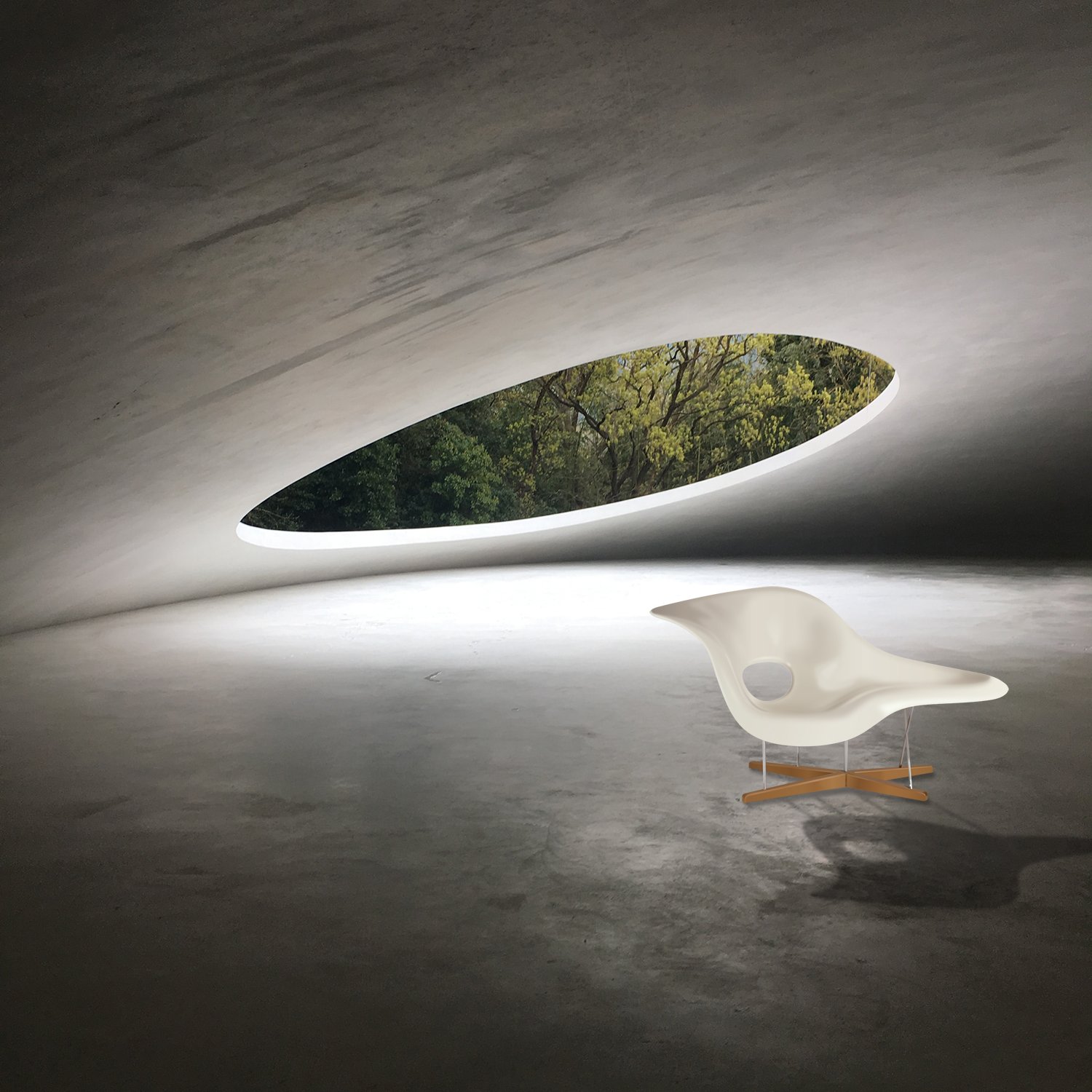
eames la chaise
The lounge chair was designed by Charles and Ray Eames for the Museum of Modern Art’s competition “International Competition for Low-Cost Furniture Design” in New York in 1948. The competition challenged designers to develop cost effective furniture designs to be used in smaller houses in the postwar era. The guidelines stated that the works “fit the need of modern living, production and merchandizing”. MoMa ended up receiving over 3,000 submissions from all over the world.
The sculptural design of La Chaise was inspired by the ‘Floating Figure’ a work made by sculptor Gaston Lachaise who gave his name to this icon of modern design. You can actually find the original ‘Floating Figure’ at MoMa so Charles and Ray didn’t have to travel far to get their inspiration for the competition.
The La Chaise didn’t win the competition as it was considered too large but it did get a mention for its outstanding form. It was intended to be released by Herman Miller in 1950 but was considered too expensive to produce and was never manufactured. This might have been another reason it didn’t win. It was a competition for low-cos furniture after all.
It took another 40 years until Vitra put La Chaise into production in 1991, first in fiberglass as the original from 1948 but since 2001 Vitra uses polyurethane.
In the same MoMa competition the legendary Art Director of Harper’s Bazaar, Alexey Brodovitch competed with his Floor Chair (model 1211-C). It was a plywood rocking chair that was described as “exceptionally simple and comfortable” made with inexpensive materials and a basic construction. With his Floor Chair Mr. Brodovitch was awarded third prize.
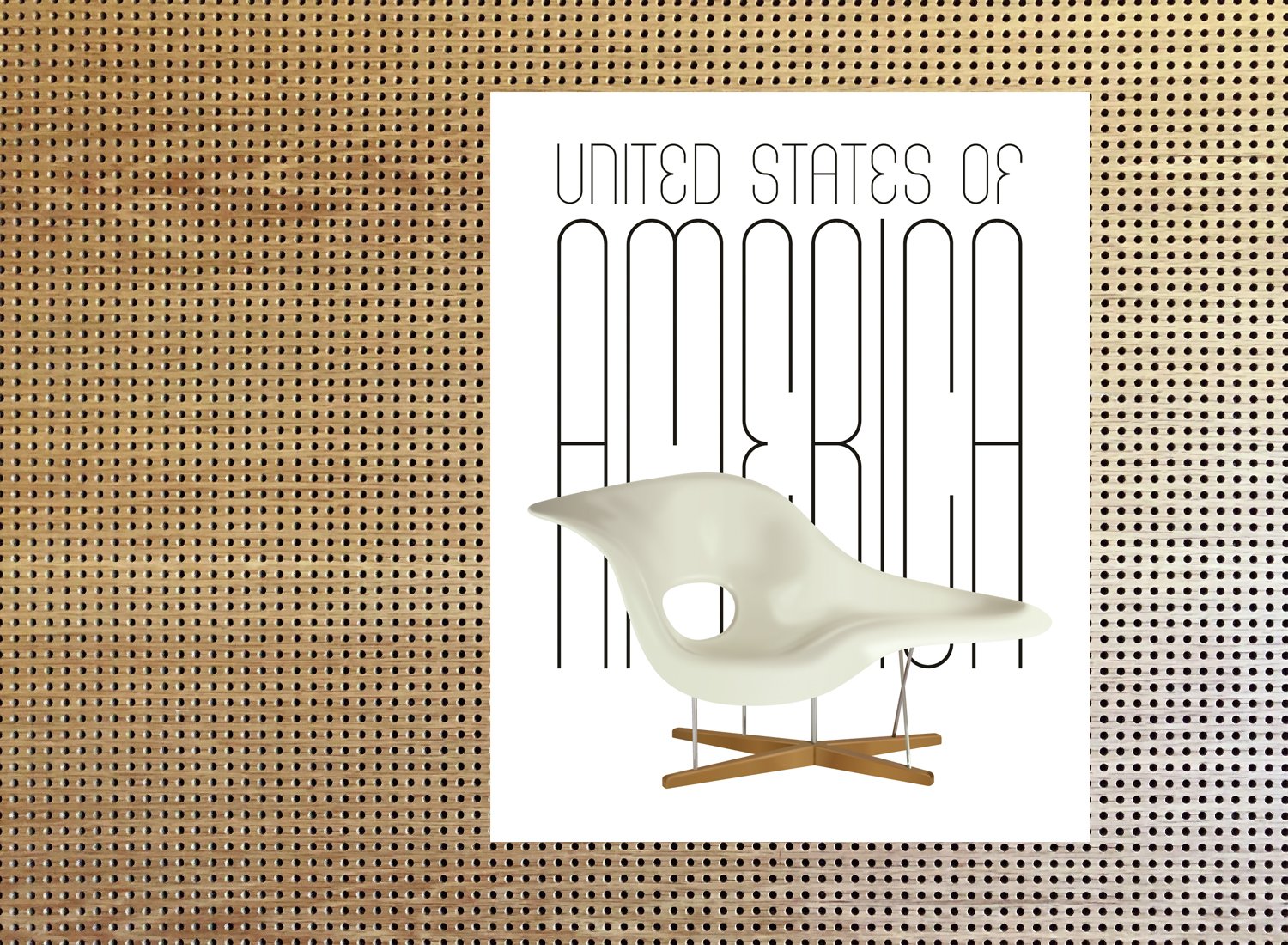
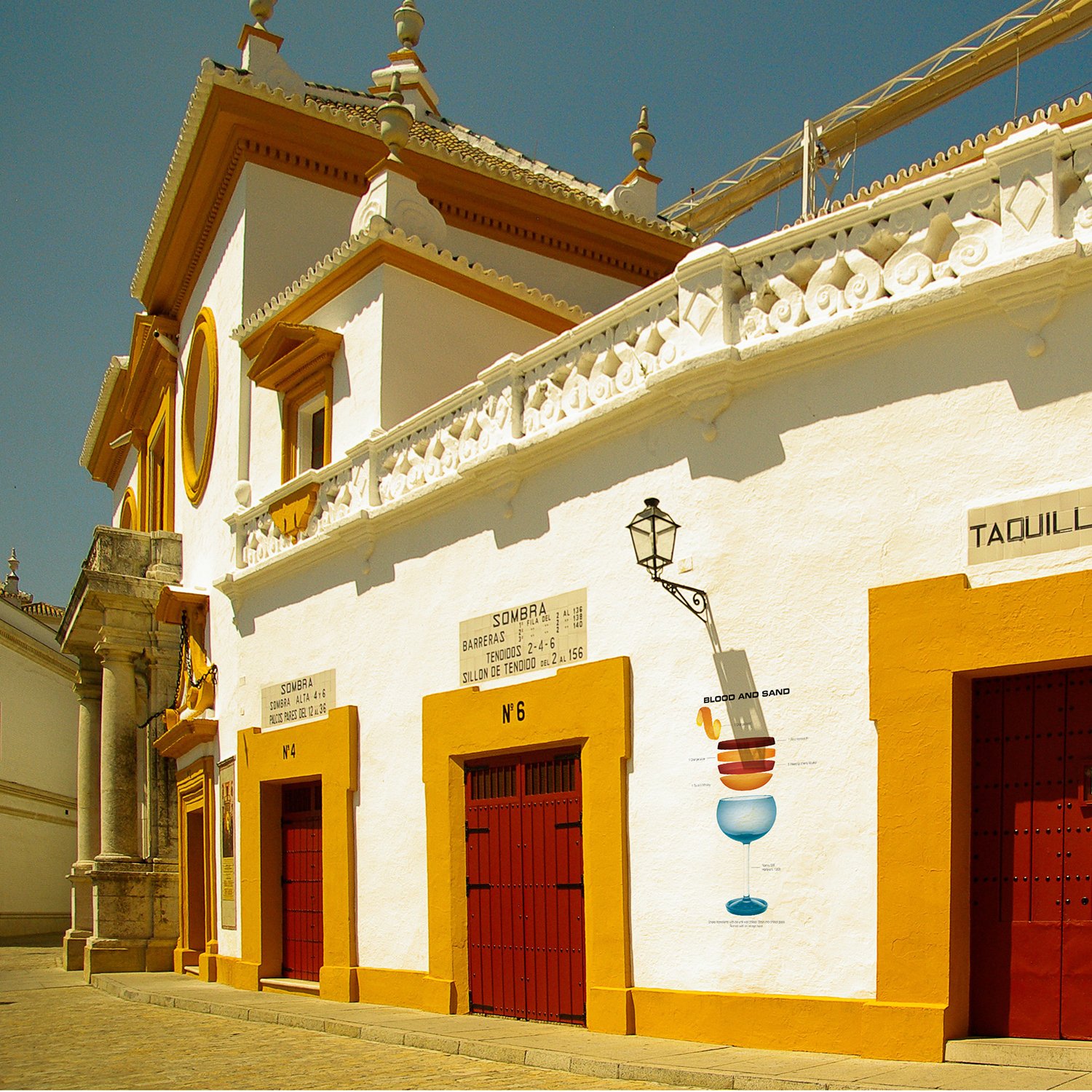
blood and sand
Rudolph Valentino was one of the biggest stars during the heyday of the silent movie era. In 1922 he played the lead in an adaptation of a novel by Vincente Blasco Ibáñez, by some considered to be his best performance. The silent film is called Blood and Sandwas a tale of a poor man making it big as a celebrated bullfighter. Having married his childhood sweetheart early in his career Valentino’s character starts an affair with a wealthy widow after becoming famous. Second thoughts led his furious lover to take her revenge on the bullfighter by exposing the affair to his wife. The ordeal makes him lose focus in the arena and he gets killed by a bull, but not before being forgiven by his wife. A big drama that inspired a classic cocktail.
The movie was by no means a masterpiece. In a review it was noted that “It is the story’s name and not the story or plot that made ‘Blood and Sand’ the big hit”. The movie was big enough success though to inspire a bartender, no one knows who, to create an unexpectedly great cocktail. It is said that the amber Cherry Heering is supposed to play the role of the blood and the orange juice plays the role of sand.
This 100 year old classic scotch cocktail was first published in Harry Craddock’s Savoy Cocktail Book from 1930 as was the case with a long line of classics.
The glass is called Harlekiini and was designed in 1958 by Nanny Still.
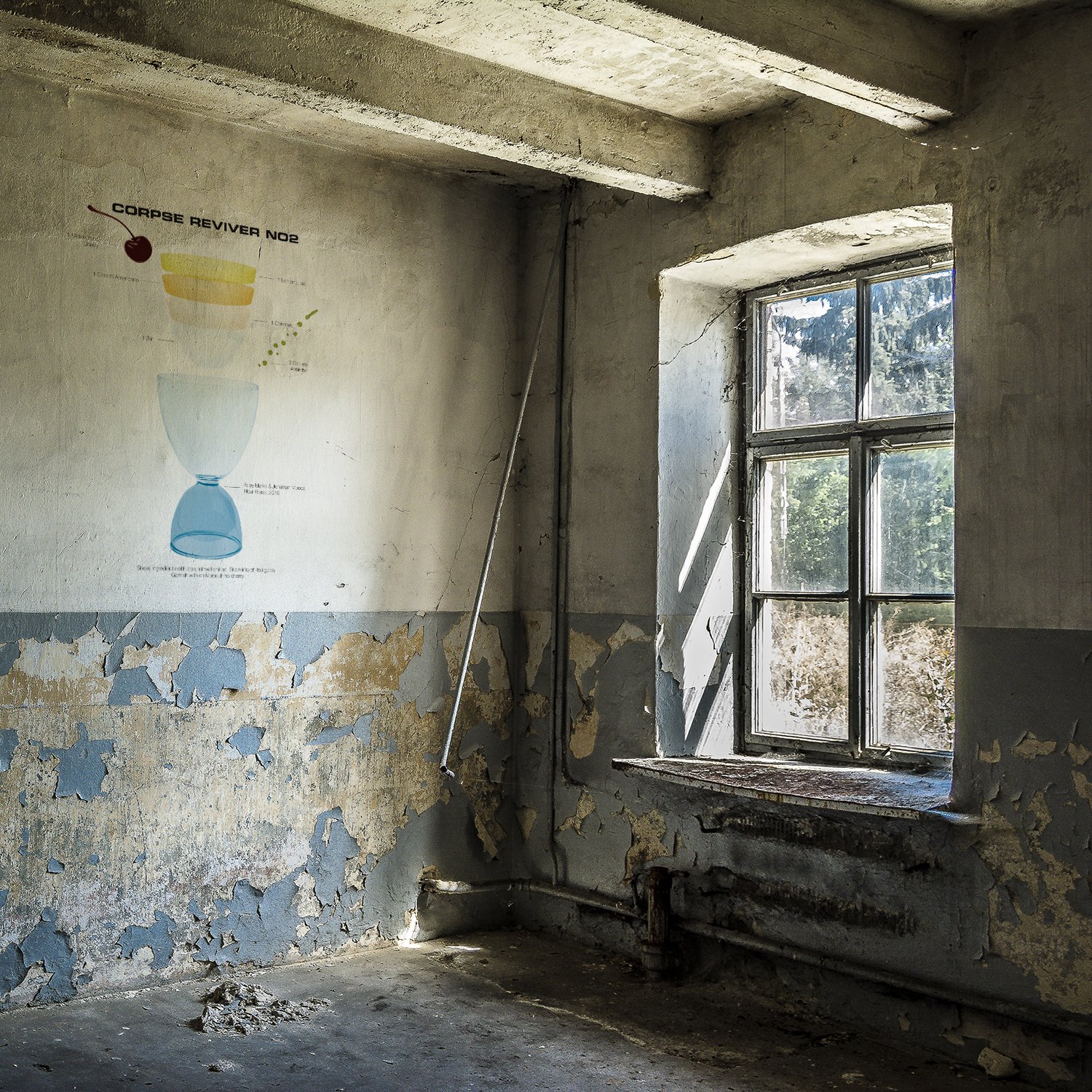
corpse reviver
Rather than being just a cocktail the Corpse Reviver is actually a family of cocktails emerging in the mid 1800s. The only thing the family have in common being that they are strong enough to bring you back from the dead.
Back in the day bartenders served these to their customers the day after a particularly rough night. It was first mentioned in the English satirical magazine Punch in 1861 and the recipe was first published in The Gentleman’s Table Guide by E Ricket and C Thomas in 1871. This first published version called for equal parts Brandy and Maraschino with two dashes of Boker’s bitters.
The popularity and spread of the different Corpse Reviver versions can be tributed to Harry Craddock and his Savoy Cocktail Book. In the book he lists two versions, a No 1 and a No 2. The first is made of two parts Cognac and one part each of Calvados and Italian vermouth. Craddock notes that it is “To be taken before 11AM, or whenever steam or energy is needed”. The No 2 is said to have the same effect but is made with entirely different ingredients. Equal parts of Gin, Cointreau, Kina Lillet (a product that is discontinued and usually replaced with Cocchi Americano) and lemon juice with a couple of dashes of Absinthe. About the No 2 Mr Craddock writes “Four of these taken in swift succession will unrevive the corpse again”.
Interestingly Trader Vic Bergeron lists the Corpse Reviver No 2 in his Bartender’s Guide using the same recipe as Savoy but substitutes Swedish Punsch for Kina Lillet. The Swedish Punsch is an Arrack based liqueur, popular in Sweden and Finland ever since it was first imported from Java in 1733. It is a pretty bold choice by Trader Vic considering the punsch is very far from the original bitter quinine rich Kina Lillet. Then again, the Trader wasn’t known for shying away from a sweet exotic drink. So as not to confuse the two versions of No 2, the Punsch version is sometimes called No 2A in bars.
The glass was designed by Arley Marks and Jonathan Mosca in 2019 and is called Hour Glass.
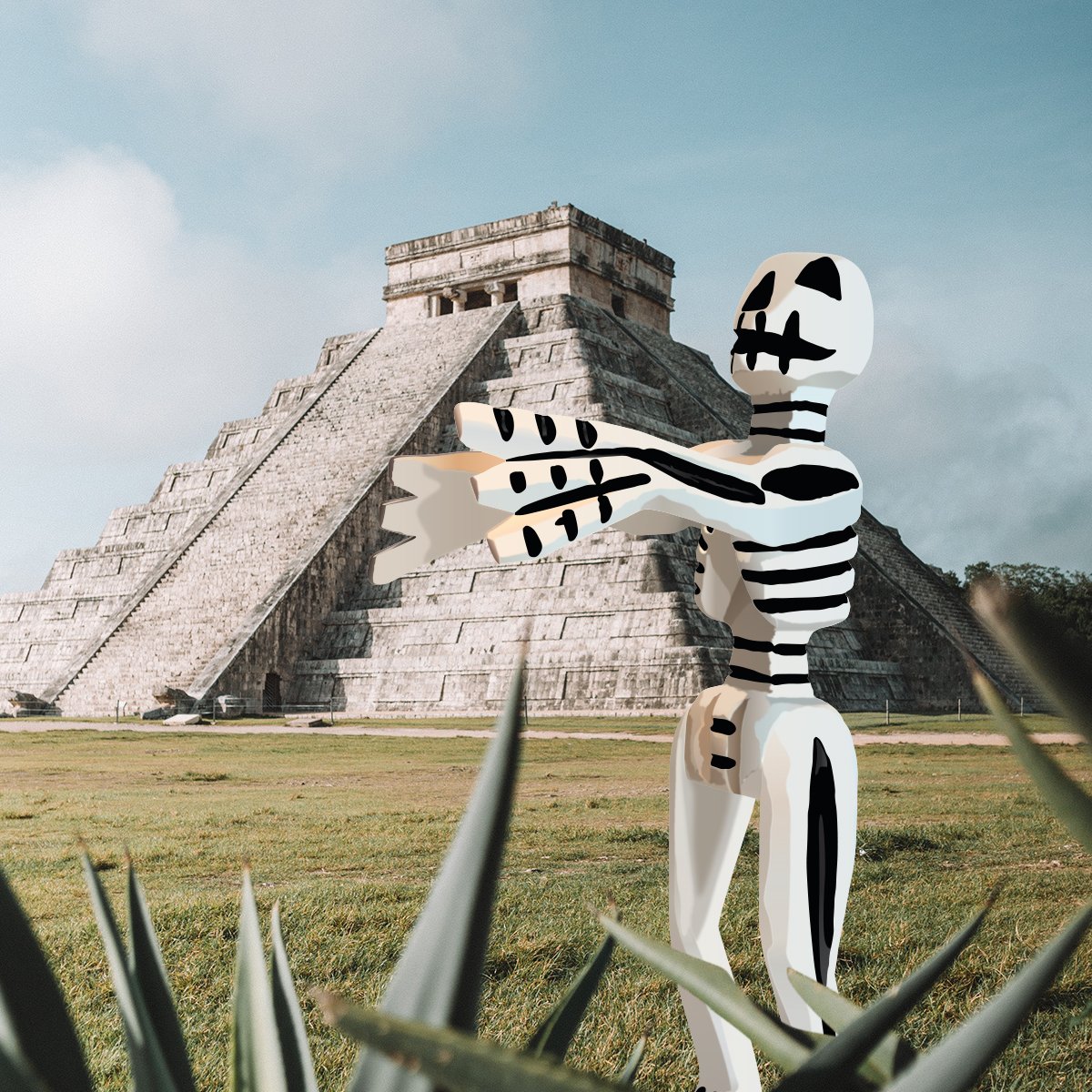
calaca
Día de los muertos is celebrated in Mexico on the first and second of November and the country is filled with skeleton decorations called Caracas in Spanish. Mexican academics have different views on whether the celebration is dating back to the pre-Hispanic Mayans and Aztecs and were integrated with the European customs or if it is simply an adaptation from the Medieval European All Saint’s Day and All Soul’s Day. Traditions that are observed on the same days in Europe, especially in Catholic Southern Europe where altars were made for the dead and sweets and breads were eaten in the shape of skulls and bones.
The celebrations in Mexico have however transformed into something typically Mexican and in 2008 it was made into a Cultural Heritage of Humanity by UNESCO.
During the Day of the Dead families make “ofrendas” for their deceased loved ones containing pictures and memorabilia of the dead along with their favorite food and drinks as a tribute. The ofrendas are also decorated with sugar skulls, calacas, Mexican marigold and papel picado (delicately cut out colored tissue paper).
Since Día de los muertos is a day to remember everything about the ones you loved it is more of a happy celebration of the dead rather than a sad reminiscing. This is why you will find decorations with skeletons doing everyday things like riding a bike, dancing or drinking. Why should people stop doing what they loved just because they turn into skeletons?
The pictures and sculptures of skeletons became incredibly popular in the early 1900s thanks to a political cartoonist called José Guadalupe Posada. He used calacas and calaveras (skeletons) for his political and cultural critiques. His most famous character is La Calavera Catrina, a satirical portrait of a Mexican aspiring to look like a European aristocrat.
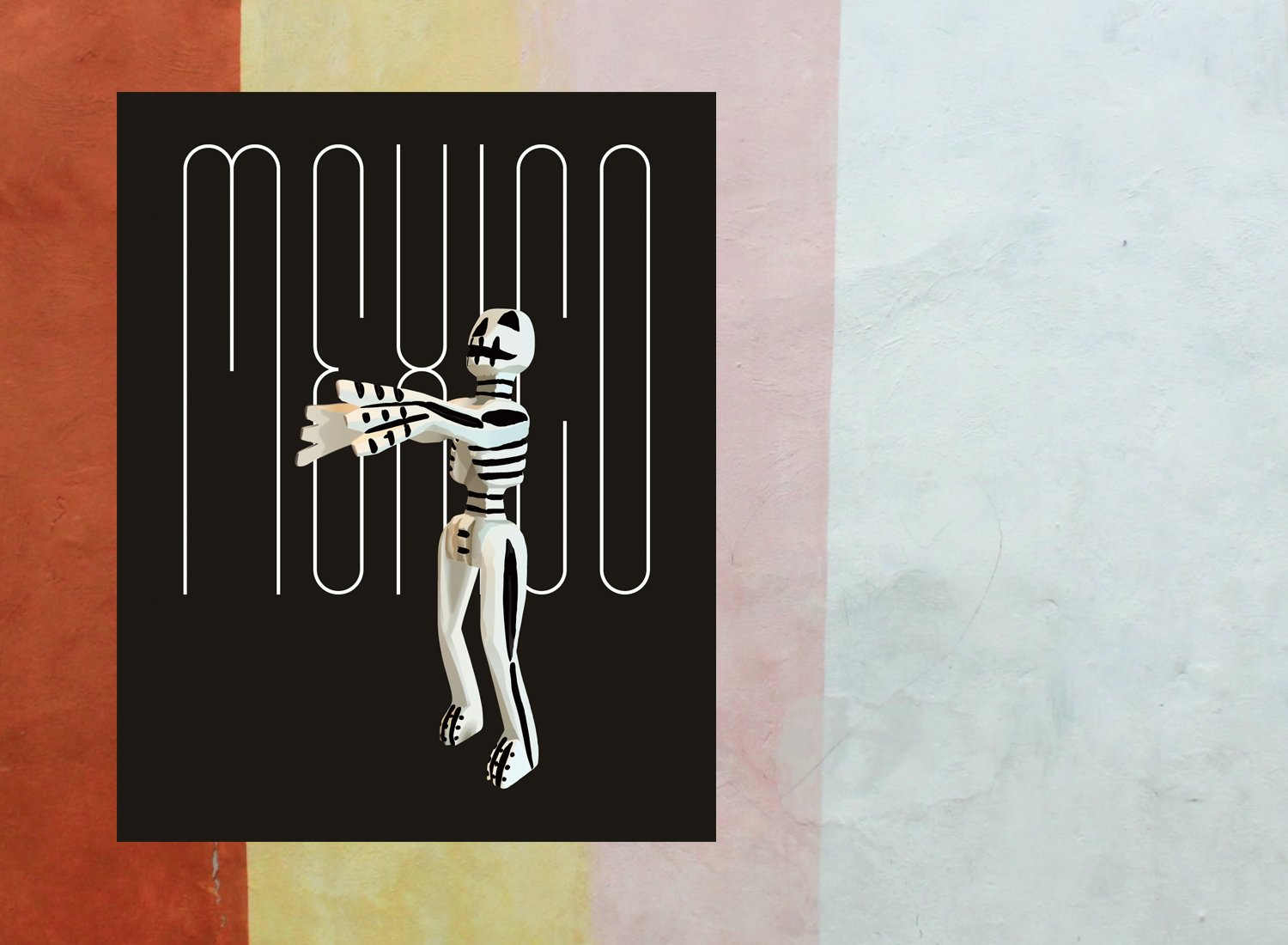
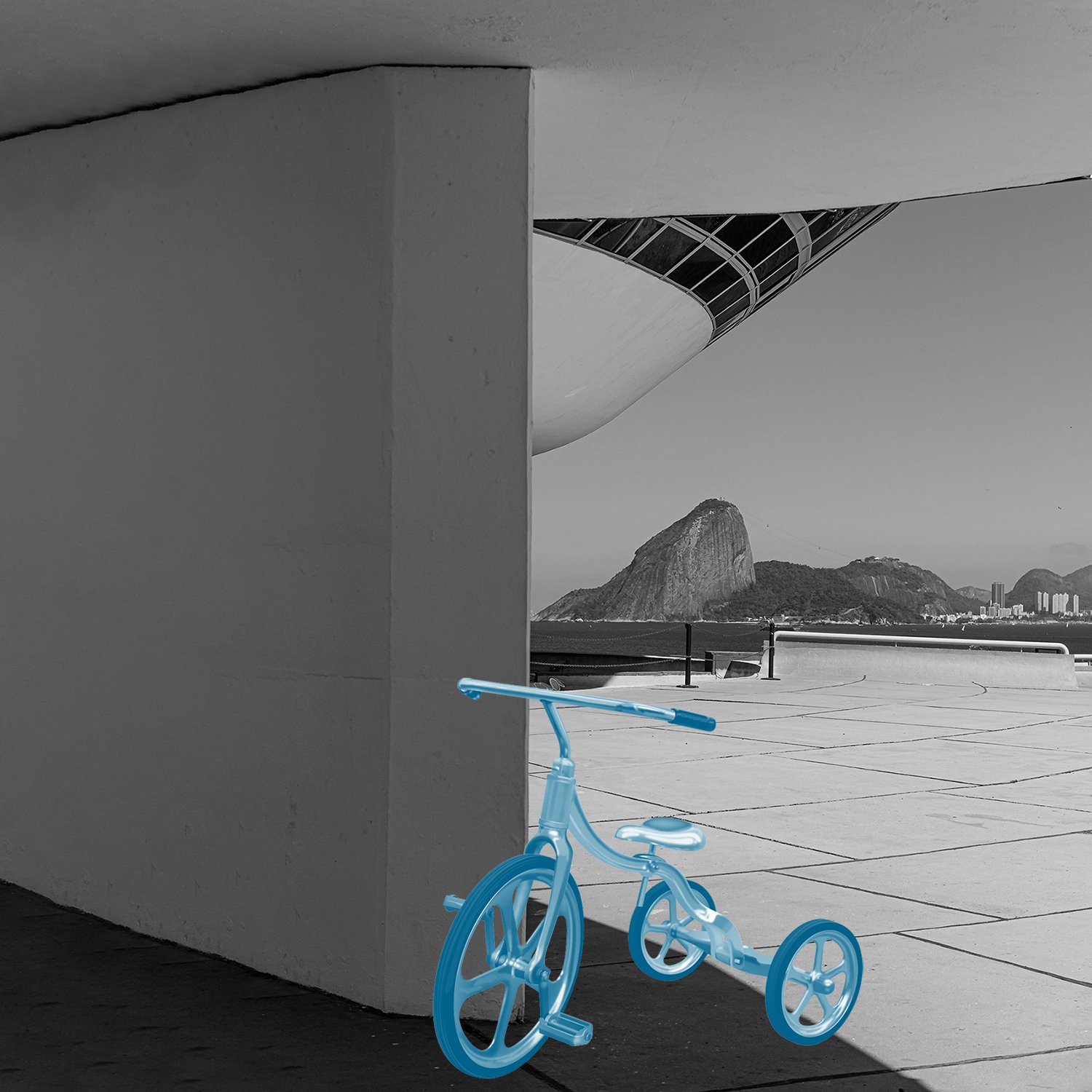
convert-o-bike
Before Tony Anthony started Anthony Brother’s Refrigeration Co he worked as an engineer at Northrop where he learned all he needed to know about cast-aluminum. After WWII there was a shortage of steel but an abundance of cheap recyclable aluminum thanks to the decreased demand for airships.
In 1949 Tony Anthony designed the ingenious Convert-O-Bike that can easily be transformed from a tricycle to a bicycle. When the kid is old enough you simply remove the rear axle, detach one of the rear wheels and fit that in the rear fork.
The Convert-O-Bike is a made with a solid cast-aluminum frame that prevents it from rusting thus making it last a lifetime. The introduction in the late 1940s and the early 1950s proved to be perfect timing. The American housing market started booming and the Convert-O-Bike turned an immediate success becoming a regular feature in the American suburbia.
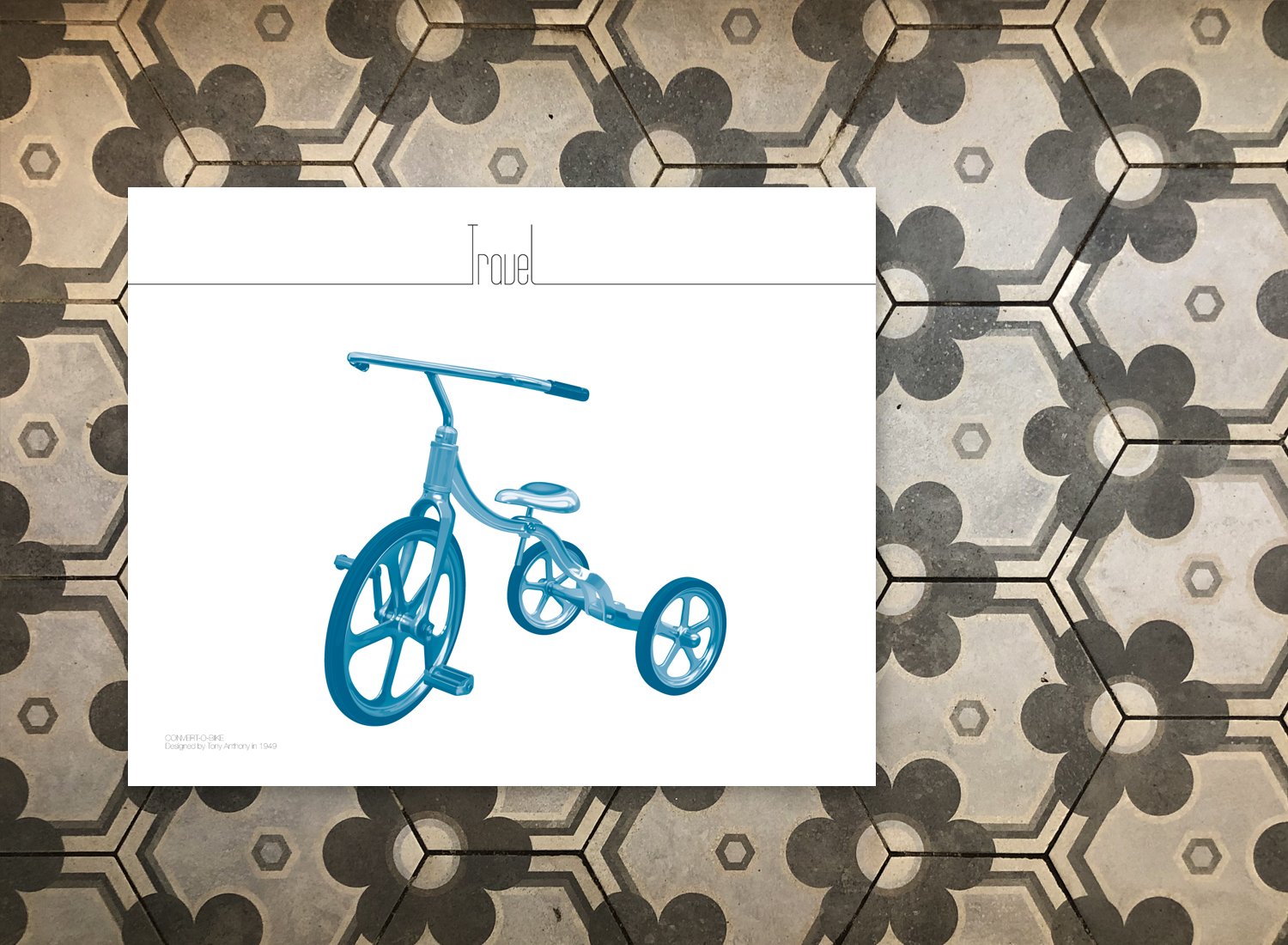
moonwalk
On July 20 1969 Neil Armstrong was the first human setting foot on the moon after safely landing the Apollo 11 Eagle lunar module in the Sea of Tranquility. It was an incredible feat of engineering seen by 600 million people glued to their tv screens across the planet, effectively making the US take the lead in the space race. Four days, six hours and 45 minutes after leaving earth the crew of three, Armstrong, Buzz Aldrin and Michael Collins returned safely to Earth. After a 21 day quarantine (nobody knew what disease or bacteria could be caught during space travel) the crew went on a 45 day, 24 country celebratory Apollo 11 “Giantstep Presidential Goodwill World Tour”.
Before traveling across the globe they celebrated with cocktails and the first cocktail they had after returning from space was a Moonwalk. The cocktail was the invention of Joe Gilmore, head bartender at the Savoy’s American Bar in London. Even though the world tour took the astronauts to London mr Gilmore never got a chance to serve them his concoction at his bar. Instead he made the crew a batch of the cocktail and sent it to the US along with Champagne and glasses and this was the very first cocktail they had after quarantine.
Commemorative cocktails seem to have been something of a speciality of Joe Gilmore’s. Apart from the Moonwalk he made several specialty cocktails for Winston Churchill’s birthday parties as well as many drinks honoring royal weddings and births. He also made yet another space themed cocktail in celebration of the first international space mission in 1975, a drink called Link Up.
The cocktail glass, another product made in honor of the Apollo 11 expedition, was made by Libbey in 1969 and is called Moonshot.

banderita
The Banderita, “Little flag”, is a drink made up of three glasses, the first with freshly squeezed lime juice, the second with Tequila and the third with Sangrita, together making up the colors of the Mexican flag.
The Sangrita, playing the role of chaser (or rather of a sipper) in the Banderita, should rather be considered the star and is in itself said to make or break a Mexican restaurant. The Sangrita, meaning “Little blood” in Spanish, is a very traditional drink originating in Jalisco, the Mexican state where tequila is made. It is said to have been made from the leftover juices at the bottom of a bowl of pico de gallo, a fruit salad popular in Guadalajara. The juice was poured into clay cups and was drunk together with tequila after dinner as a well needed digestif.
The Mexican versions of the Sangrita is generally more citrus focused with grapefruit, orange and lime whilst American recipes tend to lean more towards tomato juice, rather like a citrusy Virgin Mary, and just like a Bloody Mary, every bar has its own take. Whatever the base the Sangrita is there to perfectly balance the earthy notes of the tequila, enhancing rather than masking its flavor.
The glasses are called Fasetti and were designed by Finnish designer Kaj Franck in 1964.
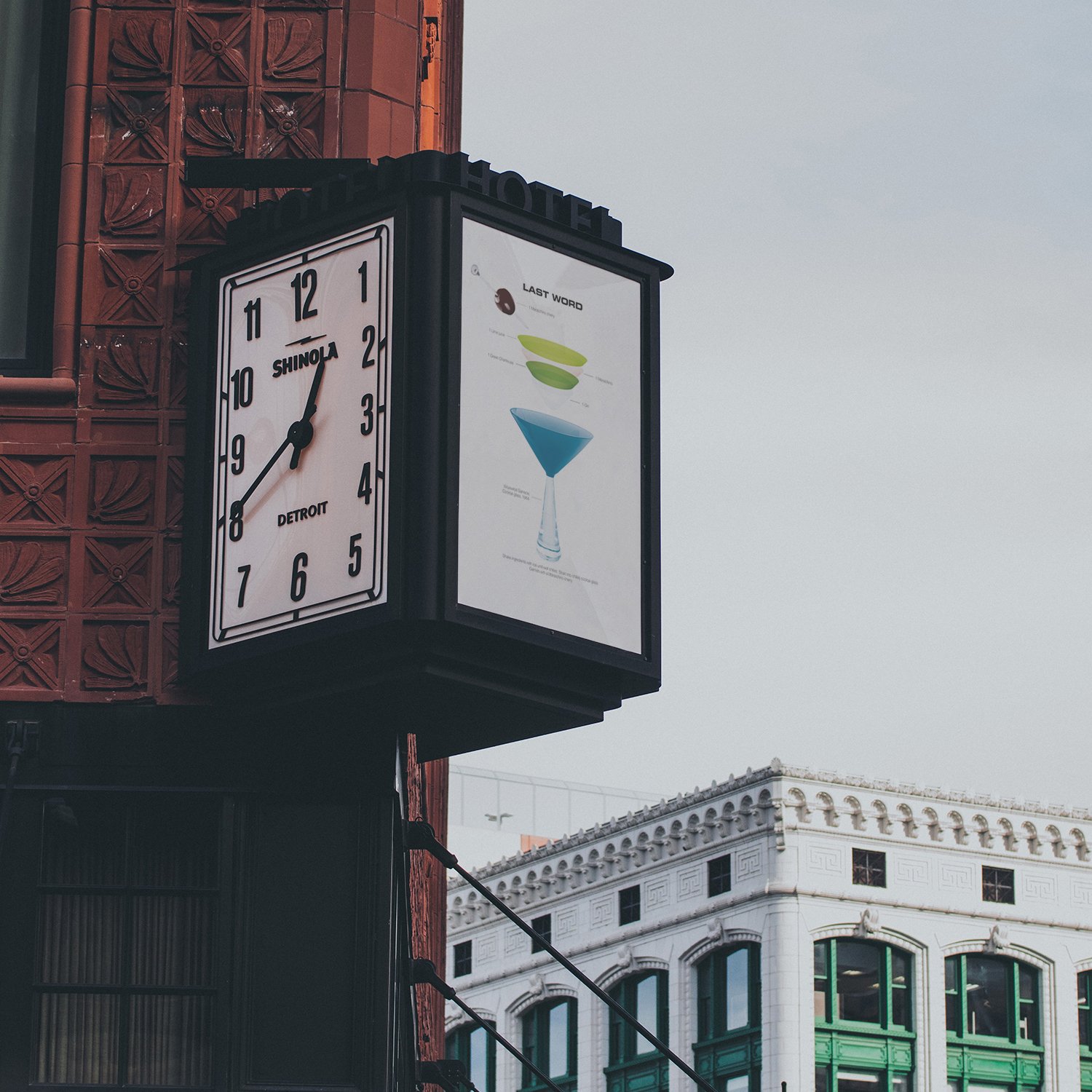
last word
In the early 1900s the president of the Packard Motor Car Company, Henry Bourne Joy, thought that his likes in the booming automobile industry ought to have a proper club instead of meeting in regular bars. He took the already existing Detroit Athletic Club, founded in 1887, and together with 108 prominent Detroiters he hired an accomplished architect to create a stately building in the center of Detroit’s entertainment district. Architect Albert Kahn had recently traveled to Italy and was inspired in his design by Palazzo Borghese and Palazzo Farnese in Rome when he set out to build the six story Clubhouse, which was completed in 1915.
The club featured athletic facilities, pools, restaurants, ball rooms, guest rooms and, of course, a bar and this is where the Last Word cocktail saw the light of day around 1915. The creator is likely to be vaudeville performer Frank Fogarty, also known as the Dublin Ministrel for his Irish anecdotes. Fogarty was performing at Detroit’s Temple Theater at the time, and the name of the cocktail might be an allusion to the monologue with which he closed his act.
The recipe for the Last Word didn’t appear in print until Ted Saucier’s 1951 Bottoms Up where he calls Fogarty “a very fine monologue artist”. After Bottoms Up the cocktail fell out of favor until bartender Murray Stenson at the Zig Zag Café in Seattle found it in the Saucier book in 2004. Stenson made it a hit starting in Seattle and Portland and finally finding its way around the world.
The cocktail glass was designed in 1964 by Polish glass designer Wszewłod Sarnecki.
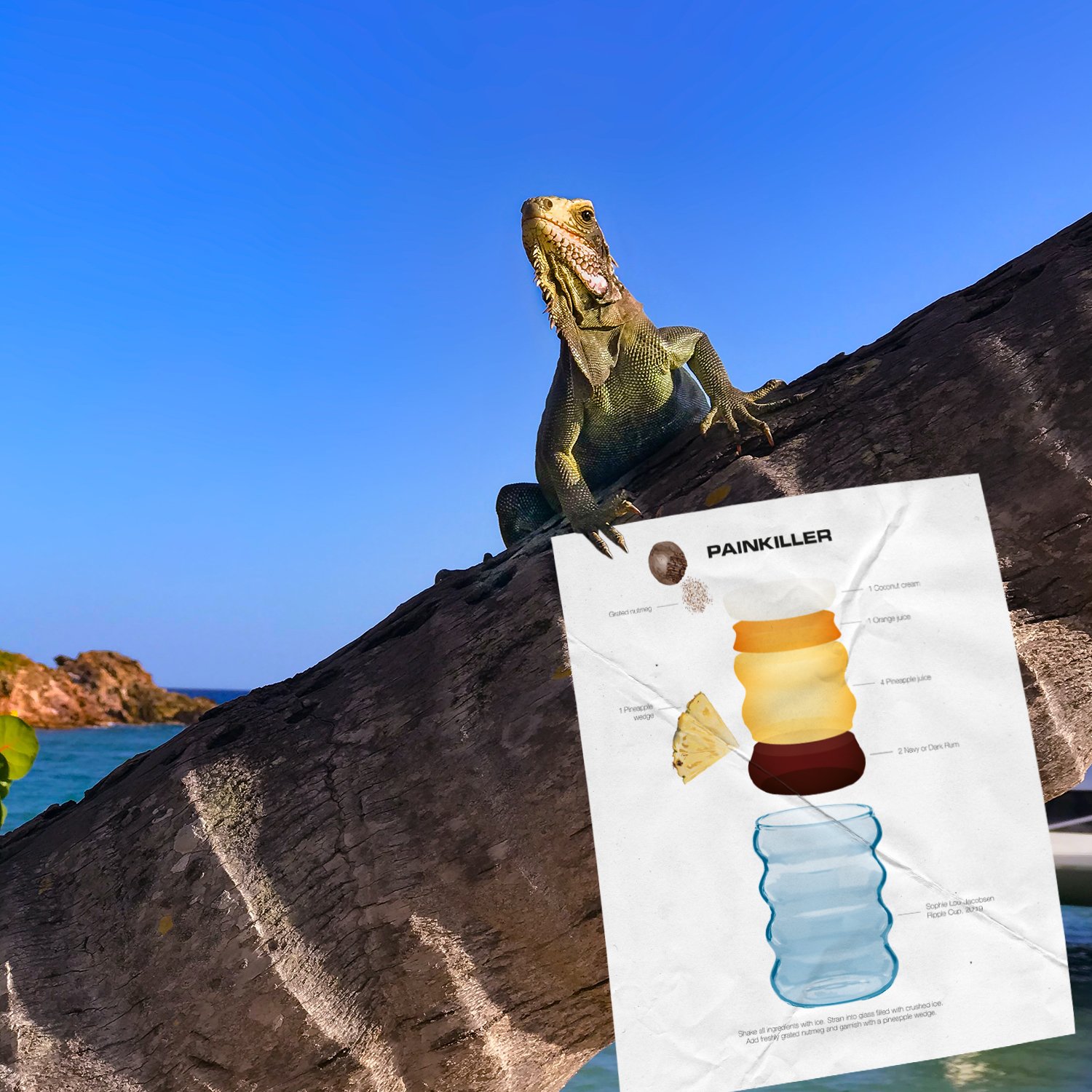
painkiller
The Painkiller is essentially a riff on the Piña Colada, created in Puerto Rico in 1954. The only difference being the addition of orange juice and nutmeg. It was first made some twenty years later by Daphne Henderson, owner of a small bar called the Soggy Dollar Bar at White Bay on the island of Jost Van Dyke in the British Virgin Islands. The bar got its name due to the fact that White Bay lacked a jetty and the patrons usually swam to shore from their boats and ending up with a pocket full of wet bills.
One of the frequent guests enjoying the Painkiller was Charles Tobias, founder of Pusser’s Rum. Even after becoming friends with Daphne Henderson he tried to get her to reveal her secret concoction but she persistently refused. After two years he finally snuck a drink from the bar, brought it home and started experimenting on his own to recreate the drink. The following Sunday he was back and challenged Ms Henderson to a $100 bet and taste test among the ten customers at the bar to settle which version was better. A bet he won.
Originally the drink was made with Cruzan Rum, a product of the US Virgin Islands(Pusser’s Rum Ltd. didn’t start until 1979 and wasn’t around when the Painkiller was created), but in 1989 Charles Tobias managed to file a US trademark on the name and recipe for the Painkiller making it illegal to call it a Painkiller if it’s not made with Tobias’sown Pusser’s Rum. In 2011 Pusser’s Rum even took a New York Tiki bar named Painkillerto court both for using the trademarked name and for serving Painkillers made with rum other than Pusser’s. This in turn led to bartenders across the US to boycott Pusser’s.
The glass, called Ripple Cup, was designed in 2019 by French-American designer Sophie Lou Jacobsen.
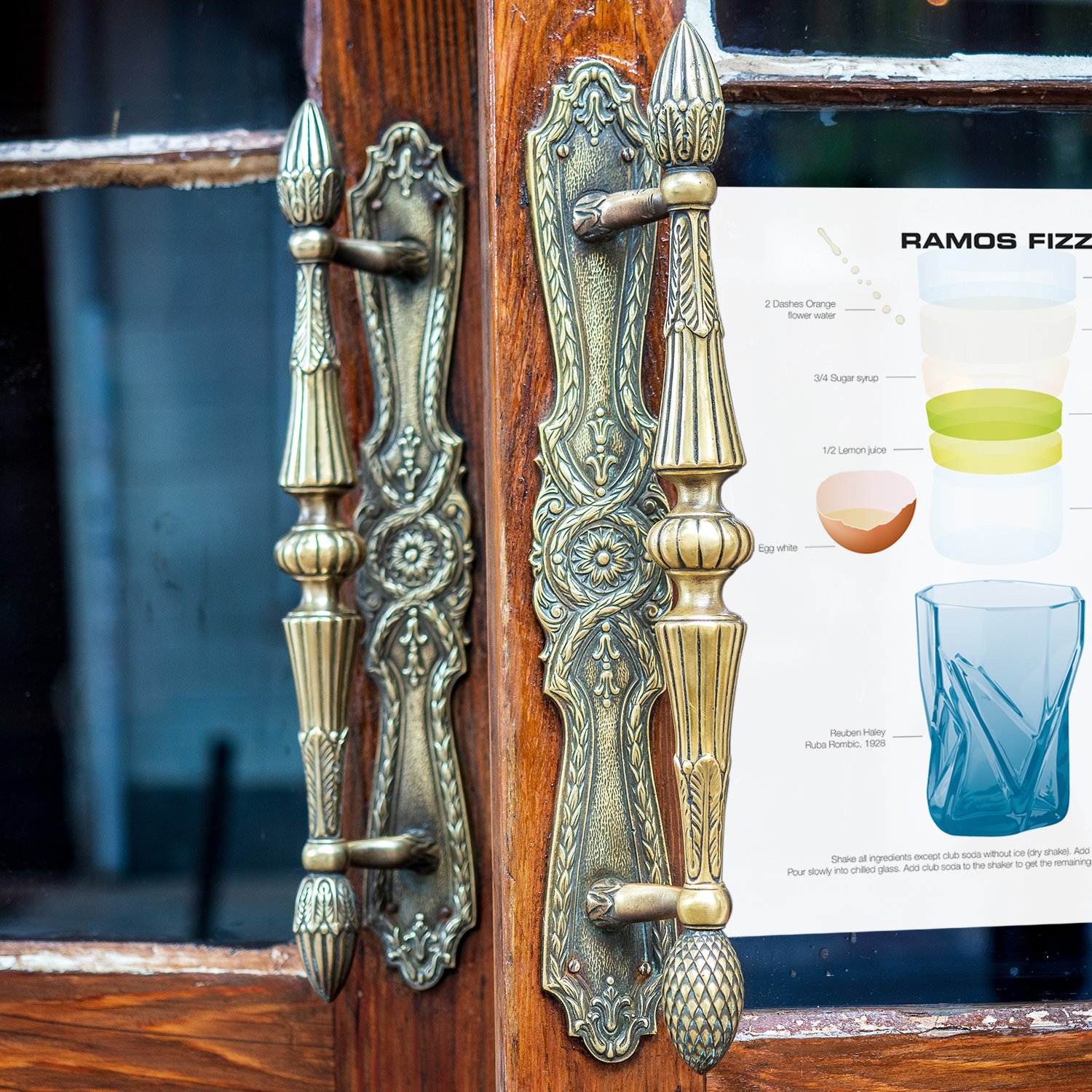
ramos fizz
This iconic New Orleans drink was created by a very unlikely bar owner. Mr. Henry C. Ramos was born in Indiana but started his career in a beer saloon in Baton Rouge. After some years he decided to buy a bar in New Orleans together with his brother and in 1887 they bought the Imperial Cabinet on Gravier Street. This was where Henry, or Carl to his friends, created the Ramos Fizz in 1888, originally the New Orleans Fizz.
The reason Mr. Ramos was such an unlikely bar owner was that he was a teetotaler and absolutely despised drunkenness. Everyday he walked around his bar talking to the customers to check their level of tipsiness and refusing to serve any more cocktails to intoxicated guests. To make absolutely sure that the Imperial Cabinet stayed a respectable establishment he only accepted the most well-behaved customers. For the same reason he closed the bar every evening at eight o’clock and kept the bar open for a mere two hours on Sundays afternoons and this only after he was talked into it.
Mr. Ramos also had strict rules for how his Ramos Fizz was made stating that it should be shaken for no less than 12 minutes. Since the drink was an instant success he had to keep 20 “shaker boys” making the Ramos Fizz on staff at any given time and even more during Mardi Gras. On October 27, 1919 the last Ramos Fizz was served and the doors of the Imperial Cabinet were closed due to Prohibition, something Mr. Ramos, as a teetotaler fully supported. The recipe remained a secret until he finally revealed it to a reporter from New Orleans Item-Tribune just days before his passing in 1928.
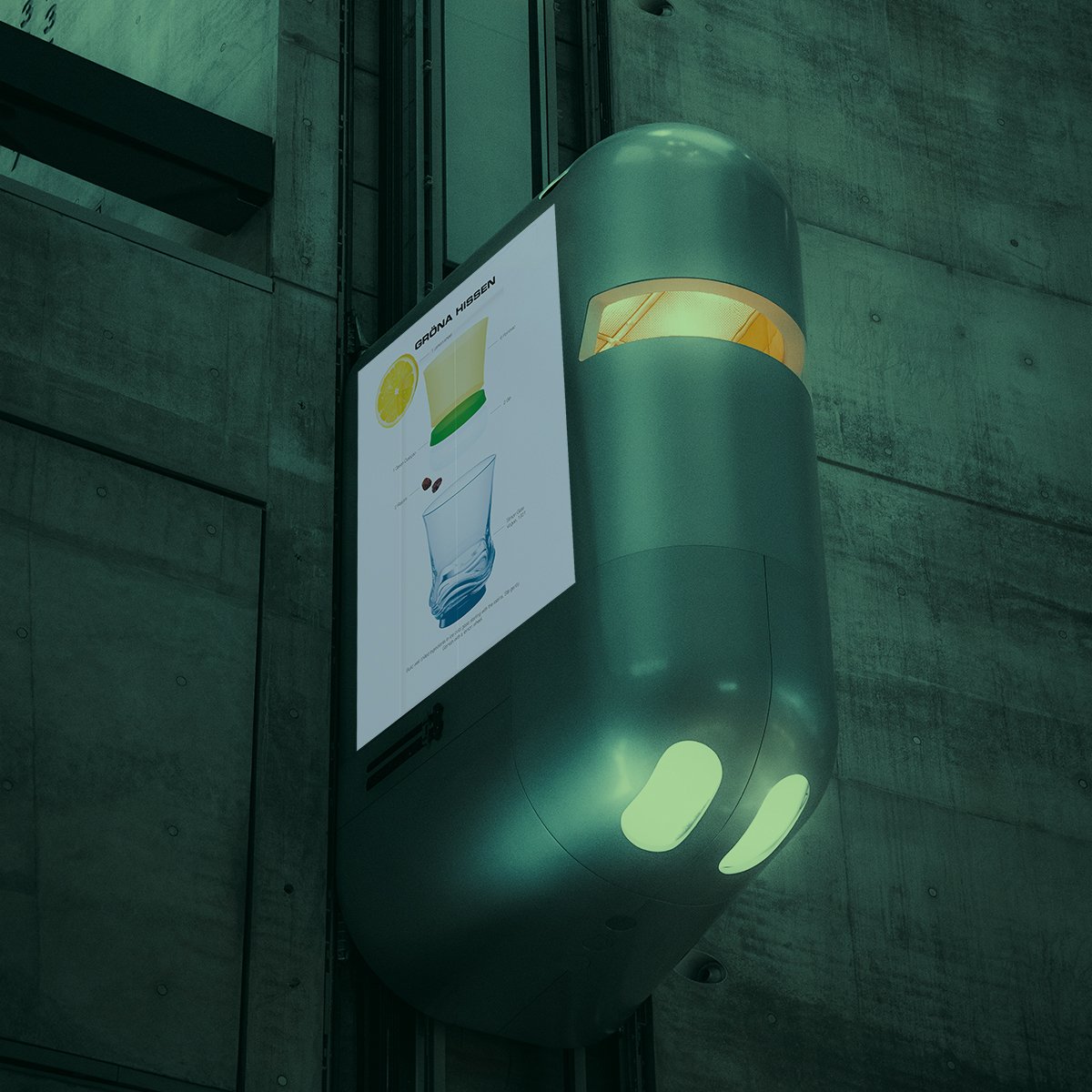
gröna hissen/the green elevator
The history of this very Swedish drink actually started, in a very roundabout way, with an American play called “Fair and Warmer” written in 1915 by American playwright Avery Hopwood. In 1921 the play found its way to Stockholm and the title was changed to “Gröna Hissen” (“The Green Elevator”). The lead in this popular production was played by Swedish actor Gösta Ekman and since cocktails was a big part of the play it didn’t take long until a cocktail was made in honor of the play and the beloved Gösta Ekman.
In 1944 the play was adapted to the cinema where the leads were played by Sickan Carlsson and Max Hansen giving the drink an even further boost.
The drink itself is a bit gimmicky with three raisins being added just to travel up and down thanks to the carbonation in the Champis or Pommac, two brands of a very Swedish soda originating in 1910 and 1919 respectively. This type of soda was first marketed as Champagnedricka (Champagne Soda) and was introduced to be a non alcoholic but yet sophisticated substitute for Champagne even though it was a whole of a lot sweeter. The name Pommac was taken from pomme, French for apple being a main ingredient, and Cognac, supposedly added to create a fuller bodied drink.
The Pommac brand was early to adopt marketing and PR strategies. At the Jubilee Exhibition in Gothenburg 1923 the just four year old company arranged an 11 meter wide Pommac tower serving the soda to half a million visitors. During the 1940s Pommac had famous Swedish artists make Pommac ads, much the same way as Absolut Vodka did decades later. Among these artists were Isaak Grünewald, Stellan Mörner and Sven X:et Erixon.
The glass called Vogue was designed by the Swedish designer Simon Gate in 1931.
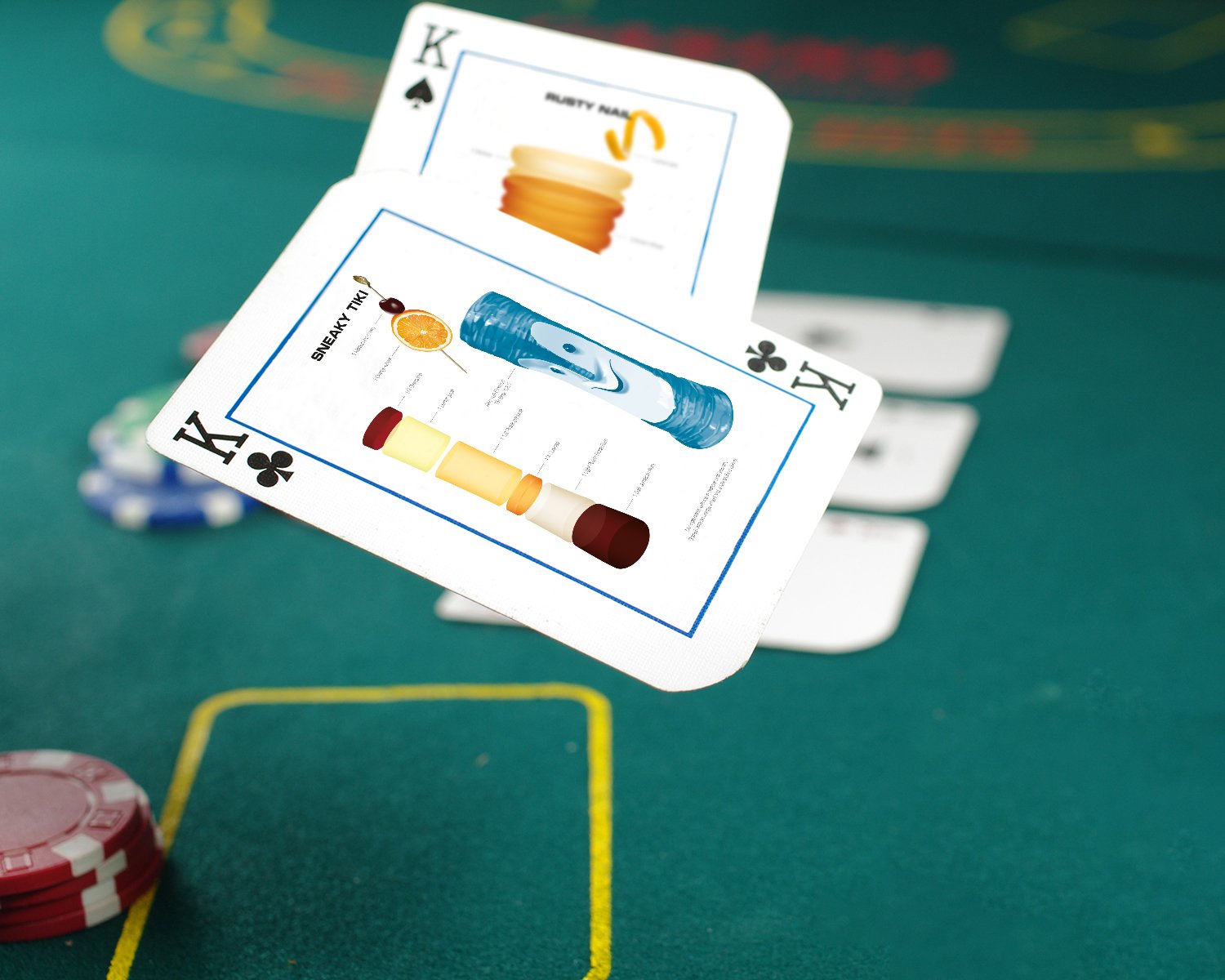
sneaky tiki
This is a tiki drink that wasn’t created by one of the tiki bar giants, Trader Vic or Don the Beachcomber. It was created either at the Wheel Bar at Harvey’s Casino Resort in Lake Tahoe or at Tiki Bob’s in San Francisco.
Harvey’s first opened right after WWII by gambling pioneer Harvey Gross. It started small with just six slot machines and eventually grew to a casino empire. In fact, it was the very first casino in Lake Tahoe, right at the border between Nevada and California.
Even though the Sneaky Tiki is fairly well known Harvey’s is probably more famous for a very well documented extortion attempt in 1980 when a disgruntled casino guest made a highly sophisticated boobytrapped bomb that he placed in the casino. The extortionist wanted to get $3 million from mr Gross after having lost $750,000 gambling. Harvey Gross refused to pay a dime and while the bomb squad tried to disarm the bomb, the 1,000 pounds of dynamite blew a five story hole in the building costing $18 million in repairs but luckily no lives.
Another possible creator of the Sneaky Tiki was “Sneaky” Bob Bryant. He worked in San Francisco as a bar manager for Trader Vic, who taught him the tricks of the trade. After a falling out with Victor Bergeron himself “Sneaky” Bob left and in 1955 he started his own tiki bar just down the street. A bar he named Tiki Bob’s. Decorated with Polynesian and Asian artifacts and having the guests welcomed by a 50s style tiki column right outside the entrance mr Bryant made a bar rivaling his former employer. The bar’s signature drink was called the Super Sneaky Tiki. “Sneaky” Bob had the foresight to introduce the tiki mug to his bar, a new concept at the time. The design for Tiki Bob’s logo and Tiki mug was made by Alec Yuill-Thornton, an illustrator who had previously worked with Trader Vic illustrating his book Kitchen Kibitzer. Being one of the first Tiki mugs it is highly sought after by collectors.
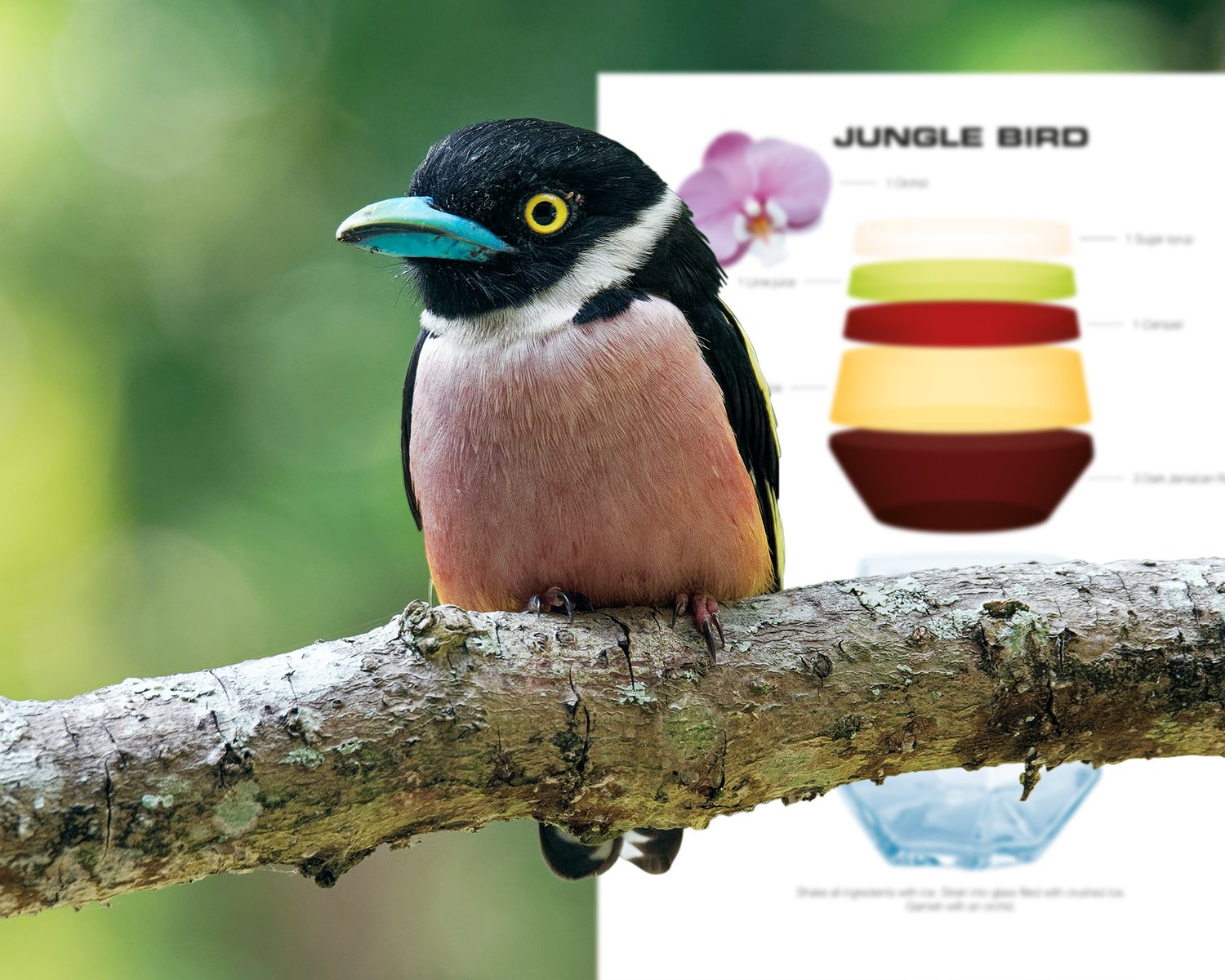
jungle bird
On July 6, 1973 a special occasion was celebrated in Kuala Lumpur, Malaysia. It was the grand opening of the Kuala Lumpur Hilton, the first 5-star hotel in the country. For the occasion the hotel wanted to offer their guests a refreshing tropical drink so the beverage manager, Jeffrey Ong, was set to work. He created a Tiki-style mix of Jamaican dark rum, Campari, lime, pineapple juice and sugar syrup and named it Jungle Bird, a rather fitting name as it was served in the hotels Aviary Bar. The bar featured a glass panel overlooking an aviary next to the swimming pool, hence the name. Originally the cocktail was served in a bird shaped ceramic mug and was sipped from an opening in the tail.
The drink has kept its popularity but it took many years before it became an international hit, partly thanks to Jeff “Beachbum” Berry’s book “Intoxica” featuring exotic drinks from the golden age of the tiki bar.
When Jeffrey Ong passed away in 2019 the national Malaysian newspaper stated in the obituary that he was “the creator of Malaysia’s only internationally recognized classic cocktail”.
The glass was designed by Dutch designer Lara van der Lugt and is called Radiant.

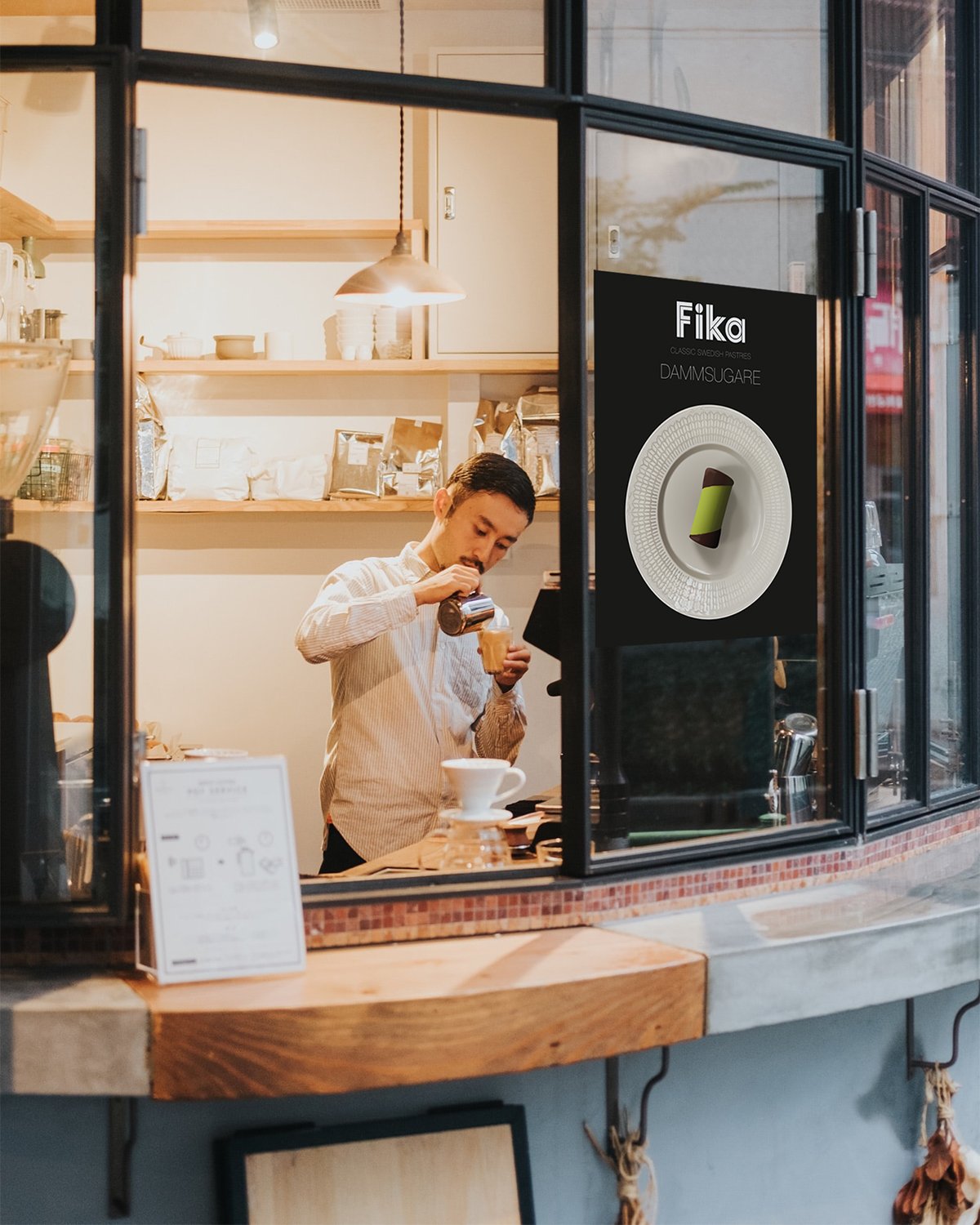
dammsugare/vacuum cleaner
As with a classic cocktail this Swedish pastry has different origin stories. One of the most likely is that it was created around WWII when sugar and butter were being rationed in Sweden due to shortages. To be able to keep their businesses open pastry chefs started making and selling smaller cheaper cookies to their customers. These tended to be brittle and broke easily but instead of throwing them away inventive bakers mixed the crumbs with Swedish punch, made them into rolls and dipped them in chocolate turning them into an even nicer treat. After the war and the end of rationing the new pastries were covered in marzipan.
The reason the pastry is called Dammsugare (vacuum cleaner) are twofold. Not only did the bakers use cookie crumbs, the end result really looks like an old vacuum cleaner.
Similar pastries are found in Denmark where they are called Træstammer (tree trunks) and in Holland where the pastry is called Mergpijpje (marrowbone). At first glance the Dutch version looks just like a Swedish Dammsugare but is actually filled with cake, cream and strawberry jam and contrary to its name it’s supposed to be really nice.
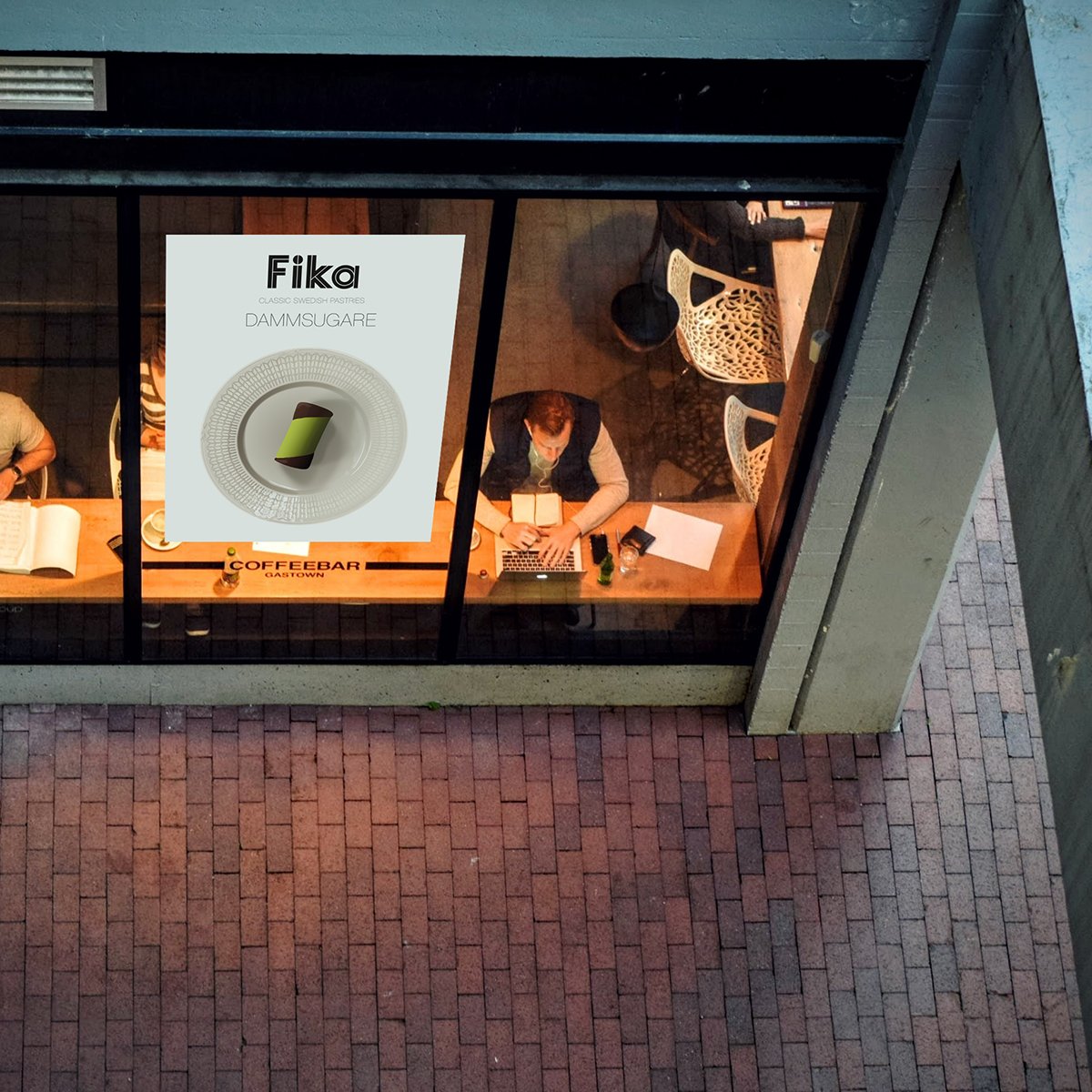
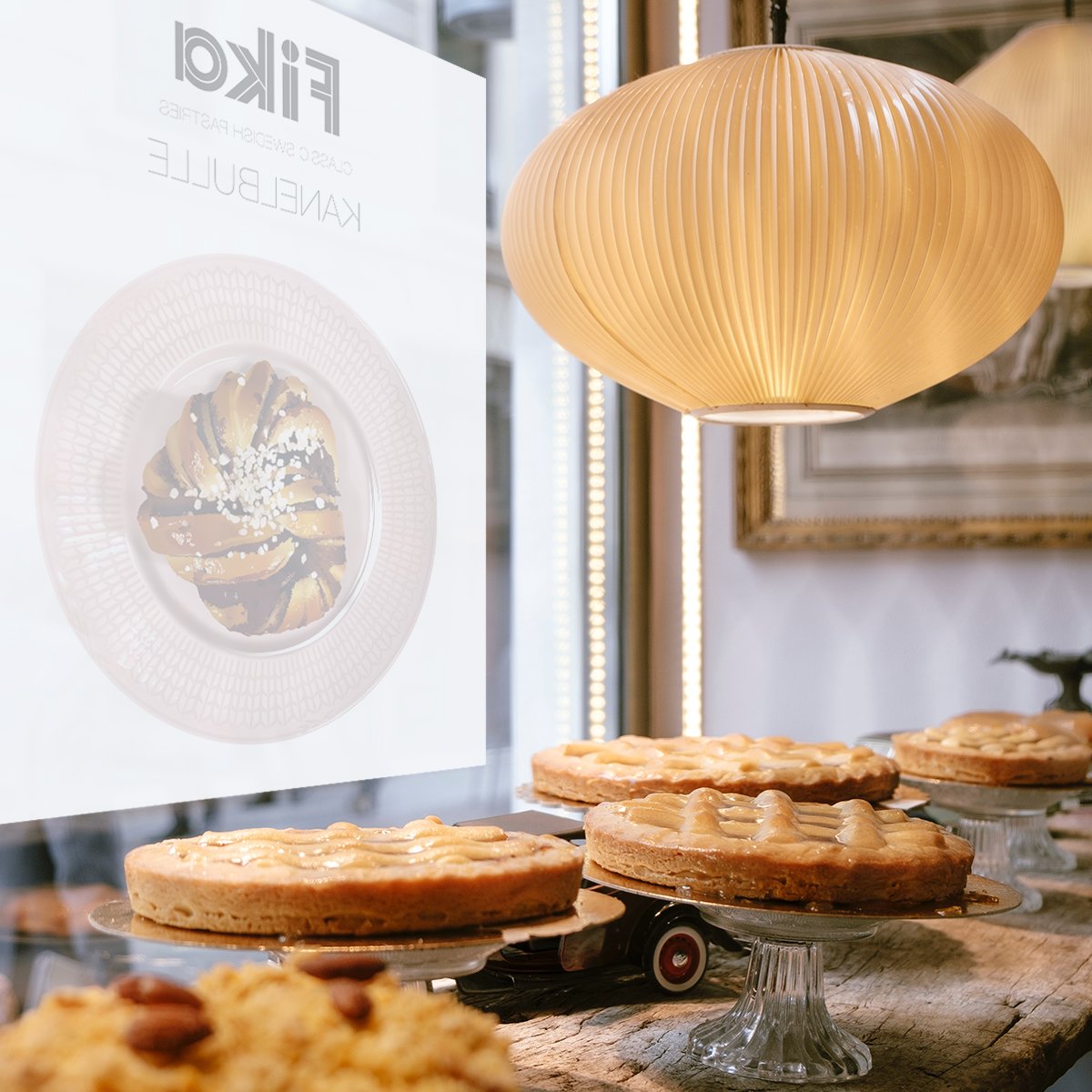
kanelbulle/cinnamon bun
The earliest mention of cinnamon in Sweden was in the 14th century. At the funeral of the father of Saint Bridget of Sweden (heliga Birgitta) in 1328 the guests ate a whopping 1,1 pounds of cinnamon. Probably not in the form of cinnamon buns though.
Another big fan of cinnamon was the Swedish 16th century king Gustav Vasa (best known for uniting Sweden, wearing tights and puffy shorts and having a rather disappointing battle ship named after himself). He primarily used cinnamon for mulled wine.
From the 17th century cinnamon started to be used for baking but Swedes had to wait until the 1920s to have a kanelbulle as we know it today. It wasn’t however until the 1950s that the bun turned into an every day commodity and in the early years of the 1950s you started to find recipes for kanelbulle in cookbooks.
In 1999 the National Cinnamon Bun Day was established in Sweden and since then every 4th of October 7 million cinnamon buns are sold in Sweden, quite a lot considering Sweden has a population of 10.5 million.
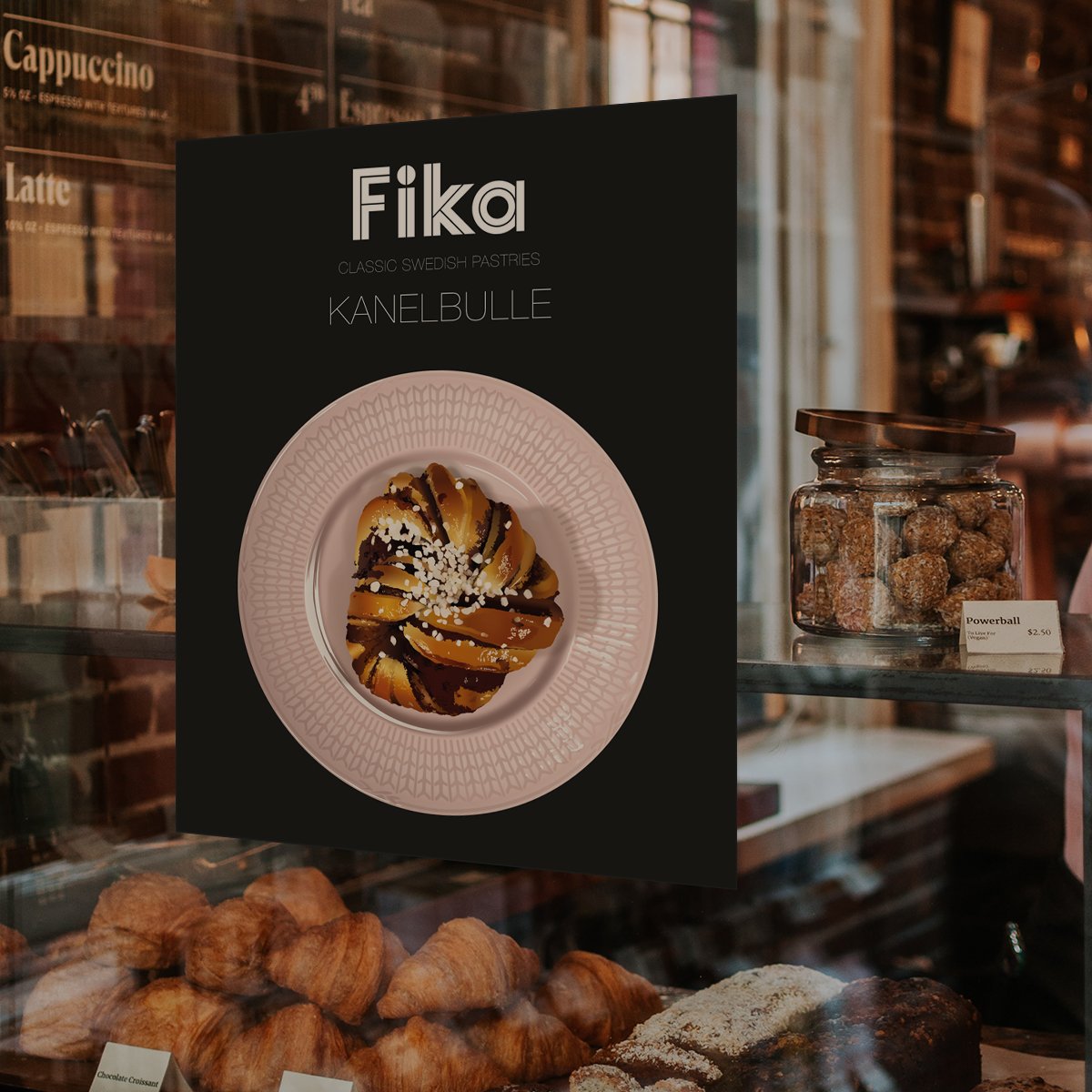
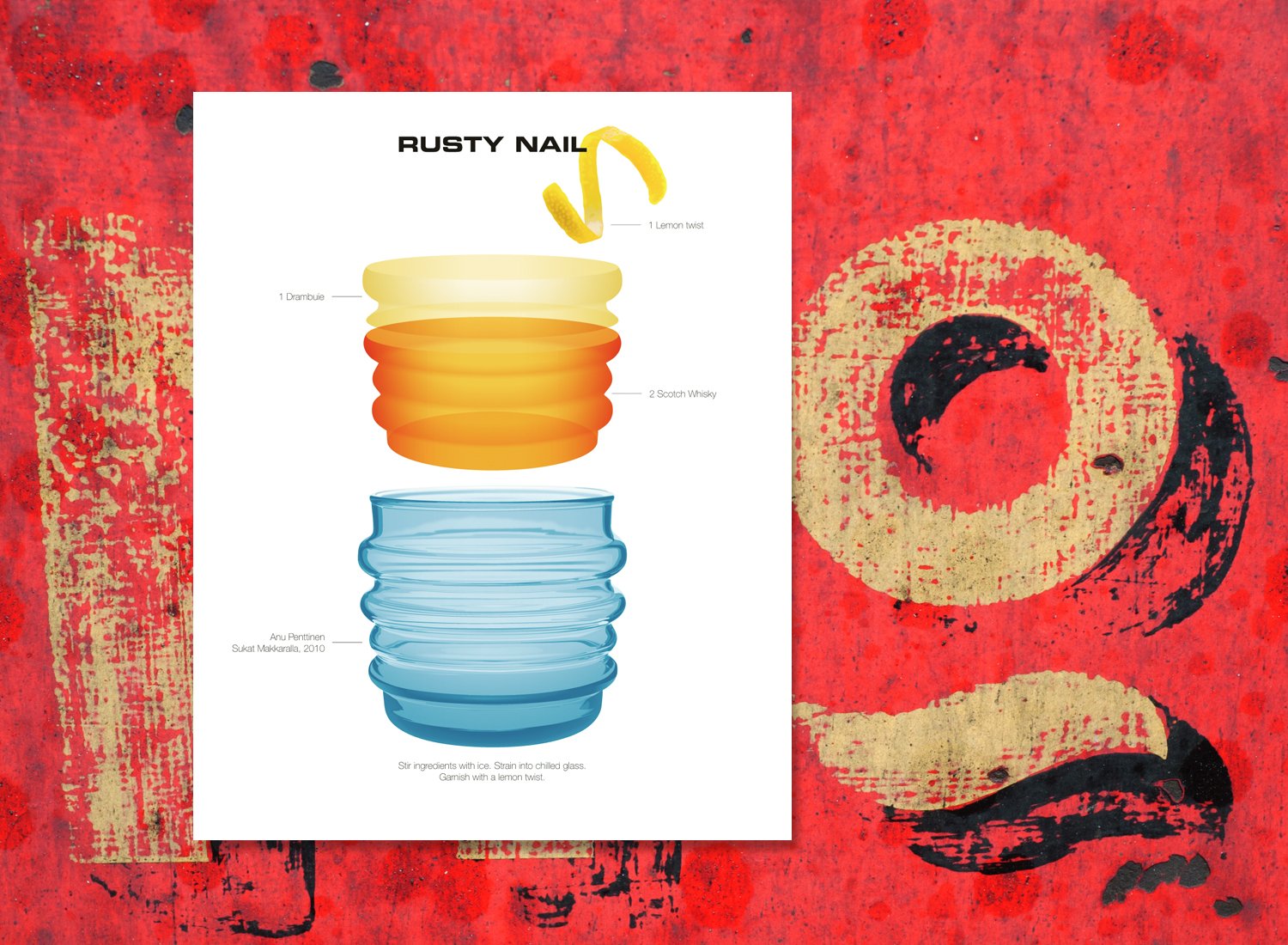
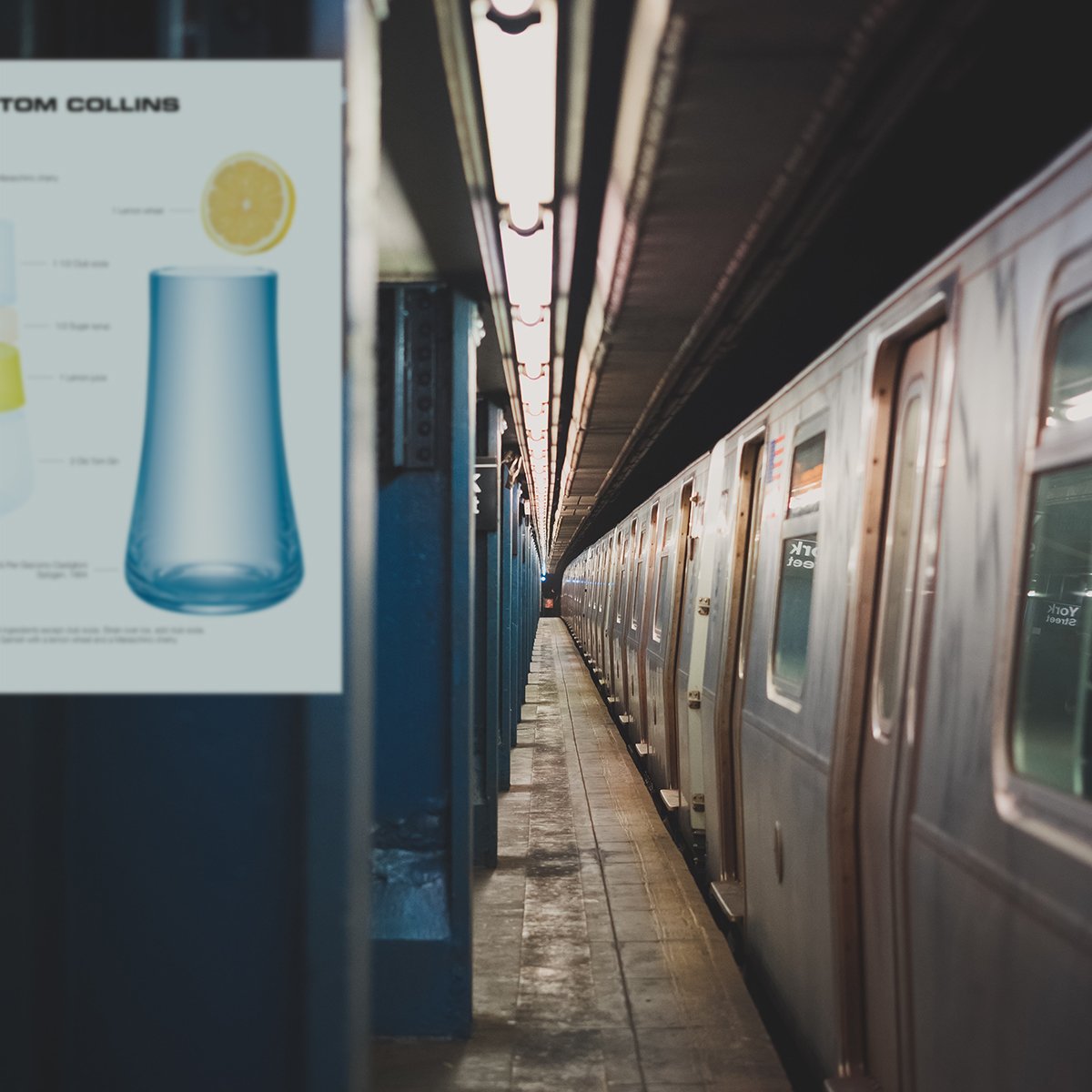
tom collins
The history of Tom Collins might have started as a practical joke. Tom was supposed to be a load and burly man who sat in taverns in New York in the late 1800s badmouthing people. The victims were told by their friends about Mr Collins trying to slander them and were encouraged to find him. However, when going to the tavern asking the bartender for the non existent Tom Collins, they would instead receive the sour cocktail. The prank became known as The Great Tom Collins Hoax of 1874.
This is probably just a good story though. More likely is that the Tom Collins started out as a John Collins, named after the head waiter at Limmer’s Hotel on Conduit Street in London where he worked during the 1870s and 80s. Limmer’s was famous from the early 1800s for being a buzzing place with great drinks. They were especially known fo their gin punch, essentially being the same thing as a Tom Collins. Originally Jenevera.k.a Holland Gin was used in the cocktail but when the customers started preferring the sweeter Old Tom Gin the theory is that they started asking for a Tom Collins rather than a John Collins.
The glass was designed in 1964 by the two brothers Pier Giacomo and Achille Castiglione and is called Splügen.
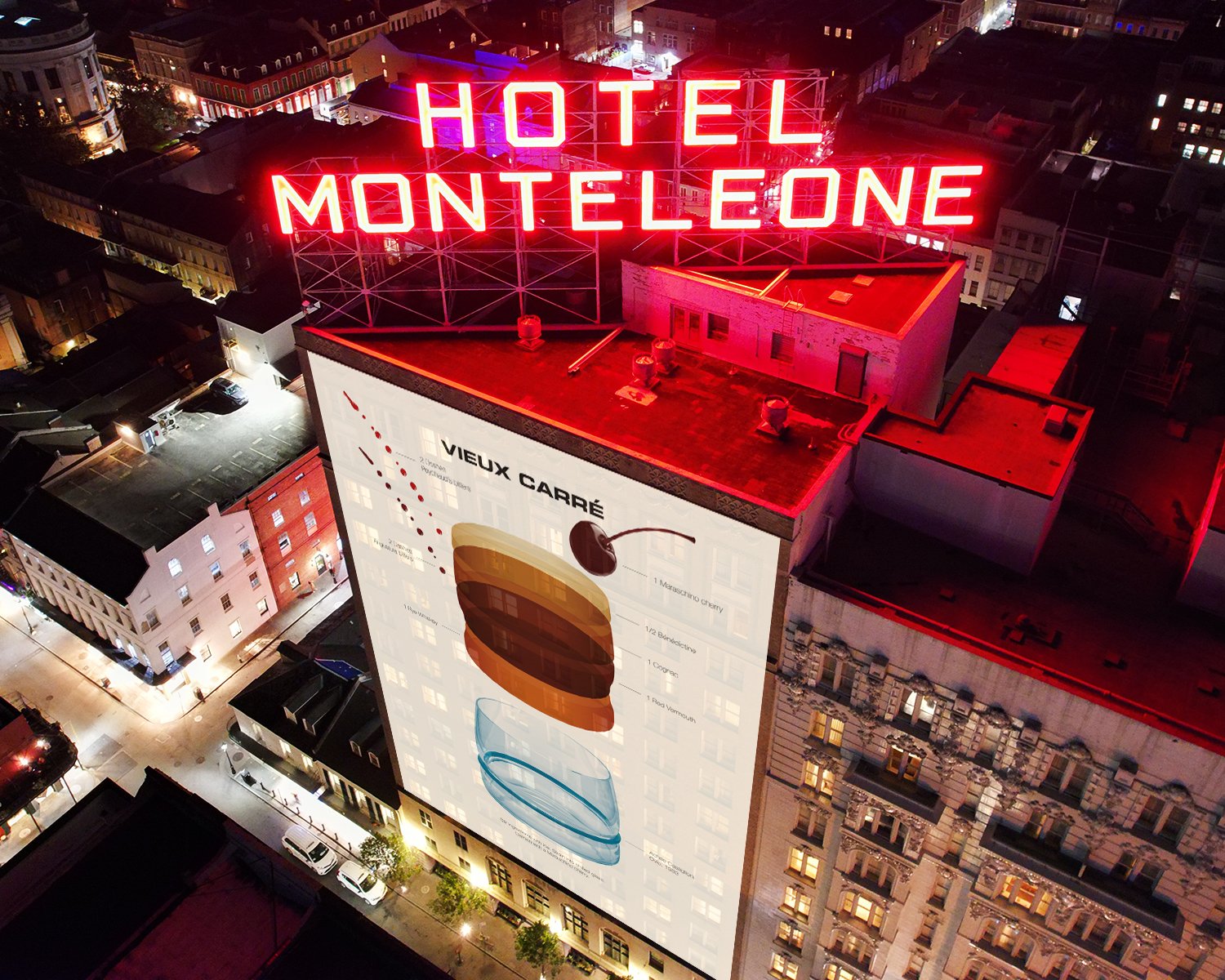
vieux carré
Just like the Hurricane, the Sazerac and the Grasshopper, the Vieux Carré was created in the Big Easy, New Orleans. The name is French for “old square” or “old quarter” being the original name of the New Orleans’s French Quarter but when ordering one in the city of its creation the pronunciation isn’t remotely French. The Creole way of pronouncing it is “Voo car-ray”.
The cocktail was invented in the mid to late 1930s by Walter Bergeron, head bartender at the Carousel Bar in the Hotel Monteleone. (Mr Bergeron is not related to his namesake Victor Bergeron aka Trader Vic). The Hotel Monteleone opened in 1886 when a Sicilian nobleman, Antonio Monteleone, bought the hotel after having settled down in New Orleans in the early 1880s. After five generations the hotel still remains in the family.
The Carousel Bar as you find it today was installed in 1949 and is decorated with paintings of circus animals and is lit up just like a real carousel. But it wouldn’t be a carousel bar if it didn’t twirl so it is rotating but at the smooth pace of 15 minutes per revolution.
The glass called Ovio was designed by Achille Castiglioni in 1983.

the unique circle yacht
The Unique Circle Yacht is a yacht concept designed by Zaha Hadid Architects in 2013 for the Hamburg based shipbuilders Blohm+Voss. The design is informed by “fluid dynamics and underwater ecosystems, with hydrodynamic research shaping the design of the hull”.
The exoskeleton-like exterior is very much in line with the architecture of Hadid and resembles natural underwater structures.
Zaha Hadid (or Dame Zaha Hadid after she was made a Dame Commander of the Order of the British Empire in 2012) was an Iraqi-British architect and designer born in Baghdad in 1950. After studying at the American University in Beirut, Lebanon she went to London to study architecture. In London she met architects Elia Zenghelis and Rem Koolhaas with whom she collaborated before starting her own company Zaha Hadid Architects in 1979.
Her first major built project was the Vitra Fire Station constructed in 1989–93 in Weil am Rhein, Germany. Built project because most of her work in the 1980s were thought to be too radical to be built and Hadid started being known as a paper architect. After the work for Vitra that soon changed and Hadid was finally the sought after architect she deserved to be.
Zaha Hadid was an incredibly decorated architect. She was awarded the Pritzker Prize in 2004 as the first woman, in 2010 and 2011 she was awarded the Stirling Prize for excellence in architecture. In 2014 she won the Design Museum Design of the Year Award and in 2016 she became the first woman to receive the RIBA Gold Medal.
Dame Zaha Hadid unexpectedly passed away in a Miami hospital in 2016 at the age of 65.

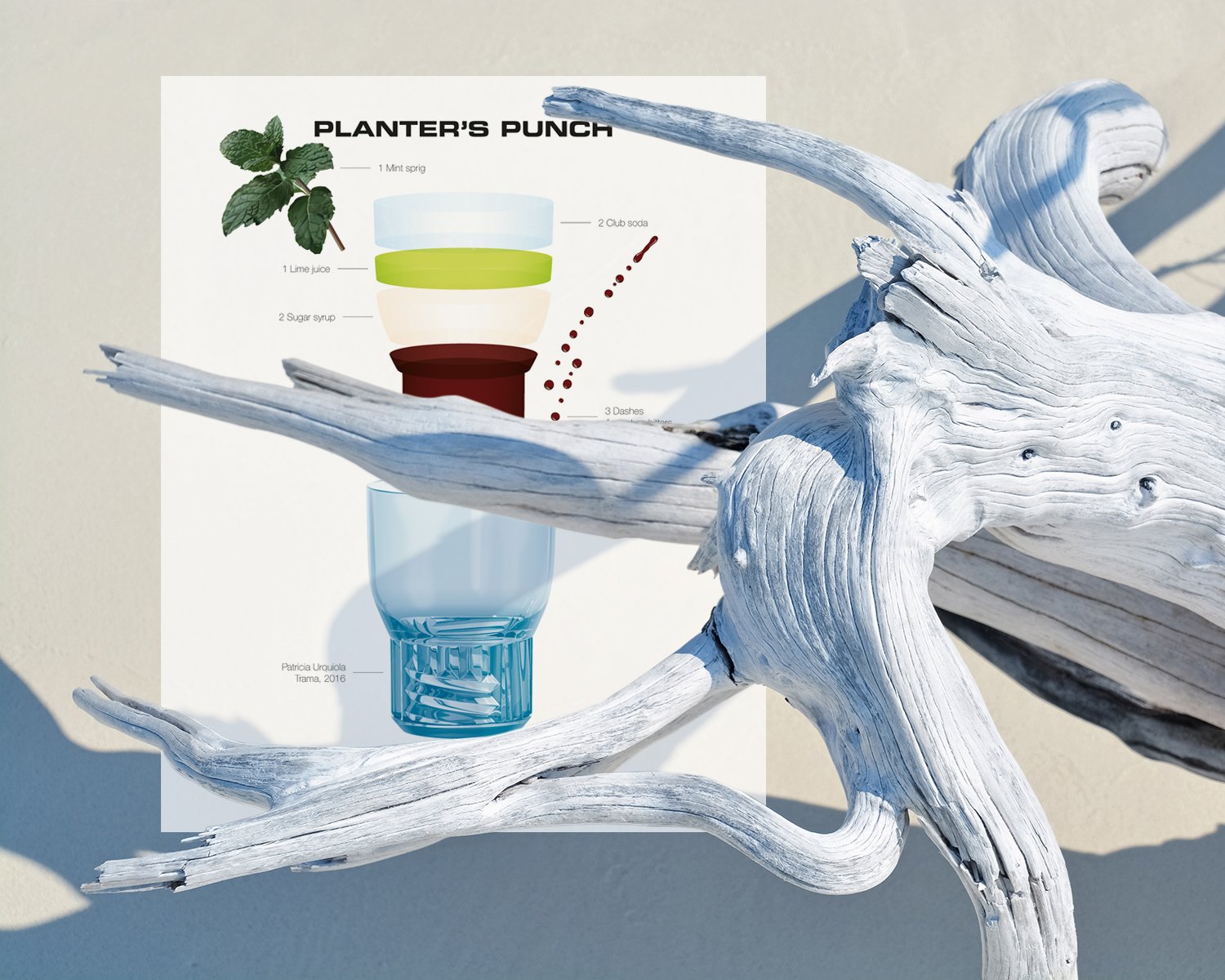
planter's punch
One recipe for a Planter’s Punch never seems to be the same as another. It can be anything from a simple (probably the closest you’ll get to the original) Jamaican rum, lime juice, sugar syrup and water to a fruit punch with added orange juice, pineapple juice, grenadine, bitters and Falernum.
The origin, as with most old cocktails, is uncertain but it seems likely that the Planter’s Punch originated in Jamaica in the late 18th-century as a way to stay cool while working under the Caribbean sun.
The drink first appeared in print in 1878 in a London magazine called Fun. This recipe was more of a verse than a modern day recipe and called for one part lemon juice, two parts sugar, three parts rum and four parts water. You will often hear that the Planter’s Punch was created by Myers’s Rum company in Jamaica but if the recipe really was published in 1878 that would have been difficult since Myers didn’t start their operations until 1879.
The Planter’s Punch was incredibly popular until Prohibition when it fell out of fashion. It did however come back in a big way after WWII when Donn the Beachcomber and Trader Vic both put it on their menus, adding som ingredients and turning it into a Tiki drink.
The glass was designed by Patricia Urquiola in 2016 and is called Trama.

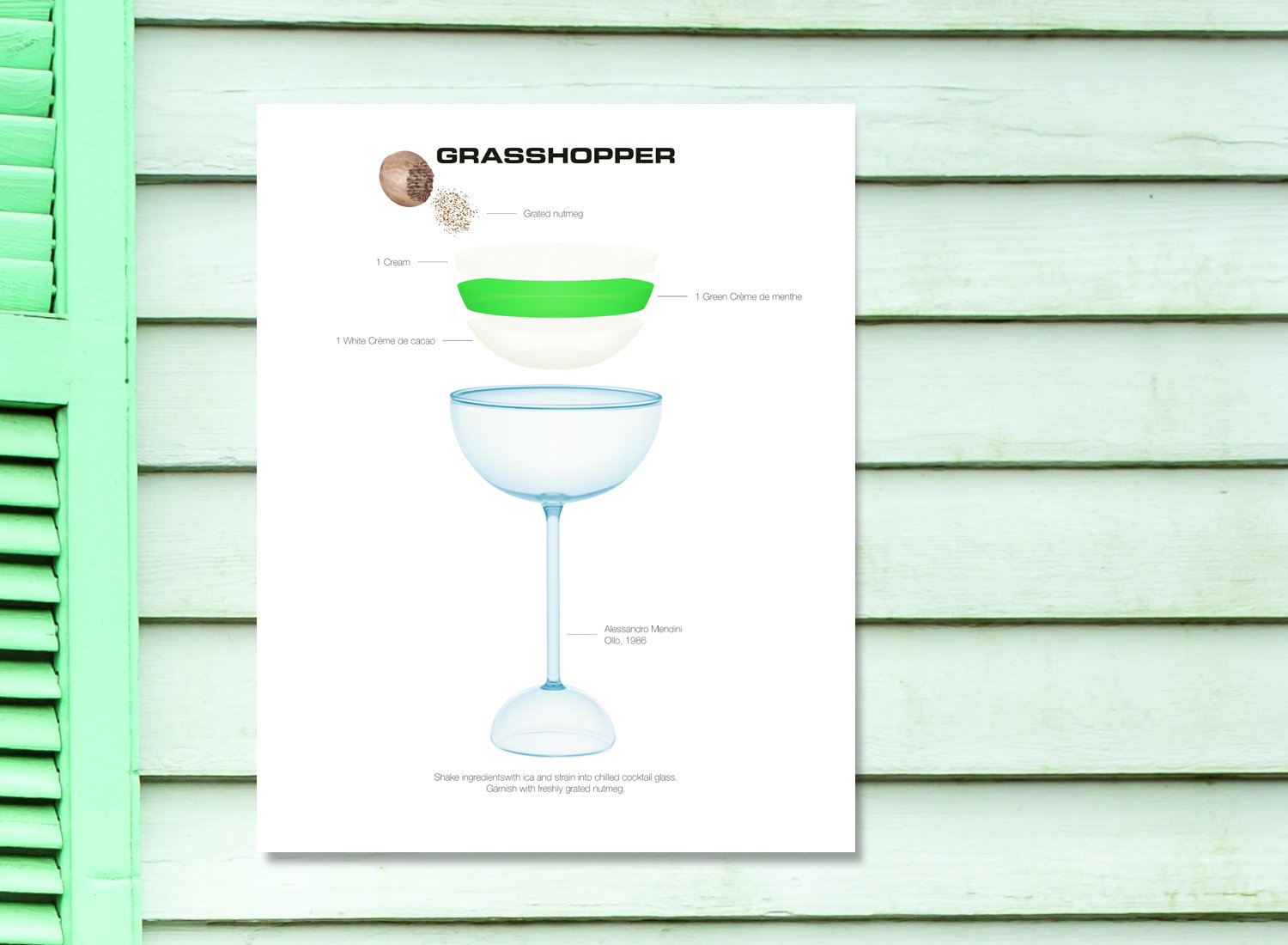
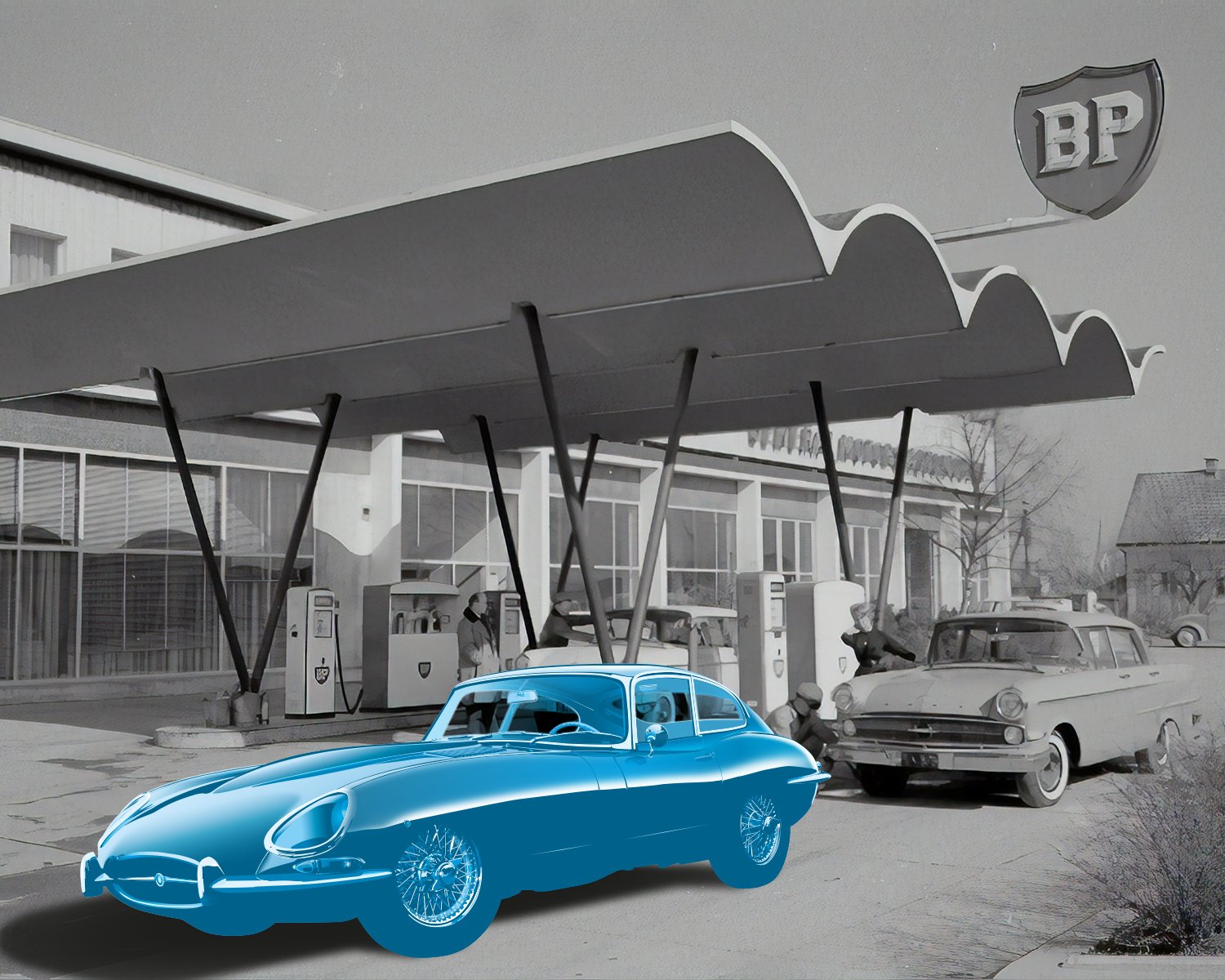
jaguar e-type
The story of the Jaguar E-Type starts in 1957 when Malcolm Sayer made a prototype called E1A.
Malcolm Sayer was an aircraft engineer turned automotive aerodynamist. Mr Sayer spent twenty years working at Jaguar Cars and developed not only the E1A and the E-Type, he also made the early style guidelines for the Jaguar X-JS. Thanks to his career as an aircraft engineer he was one of the first apply streamlined aircraft aerodynamics to cars.
The E1A was slightly smaller than the E-Type with a 2.4-liter engine compared to the final 3.8-liter. The E1A was designed with an independent rear suspension, a feature so great Jaguar used it in its models for 4 decades.
Before the launch in 1961 the car had been refined and made larger due to the importance of the American market.
When the Jaguar E-Type was launched at the Geneva Auto Salon in 1961 it completely stole the show. Even Enzo Ferrari called it the most beautiful car in the world. It wasn’t only the design that made the car so popular, it retailed for a mere £2097 for the Roadster and £2196 for the Coupe, half price compared to its competitors. So the fact that the promised top speed of 150 mph for the standard production cars was a bit of a stretch didn’t seem to bother the customers.
The Jaguar E-Type was continually developed and updated and stayed in production until 1975 when it was replaced by the XJ-S.
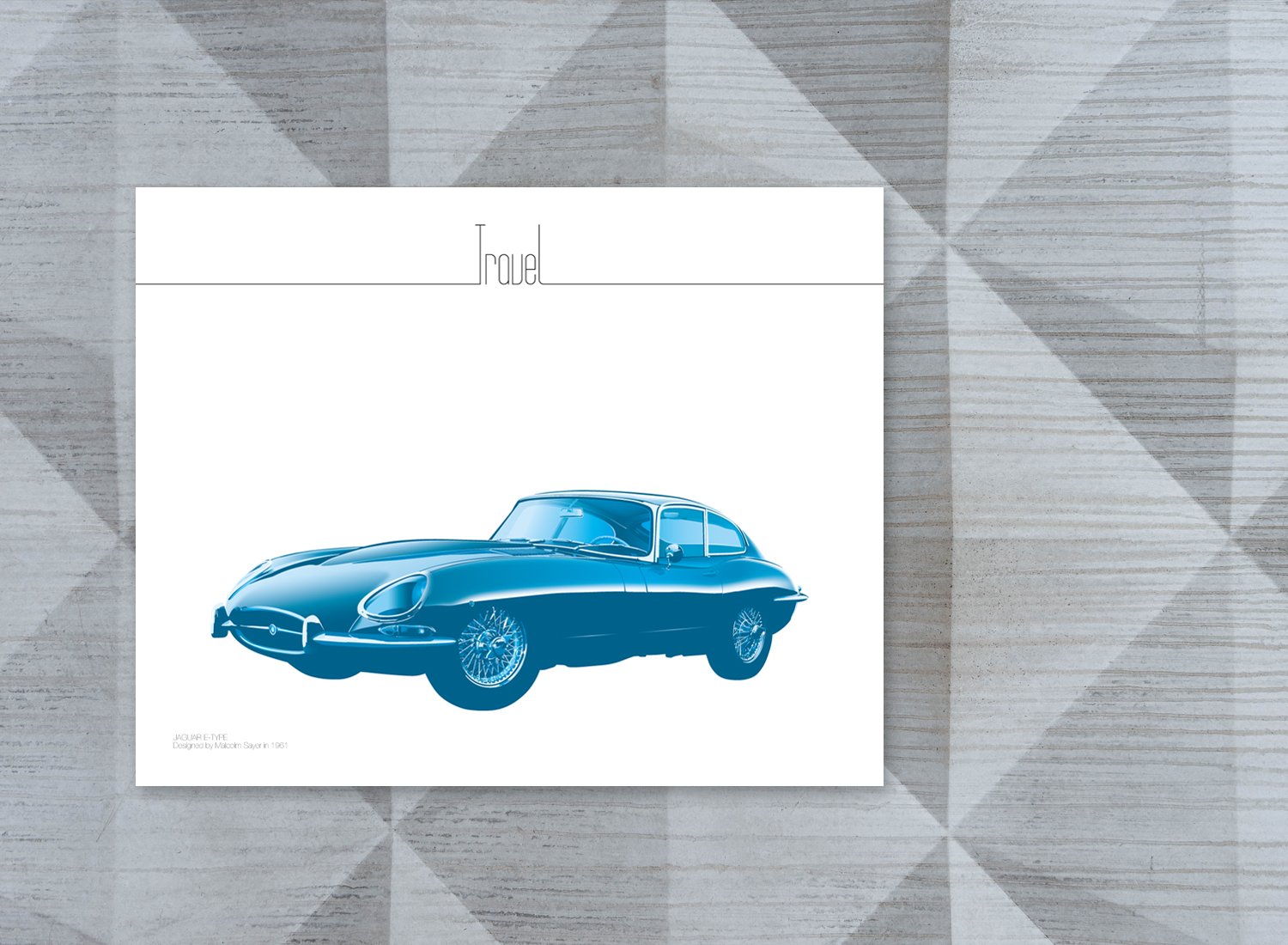
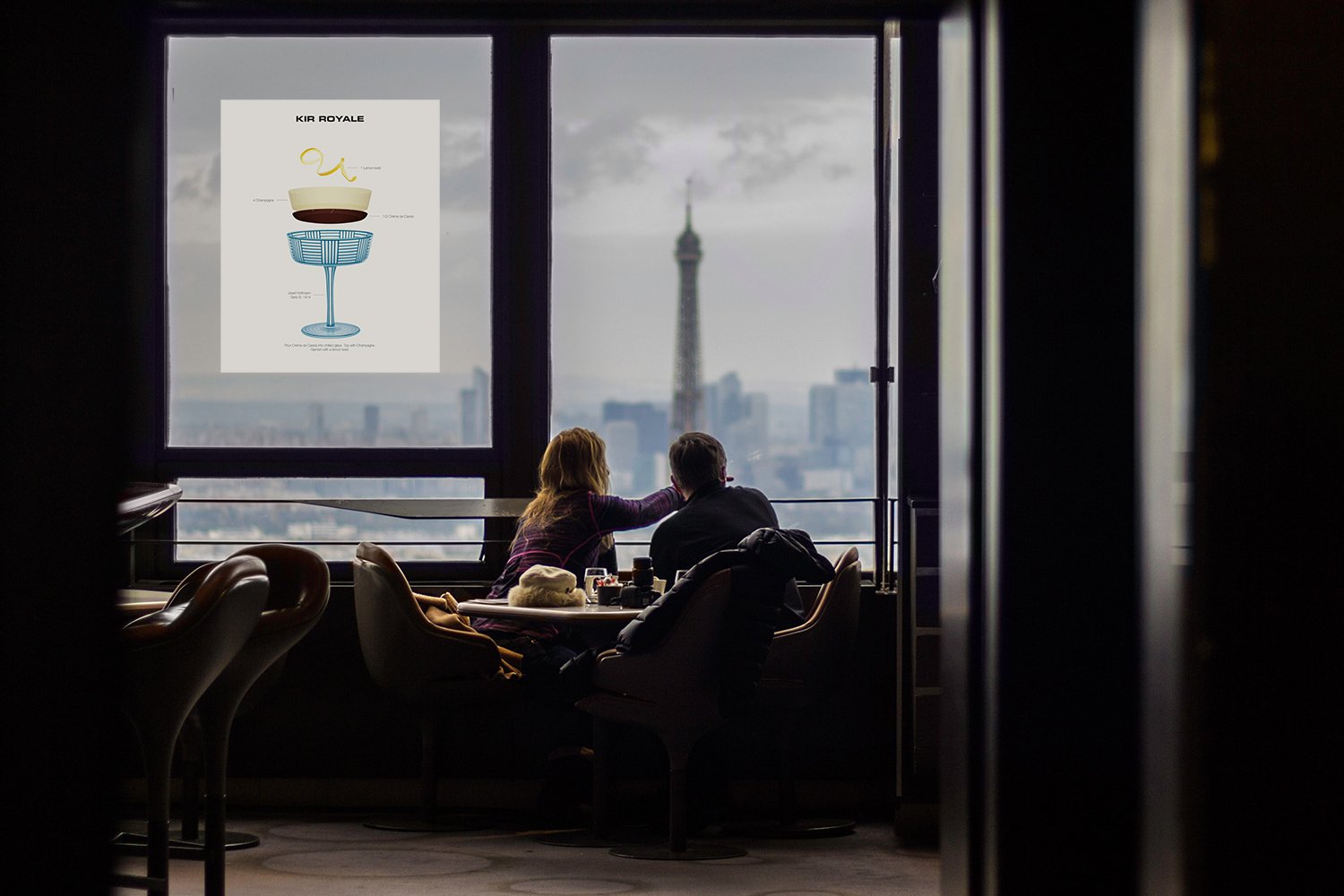
kir royale
The birth of the Kir, originally just called a Cassis Blanc, is said to be at a bar in Dijon called Café George when a waiter named Faivre got the idea to mix white wine with the black currant liqueur Crème de Cassis. This was in 1904.
Years later the drink got its name after Canon Félix Kir, a Catholic priest and war hero working for the French resistance in Nazi occupied Dijon. When the Nazis marched into Dijon many officials fled. Canon Félix Kir chose to stay and helped more than 4,000 prisoners of war to escape from a nearby camp.
The Nazi forces are said to have confiscated all red Burgundy wines and to spite them Mr Kir mixed Crème de Cassis and dry white Bourgogne Aligoté wine to mimic the color of the Burgundy reds.
In 1945 Mr Kir became a member of the French Parliament and the mayor of Dijon, a position he held until his death in 1968. During his time as a mayor he worked hard to promote regional products like Burgundy wines and Crème de Cassis and the drink Cassis Blanc quickly became known as Kir.
After the war Canon Félix Kir was awarded the Ordre national de la Légion d’honneur, the highest civilian and military order of merit for his brave work with the French resistance.
Champagne is often used instead of a Bourgogne Aligoté and this version of the Kir is called Kir Royale.
The glass was designed in 1914, 10 years after the creation of the Kir, and is called Serie B. It was designed by the Austrian architect and designer Josef Hoffmann.
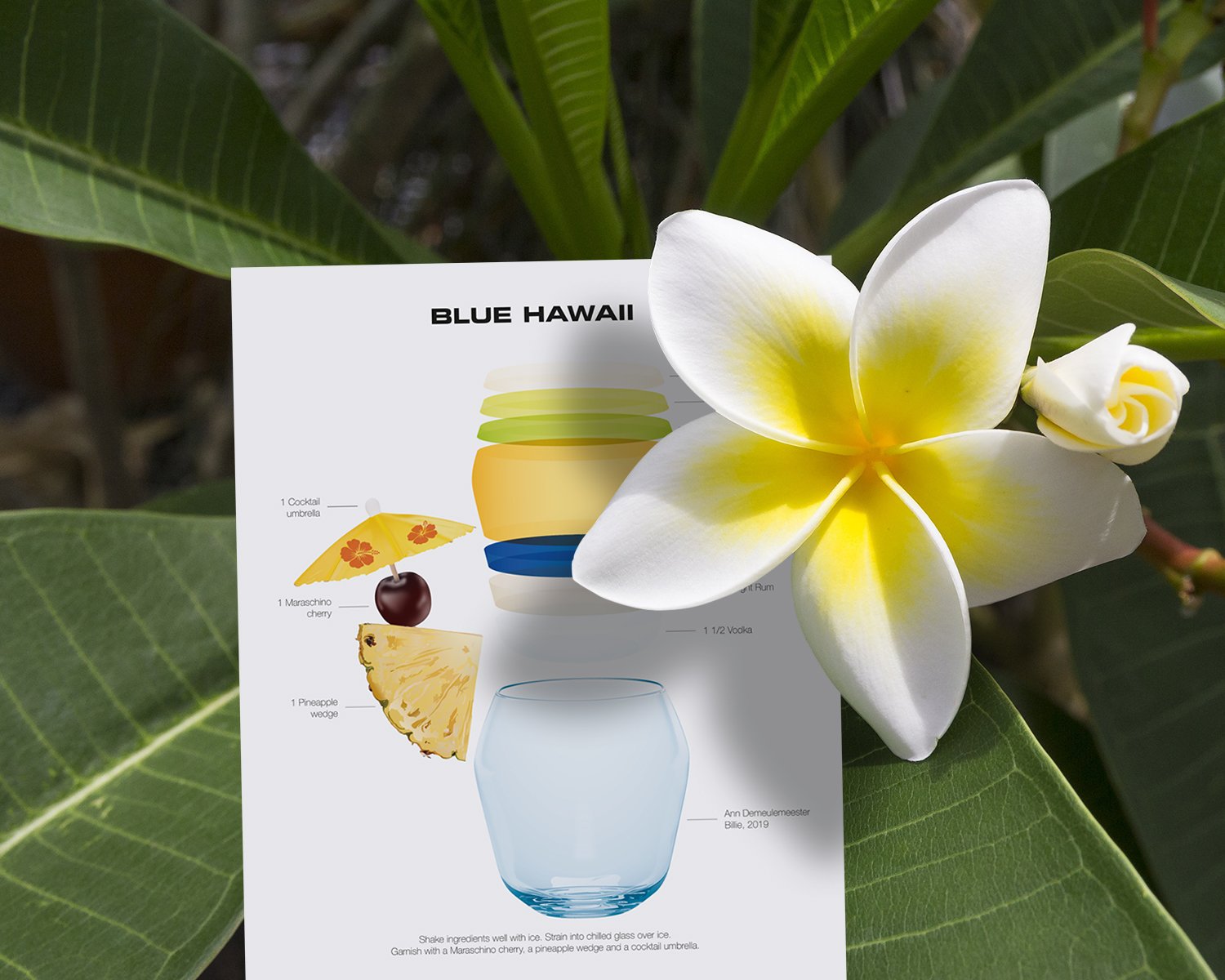
blue hawaii
In 1957 a representative of the Bols distillery walked into the bar at the Kaiser Hawaiian Village (now the Hilton Hawaiian Village Waikiki Resort) in Honolulu. Aiming to boost his sales he asked the bartender Harry K. Yee to create a cocktail featuring Bols Blue Curaçao. Mr Yee tried several variations before settling on vodka, rum, blue curaçao, pineapple juice and sweet-and-sour mix.
Mr Yee named the drink after the classic Bing Crosby song Blue Hawaii from his 1937 film Waikiki Wedding, putting Hawaii on the cocktail map two years before gaining statehood.
Even though Mr Yee’s recipe calls for sweet-and-sour mix the drink is vastly improved by making your own by mixing equal parts lime juice, lemon juice and sugar syrup.
The glass called Billie was designed by the Belgian fashion designer Ann Demeulemeester in 2019. Ann Demeulemeester is one of the famous Antwerp Six in the fashion industry.
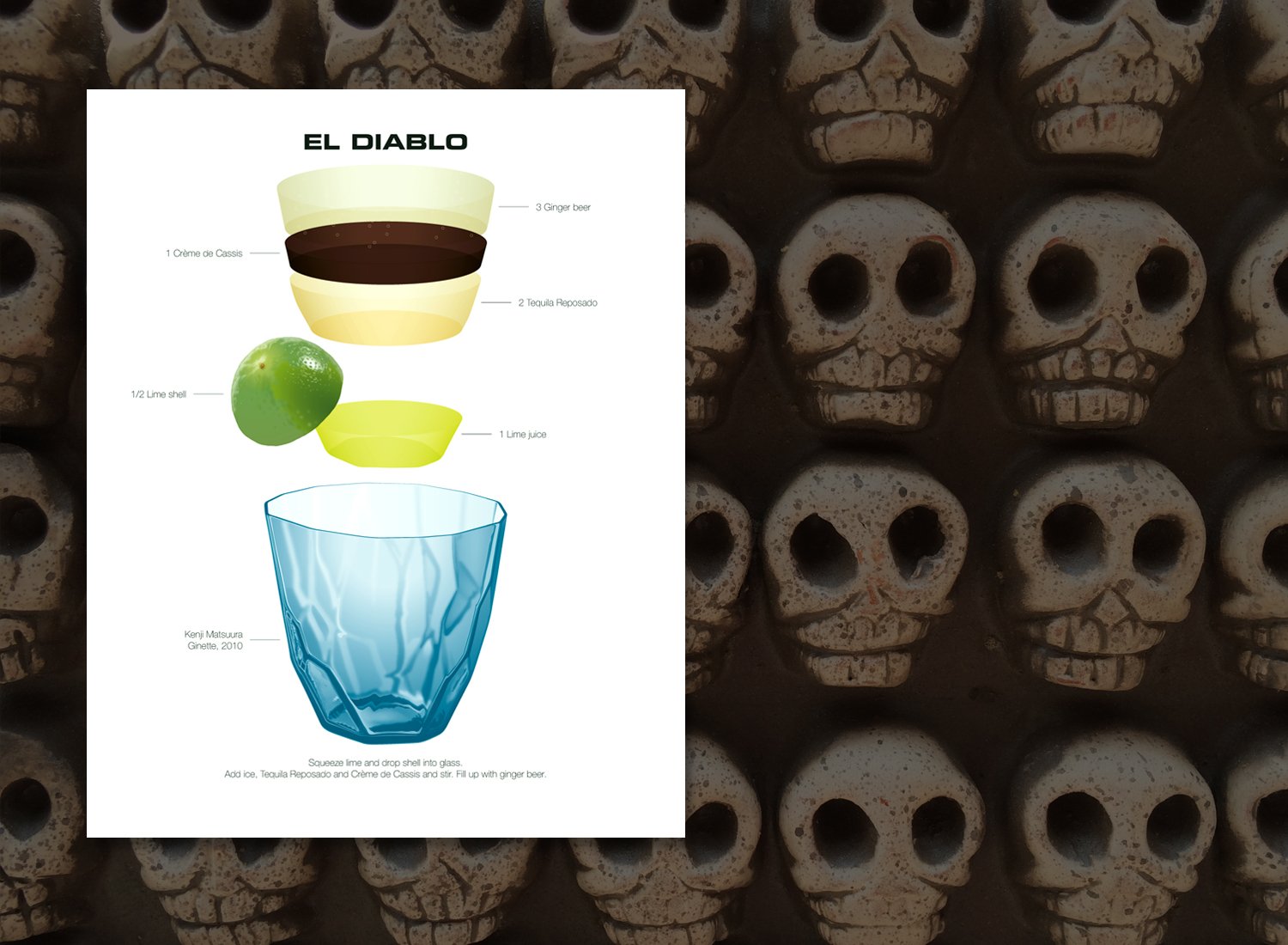

zombie
The Zombie was created in 1934 by rum connoisseur and tiki pioneer Ernest Raymond Beaumont Gantt, more often Donn Beach, at his South Pacific style Hollywood restaurant Don the Beachcomber. This drink was probably one of the starting points of the Tiki craze that swept over the US from the 1930s and on and it is a testament to his philosophy that “If you can’t get to paradise, I’ll bring it to you.”
The recipe was so secret Donn’s bartenders didn’t even know what was in the drink. The bottles they used were labeled only with numbers. This and the fact that Donn Beach changed the recipe several times over the years makes it very difficult recreate the original 1934 recipe. After years of detective work however Tiki historian, bar owner and cocktail book author Jeff “Beachbum” Berry was finally able to come as close to the original as possible.
Considering how potent the Zombie is it might be good to follow Donn Beach’s instructions never to let his customers have more than two Zombies. He said “Any more could make you “like the walking dead.”
The Knickerbocker glass was designed in 1933 by Arthur Douglas Nash and Edwin W. Fuerst.
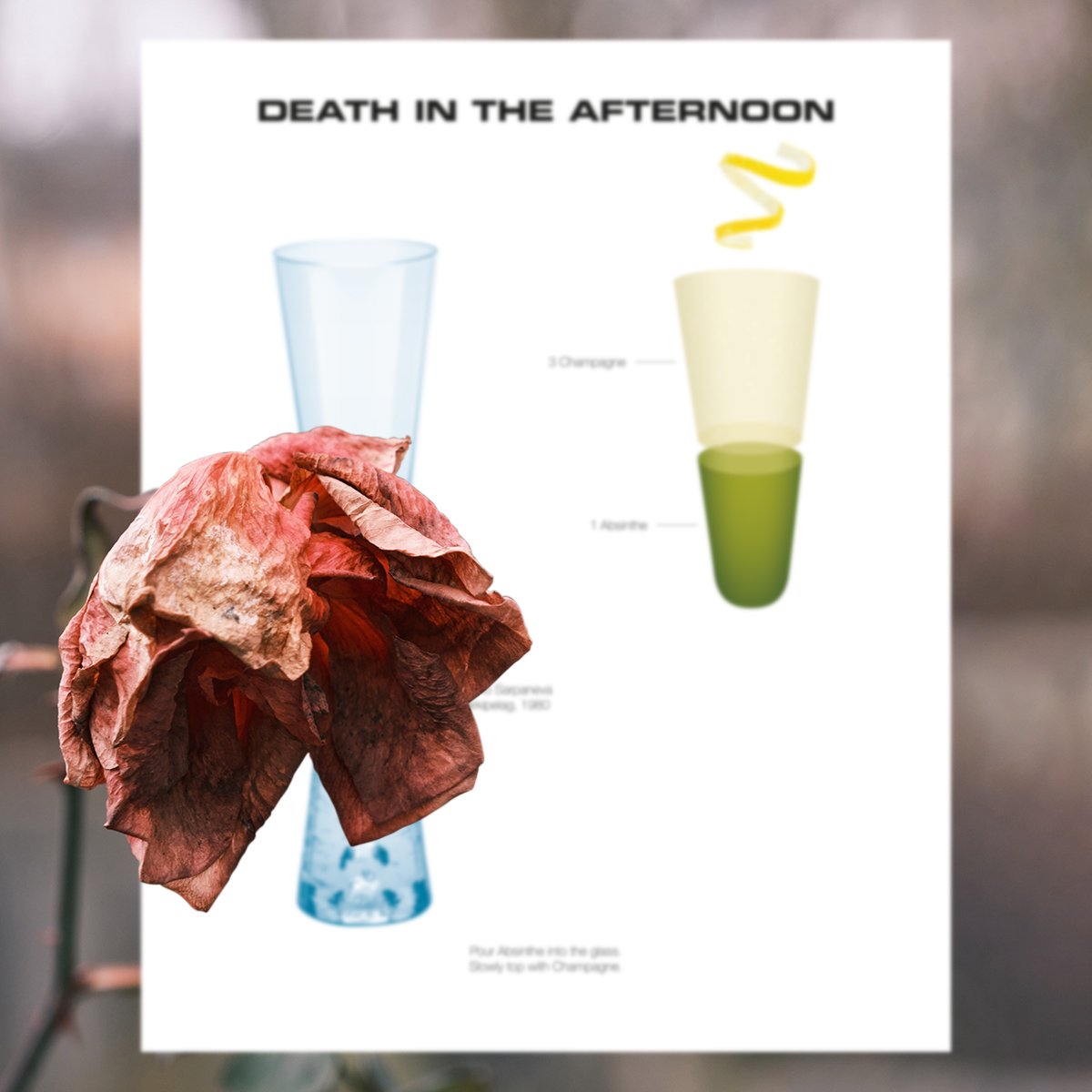
death in the afternoon
Famously taking a keen interest in drinks Ernest Hemingway was more interested in the amount of alcohol than in a well proportioned cocktail. The Hemingway Daiquiri for instance, even though being named by the great author, was originally just a daiquiri with double the amount of rum and no sugar. Very potent but surely not a great balanced cocktail. The Hemingway Daiquiri with grapefruit juice and Maraschino liqueur is a later invention created by a bartender at El Floridita in Havana, Cuba.
The Death in the Afternoon is a different story. It really was created by Hemingway himself and got its name from his 1932 novel about Spanish bullfighting. The drink was Hemingway’s contribution to a cocktail book from 1935 called “So Red the Nose, or Breath in the Afternoon” with recipes from 30 celebrity authors.
In the book, Hemingway says: “Pour one jigger absinthe into a Champagne glass. Add iced Champagne until it attains the proper opalescent milkiness. Drink three to five of these slowly”.
The glass called Arkipelag was designed by Timo Sarpaneva in 1980.
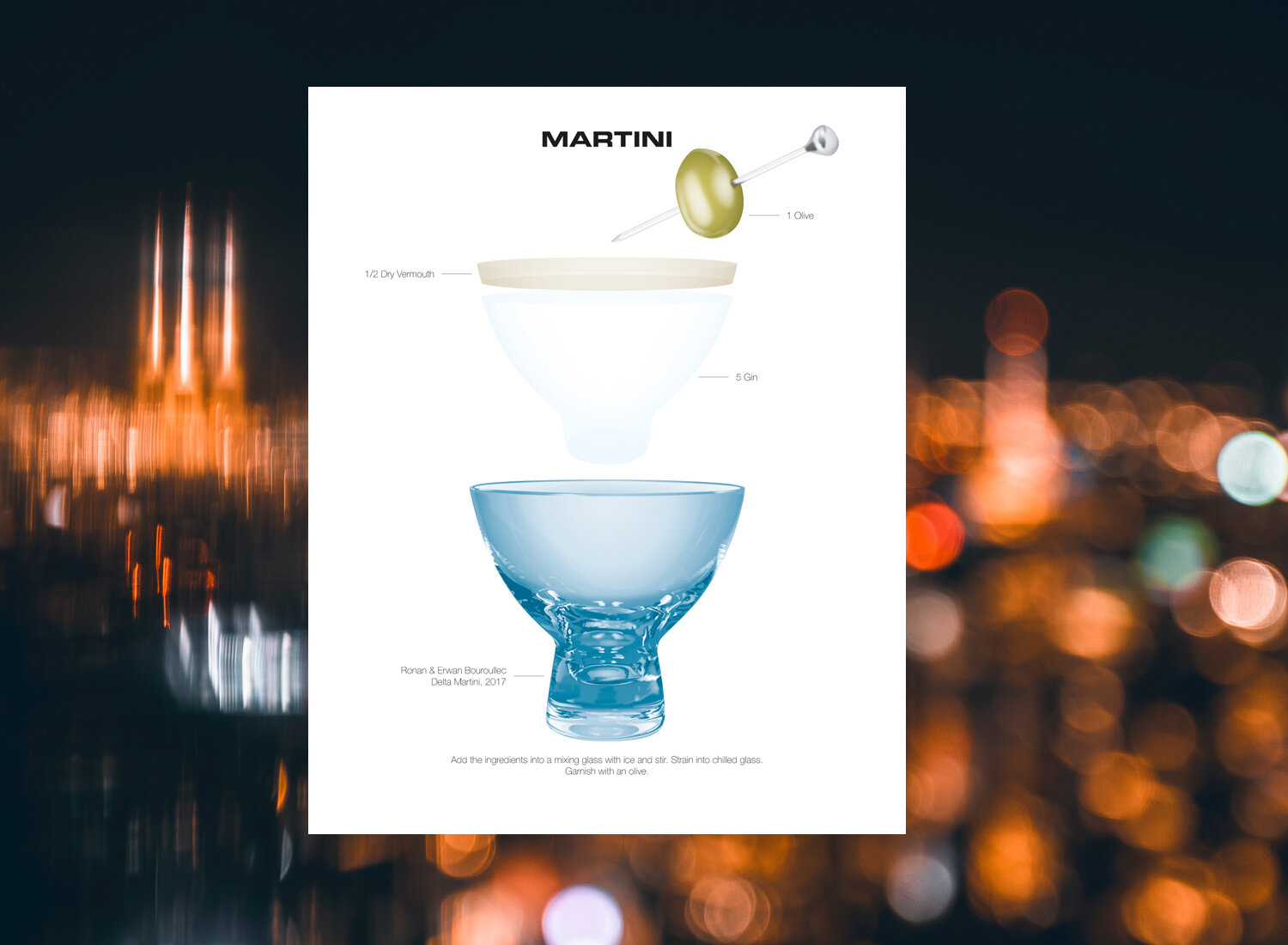
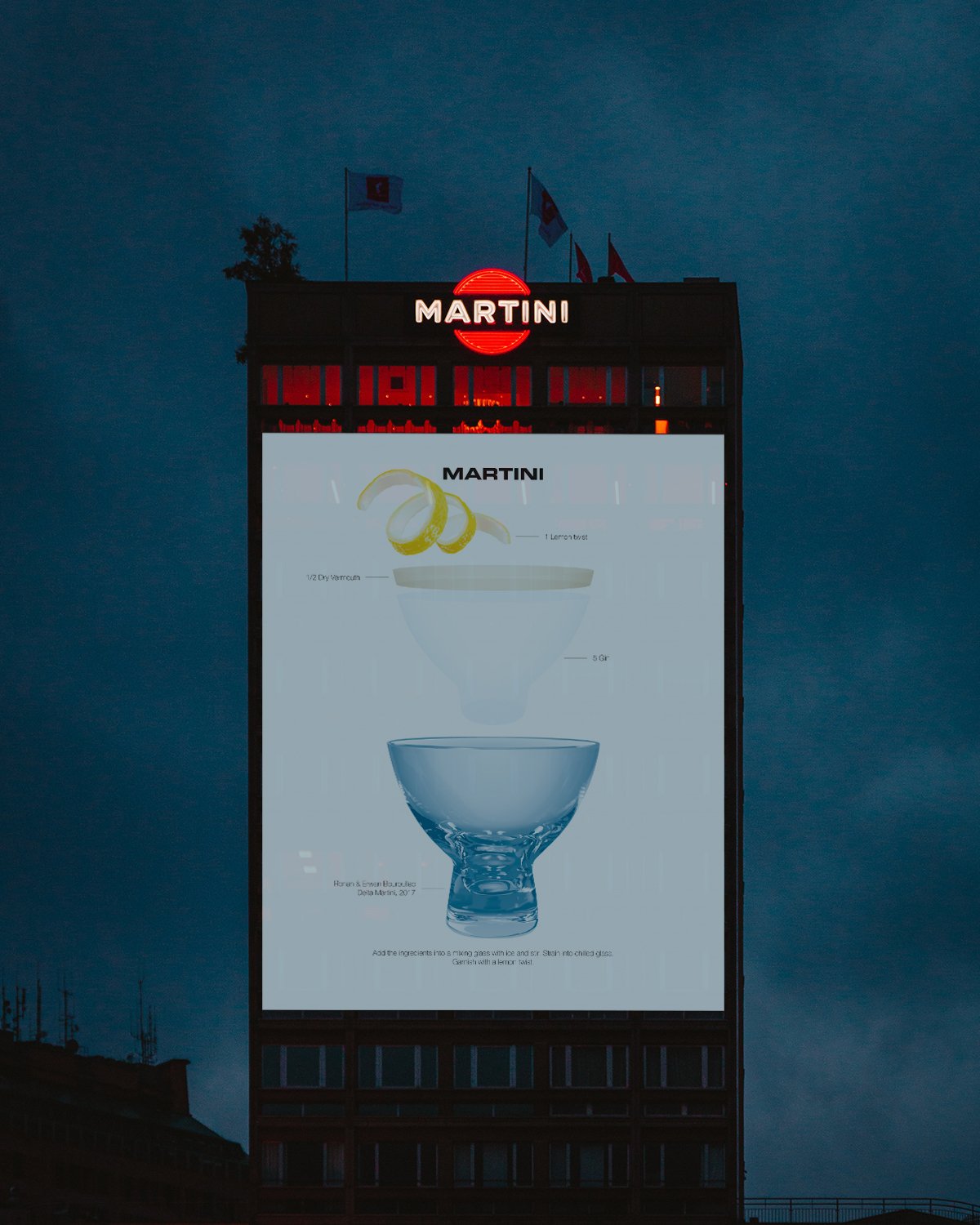
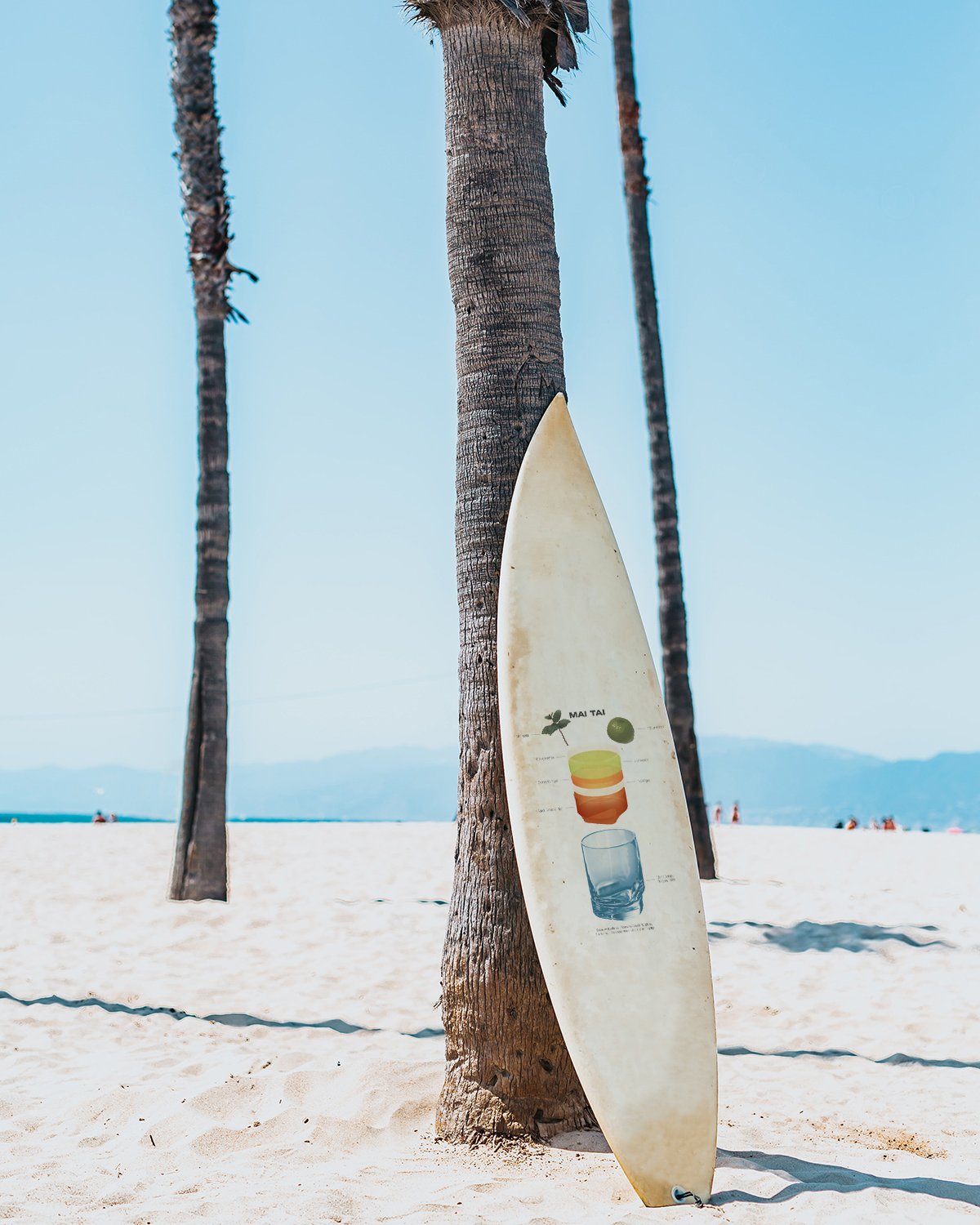
mai tai
The history of the Mai Tai is a story of the two most influential people in the world of tiki bars. Victor Jules Bergeron (aka Trader Vic) and Ernest Raymond Beaumont Gantt (aka Donn Beach, aka Don the Beachcomber). Donn Beach opened his first South Pacific style restaurant in Hollywood in 1933. He was a rum connoisseur and started making exotic rum drinks inspired by his many travels.
Trader Vic had his own restaurant called Hinky Dinks that he opened in 1934 in Oakland, California. After a trip to Cuba to refine his bartender skills and learn more about the world of rum, and possibly after visiting Don the Beachcomber, the Trader remodeled Hinky Dinks into a Polynesian-style tiki bar and changed the name to Trader Vic’s. This made it the first in a long line of restaurants around the world.
The Mai Tai was first made in 1944 for a couple of Tahitian friends of the Trader. They liked it so much that they exclaimed “Mai Tai-Roa A’e” meaning “Out of this world, the best” so the name of the cocktail was right there.
Trader Vic and Don the Beachcomber fought over who had invented the Mai Tai for the better part of their careers but when Donn Beach launched his own Mai Tai mixer claiming the drink to be his invention the Trader had enough. Donn was sued and lost the court battle. Trader Vic announced “Anybody who says I didn't create this drink is a dirty stinker”.
It is most likely though that Trader Vic got his inspiration from Donn Beach’s Hollywood restaurant so without Donn we probably wouldn’t have the Mai Tai.
The glass was designed by Marco Zanuso in 1969 and is called Pitagora after its triangular base.
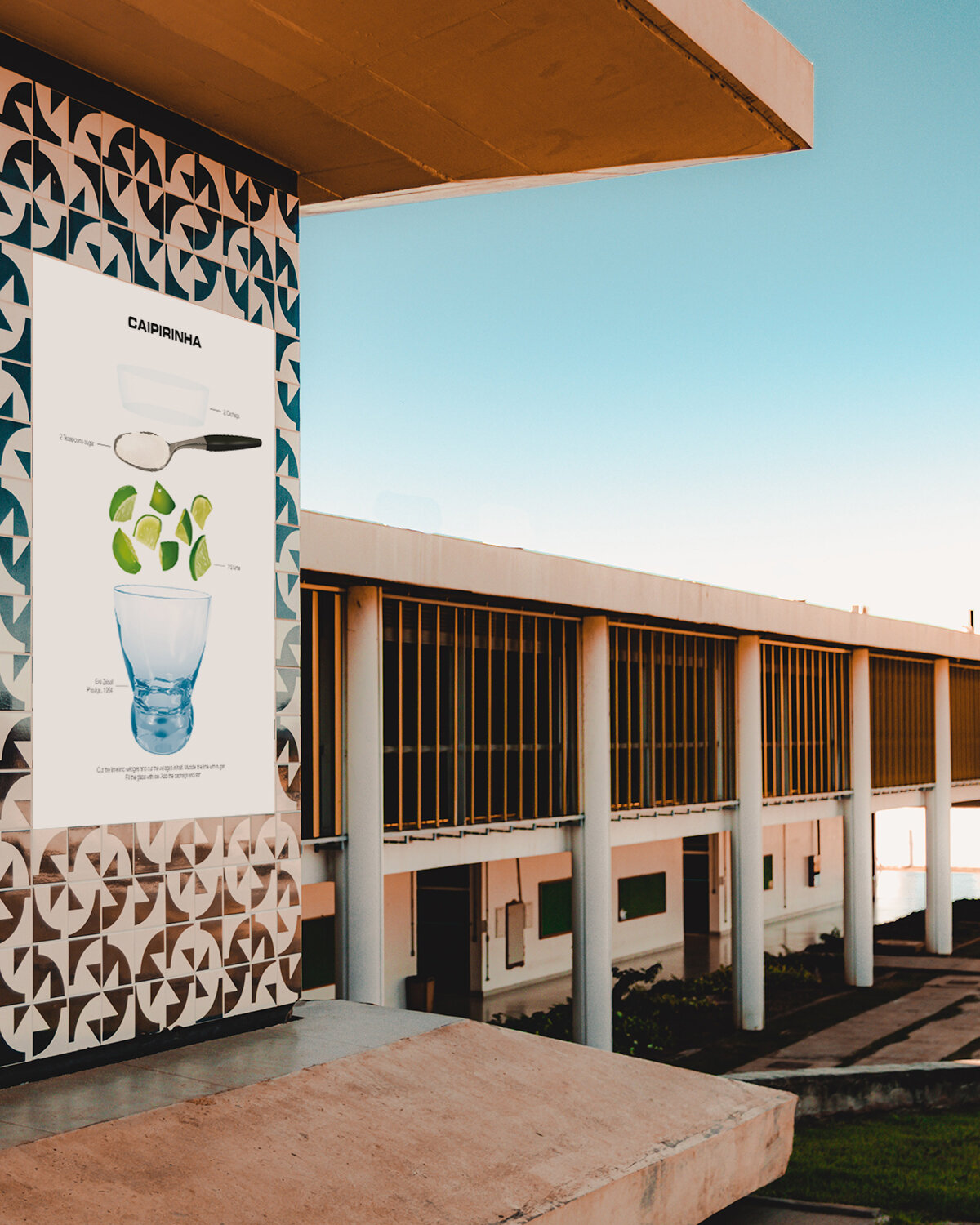
caipirinha
The main ingredient in a Caipirinha is the Brazilian Cachaça. It was first made in the 1500s and is closely related to rum but instead of being distilled from molasses, like most rums, it is distilled from fermented juice of sugar cane giving it its distinct grassy flavor.
The Caipirinha was probably invented by landowning and sugarcane producing farmers from the countryside around São Paulo. During the Spanish flu Cachaça was mixed with garlic, lime and honey as a remedy. The drink made its way to the port city of Santos where it got its name Caipirinha, roughly translated to “little country girl”. Over the years the garlic was omitted and honey was exchanged for sugar. The modern day Caipirinha was born.
Another possible origin is that sailors mixed rum with lime to stave off scurvy and when arriving in Brazil they started using Cachaça instead of rum.
The glass, called Prestige, was designed by Eva Zeisel in 1954.
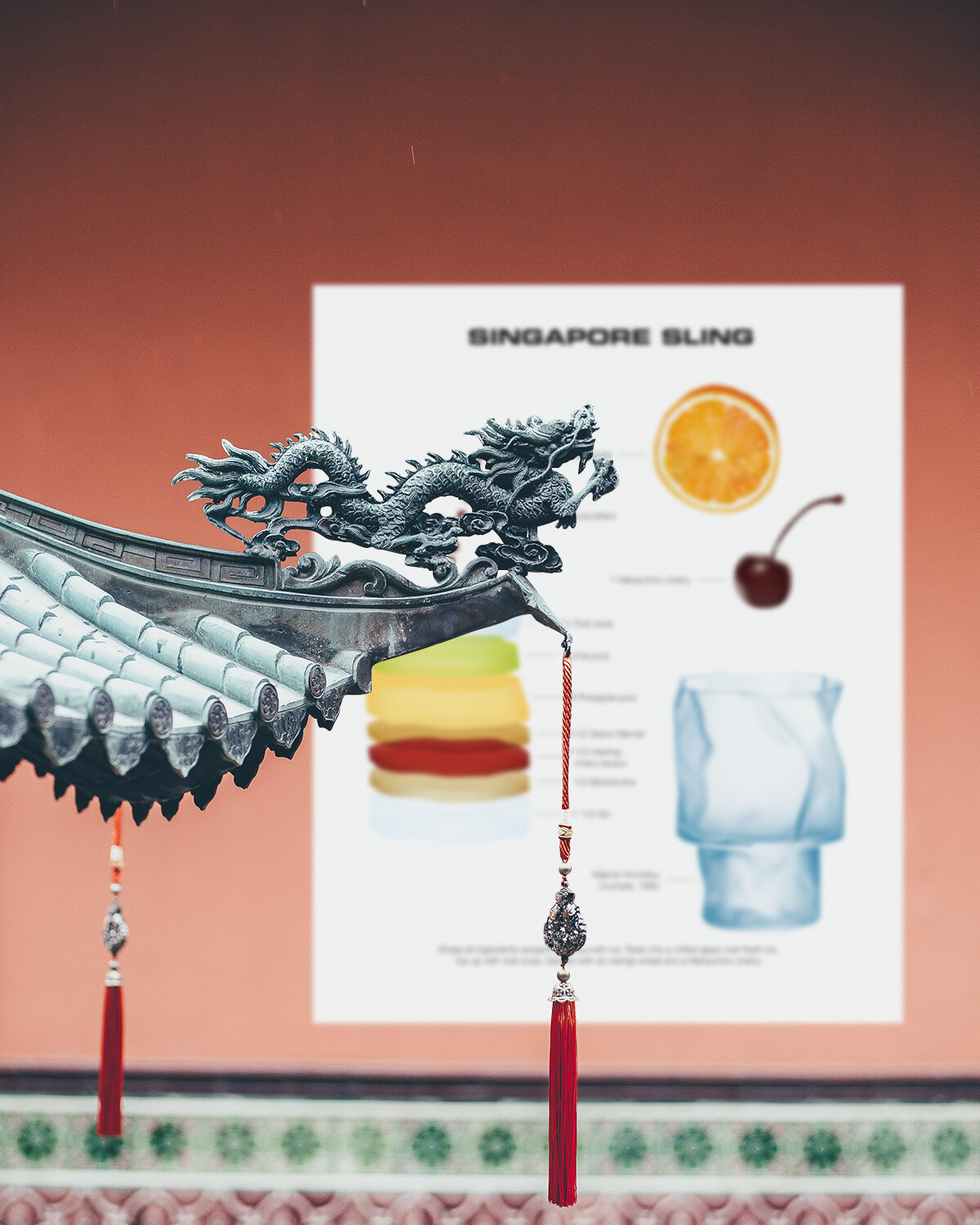
singapore sling
The Singapore Sling, by many regarded as the national drink of Singapore, was created at the Long Bar at Raffles Hotel by the bartender Mr Ngiam Tong Boon. It was first made sometime between 1899 when Mr Boon started working at the hotel and 1915 when he died. At the time etiquette stated that ladies should not consume alcohol in a public setting and instead had to make do with fruit juices. This gave Mr Boon the idea to create a drink that looked like juice but was infused with gin and spirits, finally making it possible for women to have a cocktail at Raffles.
The landmark Raffles Hotel was built in 1886 and was soon to become a favorite hangout for Singapore’s upper-class as well as famous travelers such as Rudyard Kipling, W. Somerset Maugham, Charlie Chaplin and also Her Majesty Queen Elisabeth II.
The original recipe was lost in 1930 but when the drink was published in the Savoy Cocktail Book the same year there are two different recipes for Slings from Singapore. One regular Singapore Sling and one called Straights Sling (after the British colony Straights Settlements). As it happens, the most commonly used recipe today is closer to the Straights version.
The glass was designed by Makoto Komatsu in 1980 and is called Crumple.
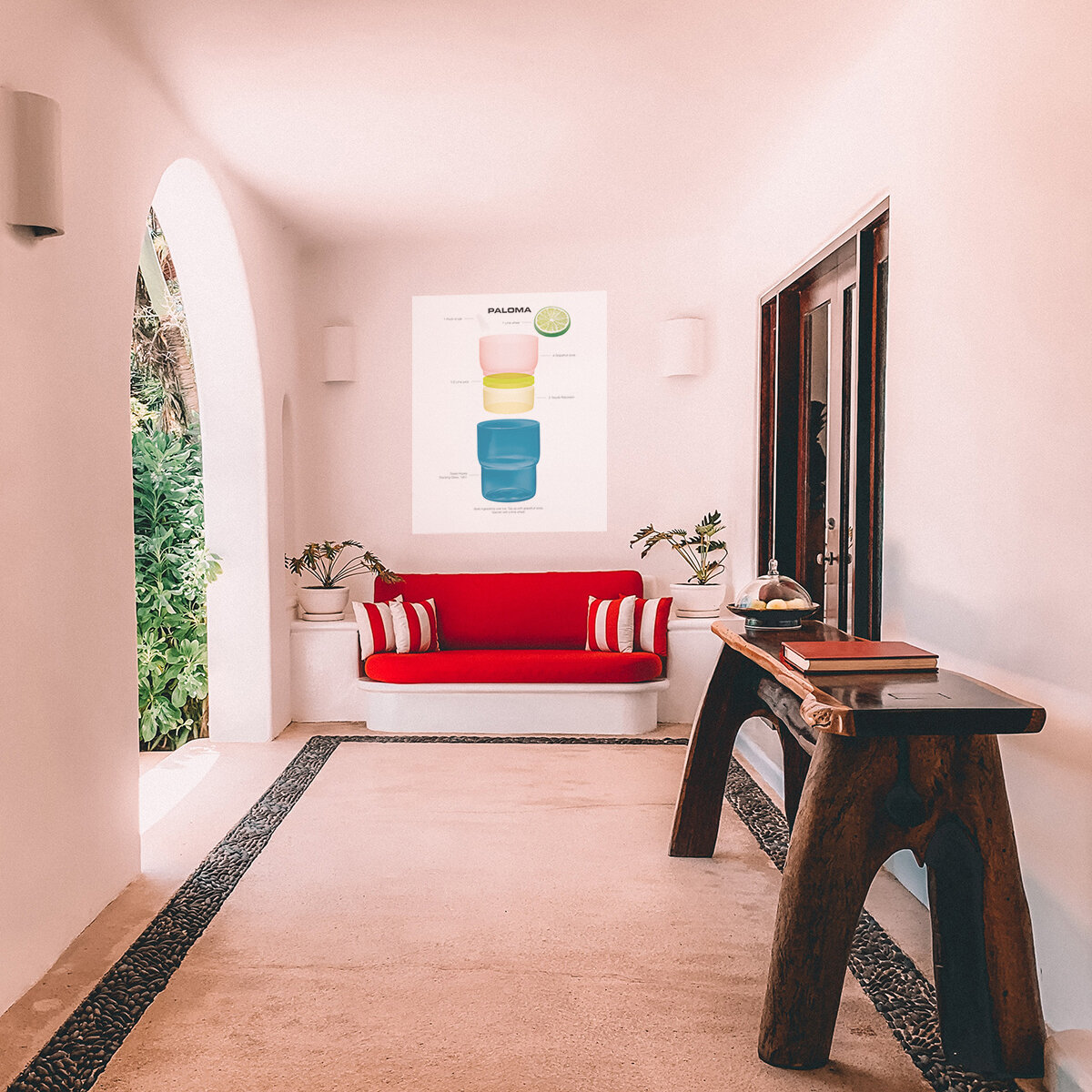
paloma
More popular in Mexico than the Margarita the Paloma, meaning dove in Spanish, might have gotten its name from a popular Mexican folk song from the 1860’s even though it was created almost 100 years after the song.
Squirt, the first grapefruit soda and commonly used in Palomas, was created in Phoenix, Arizona in 1938. It was advertised as a great mixer with tequila in 1950 but wasn’t actually exported to Mexico until 1955 so the cocktail probably saw the light of day sometime in the 1950s. It might have been the creation of Don Javier Delgado Corona the then owner and bartender at La Capilla in Tequila, Mexico.
The Stacking Glass was designed in 1951 by the Finnish designer Saara Hopea.
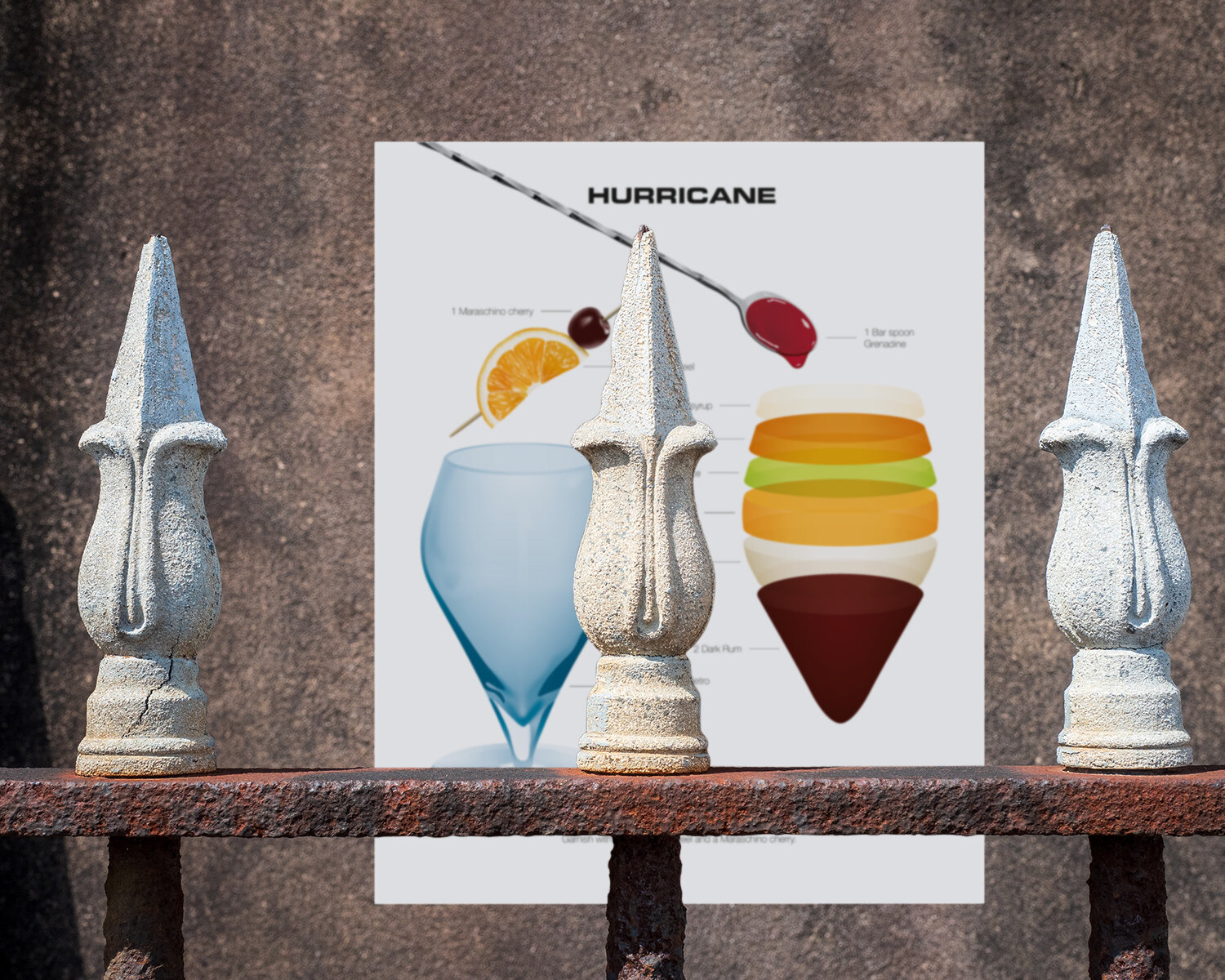
hurricane
The Hurricane is another true classic of New Orleans even though there is said to have been a cocktail called Hurricane served at the 1939 New York World’s Fair in Queens. Little is known about this version apart from it probably being made with rum and that it was served in a hurricane glass.
The second time a cocktail called Hurricane saw the light of day was at Pat O’Brien’s in New Orleans during the 1940s. This is the version that is still served today and it came into being out of necessity. During and after WWII Scotch and Bourbon were hard to come by but New Orleans had rum arriving from the Caribbean by the boatload. The spirits distributors thought up a clever way to deal with this. They required the bars to buy several cases of rum with each case of Scotch. This left Pat 0’Brien’s with more rum than they knew what to do with. Benson “Pat” O’Brien and his partner Charlie Cantrell, probably together with their head bartender Louis Culligan, decided to create a new cocktail to help use up the excess cases of rum. A potent cocktail with 4 oz (120 ml) rum.
The hurricane glass, giving the cocktail its name, is modeled after the classic hurricane lantern. This glass is called Riflesso and was designed by Isabel Antonia Giampietro in 1958.
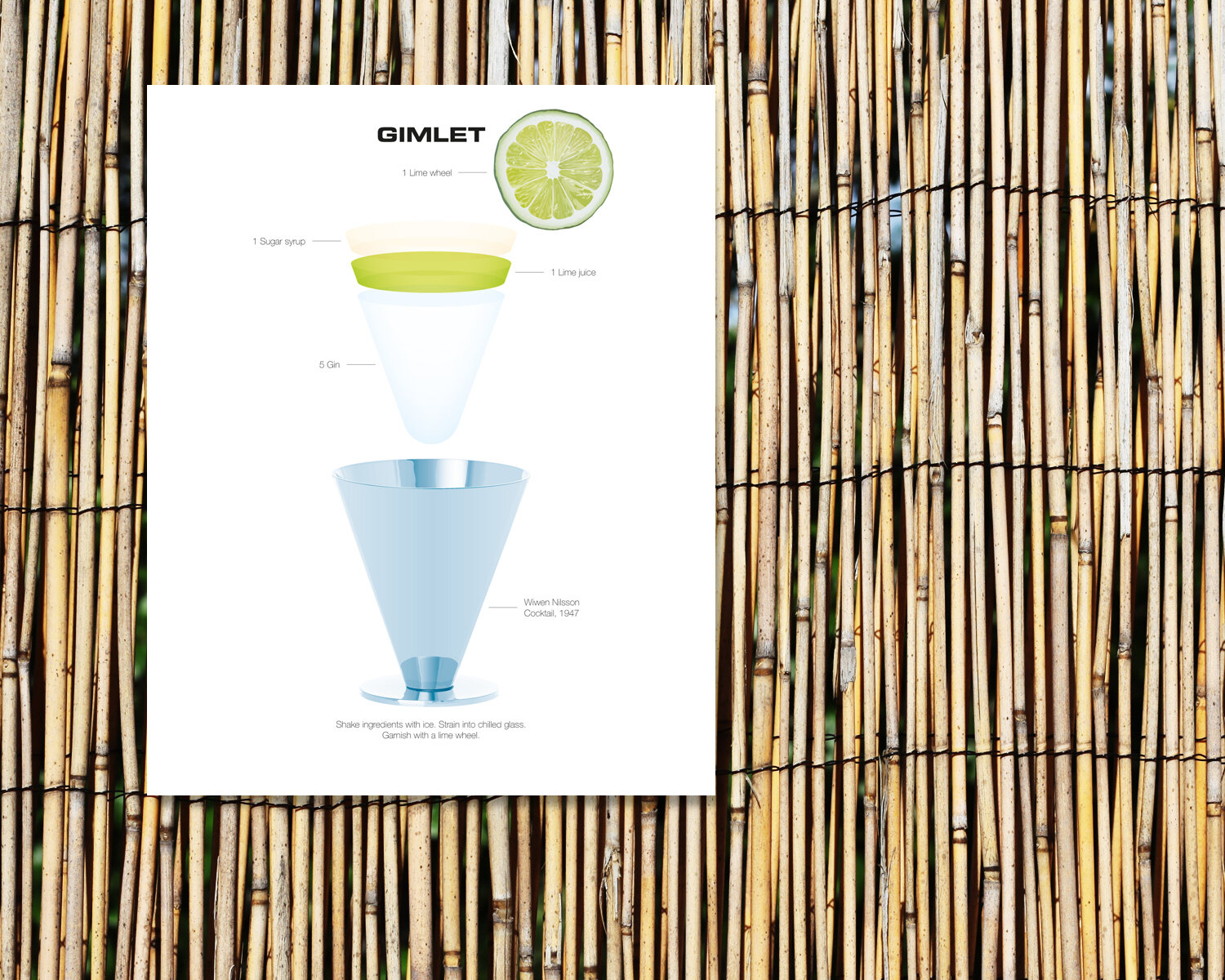
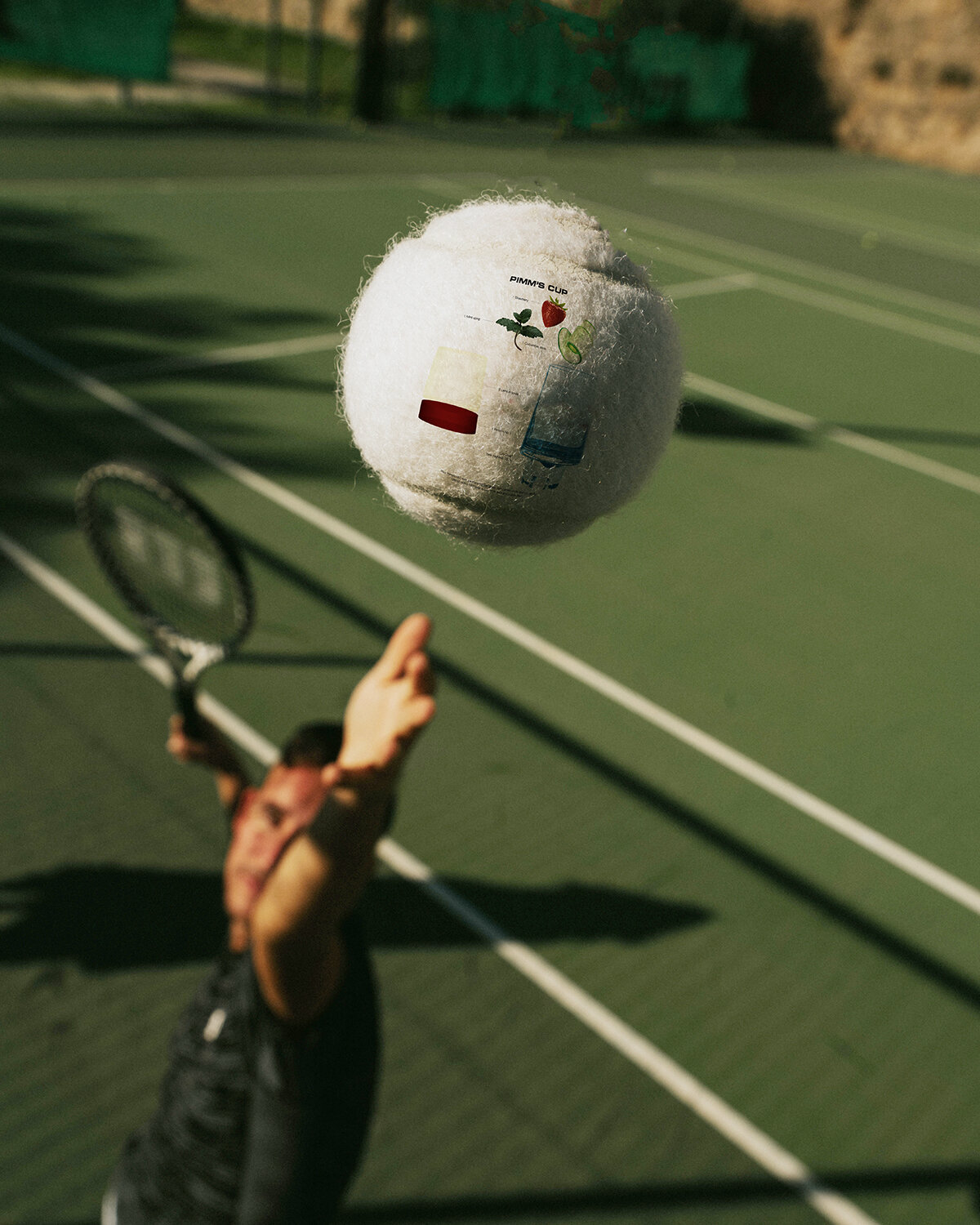
pimm’s cup
James Pimm was a fishmonger from London and the owner of a chain of oyster houses in the 1800s. Sometime between 1823 and 1840 he invented a drink to help digestion. A mixture of gin, quinine and herbs that he named after himself and served in a cup, hence the name Pimm’s Cup. The drink became so popular it was commercialized in 1865 and sold throughout the British Empire as Pimm’s No. 1. Alongside the gin based No. 1 a number of other versions were created. No. 2 with Scotch whisky, No 3 with Brandy, No. 4 with rum, No. 5 with rye and No. 6 with vodka.
Since 1971 the Pimm’s Cup has been the signature drink at Wimbledon, the oldest tennis tournament in the world, where each year 300,000 Pimm’s Cups are served.
The Tank Highball glass was designed by the British designer Tom Dixon in 2014.
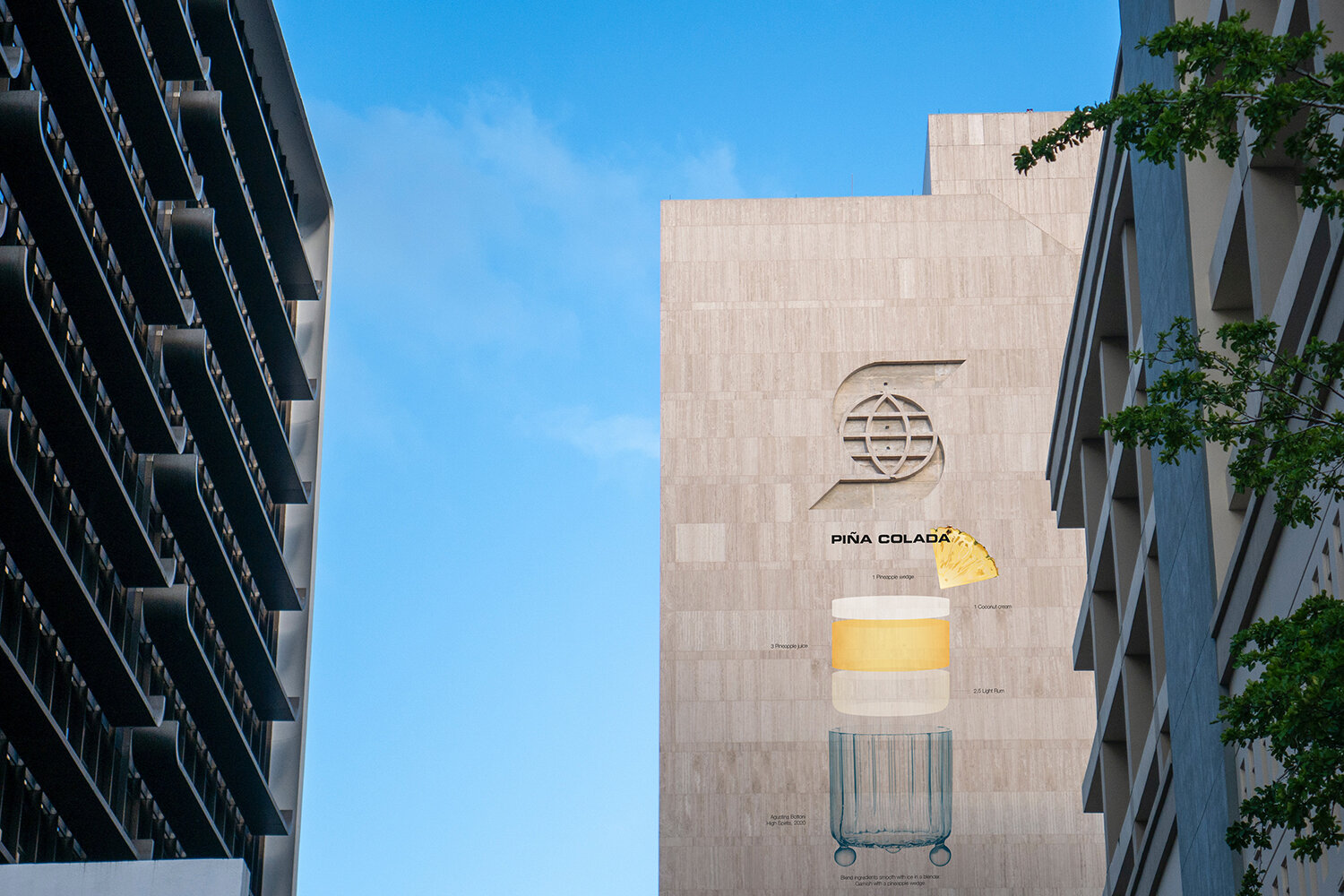
piña colada
The Piña Colada was invented in 1954 after three months of hard work. Ramon “Monchito” Marrero Perez, the head barman at the Caribe Hilton in Old San Juan, Puerto Rico was trying to create a signature cocktail for the hotels Beachcomber Bar. He eventually landed on the Piña Colada meaning strained pineapple.
For 35 years Mr Perez personally served the drink at the Caribe Hilton and it became so popular it was made the official drink of Puerto Rico in 1978.
The glass was designer in 2020 by Agustina Bottoni and is called High Spirits.
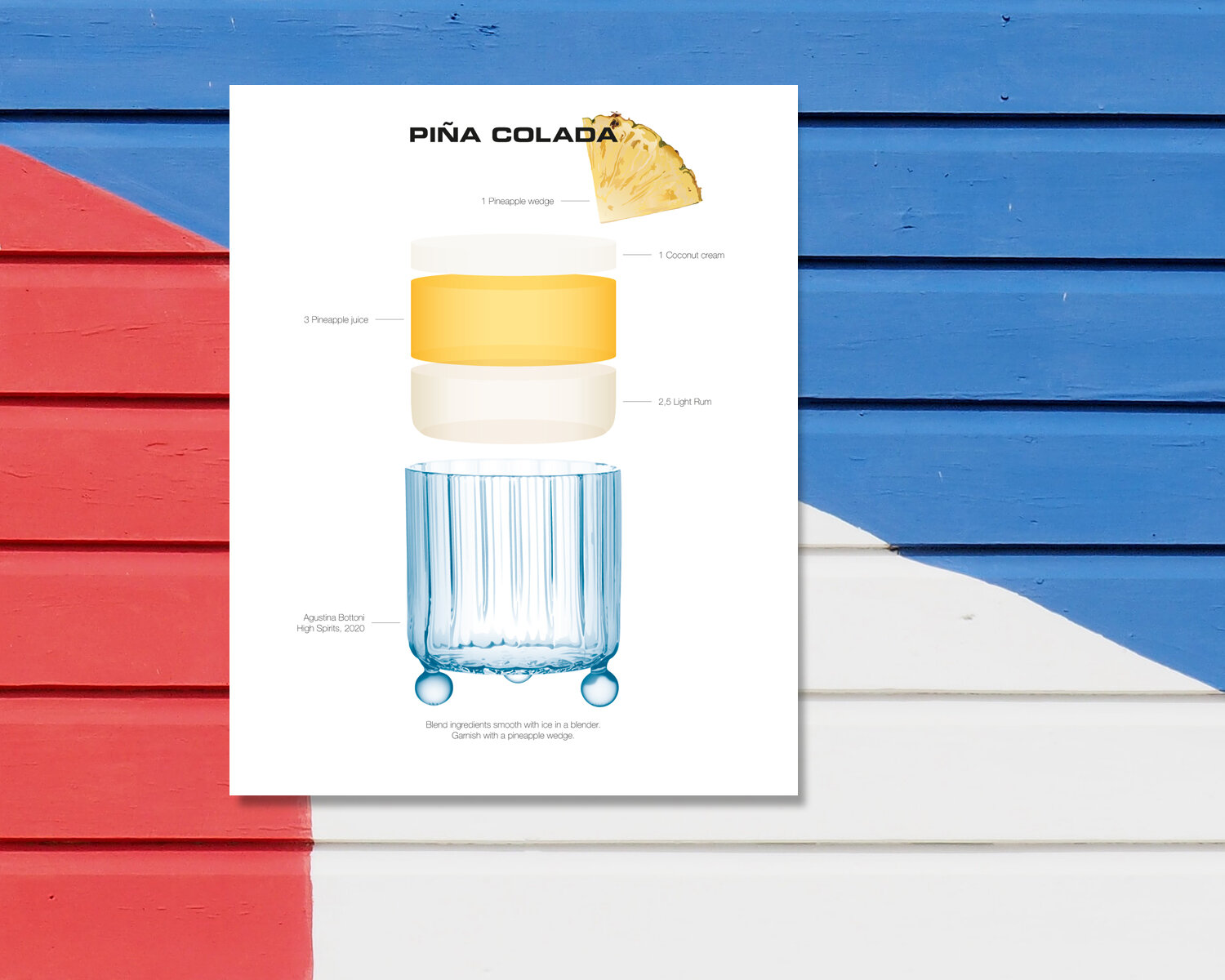
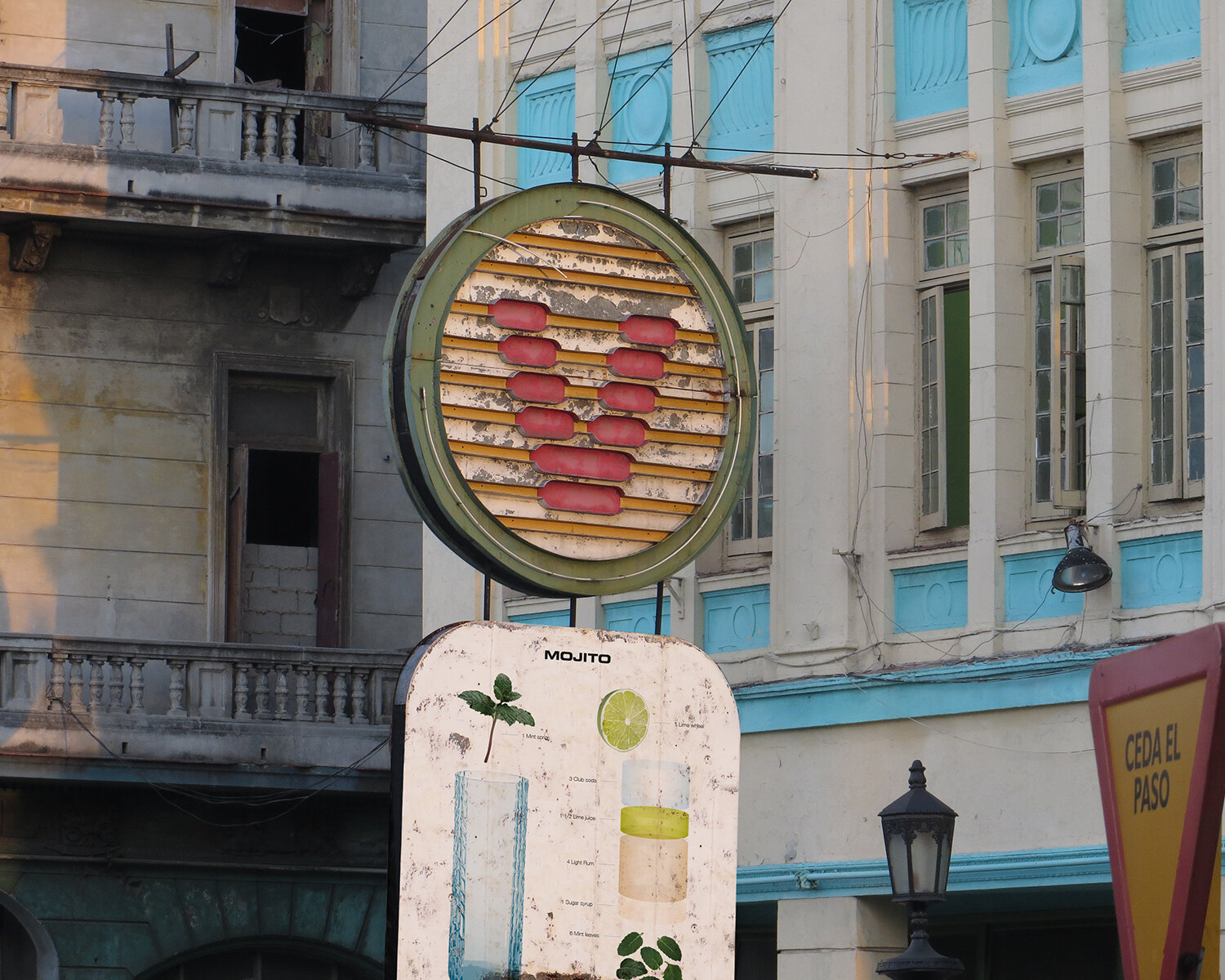
mojito
In 1586 Sir Francis Drake sailed into to Havana Cuba. He was sent on a mission by the British Crown to the Spanish colonies in the Caribbean to plunder their gold. The reason he came to Cuba was another. His crew was suffering from scurvy and dysentery and they needed to find a remedy. The locals brought him Aguardiente (an early form of rum), lime, mint and cane juice, a concoction they started to call El Draque, the name they gave Sir Francis Drake. The drink did not however cure himself and Sir Francis Drake died of dysentery outside Panama in 1596.
The later name Mojito might have derived from the Cuban mojo, a sour citrus sauce made by African slaves.
This blend of alcohol, lime, mint and cane juice was most likely drunk by slaves on the Caribbean plantations to help with their own ailments long before Drake came to try it. But not until the American Prohibition when the American cocktail party moved to Cuba the drink started being served as a highball with soda and the Mojito as we now know it was born.
The highball glass was designed by Finnish glass designer Nanny Still in 1964 and is called Flindari.
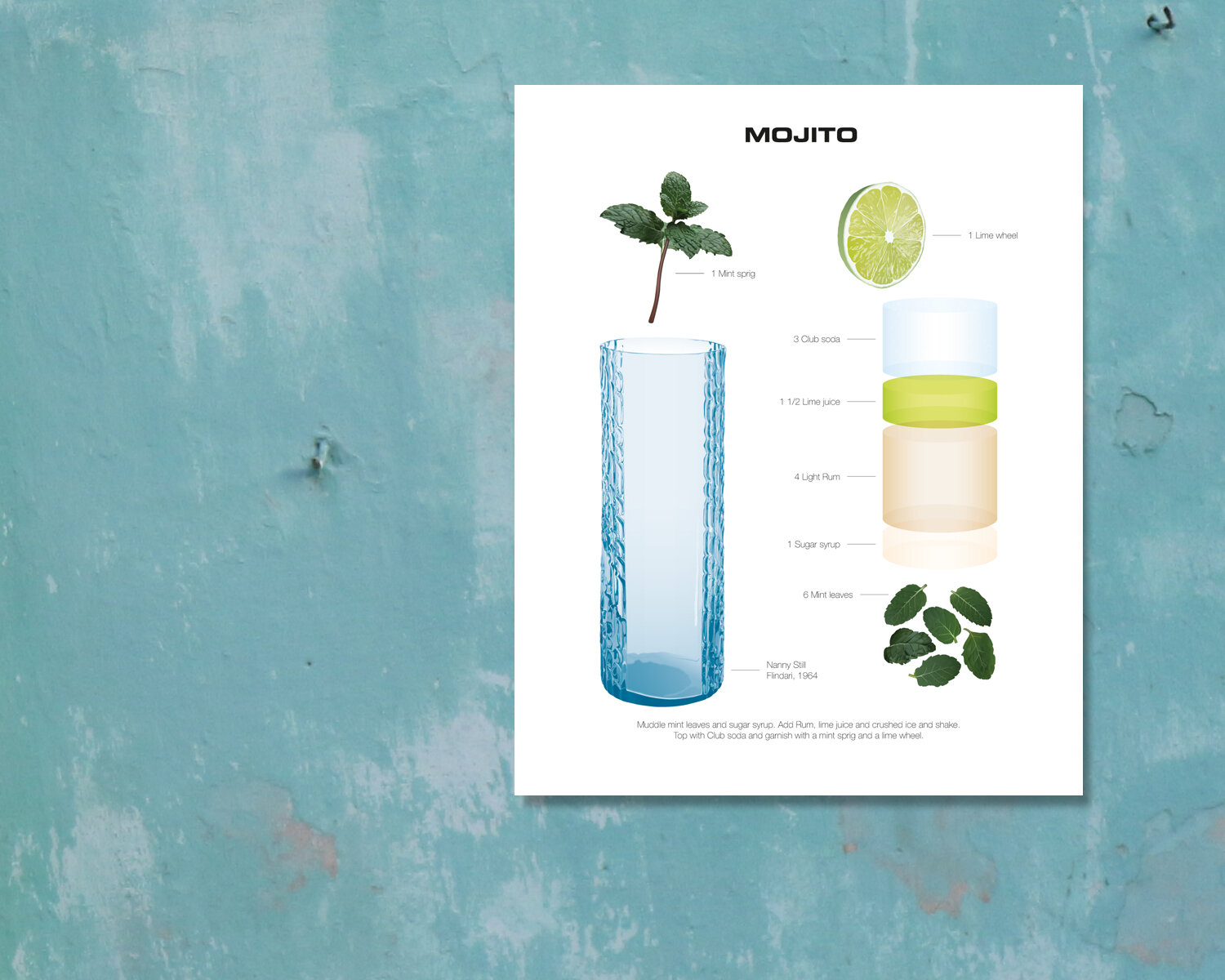
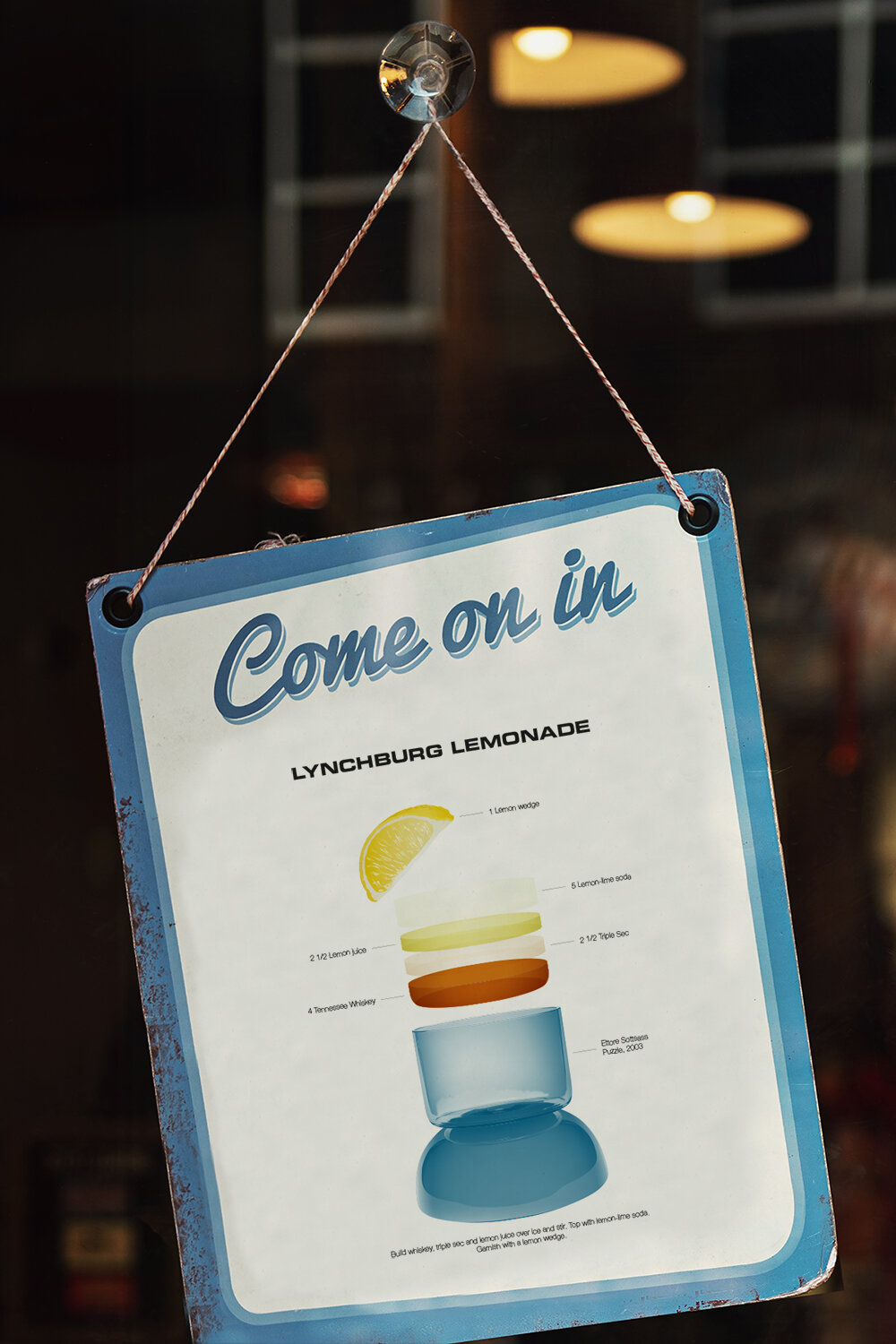
lynchburg lemonade
In 1980 Tony Mason, a restaurant owner in Huntsville Alabama created the Lynchburg Lemonade. It was named after the city of Lynchburg Tennessee, home to the Jack Daniel’s Distillery. Jack Daniel’s was established in 1866 and was one of the first distilleries registered in the United States. To this day the original recipe is used when producing Jack Daniel’s and even though they refer to the product as Tennessee Whiskey, the product meets every legal requirement to be called a Bourbon.
Interestingly, Lynchburg is in Moore County, a county that has been dry since 1910 so visitors to the Jack Daniel’s Distillery will not be able to sample any of the products.
The glass is called Puzzle and was designed by Ettore Sottsass in 2003 for Venini. Sottsass is most famous for starting the Memphis Design Group in Milan in 1980.
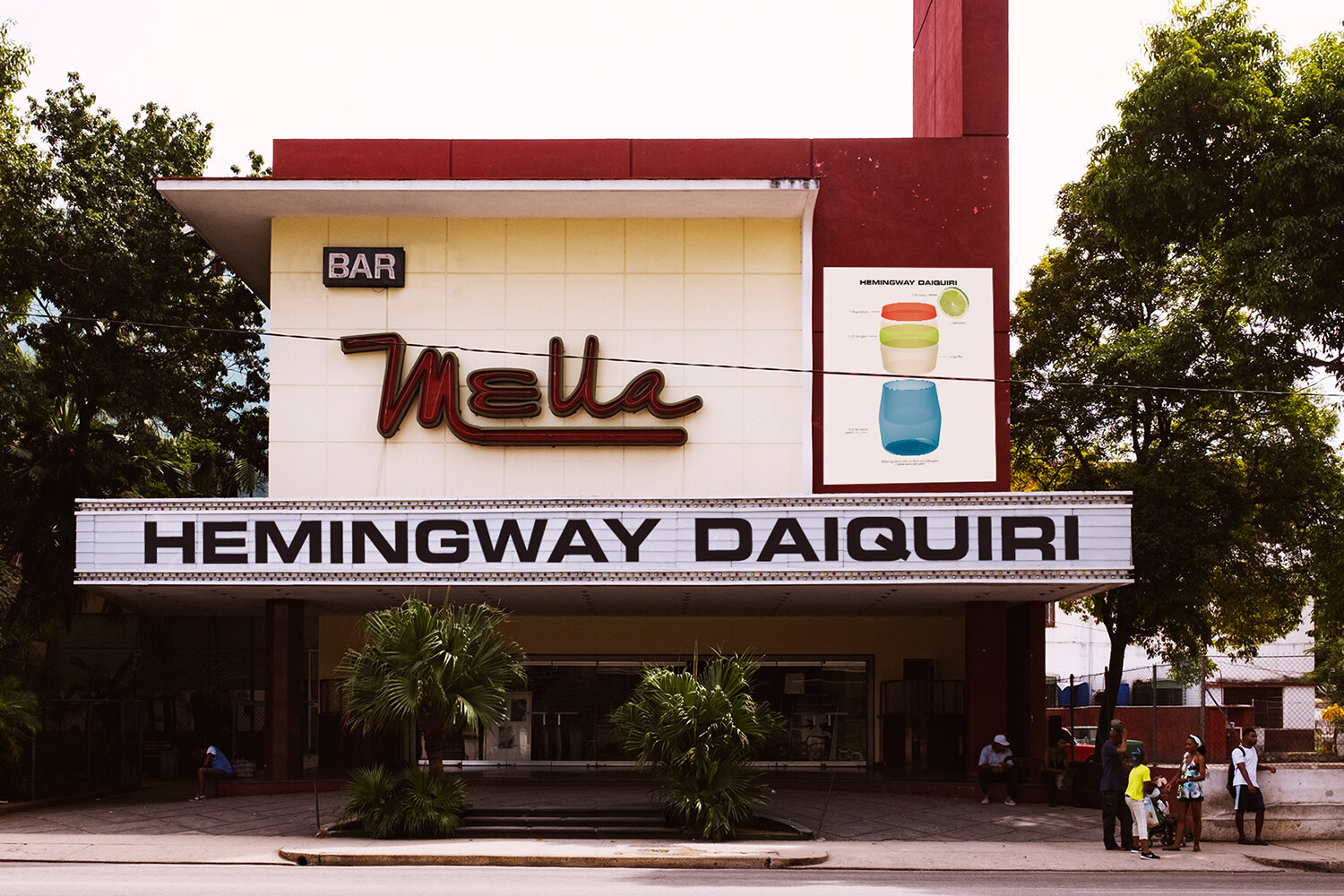
hemingway daiquiri
The Hemingway Daiquiri started as the Papa Doble after Ernest Hemingway’s Cuban nickname. On a stay in Havana in the 1930s Hemingway was on the way back to his hotel when he ventured into the bar El Floridita in search of a bathroom. The bartender had just prepared some Daiquiris and Hemingway, never passing on a drink, tried one. He told the bartender he would prefer one without sugar (since Hemingway was a diabetic) but with the double amount of rum. This Daiquiri version got the name Papa Doble and was tart and way too strong to be an enjoyable cocktail.
Over time the Papa Doble was modified by the bartenders at El Floridita to make it more palatable. It is still less sugary than a regular Daiquiri but grapefruit and Maraschino liqueur is added to the drink that is now called the Hemingway Daiquiri.
The glass, Model I-103 was designed in 1956 by Timo Sarpaneva.
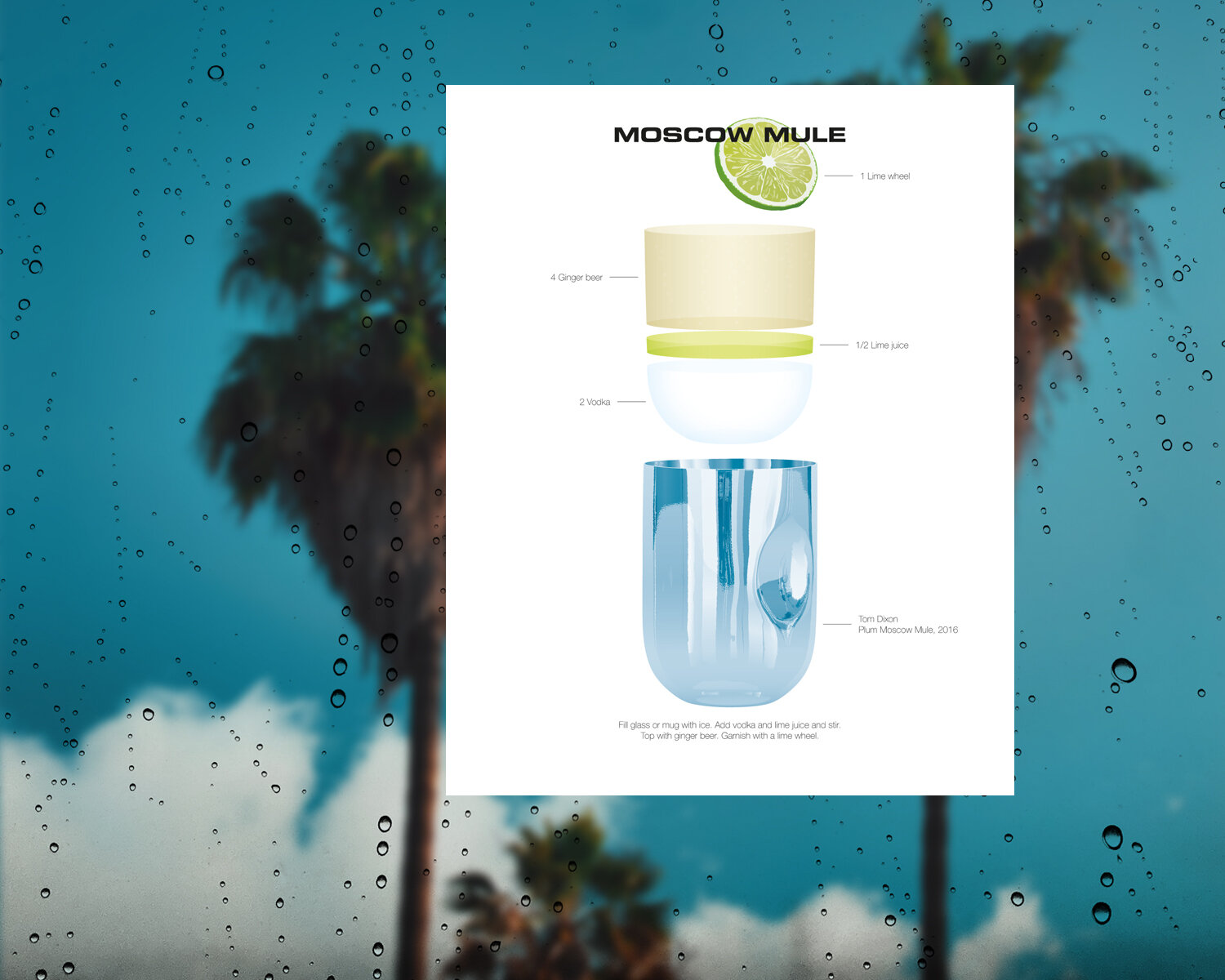
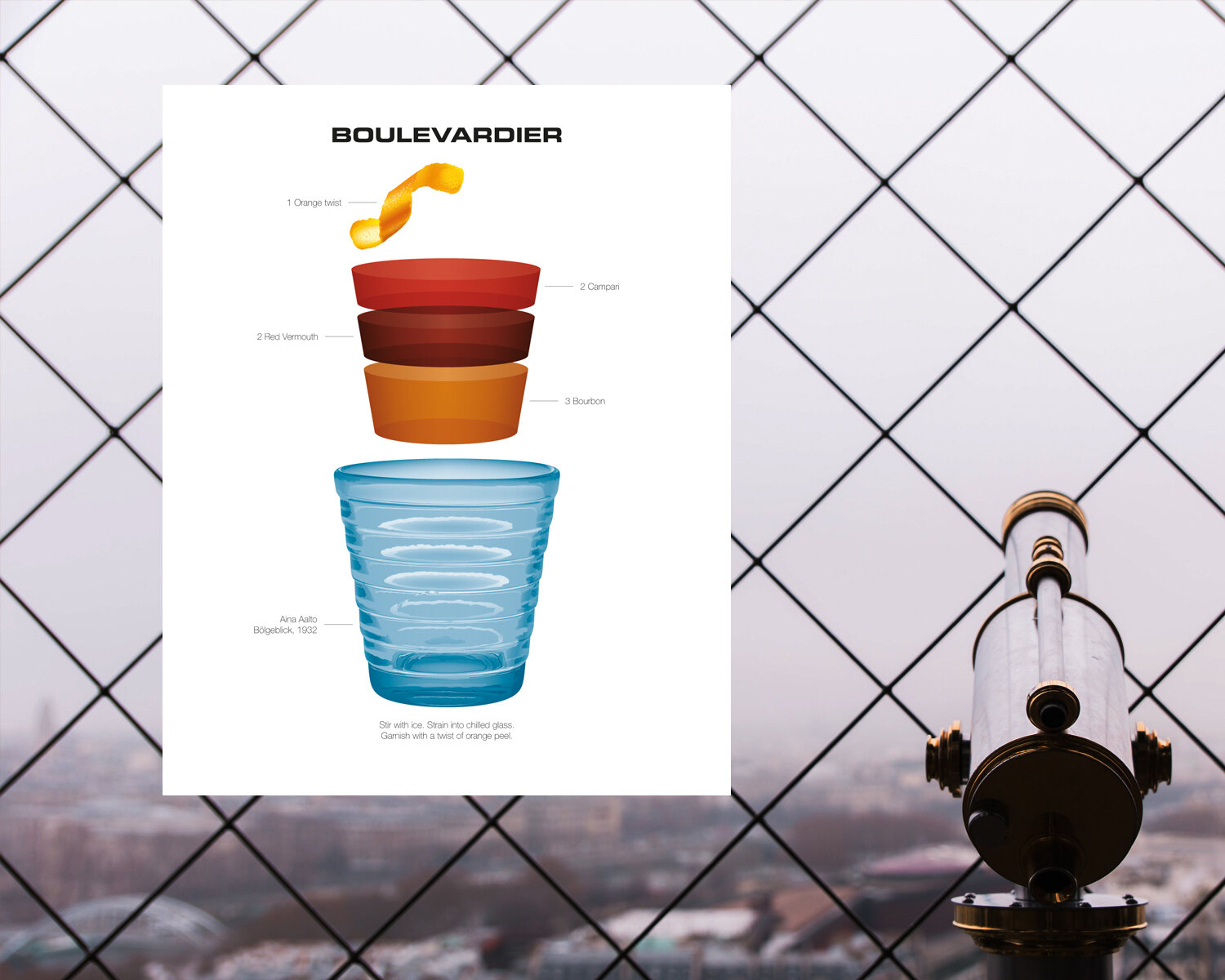
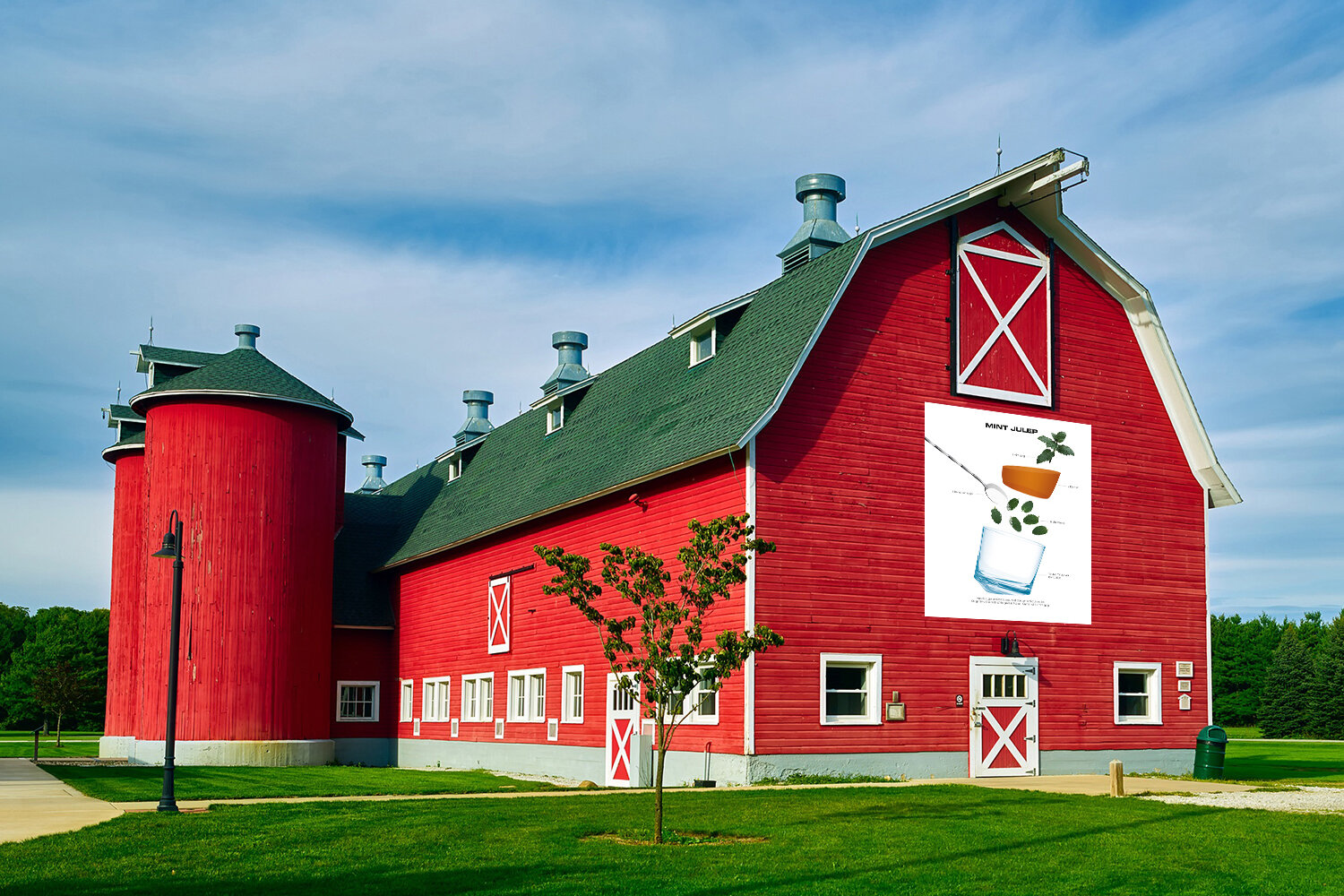
mint julep
The Mint Julep was first referenced in 1784 as a medicinal concoction to cure an upset stomach. In the late 1700s it eventually transformed into a cocktail for the elites in the southern parts of the U.S. This since crunched ice is a big part of the drink and it was usually served in a silver cup. Both of which were only found in the households of the upper class.
The Mint Julep was introduced to Washington D.C in 1850 by Henry Clay, U.S. Senator from Kentucky and it ended up being a favorite cocktail of several presidents. Theodore Rosevelt for instance got his cabinet members to play tennis with him by offering them Mint Juleps afterwords.
As it seems, almost all cocktails have a story featuring Ernest Hemingway. So does the Mint Julep. Hemingway is said to have got so mad after being served an abysmal Mint Julep in France that he shattered the glass against a wall. Luckily he was saved by some traveling Kentuckians helping the bartender to make a proper drink.
Since 1938, it is more or less synonymous with the Kentucky Derby after being named the official drink of the horse race. In a normal year at the Derby they serve up about 120,000 Mint Juleps over the weekend of the horse race, the first weekend in May.
The Slant glass was designed by Teruhiro Yanagihara in 2006.
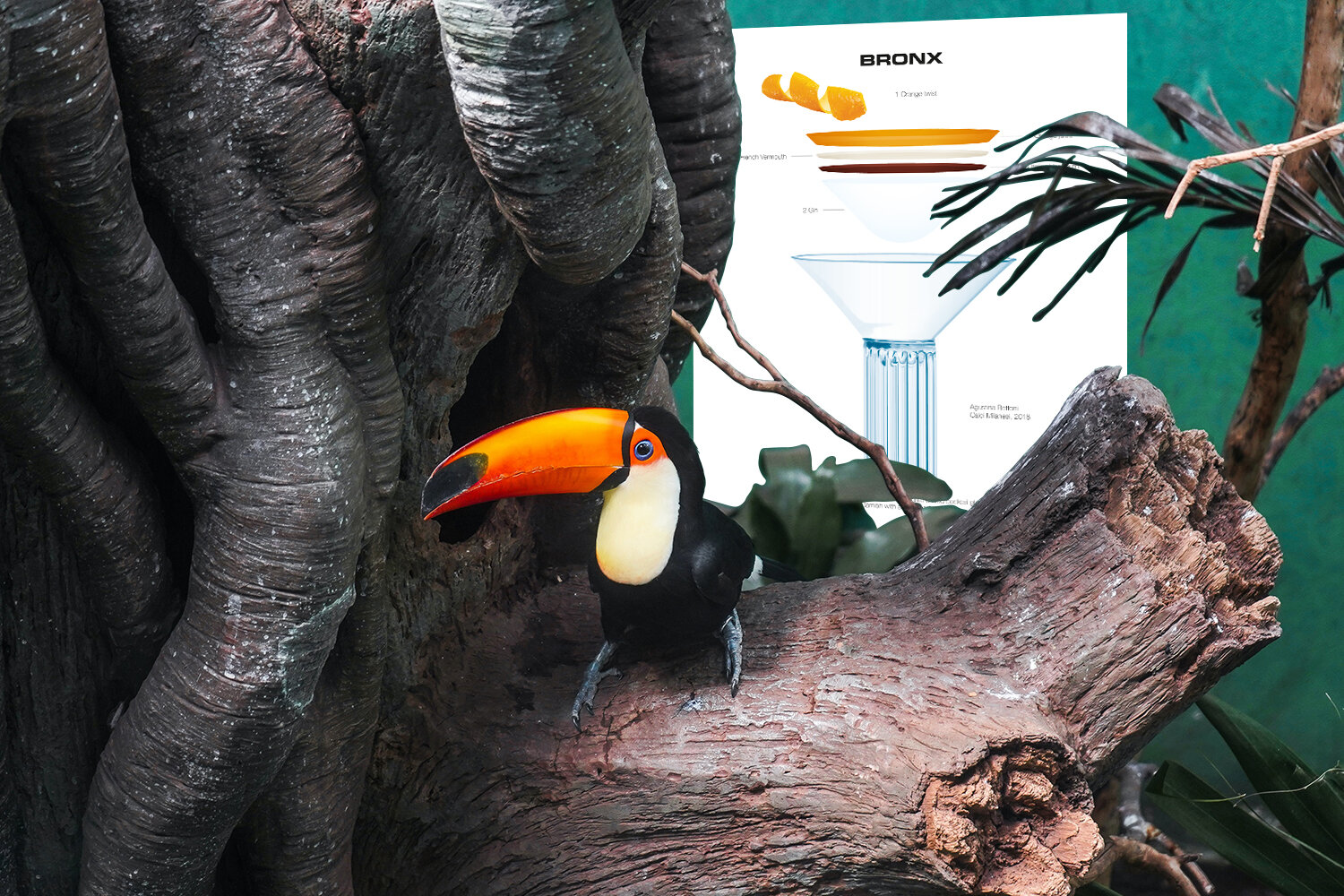
bronx
The cocktail isn’t actually named after the borough itself but rather after the Zoological Park. The Bronx Zoo opened in 1899 and the story goes that either John “Curly” O’Connor, head barman at New York’s Waldorf-Astoria or Johnny Solon from the same bar, created the Bronx cocktail inspired by the novel zoo in 1899 or 1900. That said, many other bartenders have also taken credit for the cocktail.
The first time the Bronx cocktail was mentioned in print was in The Virginia Enterprise in February of 1901 where credit for the invention was given to John “Curly” O’Connor. Johnny Solon on the other hand claimed the cocktail as his own in the book The Old Waldorf-Astoria from 1935.
The cocktail glass is one in a series of glasses called Calci Milanesi, inspired by Milanese architecture, and was designed by Agustina Bottoni in 2018.
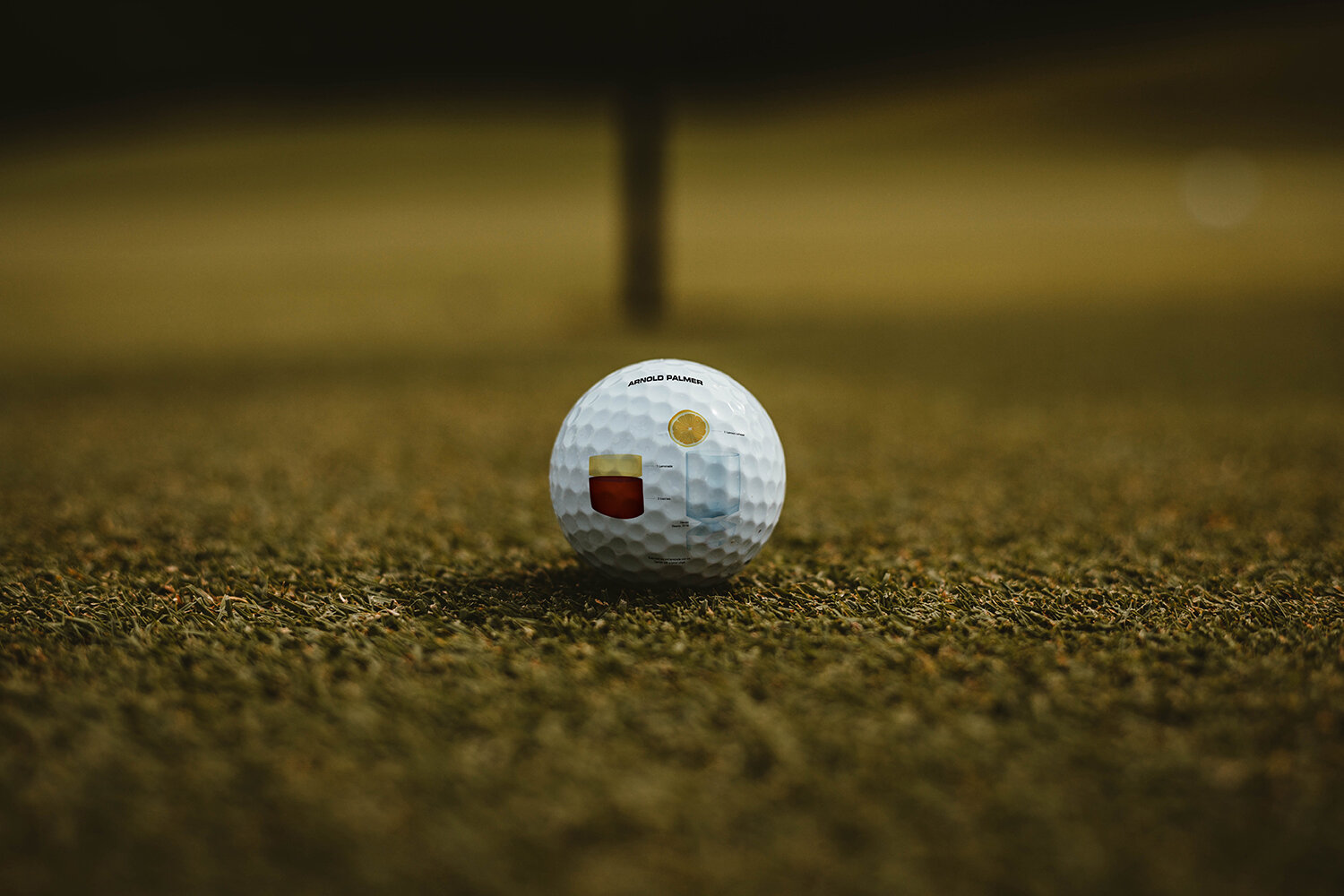
arnold palmer
The golfer Arnold Palmer got inspired to add some lemonade to a pitcher of iced tea his wife prepared for lunch just to see if it worked. He liked the result so much he started to bring a thermos of the drink whenever he was out playing golf.
One day in the 1960s Mr Palmer ordered one after a hot day on the golf course in Palm Springs. He was overheard by a woman in the bar that liked the sound of it and wanted to have the same so she simply asked for an Arnold Palmer.
The Beaver glass was designed by Nendo in 2019.
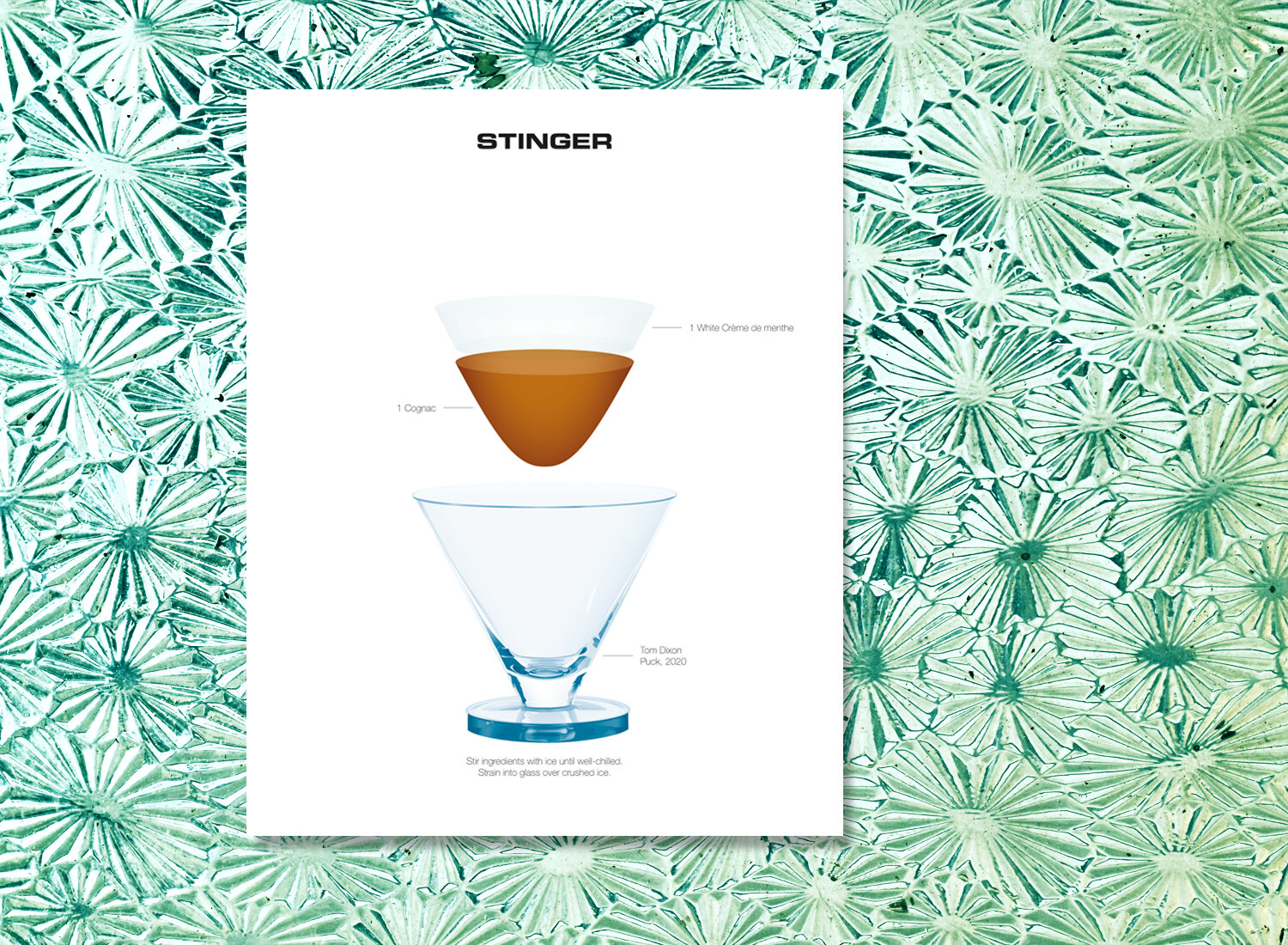
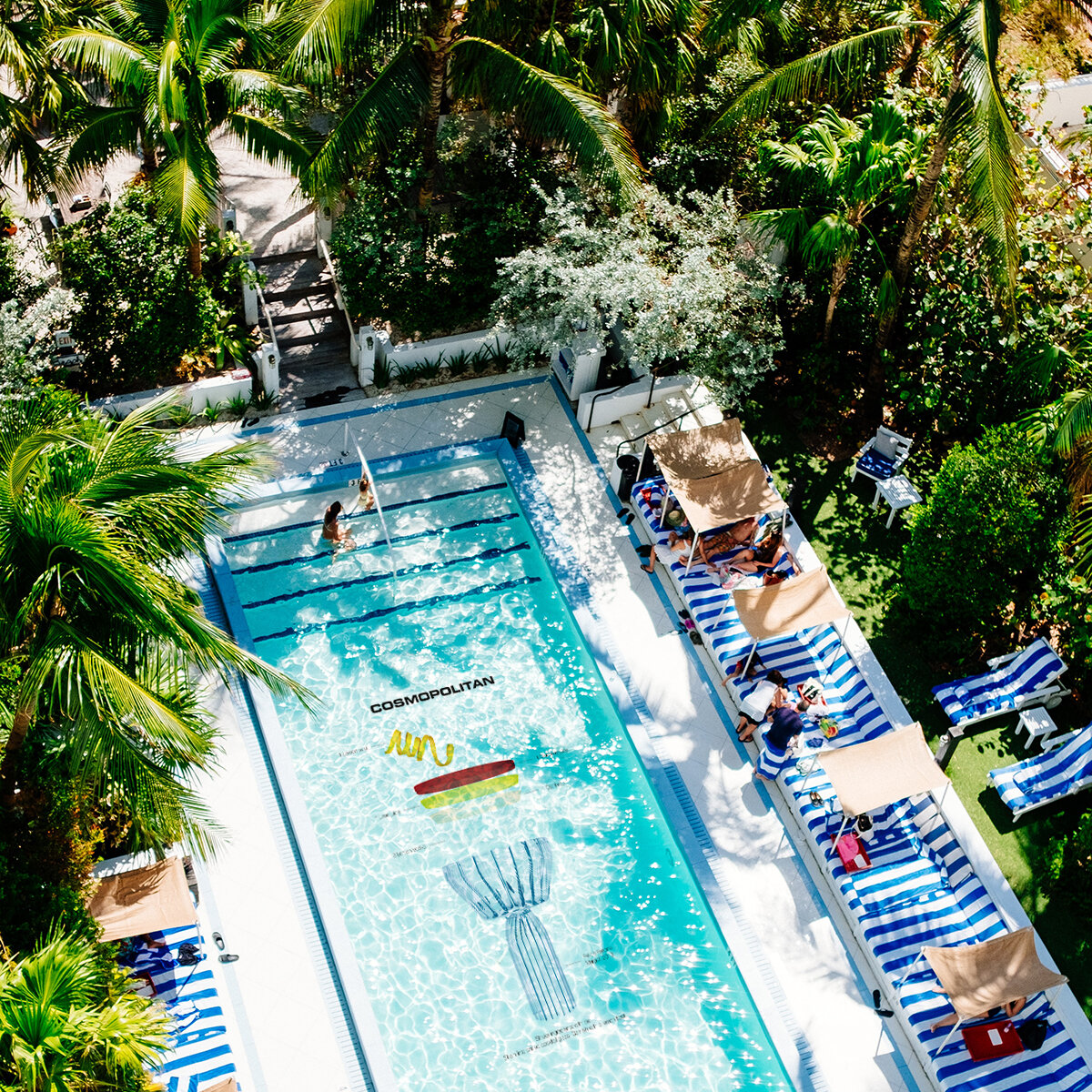
cosmopolitan
The Cosmopolitan is said to have been invented in 1985 by Miami bartender Cheryl Cook at a South Beach bar called the Strand. Wanting to make a perfect cocktail for a Martini glass Cook used the Kamikaze as a base, changed the regular vodka to citrus-flavored vodka and added a splash of cranberry juice.
Others believe it was first invented by Toby Cecchini in 1988 when he was working at New York’s Odeon. Cecchini used Absolut Citron, the second of the range of flavored vodkas from Absolut and released in 1988, and made it a big hit in the New York bar scene. With the help of the characters in Sex and the City, where the Cosmo was almost an essential part of the plot, the Cosmopolitan turned into a modern classic.
The glass is called Margot and was designed by Felicia Ferrone in 2013.

white lady
The White Lady was invented by Harry MacElhone, twice. First in 1919 at Ciro’s Club in London when it featured crème de menthe, triple sec and lemon. This version had a 10 year run. In 1923 Harry bought his own bar, the legendary Harry’s New York Bar, in Paris and in 1929 he reinvented the cocktail and changed the crème de menthe to gin creating yet another classic cocktail.
The glass is called Marja and was designed by the Finnish designer Saara Hopea in 1956.
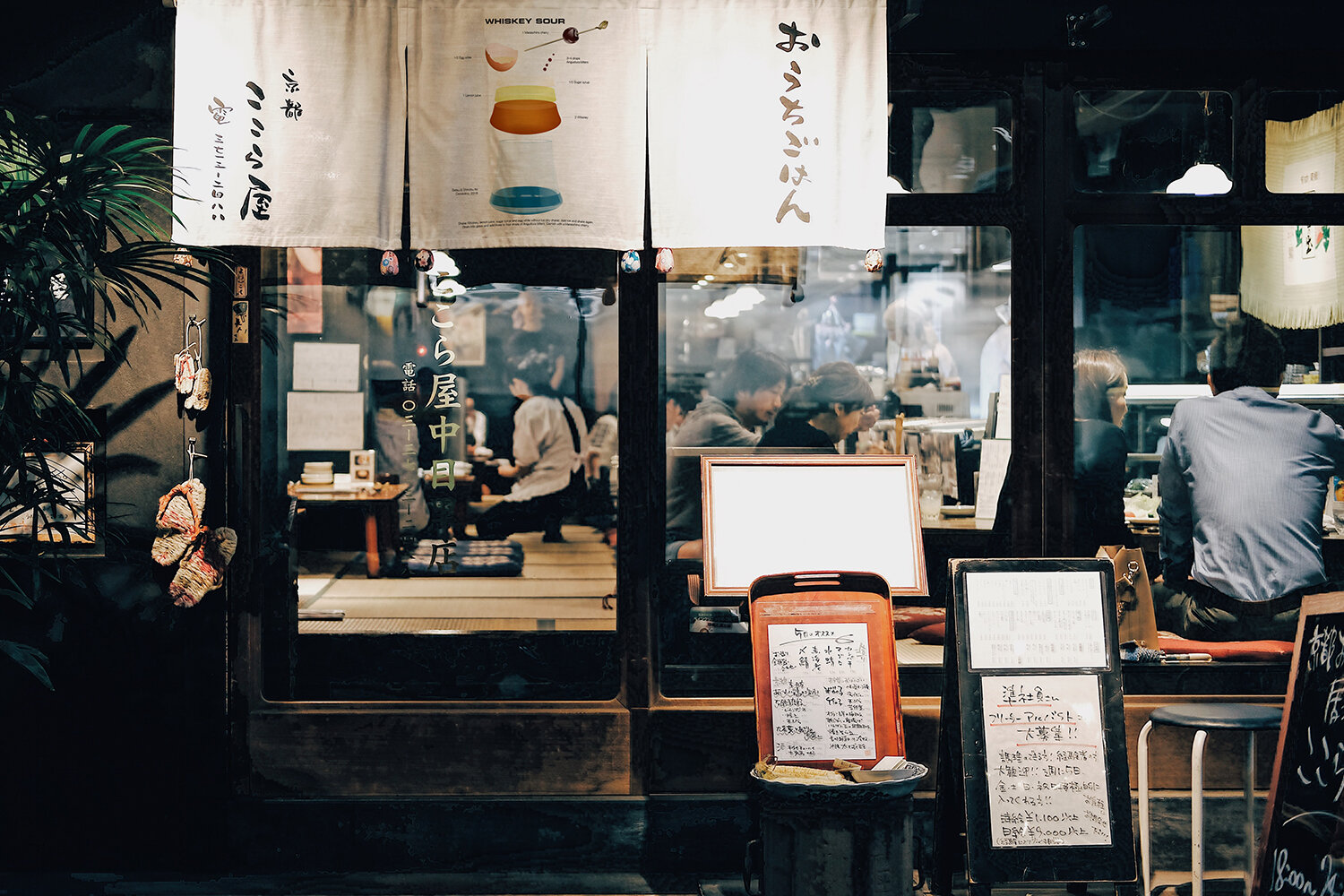
whiskey sour
This is an old one. It was first published in The Bartender’s Guide by Jerry Thomas in 1862 but the concept of the sour was known and loved for over a century prior to that. During the 18th Century sea travel, especially from Europe to America, was an ordeal with malnutrition and scurvy taking its toll on the sailors. Thanks to Vice-Admiral Edward Vernon, The British Royal Navy started to mix lemon or lime with rum and water to stave off scurvy and so the sour was born, one of the oldest types of cocktails. From there it was only a matter of time before someone started to make a sour with American whiskey and made it what it is today.
The Whiskey Sour is traditionally made with whiskey, lemon juice, sugar and egg white, an ingredient that will smooth out the tartness of the lemon juice. Today the egg white is optional and you often find bars serving the Whiskey Sour without it.
On a side note, calling a spirit diluted with water a grog is also because of Vice-Admiral Vernon. He was known for wearing grogram coats giving him the nickname ”Old Grog”.
The glass called Dondolino was designed by Setsu & Shinobu Ito in 2016 and is painted using a technique with Japanese lacquer called Urushi, generally applied on wood.
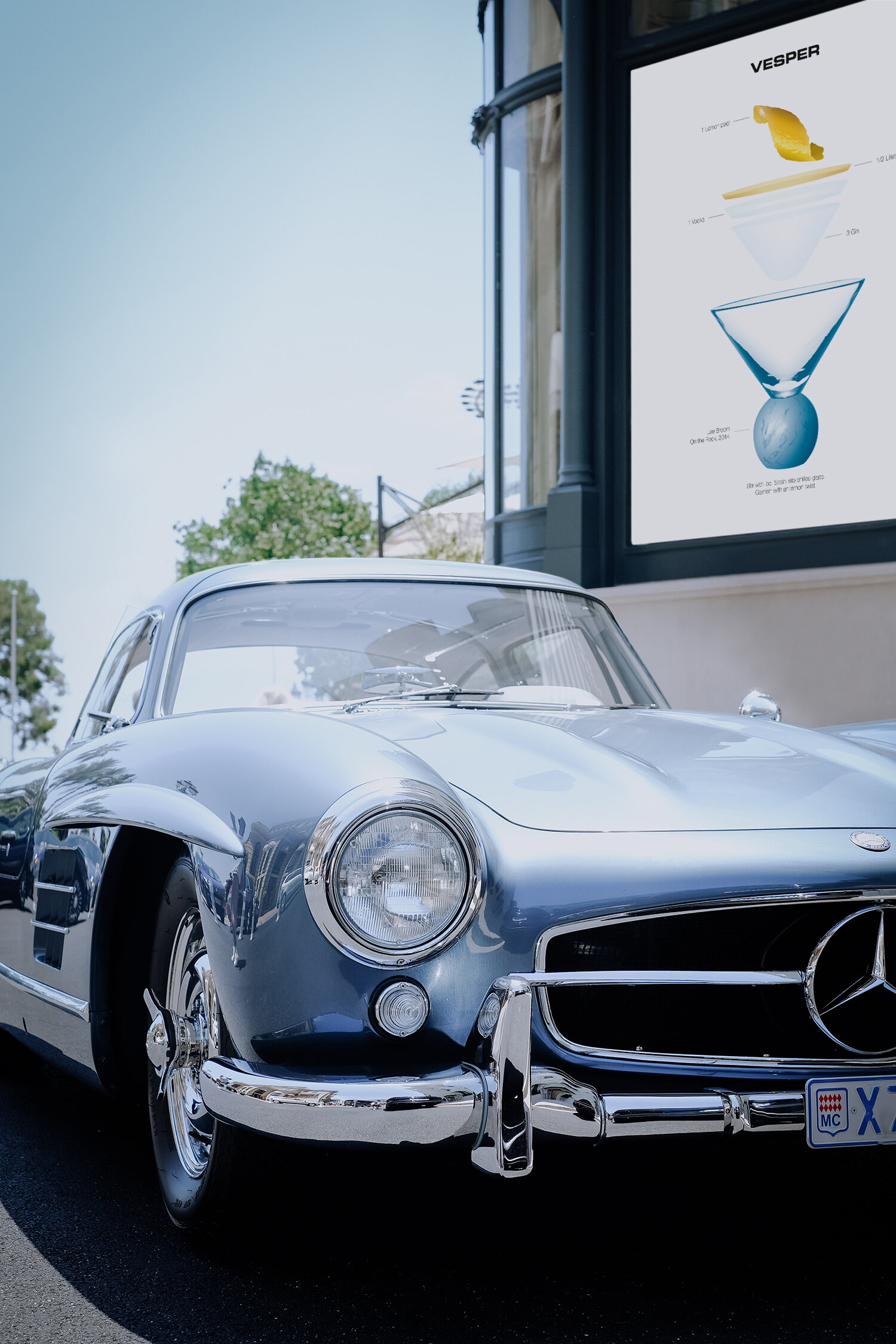
vesper
In 1952 the British former spy and writer, Ian Fleming, started writing the first book in a series of novels about a secret agent called James Bond. Casino Royale was published in 1953 and this is where the Vesper first made an appearance. It is a version of a Martini and Bond named it after the fictional double agent Vesper Lynd.
The instructions Bond gave to the bartender were “In a deep champagne goblet. Three measures of Gordon’s, one of vodka, half a measure of Kina Lillet. Shake it very well until it’s ice-cold, then add a large slice of lemon peel.” The only problem making it today is that the bitter Kina Lillet was discontinued in 1969 so you have to substitute it either with Cocchi Americano to get the original bitterness or use Lillet Blanc and maybe add some bitters to the drink.
The glass, On the Rock, was designed by Lee Broom in 2014.

sidecar
As often with old classic cocktails there are many different stories about the origin. The Sidecar, possibly the most famous of the cognac cocktails, is no different. The two most common stories both involve an army captain arriving to a bar in the sidecar of a motorcycle sometime during World War I. The bartender mixing the first Sidecar was either Harry MacElhone at the famous Harry’s New York Bar in Paris or Pat MacGarry, bartender at the Buck’s Club in London and inventor of the Buck’s Fizz. However Harry MacElhone himself gave MacGarry credit for the cocktail in his book ”Barflies and Cocktails” from 1927.
Another explanation for the name is that it rather derives from a bartending term for the leftovers in the shaker after pouring the drink. This is poured into a shot glass and served alongside the cocktail and is called the ”sidecar”.
The cocktail was first published in two books in 1922, “Harry’s ABC of Mixing Cocktails” by Harry MacElhone and “Cocktails and How to Mix Them” by Robert Vermeire. Both original recipes calls for equal parts Cognac, Cointreau and lemon juice but as time passed the ratios have been altered to two parts Cognac, one part Cointreau and one part lemon juice.
The silver cocktail glass is called Millennium and was designed in 2000 by Lella & Massimo Vignelli.
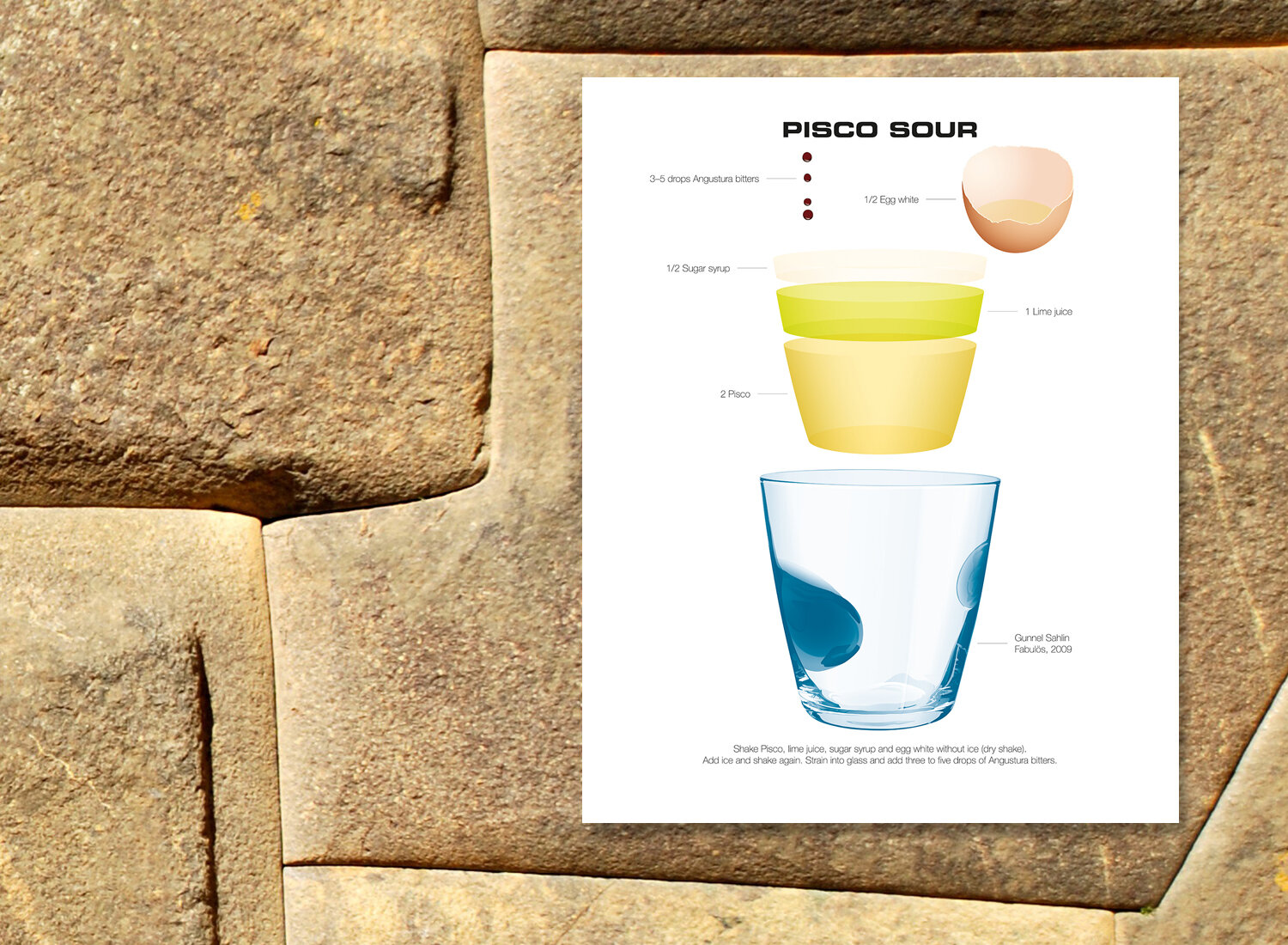
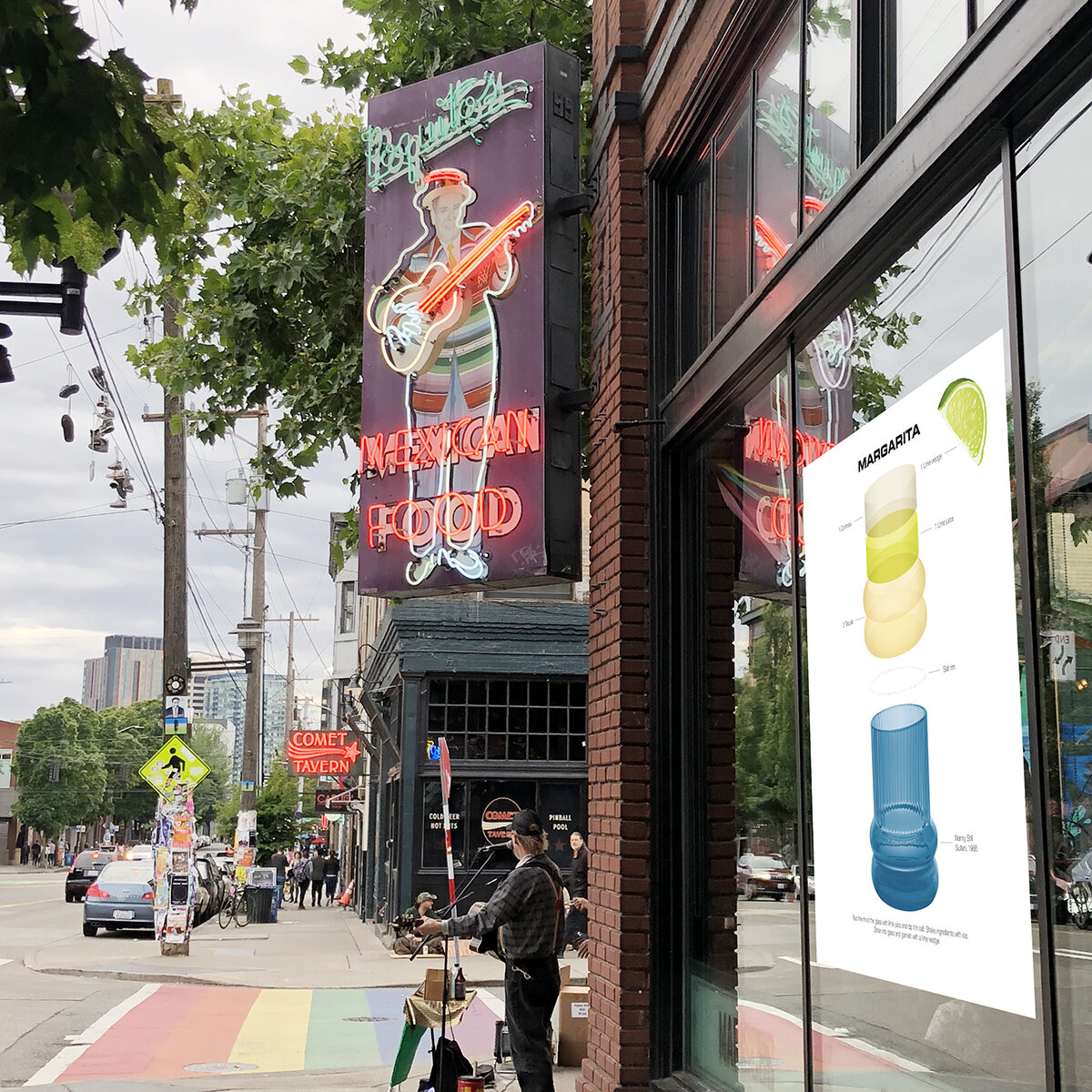
margarita
The Margarita is basically a tequila-based Daisy, a type of cocktail made with spirit + usually orange liqueur + lemon or lime juice. As it happens the Spanish word for Daisy is Margarita.
The first mention of the Tequila Daisy was in 1936 when the editor of the Moville Mail told the story of trying the drink in a saloon in Tijuana where it was first made by mistake when the barman reached for the wrong bottle when making a Daisy.
A fun fact is that cocktail with the exact proportions of a Margarita but with the name Picador was included in the British Café Royal Cocktail Book by William J. Tarling in 1937 meaning the famed cocktail might actually be a British invention.
The first time the cocktail was seen in print and called Margarita was not until 1953 when it was published in Esquire magazine.
Their are lots of other claims to the origins of the Margarita. For example that it was first concocted by Carlos (Danny) Herrera in 1938 at his Rancho La Gloria bar in Rosarito, Mexico for a showgirl called Marjorie King. King was allergic to all alcohol except tequila, but didn’t like to drink the stuff straight.
Or that it was named for actress Rita Hayworth, who was offered one by an admiring bartender during a theater job in Tijuana in the 1940s. (Hayworth’s real name was Margarita Cansino.)

mimosa
The Mimosa, essentially a fruitier Buck’s Fizz, was created in 1925 by a bartender called Frank Meier at the Ritz Hotel in Paris. (Buck’s Fizz was first made in 1921 at the Buck’s Club in London). The Mimosa calls for equal measures of Champagne and freshly squeezed orange juice served over ice whilst the Buck’s Fizz uses 1 part orange juice to 2 parts Champagne without the ice.
Some suggest the Mimosa was first made in San Francisco in the 1940’s by none other than Sir Alfred Hitchcock. A story that isn’t very likely since it first appeared in Frank Meier’s own cocktail book ”Artistry of Mixing Drinks” in 1936. That said Hitchcock did make the Mimosa popular in the US where it is still a staple brunch cocktail.
The Smoke Champagne glass was designed by Joe Colombo in 1964.
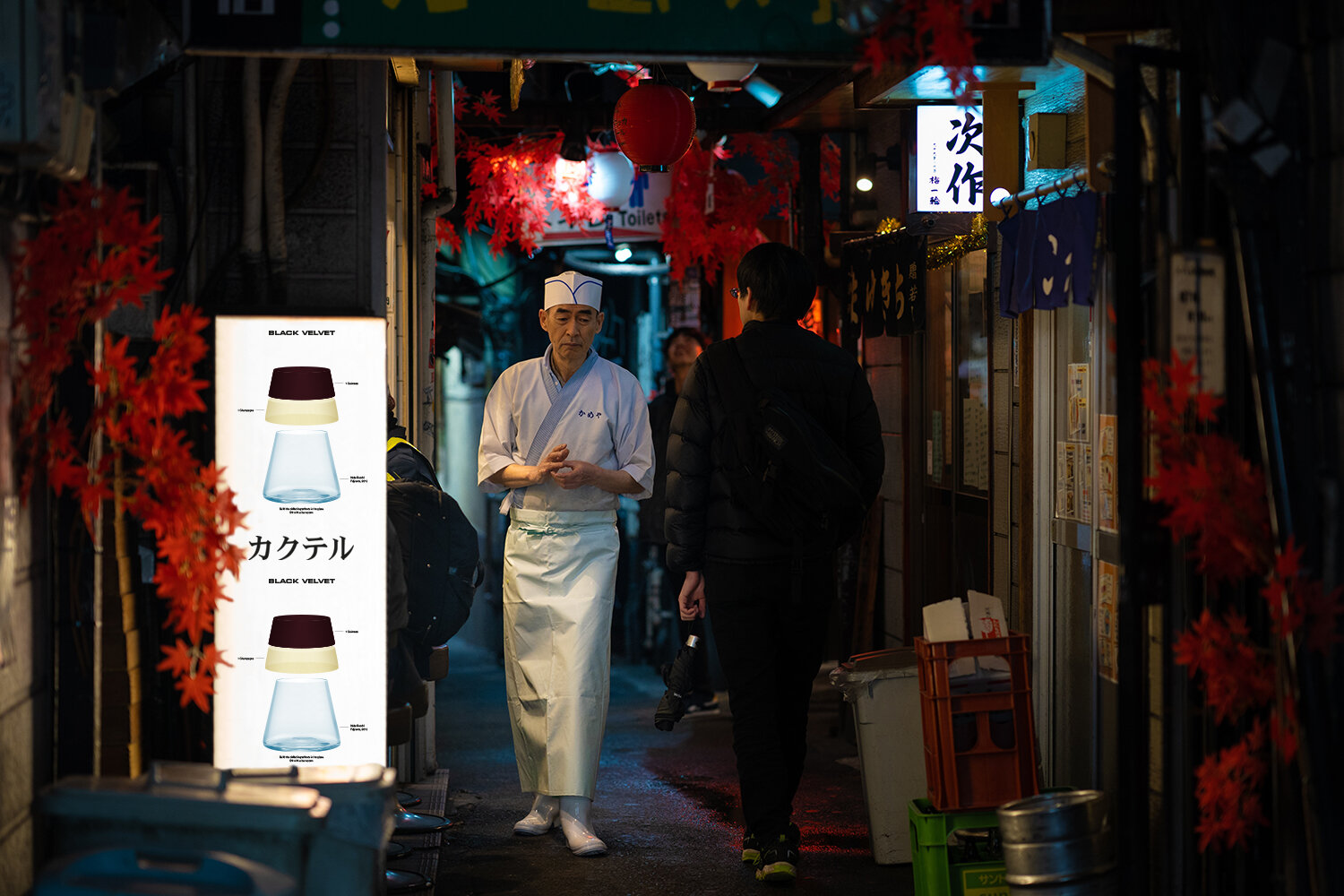
black velvet
The Black Velvet was first served in 1861 as a tribute to Prince Albert, the husband of Queen Victoria, after his death of typhoid fever. It was created after a steward at Brook’s Club in London ordered that even Champagne should be in mourning, dressed in all black.
The Fujiyama glass was designed by Keita Suzuki in 2012 and made at the Japanese glassworks Sugahara. The design is inspired by Mount Fuji and when used for beer the head will form a snowy top on the mountain.
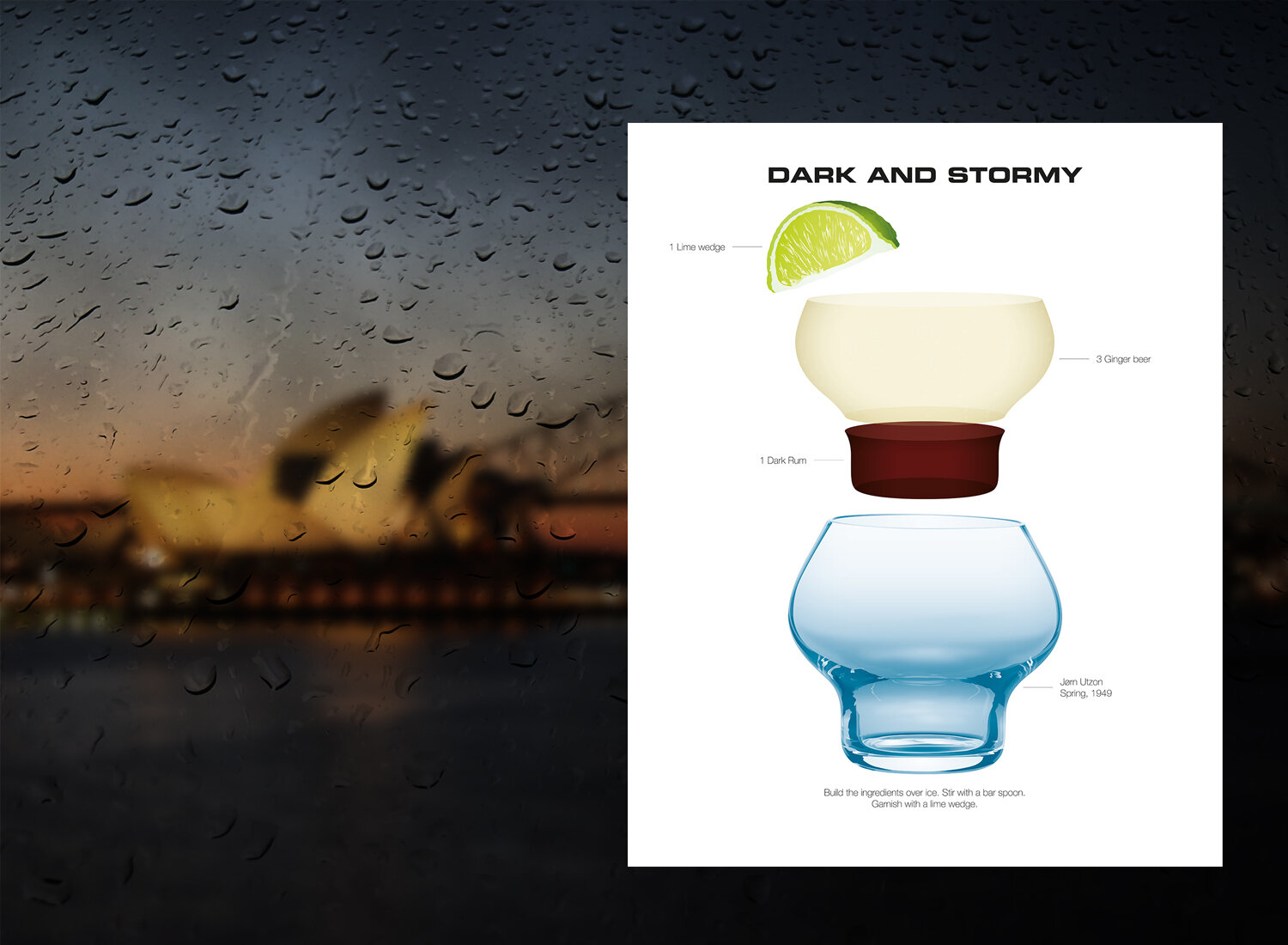
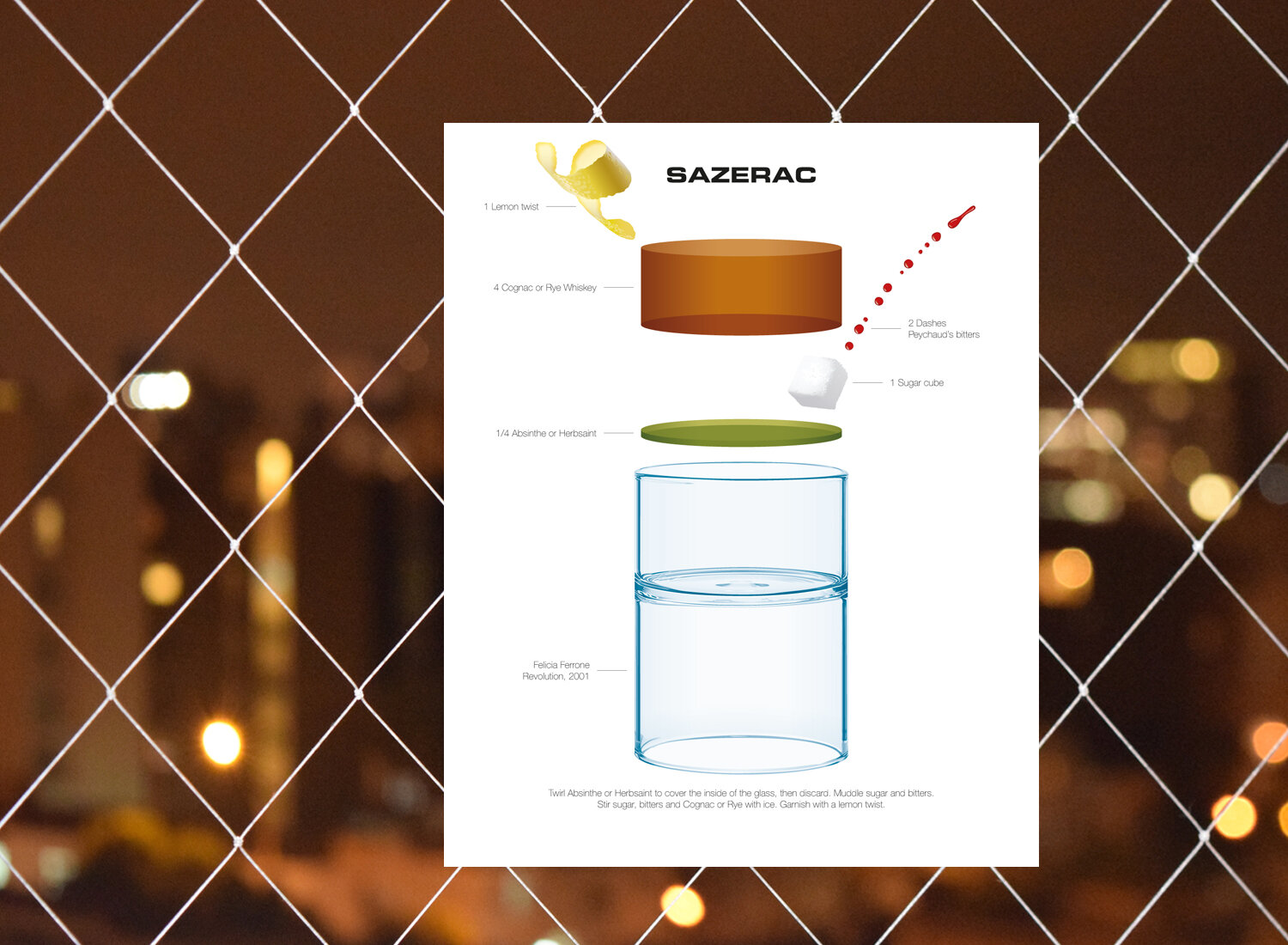
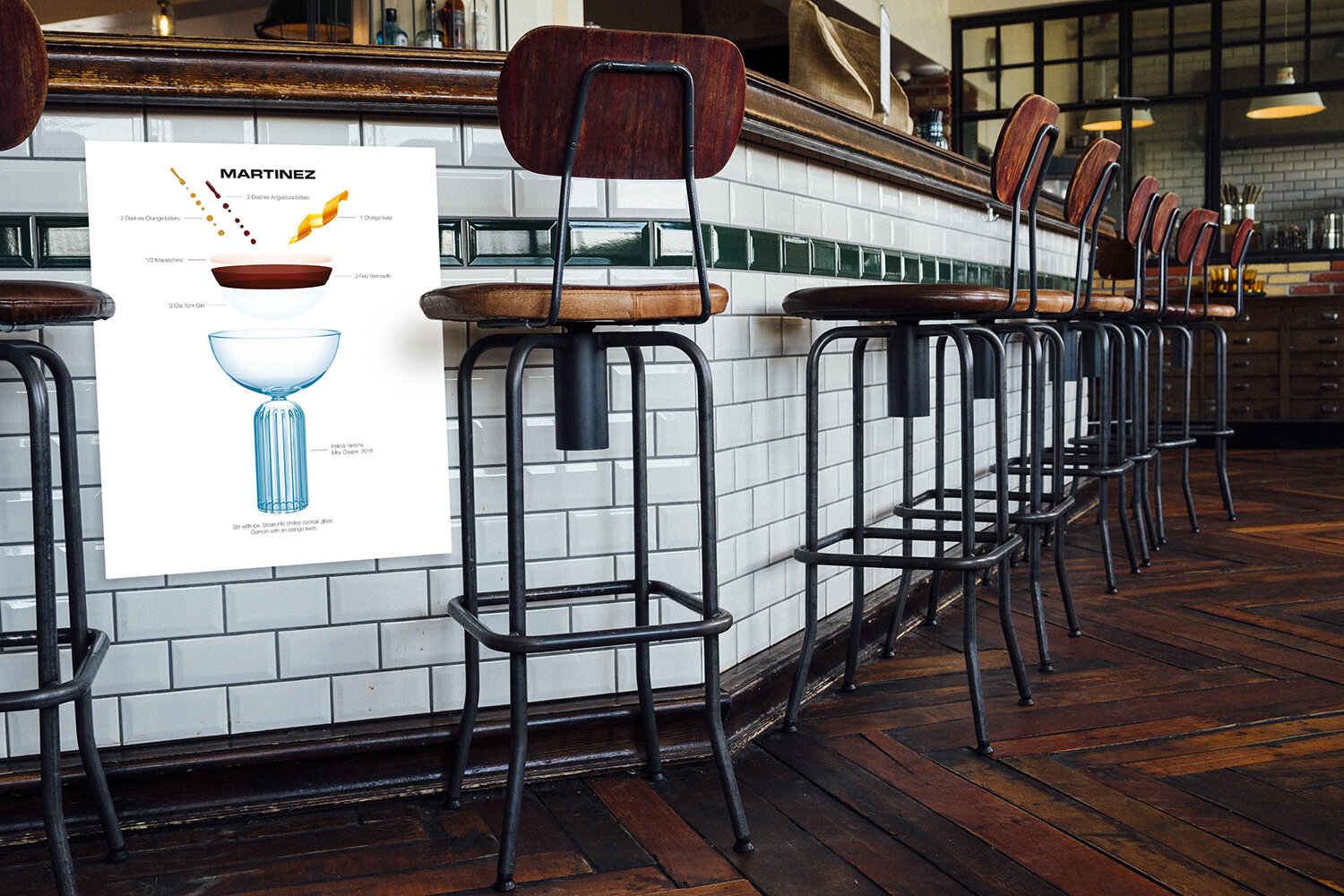
martinez
The Martinez is sometimes called the missing link between the Manhattan and the Martini. It first appeared 1884 in OH Byron’s Modern Bartender’s Guide. A few years later in 1887 the legendary bartender Jerry Thomas made the recipe into what it is today. The story goes that Thomas made it for a customer traveling to the city of Martinez, California. To make this classic it is preferable to use Old Tom gin, a type of gin that is something in between Dutch genever and London dry gin.
The Coupe glass was designed by Felicia Ferrone in 2018.
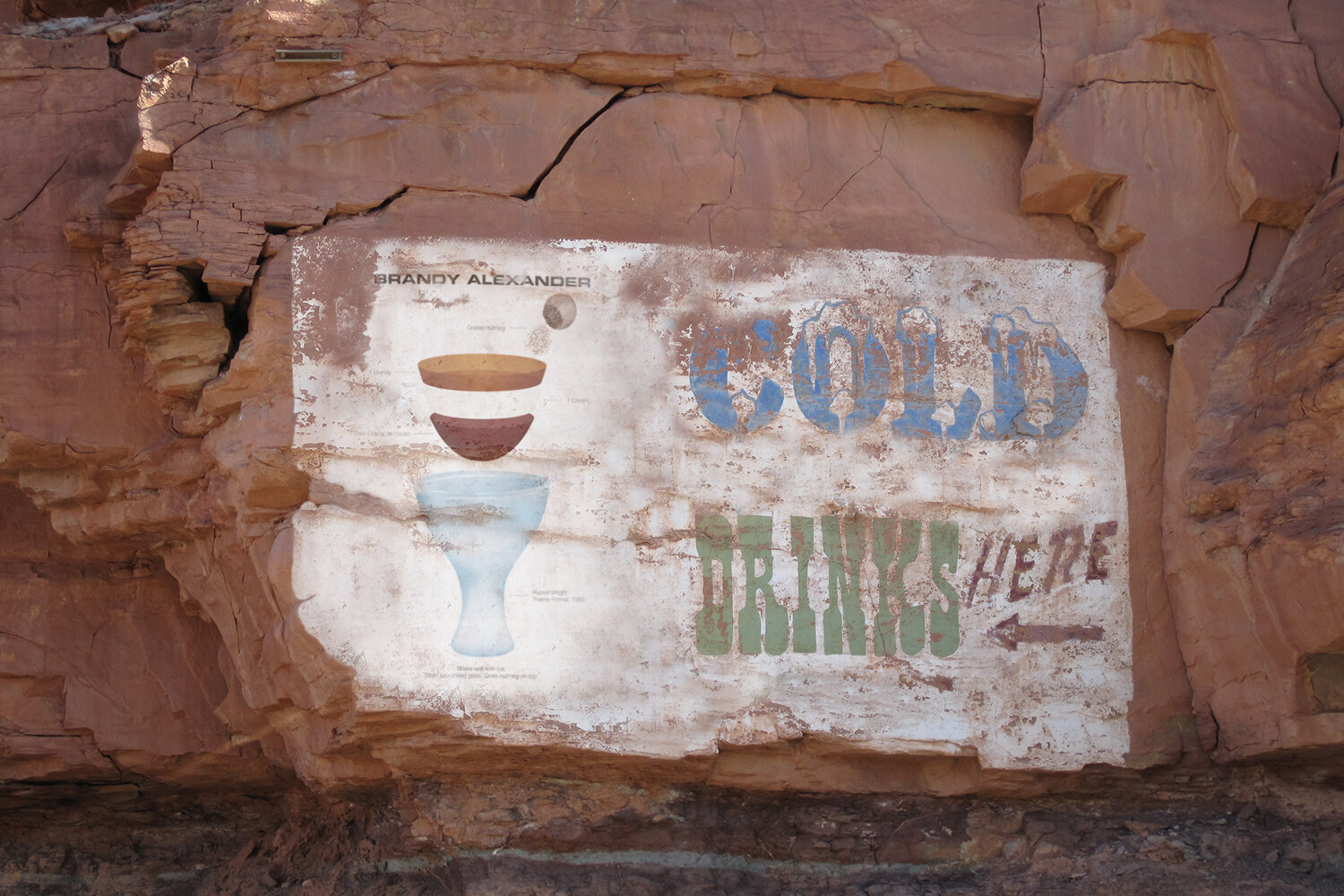
brandy alexander
The first Alexander was made with gin, not brandy and is said to have been created by Troy Alexander while working as a bartender at famed New York City restaurant Rector’s operating from 1899 to 1919. It was made celebrating the fictional character Pheobe Snow, a beautiful woman all dressed in white promoting the use of clean-burning coal on the Delaware, Lackawanna and Western Railroad. Mr Alexander wanted to make a white cocktail to fit the character. Interestingly one of the ads featuring Phoebe Snow promoted that the railway line could take you to Scranton, Joe Biden’s home town.
The recipe was first printed in “Recipes for Mixed Drinks” by Hugo Ensslin in 1915.
When Henry George Charles Lascelles, 6th Earl of Harewood, and Princess Victoria Alexandra Alice Mary, daughter of King George V and Queen Mary got married in London in 1922 the gin in the Alexander was replaced with brandy in honor of the event.
The cocktail was so popular with John Lennon he called it his milkshake.
The glass, Theme Formal, was designed in 1965 by Russel Wright.
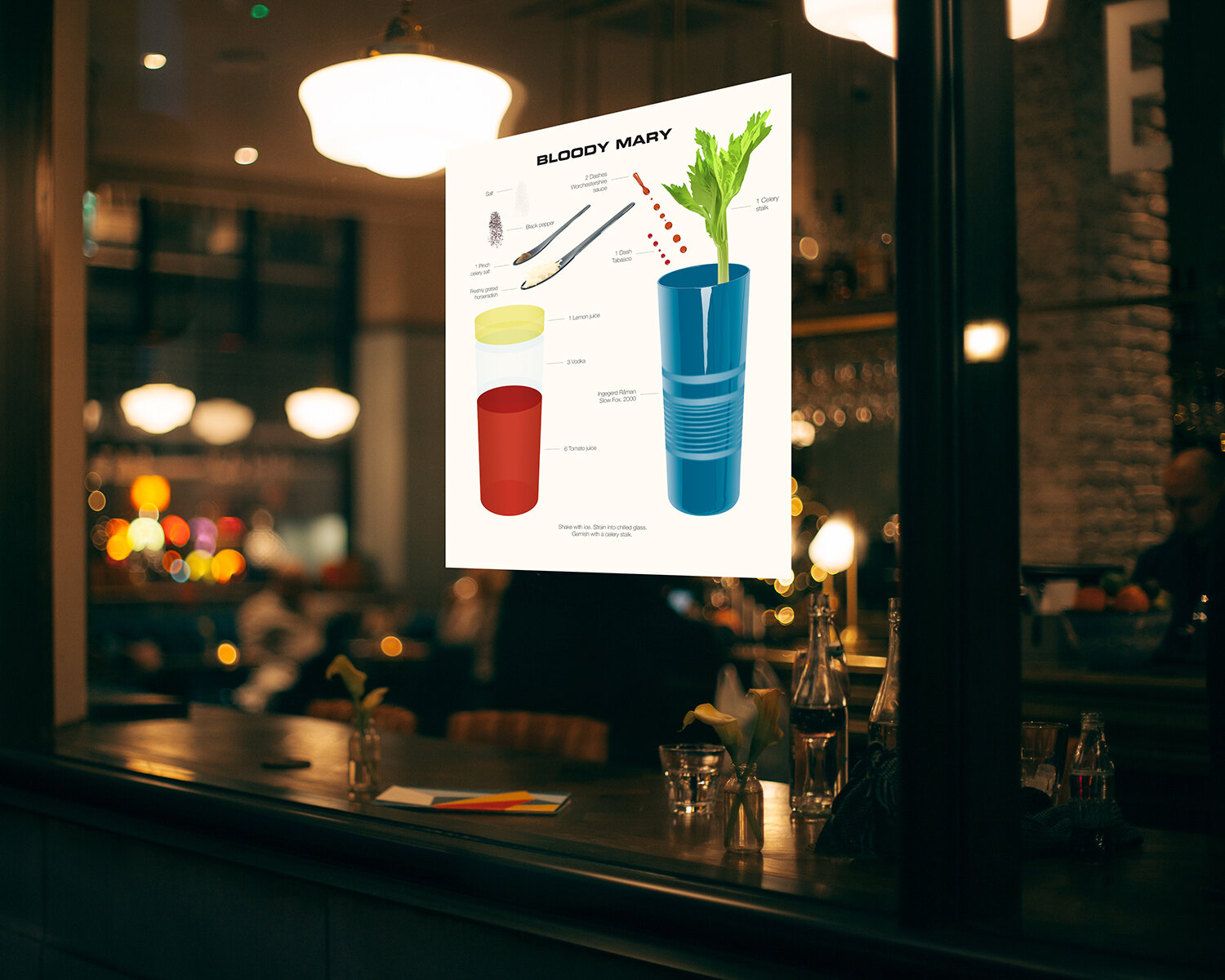
bloody mary
Mary Tudor took the throne as Mary I, the first ever queen of England and Ireland, in 1553. Looking to return England to the Catholic Church she persecuted Protestants whom she burned at the stake in the hundreds, hence the moniker “Bloody Mary”.
The drink Bloody Mary was probably invented by a bartender named Fernand “Pete” Petiot, who created his first version in the early 1920s at Harry’s New York Bar in Paris. After Prohibition, Petiot moved to New York where he presided over the King Cole Bar at the St. Regis Hotel. While at St. Regis, he enhanced the drink with horseradish, Tabasco, lemon juice and celery salt.
The glass, Slow Fox, was designed by the Swedish designer Ingegerd Råman in 2000.
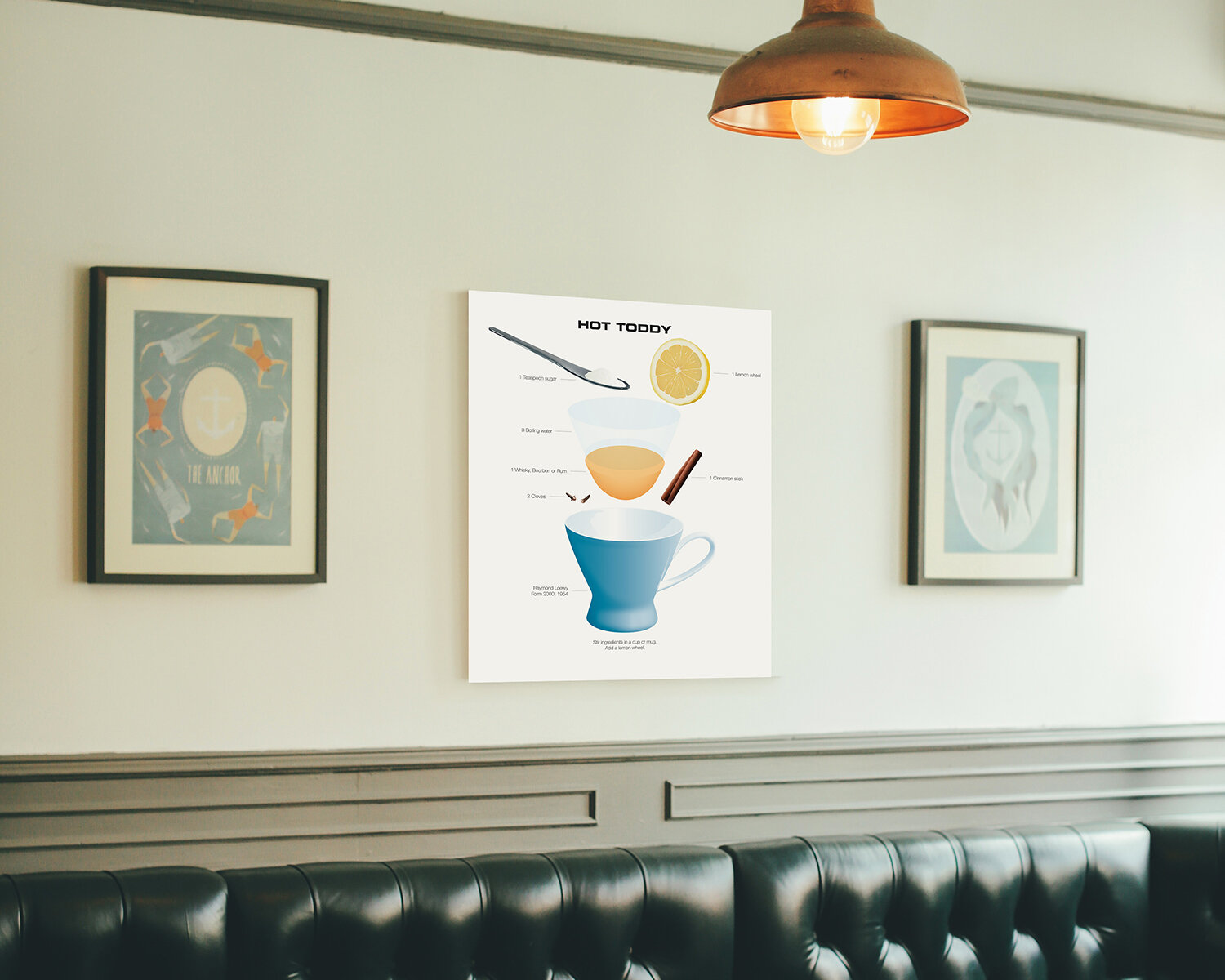
hot toddy
The history of the Toddy dates all the way back to British-controlled India in the early 17th century. The Hindi word ”taddy” meant “beverage made from fermented palm sap”. By 1786 the Brits had changed the official meaning of taddy and defined it as “beverage made of alcoholic liquor with hot water, sugar, and spices”. The British claimed it as their own and started serving it in pubs during the winter months using Scotch whisky, hot water and exotic spices from India.
Another origin story tells of a 19th-century Irish physician named Dr. Robert Bentley Todd who used to prescribe his patients a mix of brandy, cinnamon, sugar and hot water, making it a Toddy. In an article in the Burlington Free Press in 1837 about ”How to Take Cold” made out the hot toddy to be a cure-all but even though we all know that a cure-all is really a cure-nothing a hot toddy is still a fabulous drink on a cold winter day.
The Form 2000 cup was designed in 1954 by design legend Raymond Loewy for Rosenthal.
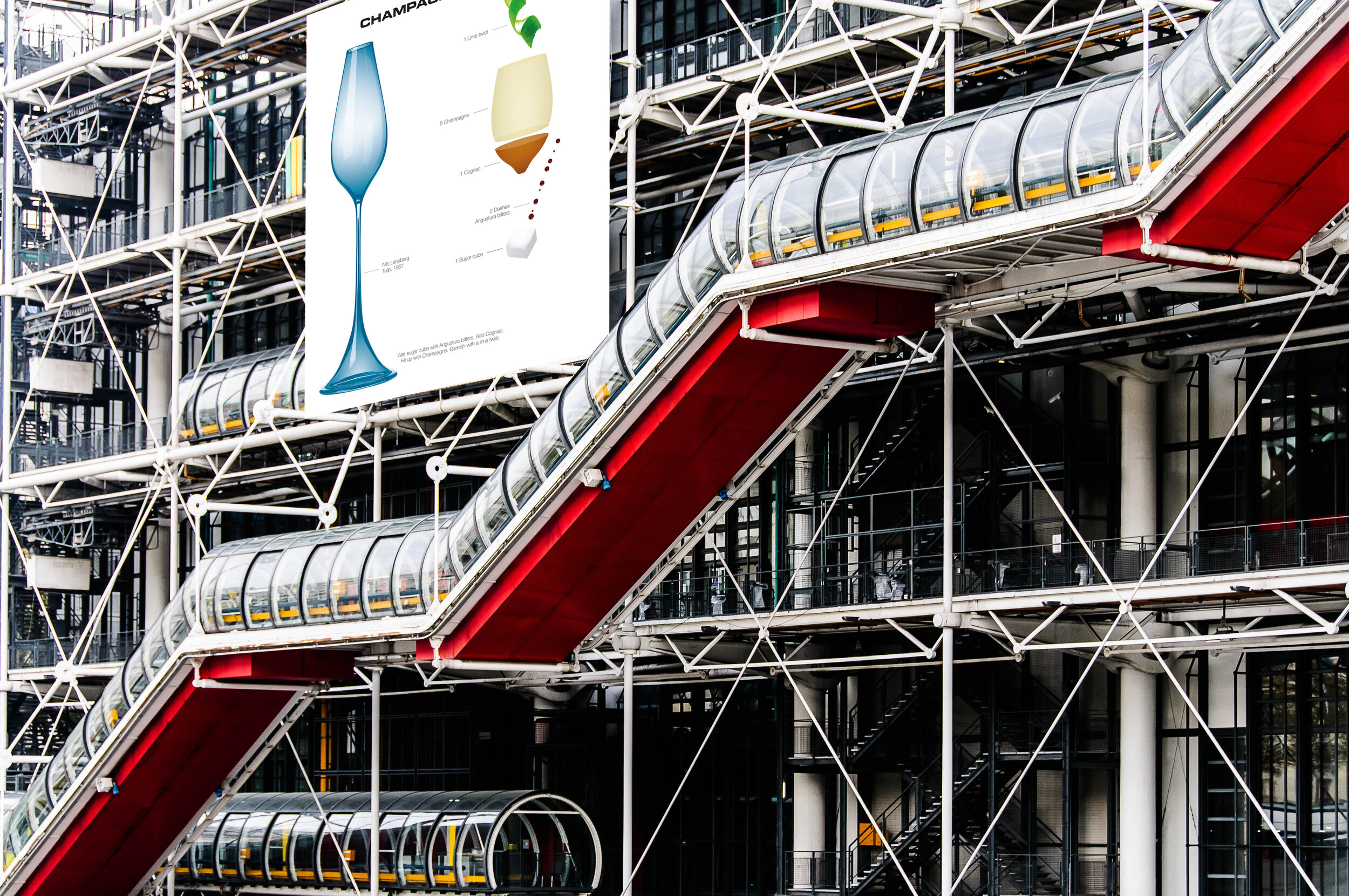
champagne cocktail
Champagne cocktails were mentioned by Mark Twain in 1869 in his book Innocents Abroad but was surely drunk long before that. This version, also called Maharajah’s Burra-Peg (burra meaning big or important in hindi and peg being old British slang for drink) is taken from Charles H. Baker’s book The Gentleman’s Companion from 1939.
The Tulip glass was designed by Nils Landberg for the Swedish company Orrefors in 1957.
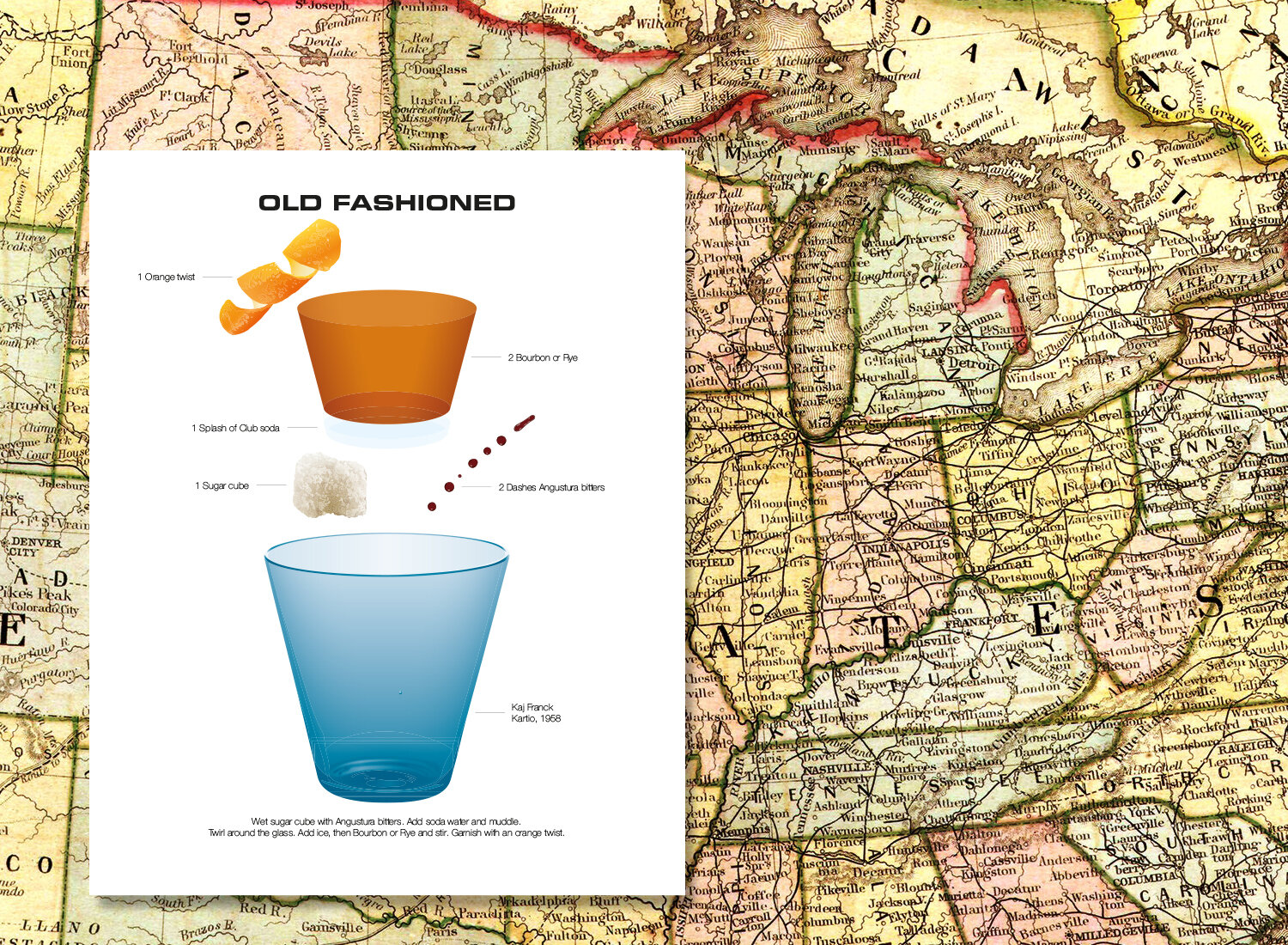

el presidente
One of the origin stories of El Presidente is that it was created by the American bartender Eddie Woelke who worked at the Jockey Club in Havanna during the Prohibition. He made it in honor of Mario García Menocal, president of Cuba from 1913 to 1921. It was originally made with equal parts rum, French vermouth and a bar spoon of grenadine. Legend has it that when president Gerardo Machado took over in 1925 he demanded his own version and so a bar spoon of Curaçao was added to the cocktail.
The glass called Shizukana Sora (Quiet Sky) was designed by Misa Tanaka in 2009 and is a combination of glass and ceramics.
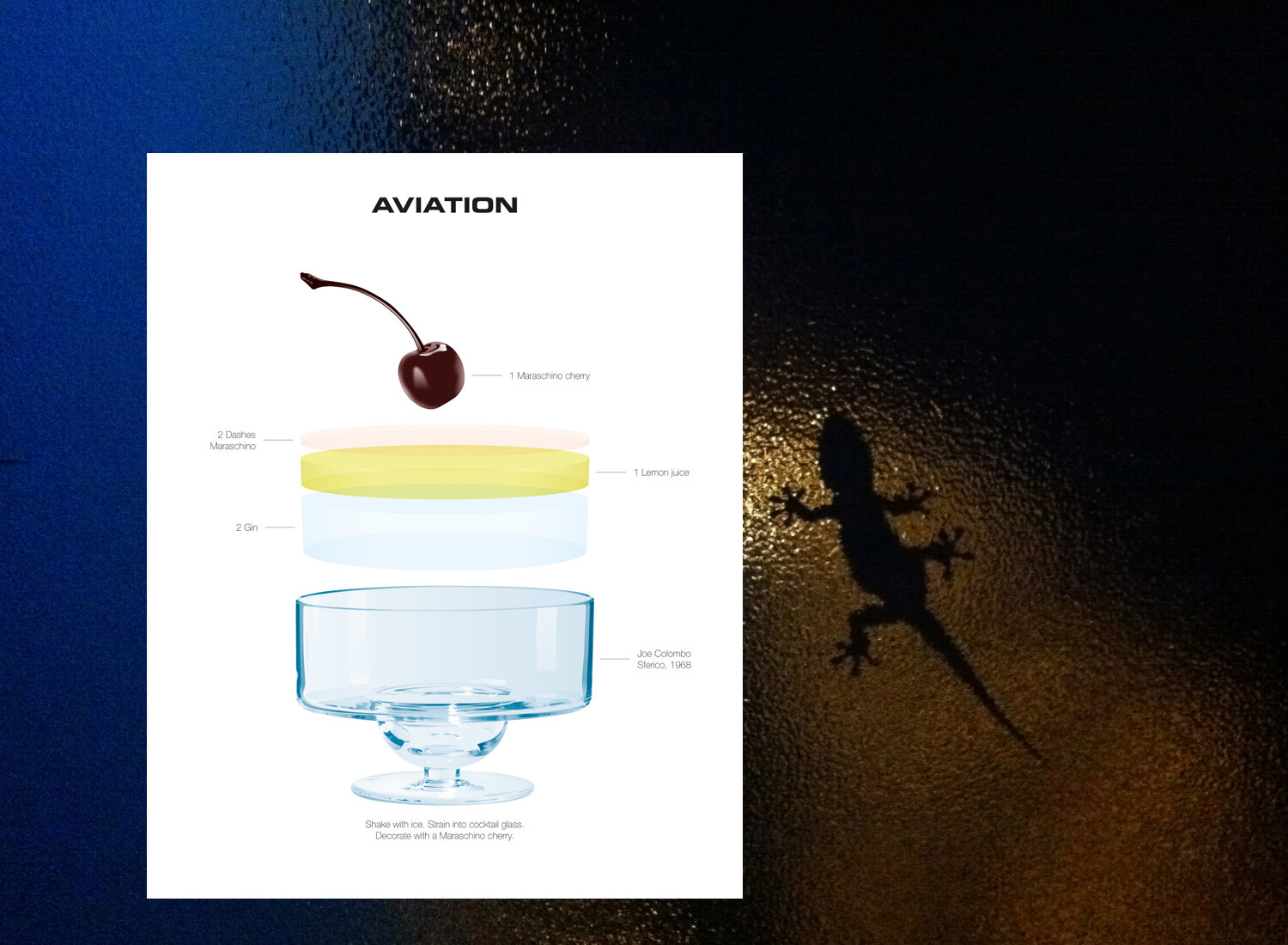
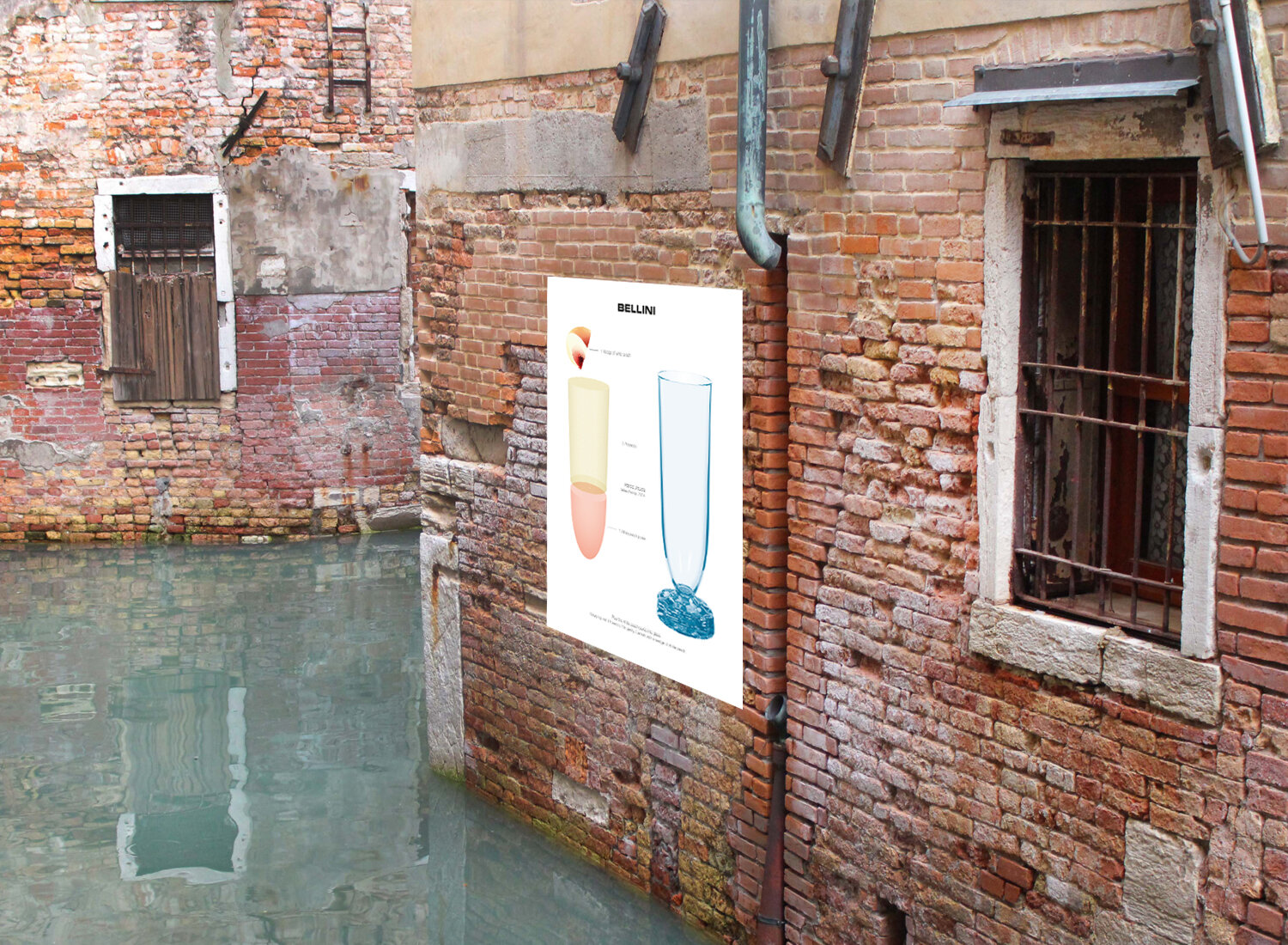
bellini
The Bellini was created in 1948 by Giuseppe Cipriani at the world famous Harry’s Bar in Venice. The drink was named Bellini because its pink color reminded him of the toga of a saint in a painting by 15th-century Venetian artist Giovanni Bellini.
The Jellies Family Flute was designed by Patricia Urquiola in 2014 for Kartell.
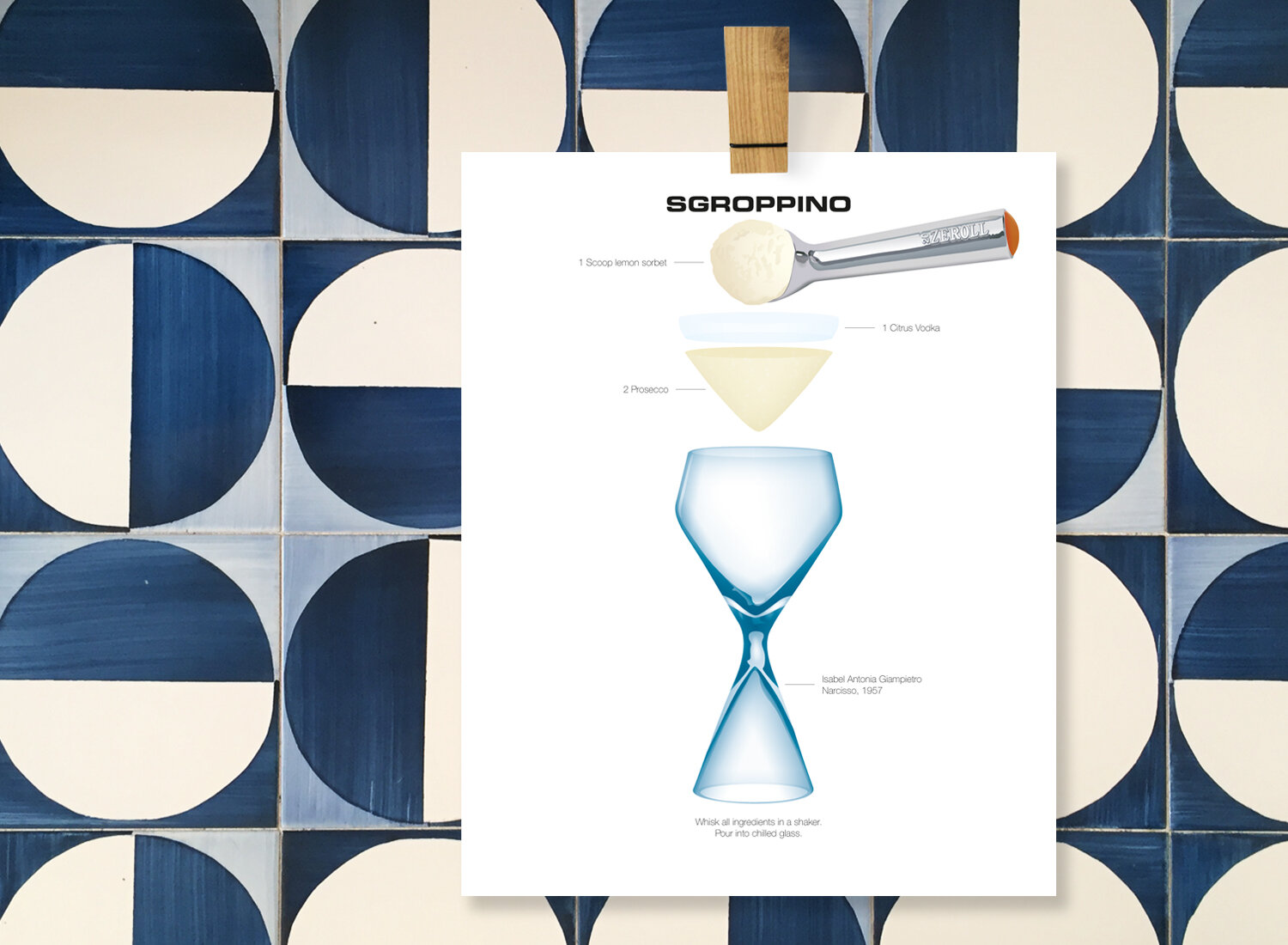
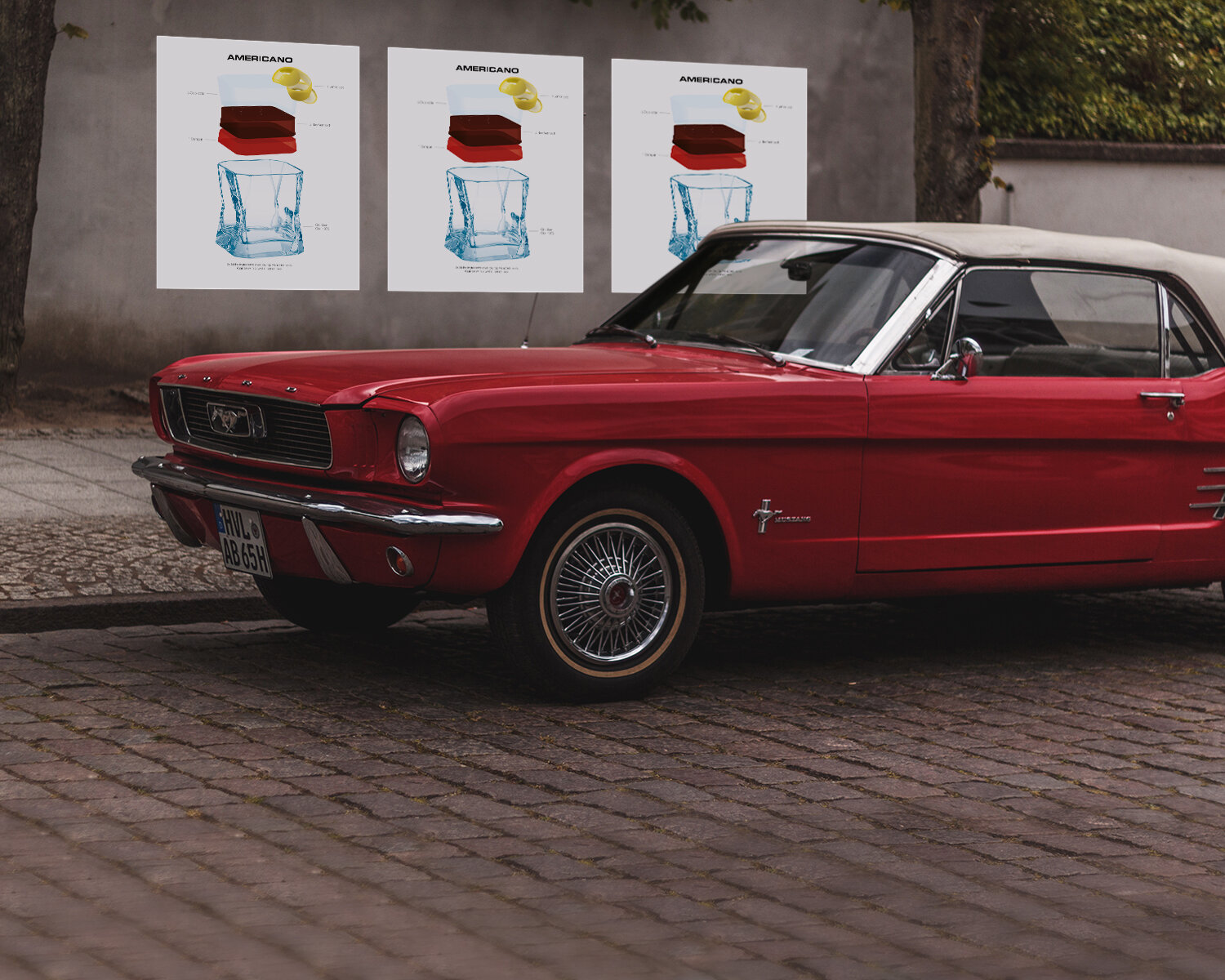
americano
The Americano is a precursor of the Negroni (that was created for Count Camillo Negroni who wanted something more potent than the classic Americano). It is actually the very first drink that James Bond ever ordered. It wasn't a Vesper. This was in Ian Fleming’s Casino Royale from 1953.
The Cibi glass was designed by Italian architect and designer Cini Boeri in 1973 and was considered so futuristic it was featured in Ridley Scott’s Blade Runner from 1982.
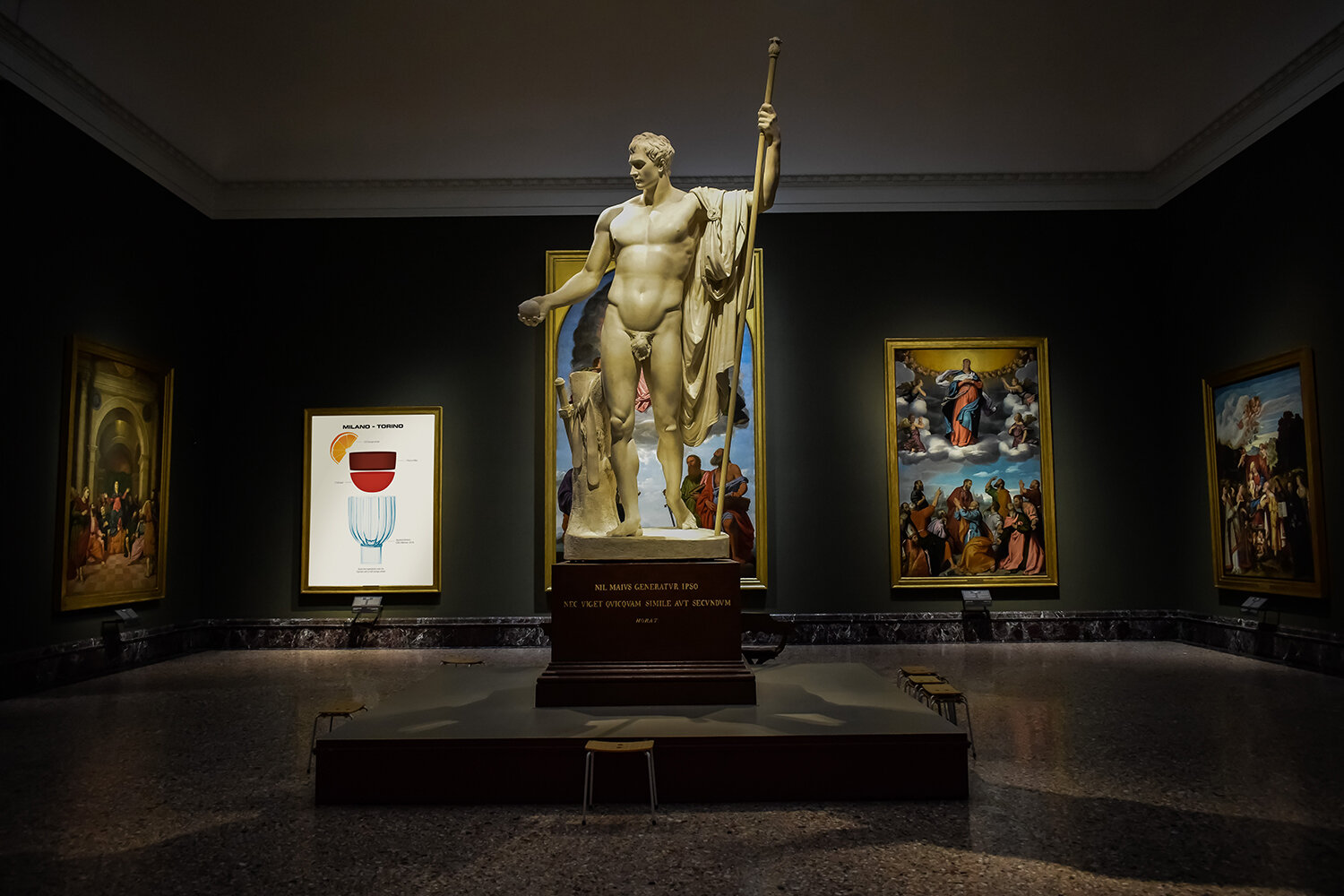
milano-torino
As with a lot of older cocktails the origin is unknown and there are several different origin stories. The same goes for Milano-Torino. One story is that it was first served at Gaspare Campari’s Caffè Camparino in Milan in the 1860’s. Another that it was created in 1932 to celebrate the inauguration of the A4 Highway that connects Milano and Torino. Whatever the origin it is made with equal parts Campari from Milano and Punt e Mes from Torino.
The glass is one in a series of three glasses called Calci Milanesi and was designed by Agostina Bottoni in 2018 as a tribute to Milanese architecture.
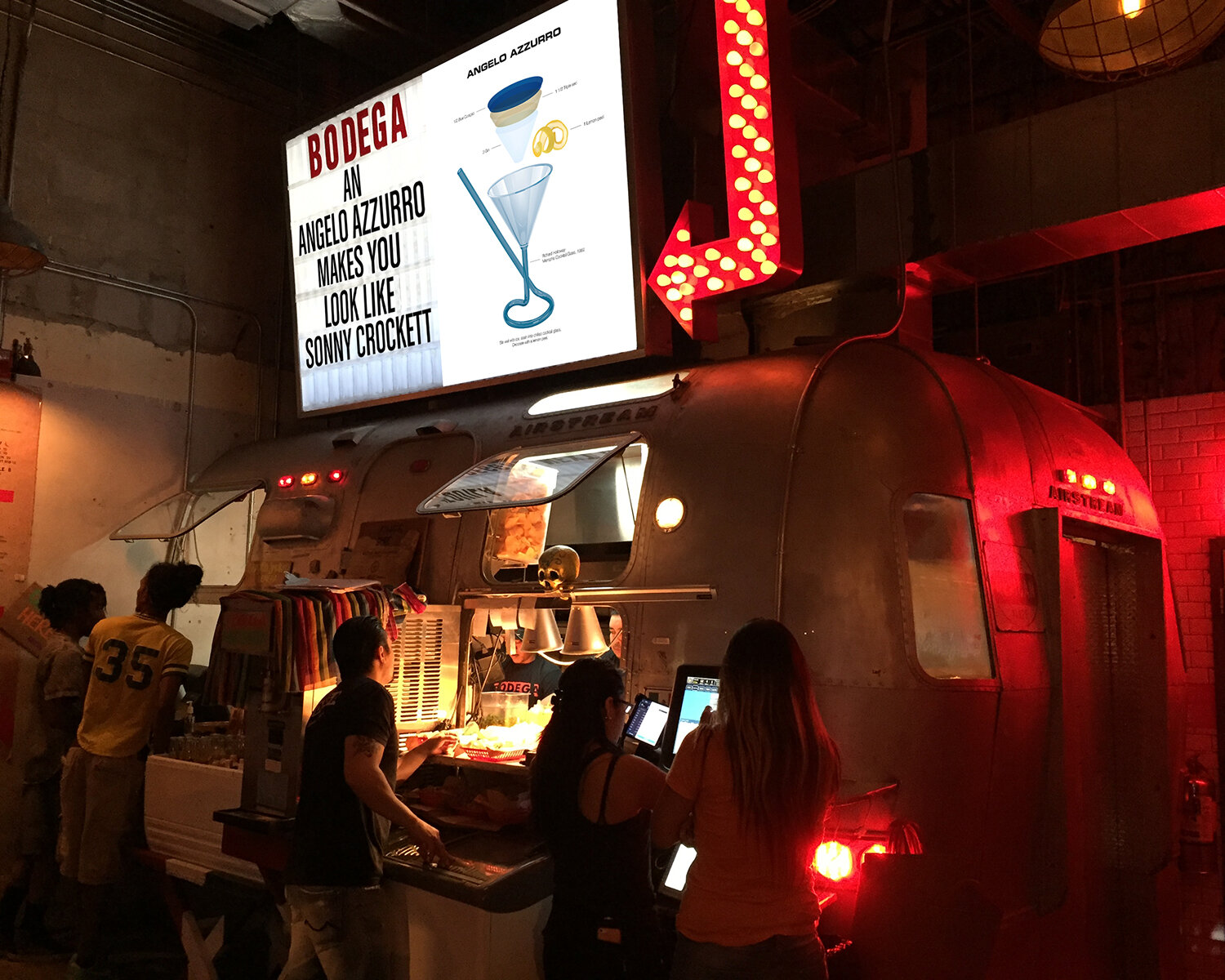
angelo azzurro
The Angelo Azzurro was created in the fifties or sixties but was made trendy in the eighties when Sonny Crockett (Don Johnson) ordered it in Miami Vice. Here in a Memphis glass designed by Richard Holloway in 1982.
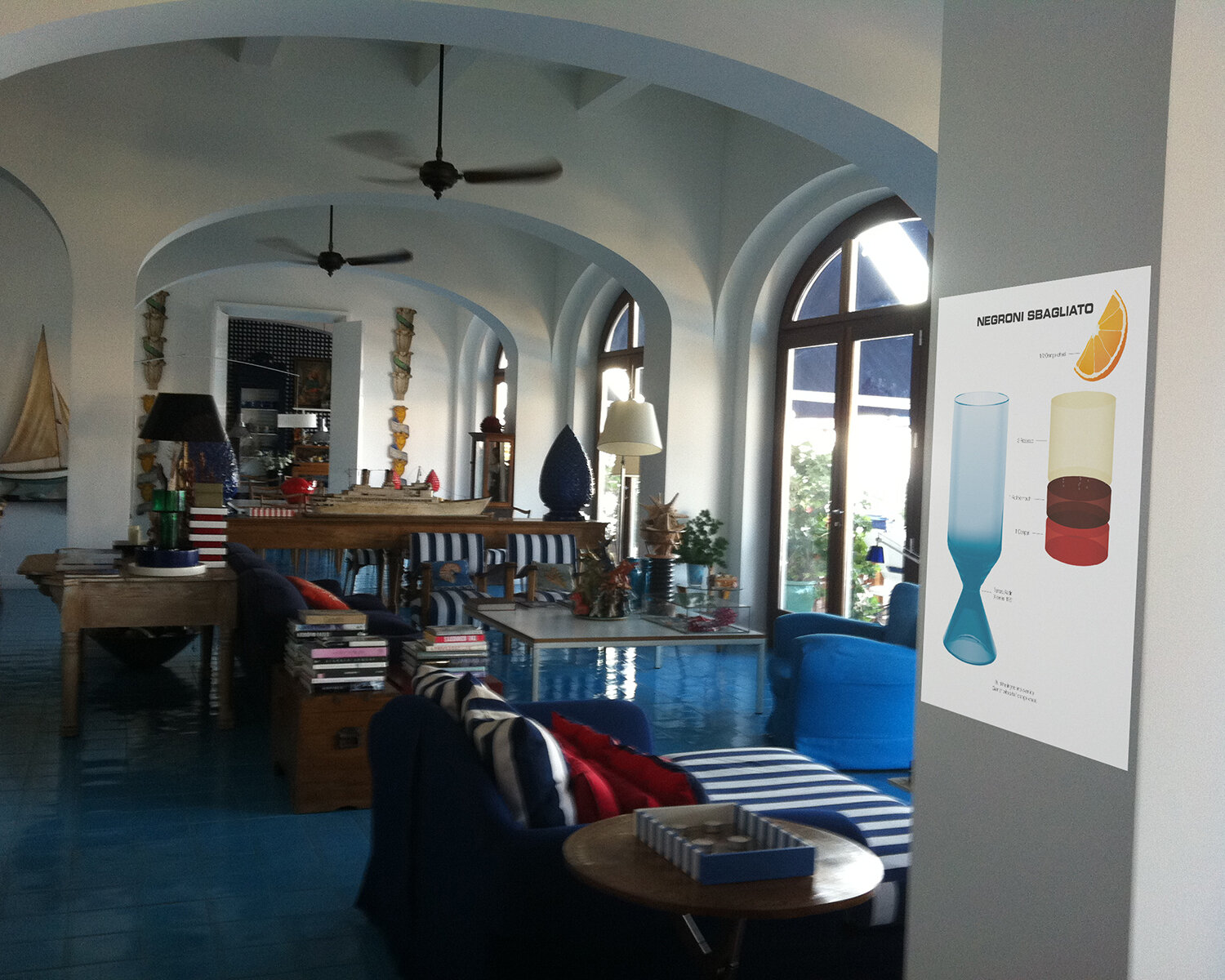
negroni sbagliato
The Negroni Sbagliato was created in 1972 when Mirko Stocchetto at the Bar Basso in Milan added sparkling wine instead of the gin by mistake to a Negroni. A little lighter than a regular Negroni and close to the Spritz Veneziano. Served in a glass by Finnish designer Tamara Aladin in 1961.
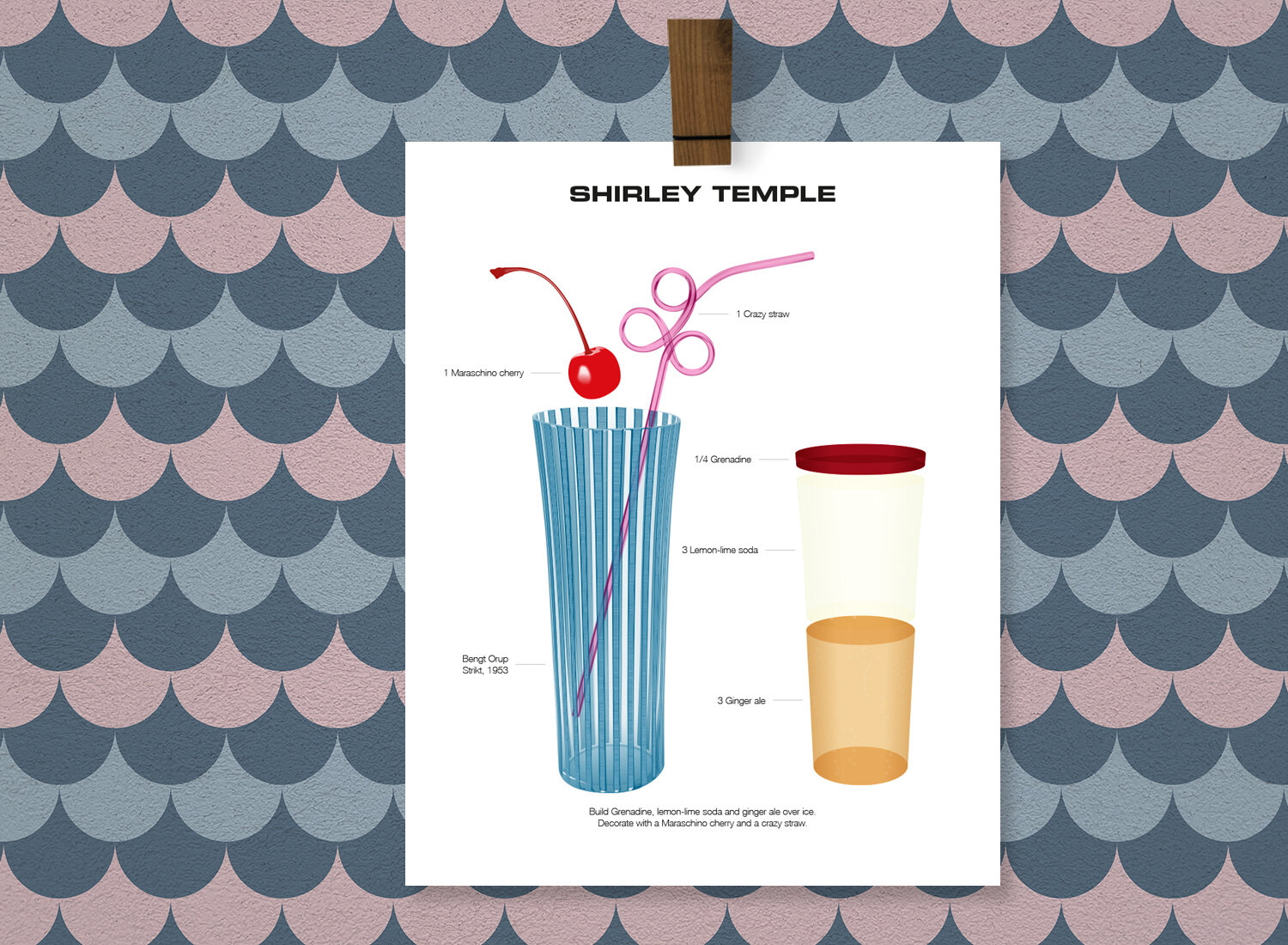
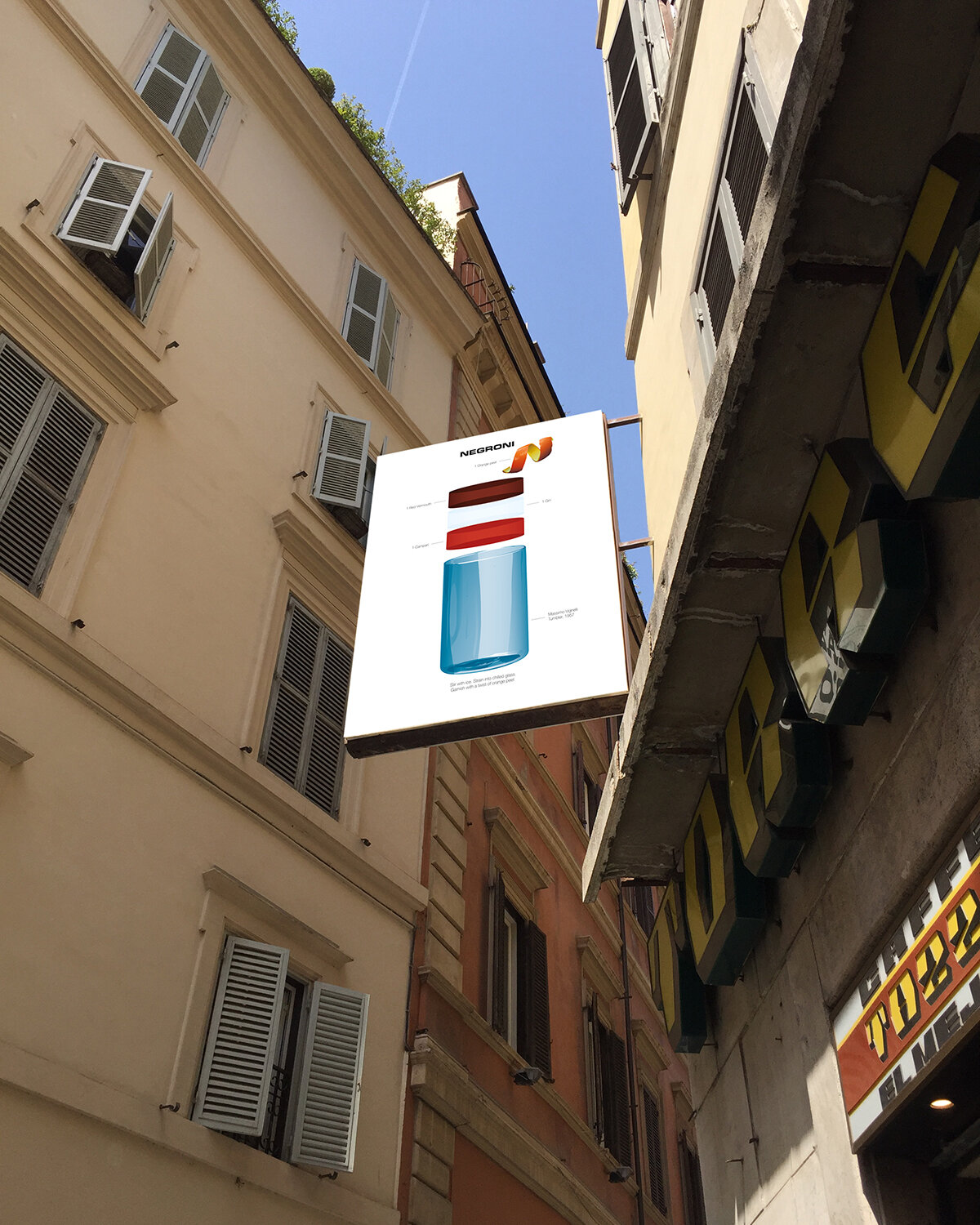
negroni
Count Camillo Negroni was the adventurous type. In 1892 he arrived from Italy to Ellis Island to try his fortunes in the US. There he supposedly worked as a banker, a cowboy and as a riverboat gambler before returning back to Florence.
In 1919, he stepped into his favorite bar, the Caffè Casoni in Florence, ready to try something new. His friend and bartender Fosco Scarselli substituted gin for soda from the Americano and thus created the perfect aperitivo cocktail, the Negroni.
Even though Negroni returned to Italy he was so influenced by his time in the US that when an American newsman bumped in to him on a trip to Italy in 1928, he walked around dressed in his cowboy attire.
The tumbler was designed by Massimo Vignelli in 1957 and produced by Venini on the island of Murano, just outside Venice, Italy.
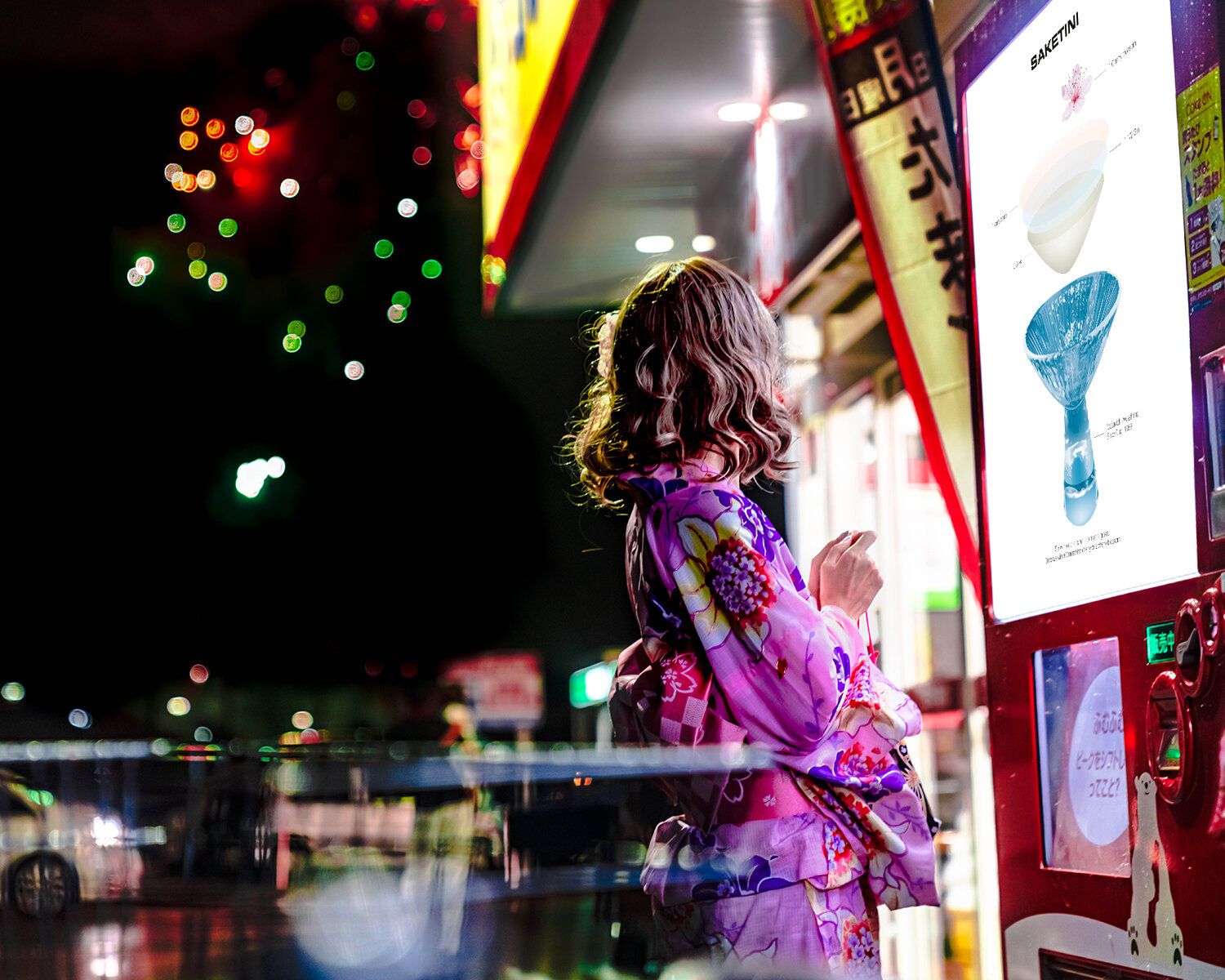
saketini
A blend of Japan and the US with a little bit of Italy mixed in. The origins of the Saketini cocktail are not clear, but it is said to have been invented by Matsuda San, a chef from Queens who introduced the drink at the New York World’s Fair in 1964. Here stirred with ice and served in a sake cup designed by Masakichi Awashima in 1958.
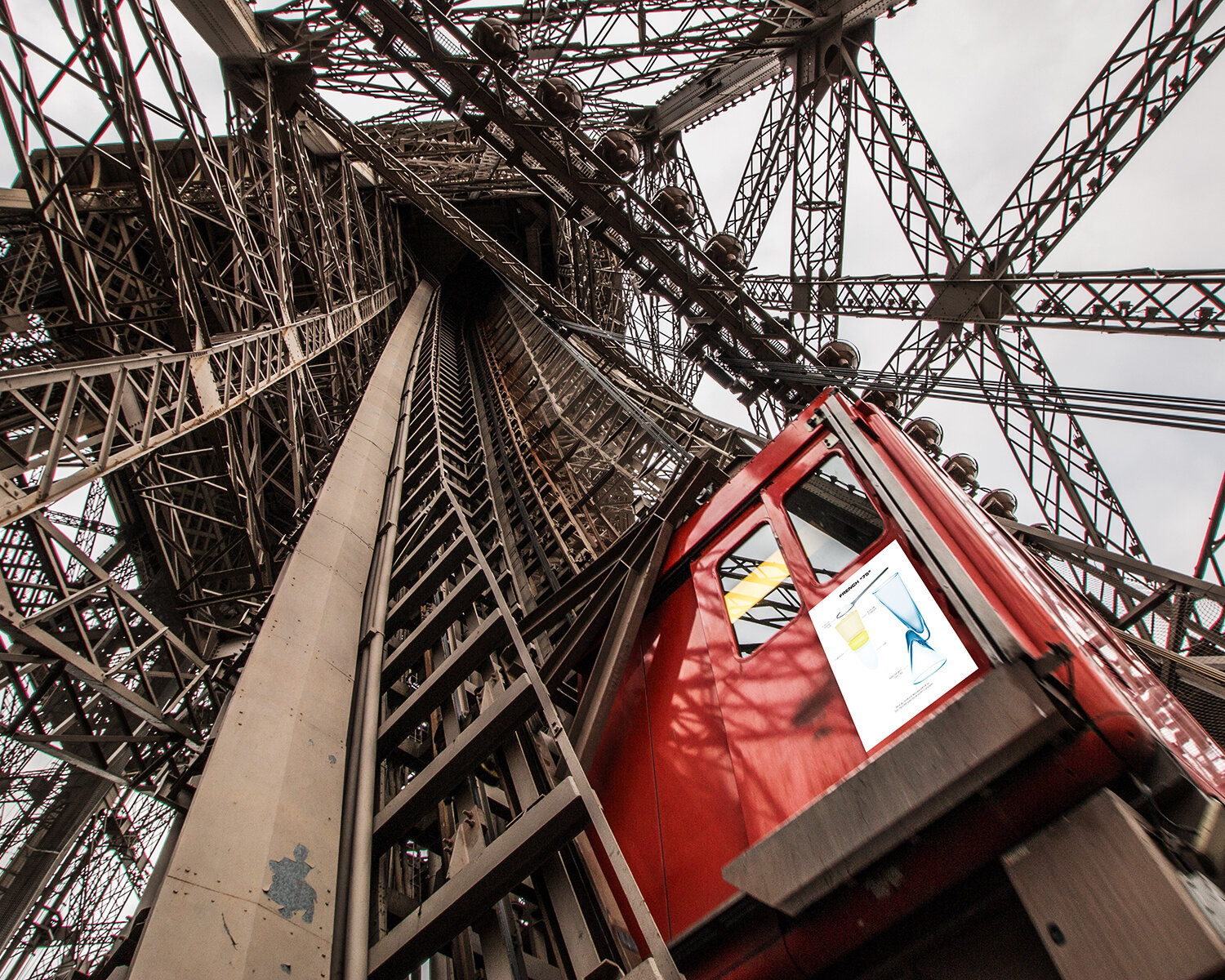
french "75"
The French ”75” got it’s name from the French 75-millimeter field gun used by the French military during WWI. It was probably created at Henry’s Bar in Paris by Henry Tépé in 1914/15 or even earlier and was originally called ”Soixante-Quinze” (Seventy-Five) since both the drink and the field gun would knock you out flat. In The Savoy Cocktail Book Harry Craddock wrote that it “Hits with remarkable precision”.
After the war American soldiers brought the recipe back home where it became a regular at New York’s famous Stork Club.
The Paro glass, designed by Achille Castiglioni in 1983.
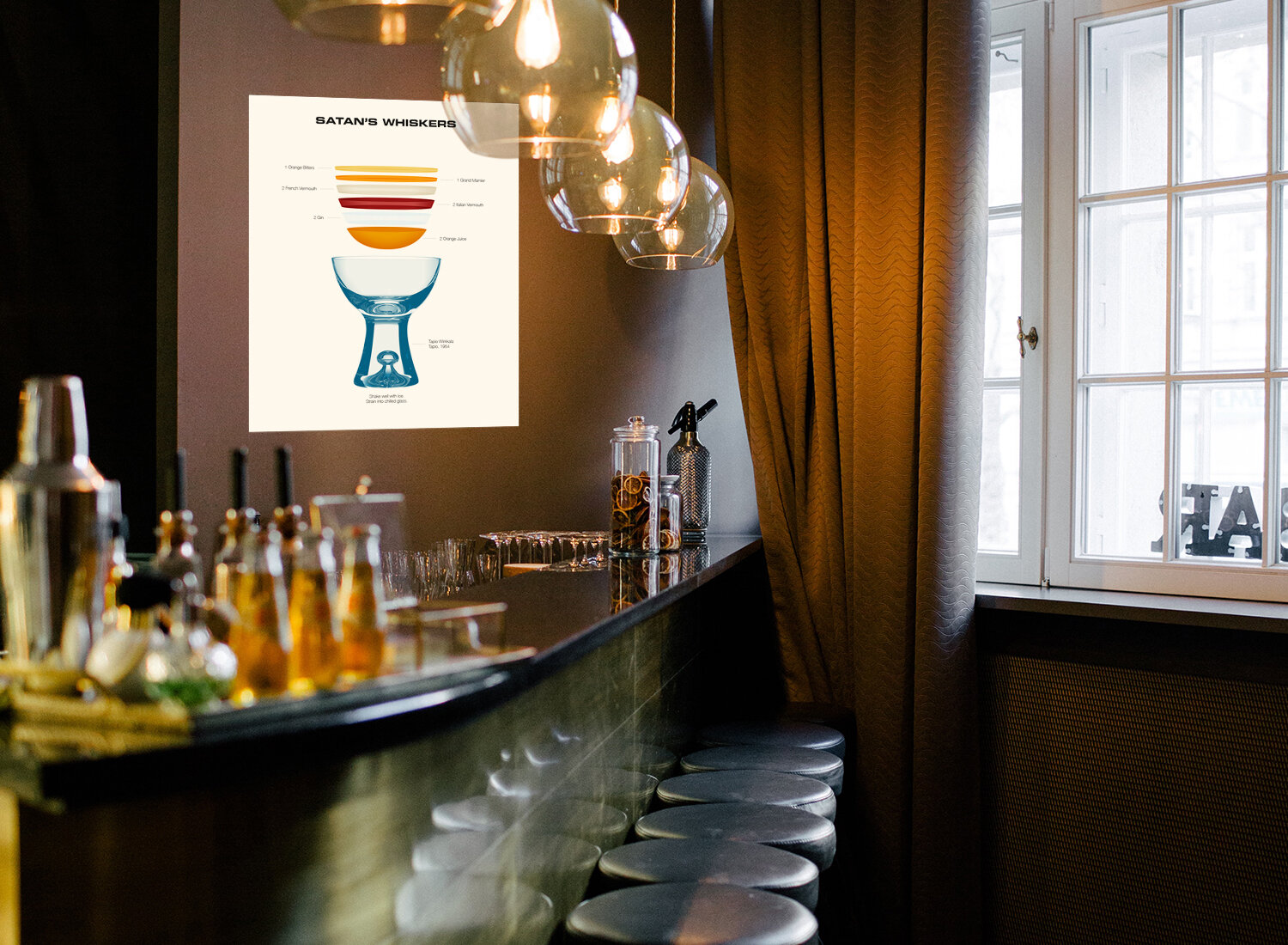
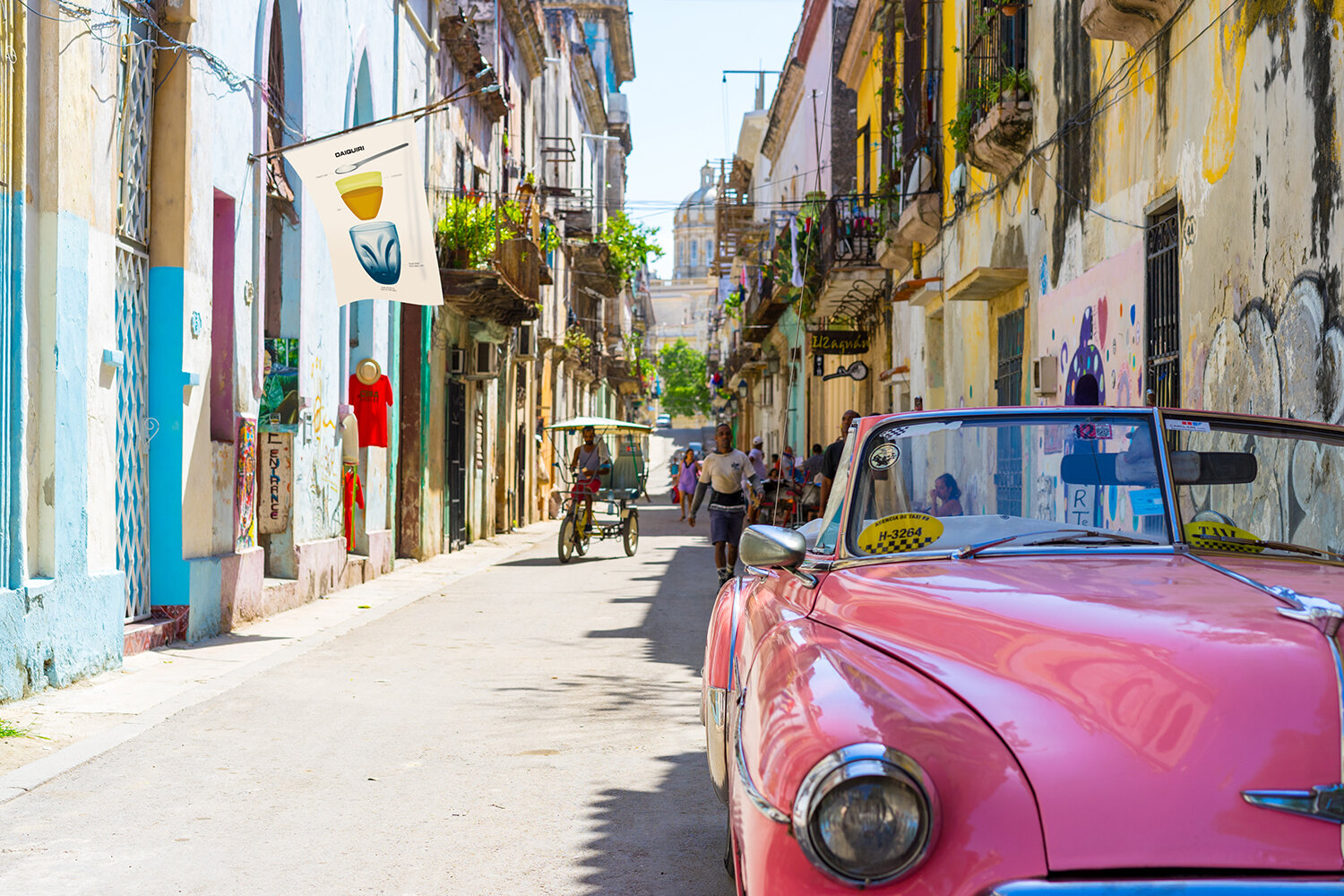
daiquiri
In 1898 an American engineer, Jennings Stockton Cox, led a mining exhibition in the small town of Daiquiri in Cuba. The story goes that he was entertaining guests when he ran out of gin. To keep the party afloat he went out and bought rum that was readily available in Cuba. Mixing the rum with lemons, sugar, mineral water and ice he made it into a punch. The drink is essentially a rum sour but being Cox thought it was more suitable to name it after the town they were in.
Over time bartenders in Cuba removed the mineral water and made it a single serving cocktail instead of a punch and the drink started to get popular. Thanks to F. Scott Fitzgerald’s and Ernest Hemingway’s writings about the cocktail, the Daiquiri went from a party in a small Cuban town to being famous around the world. In fact, Hemingway liked it so much he created his own version at El Floridita in Havana, the Papa Doble or the Hemingway Daiquiri, made with double the amount of rum, grapefruit juice and Maraschino liqueur.
The Pinch Glass was designed by Russel Wright in 1950.
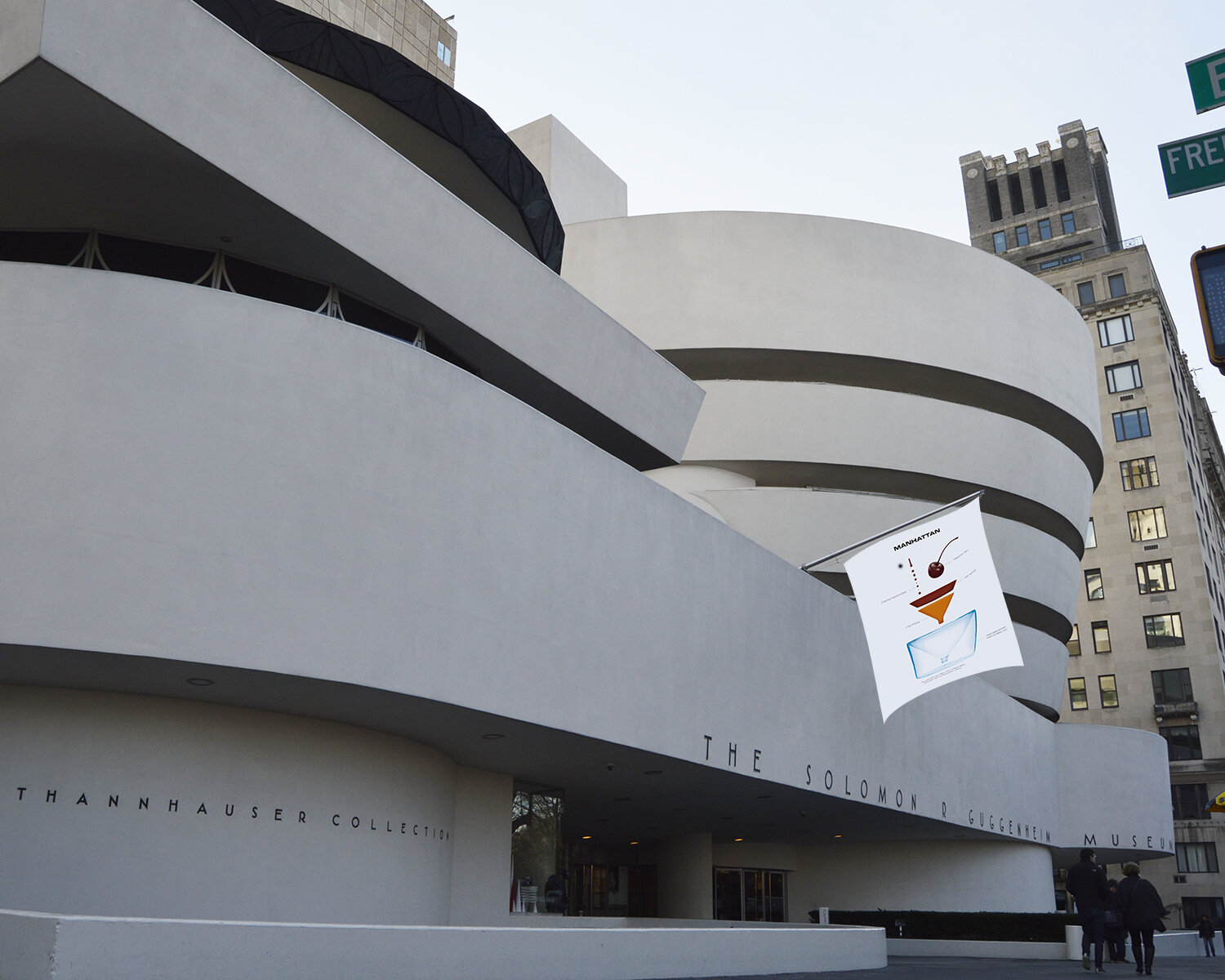
manhattan
The Manhattan is one of the very first cocktails that called for vermouth as a modifier, having been invented before the Martini, the Rob Roy and the Martinez. One story is that it was created at the Manhattan Club at a party arranged by Lady Randolph Churchill in 1874. This, however is not very likely since she at the time of the party was at home in London giving birth to Winston Churchill. Another account was written by a New York bartender, William F. Mulhall, working at the Hoffman House in NY from the 1880’s. He wrote “The Manhattan cocktail was invented by a man named Black, who kept a place ten doors below Houston Street on Broadway in the eighteen-sixties—probably the most famous drink in the world in its time.”.
The glass was designed in 2003 by the American designer Alissia Melka-Teichroew.
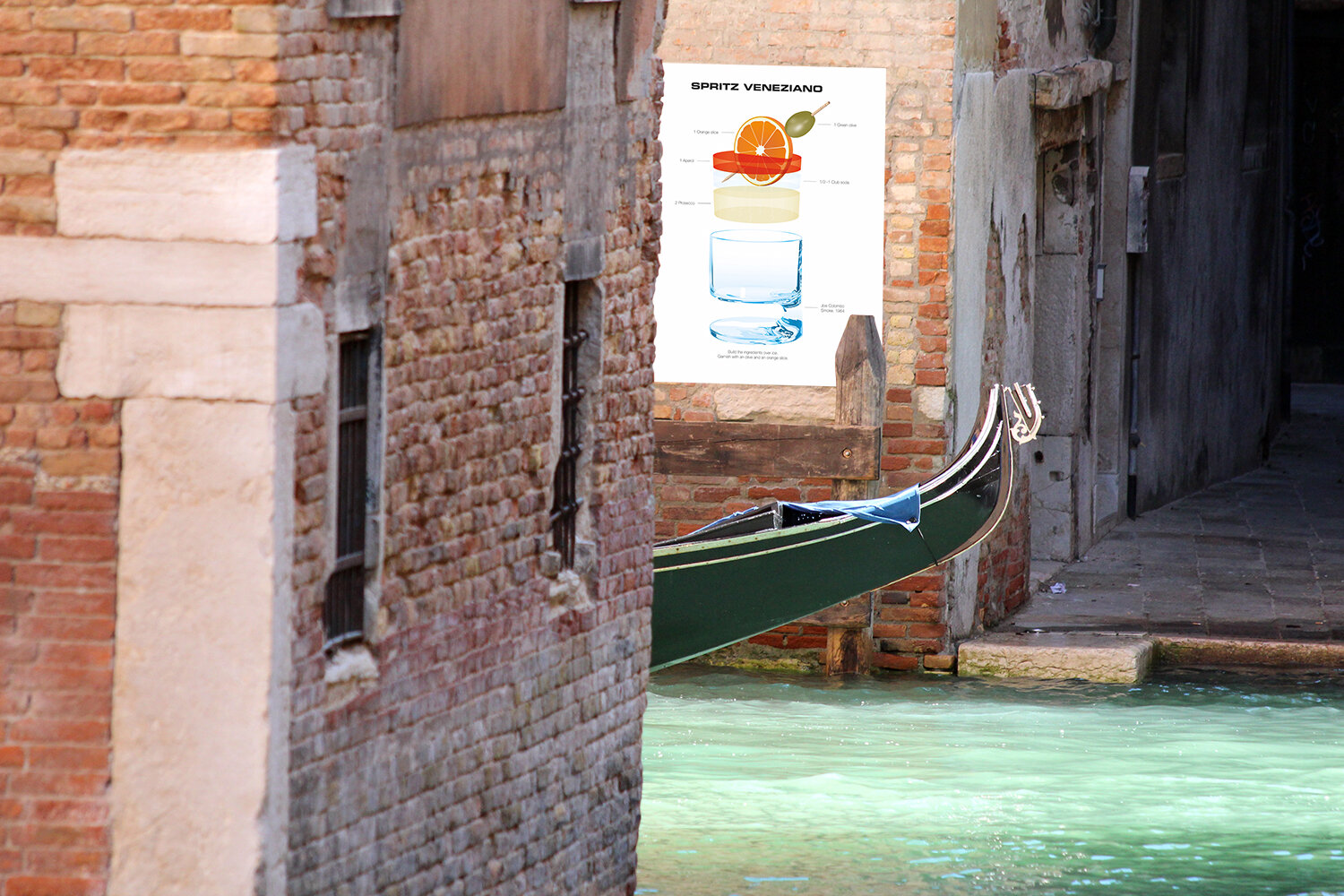
spritz veneziano
The Spritz Veneziano, also known as Aperol Spritz, originated around the 19th century in Venice. The Hapsburg soldiers that occupied the area thought the Venetian wines were too strong in alcohol so they started adding a spritz of water to the wine. At the turn of the nineteenth century, soda water was added instead of water and during the 1920s and 1930s a bitter was included, making it a real cocktail. Not until the 1990s Prosecco was finally added to the Spritz Veneziano.
The glass, called Smoke, was designed by Joe Colombo in 1964 and was made to make it easier to hold your cigarette and your glass in the same hand.
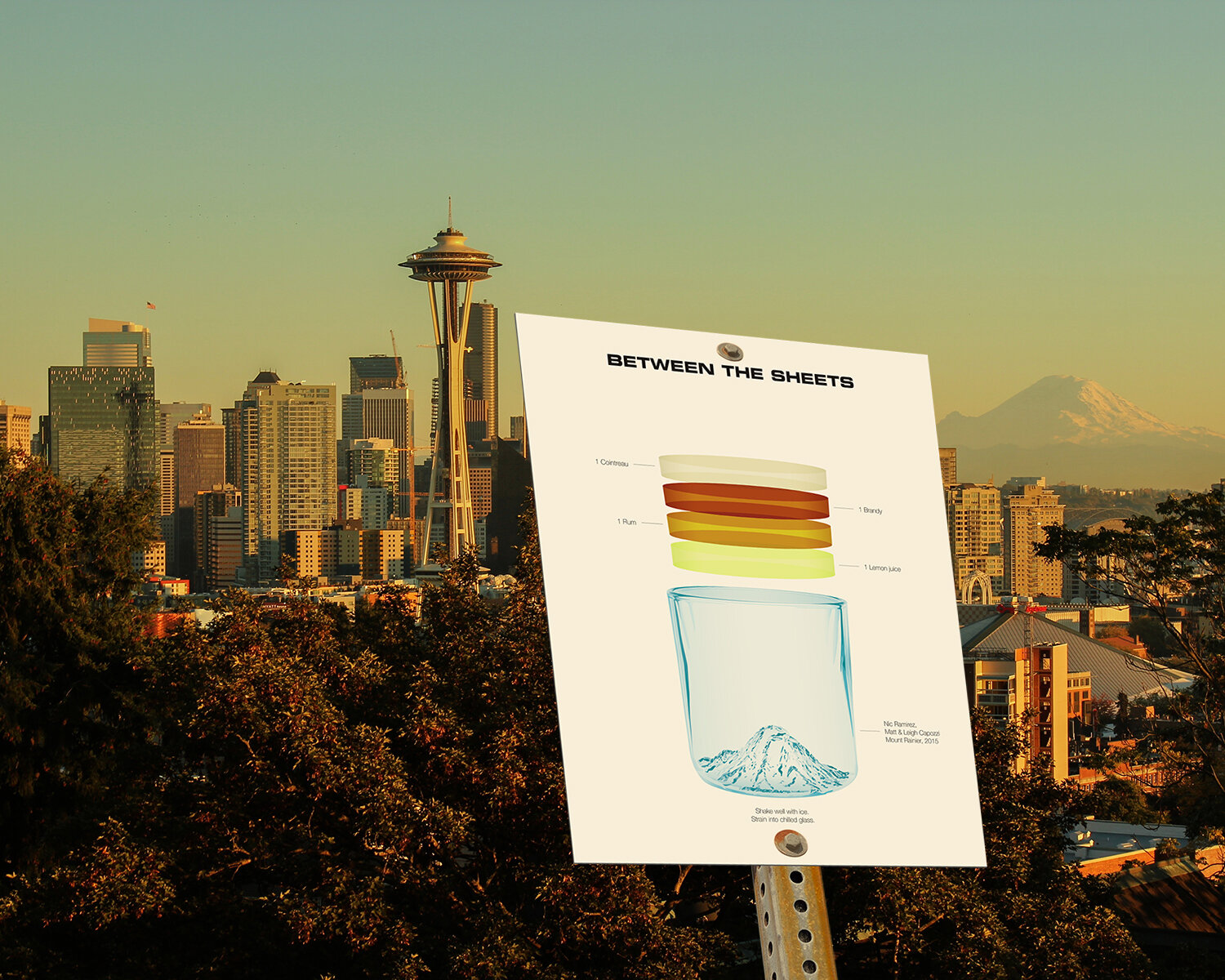
between the sheets
The Between the Sheets was supposedly created in the 1920s by the legendary bartender and author Harry MacElhone at Harry’s New York Bar in Paris. The cocktail is a close cousin to the Sidecar but by including rum to the mix it gets an added complexity. As not to have the rum take over the cocktail it is best to opt for an unnamed or lightly aged rum.
Harry MacElhone didn’t only create the Between the Sheets, he is also the father to the White Lady and the Old Pal.
The Mount Rainier glass designed by Nic Ramirez, Matt & Leigh Capozzi in 2015, originally as a Kickstarter project.
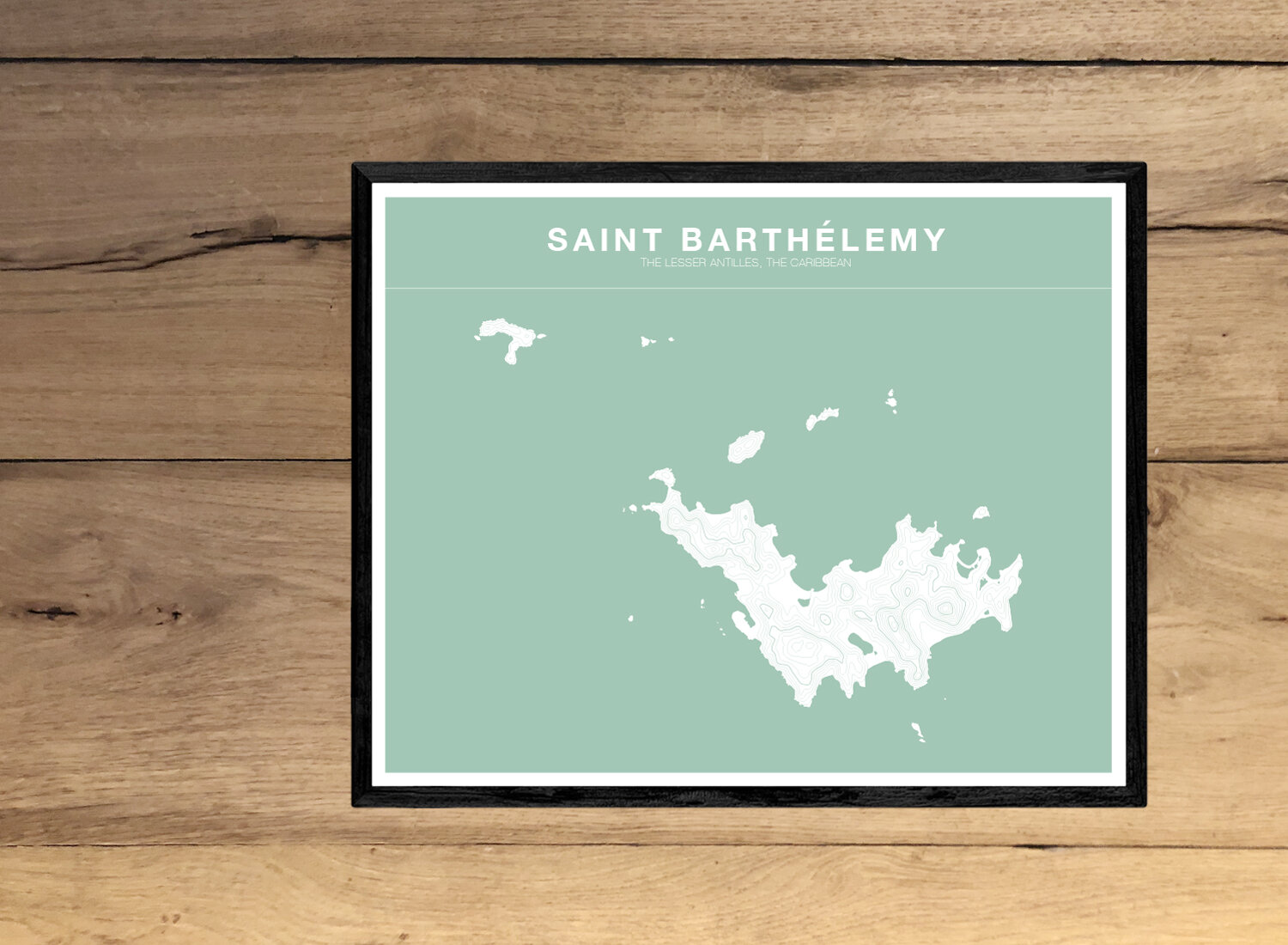
saint barthélemy
Saint Barthélemy, commonly known as St. Barts, is known for its white-sand beaches and designer shops. The capital, Gustavia, has historical attractions like the Wall House, exhibiting the island’s Swedish colonial era. Perched above town is 17th-century Fort Karl, overlooking the pretty Shell Beach.
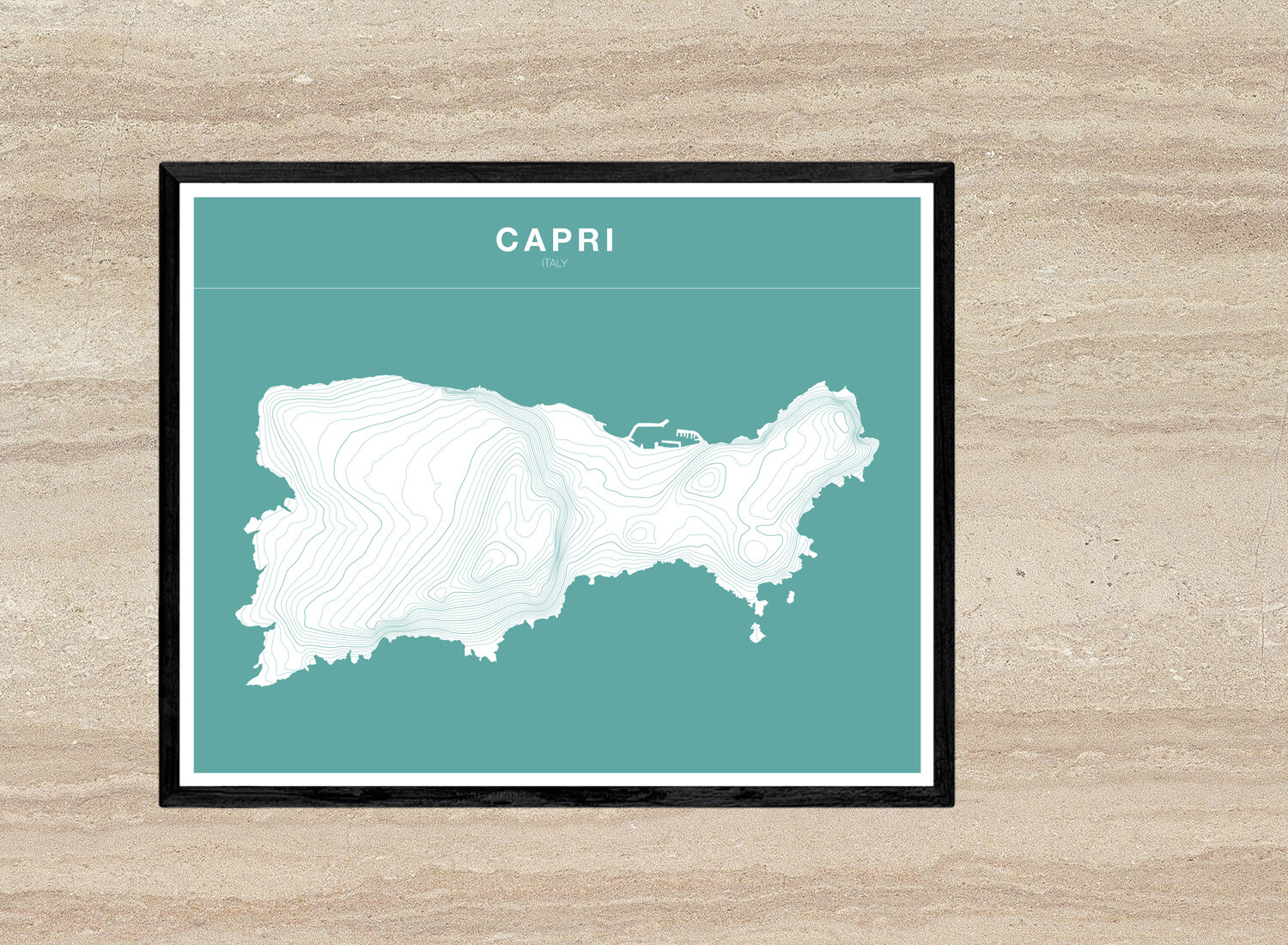
capri
Just a short boat trip from Naples, and an even shorter one from Sorrento, lies the beautiful island of Capri. Famous for its lemon groves and overlooking the Bay of Naples and Mount Vesuvius it is a must see when traveling the south of Italy.
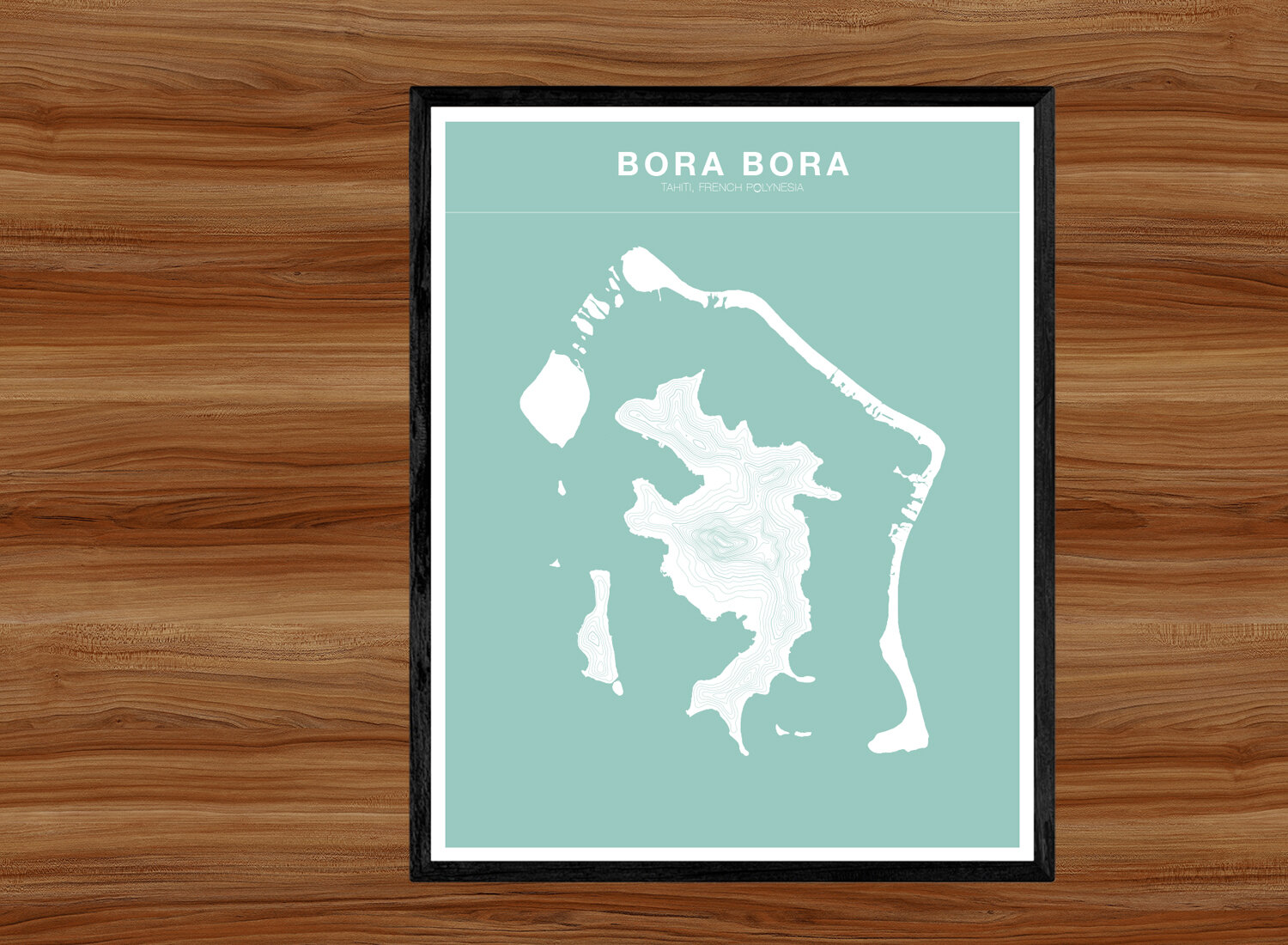
bora bora
Famous for being a paradise island for honeymooners it is without a doubt one of the most beautiful islands in the world with its amazing hotels with over water bungalows, fantastic beaches and even better snorkeling.
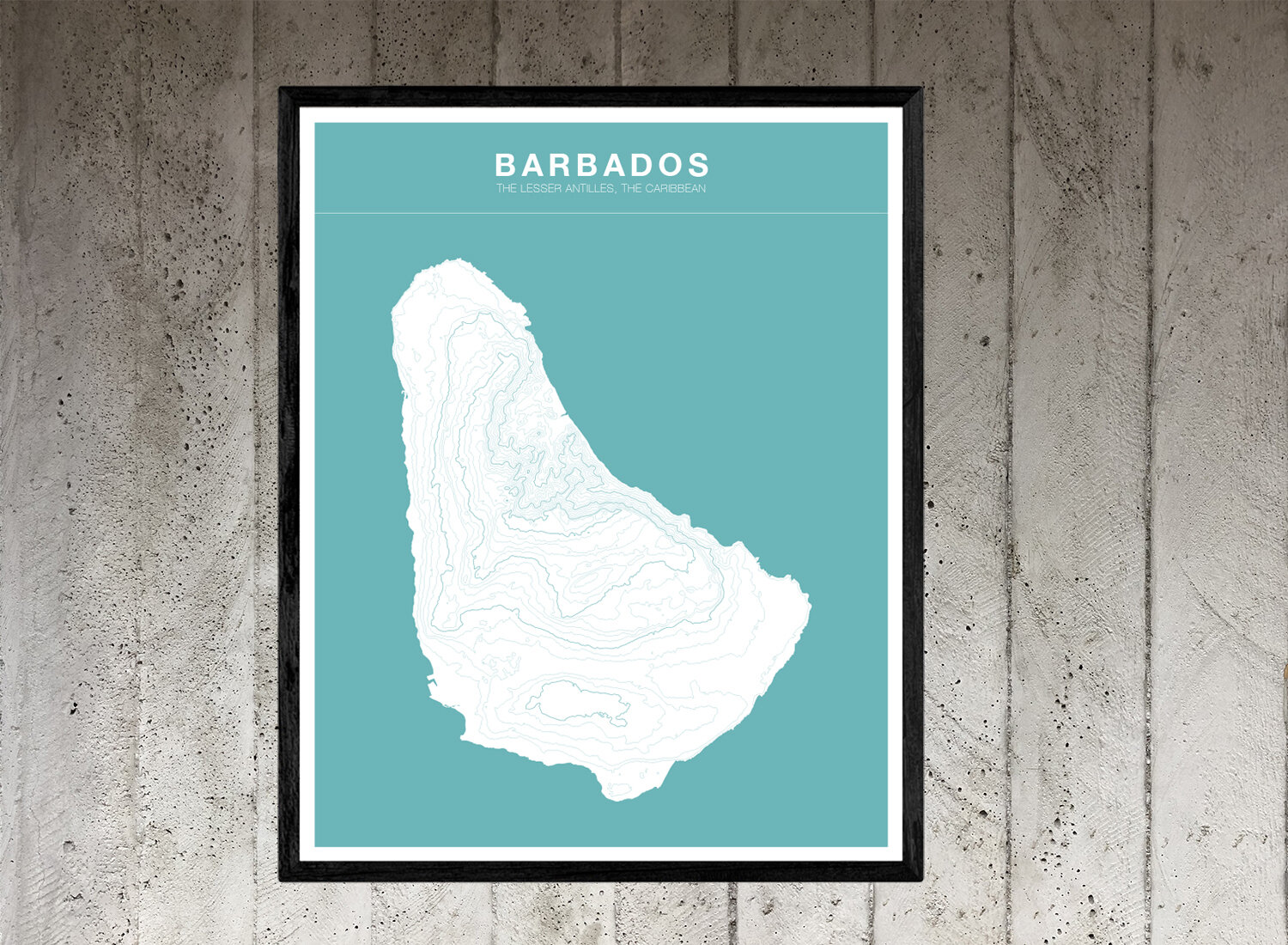
barbados
Home to green monkeys, fish fries, amazing nature, flying fish and, of course, Rihanna. Barbados is also the birthplace of rum (Mount Gay Rum was founded in 1703). It is such a great island you used to be able to travel here by Concorde.
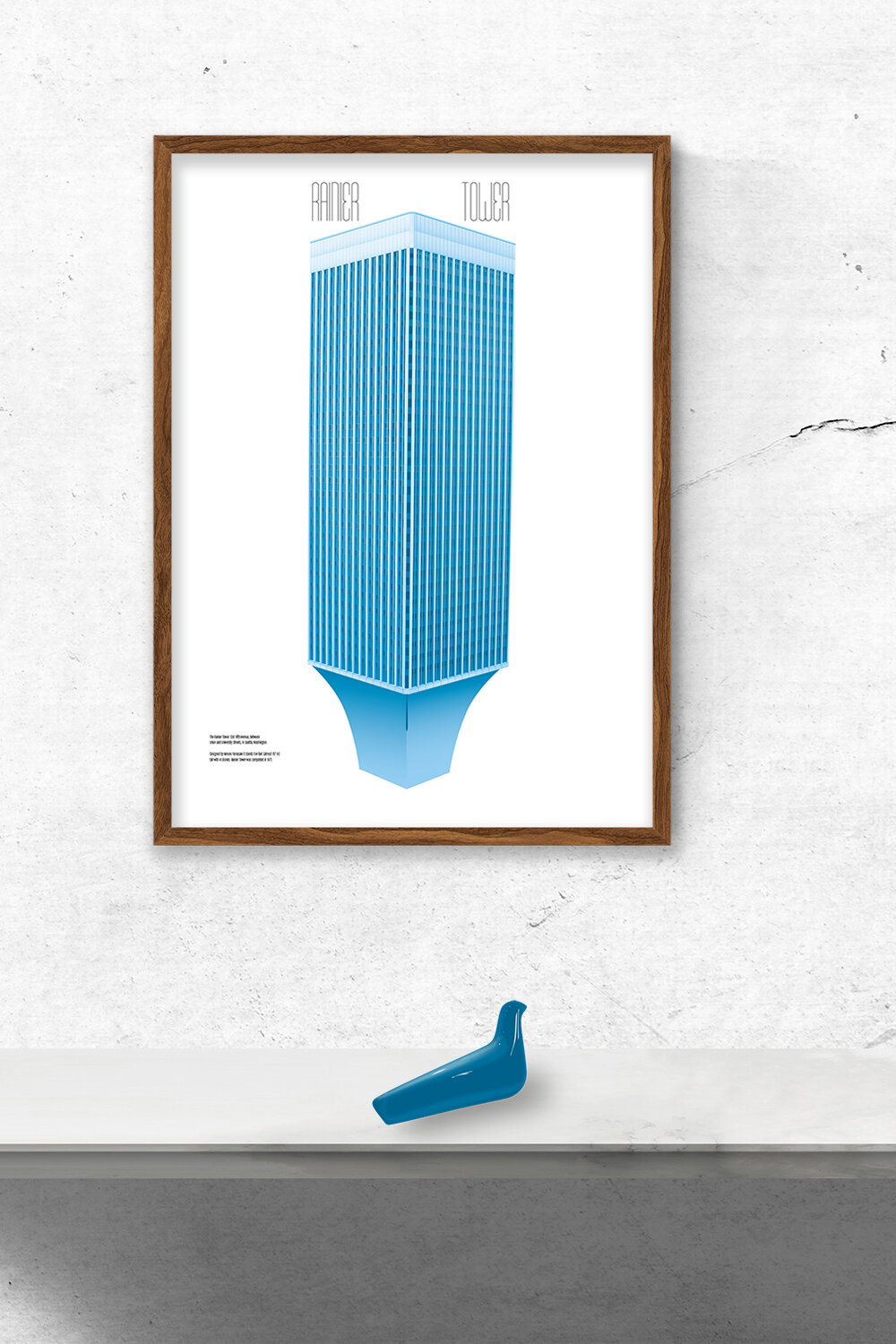
rainier tower
The Rainier Tower, 1301 Fifth Avenue, between Union and University Streets in Seattle, Washington. Designed by Minoru Yamasaki, stands 514 feet (almost 157 meters) tall with 41 stories and was completed in 1977.
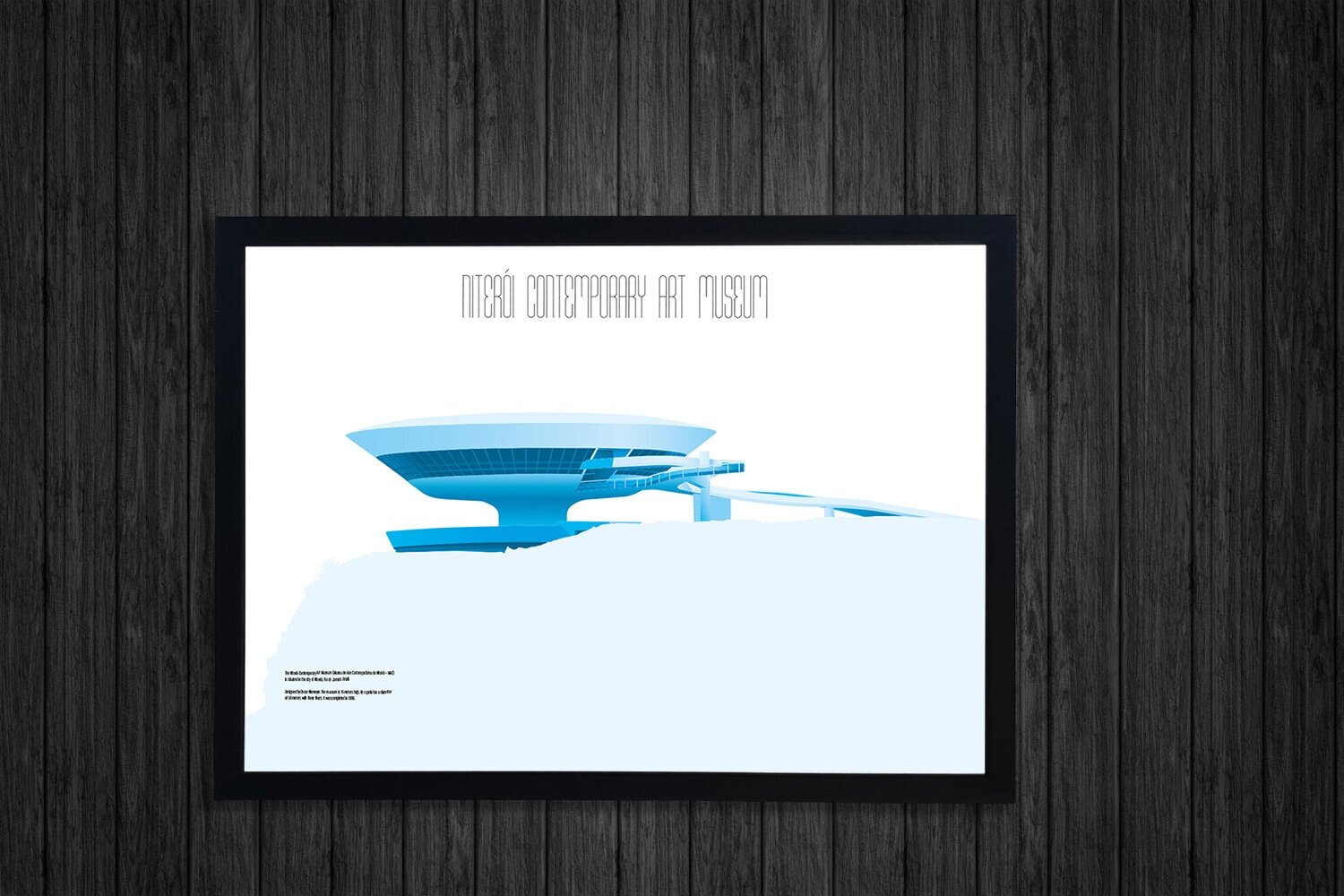
niterói contemporary art museum
The Niterói Contemporary Art Museum (Museu de Arte Contemporânea de Niterói — MAC) is situated in the city of Niterói, Rio de Janeiro, Brazil. Designed by Oscar Niemeyer. The museum is 16 meters high, its cupola has a diameter of 50 meters with three floors. It was completed in 1996.

seagram building
The Seagram Building. 375 Park Avenue, between East 52nd and 53rd Streets in Midtown Manhattan, New York City.
Designed by Ludwig Mies van der Rohe, stands 515 feet (157 m) tall with 38 stories and was completed in 1958.
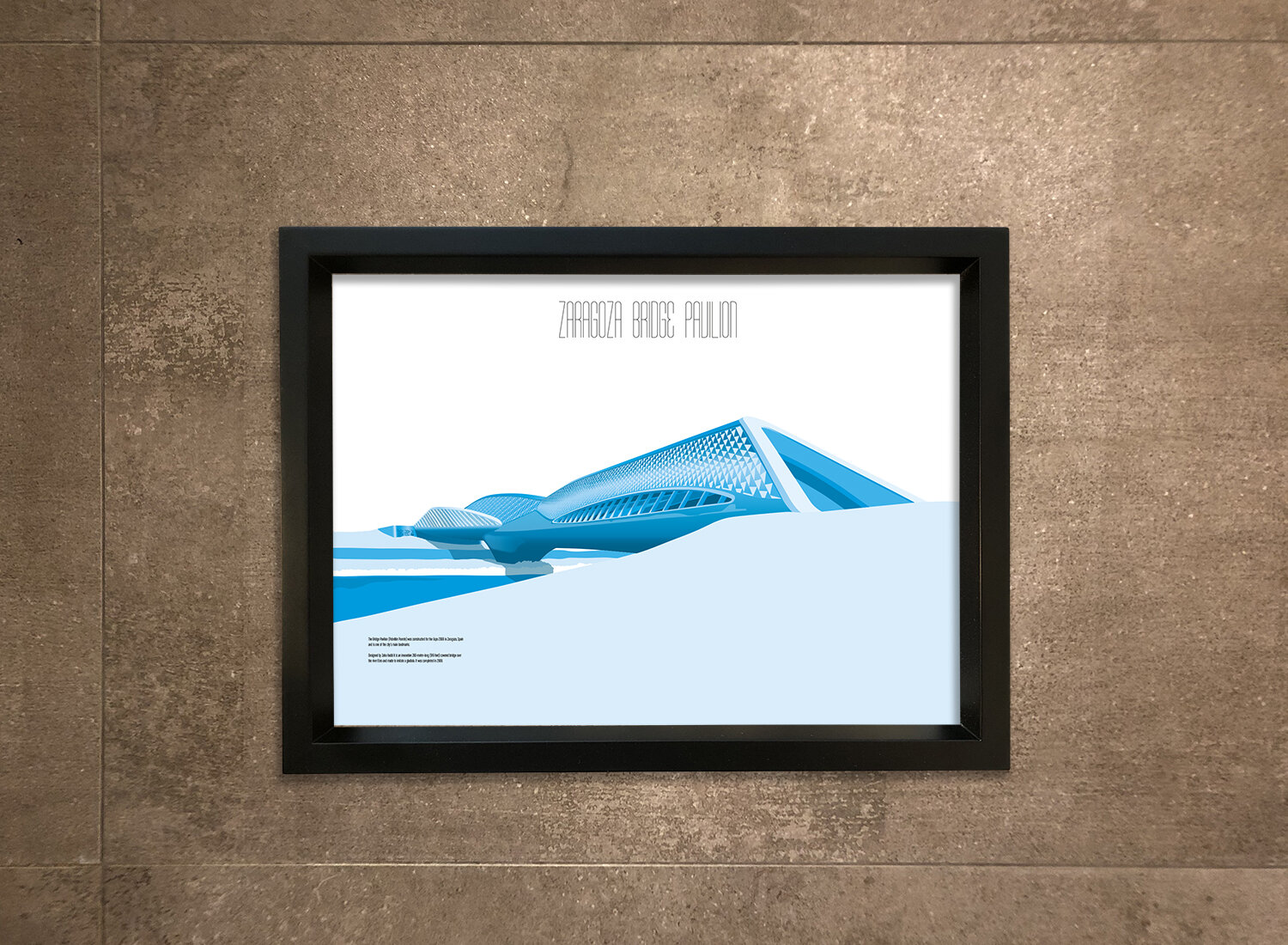
zaragoza bridge pavilion
The Zaragoza Bridge Pavilion (Pabellón Puente) was constructed for the Expo 2008 in Zaragoza, Spain and is one of the city’s main landmarks.
Designed bay Zaha Hadid it is an innovative 280-meter long (919 feet) covered bridge over the River Ebro and mad to imitate a gladiola. It was completed in 2008.
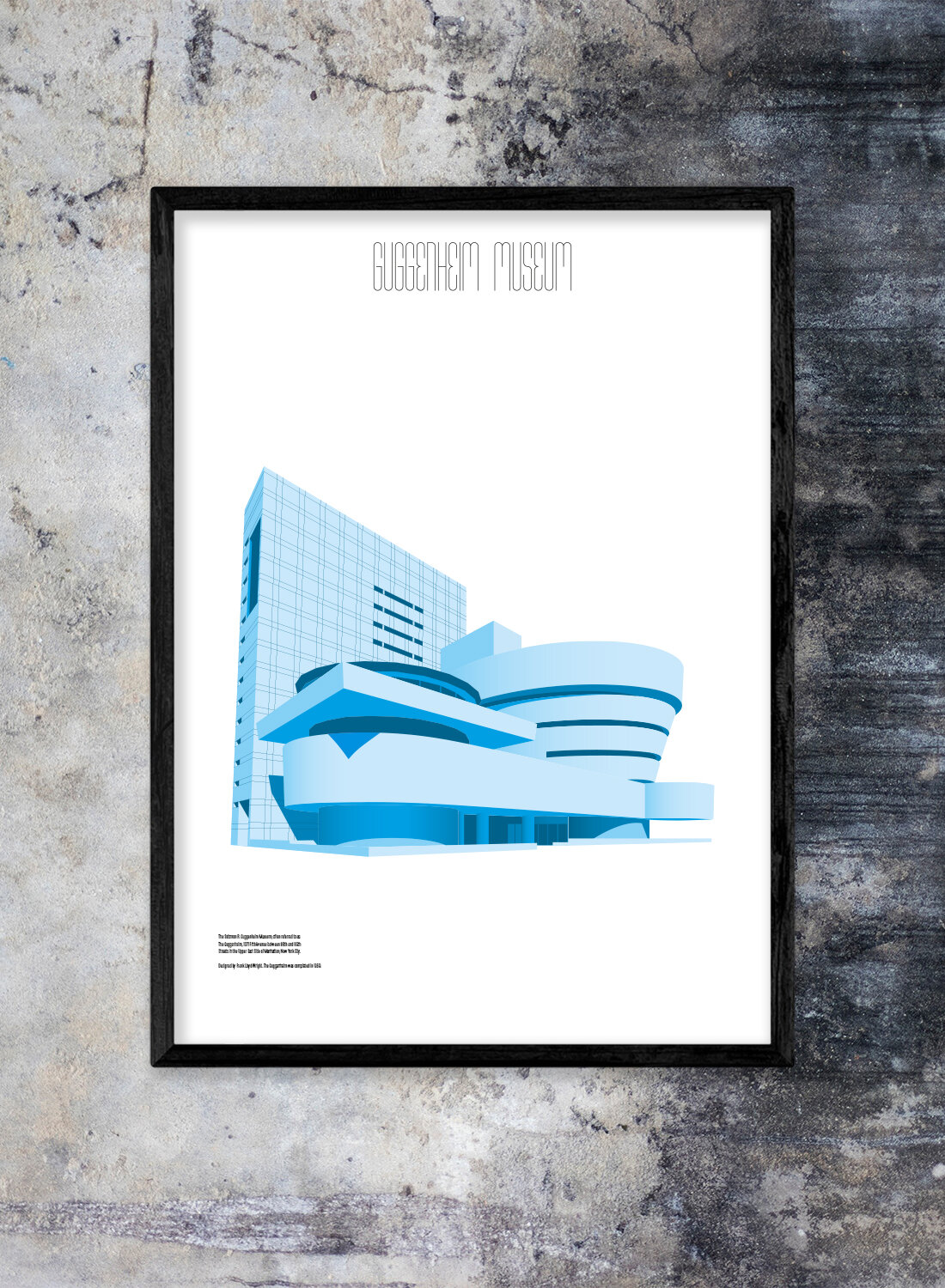
guggenheim museum
The Solomon R. Guggenheim Museum, often referred to as The Guggenheim, 1071 Fifth Avenue on the corner of East 89th Street in the Upper East Side of Manhattan, New York City. Designed by Frank Lloyd Wright. The Guggenheim was completed in 1959.
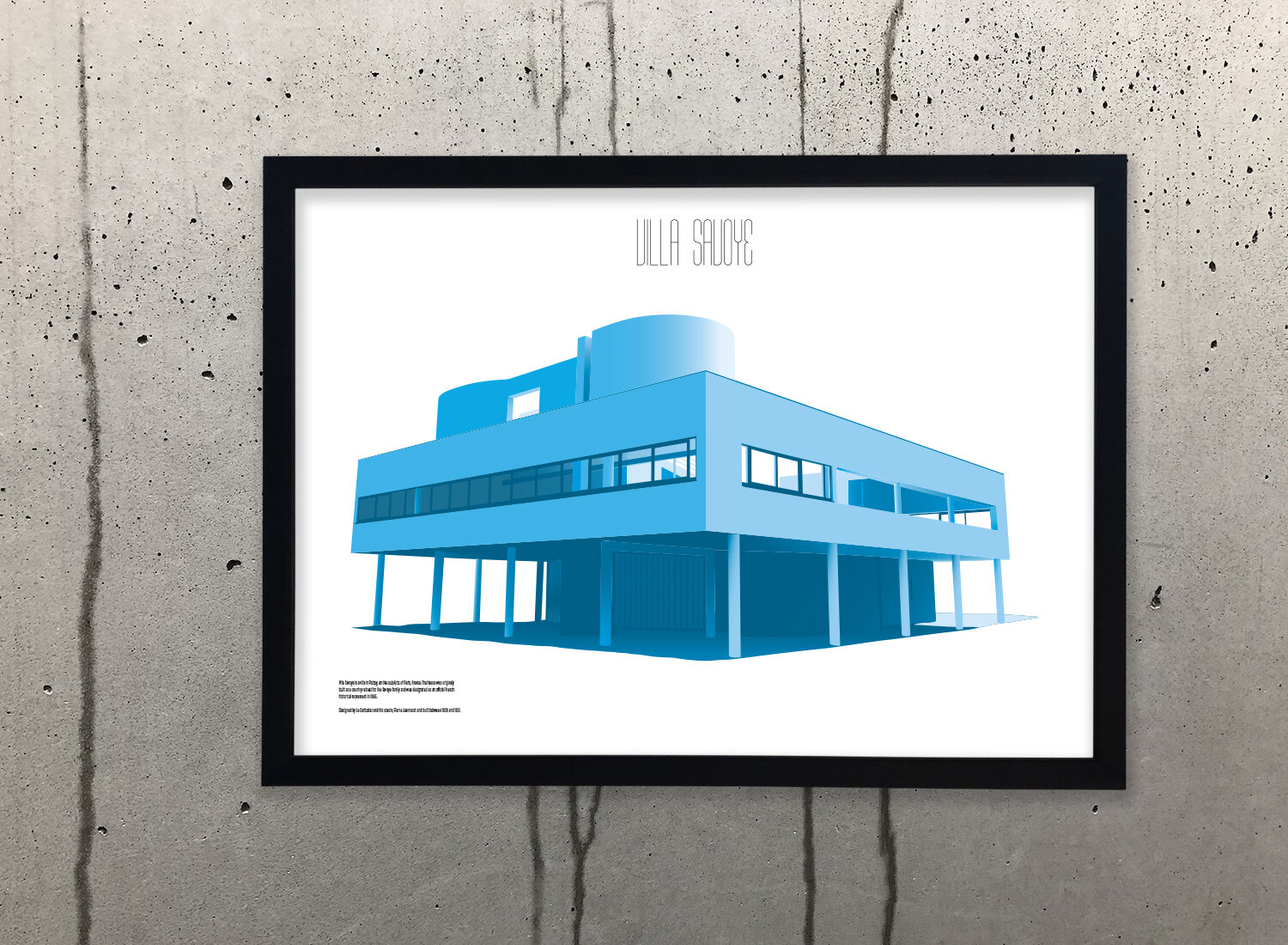
villa savoye
Villa Savoye is a villa in Poissy, on the outskirts of Paris, France. The house was originally built as a country retreat for the Savoye family and was designated as an official French historical monument in 1965.
Designed by Le Corbusier and his cousin, Pierre Jeanneret and built between 1928 and 1931.
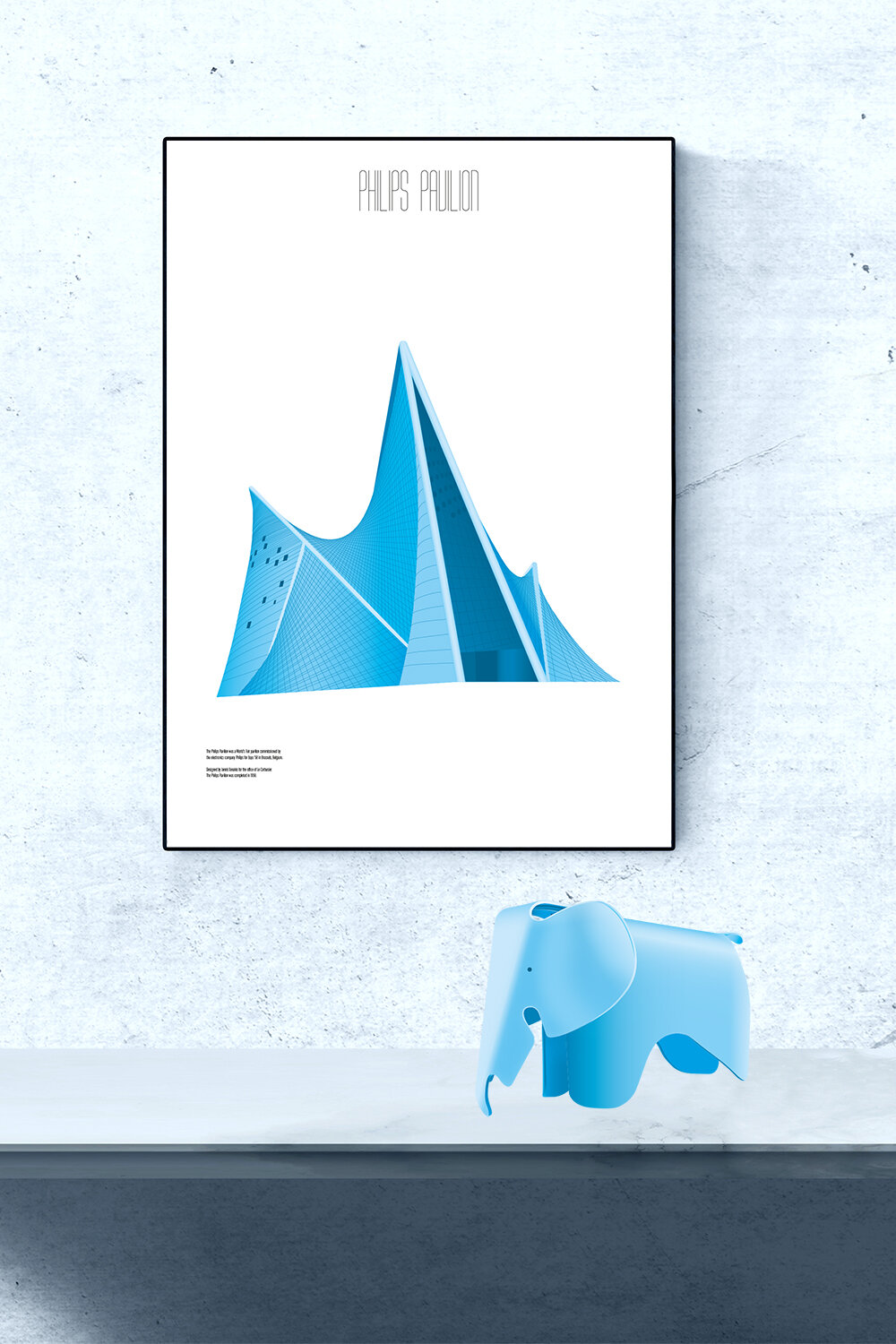
philips pavilion
The Philips Pavilion was a World's Fair pavilion commissioned by the electronics company Philips for Expo '58 in Brussels, Belgium.
Designed by Iannis Xenakis for the office of Le Corbusier. The Philips Pavilion was completed in 1958.
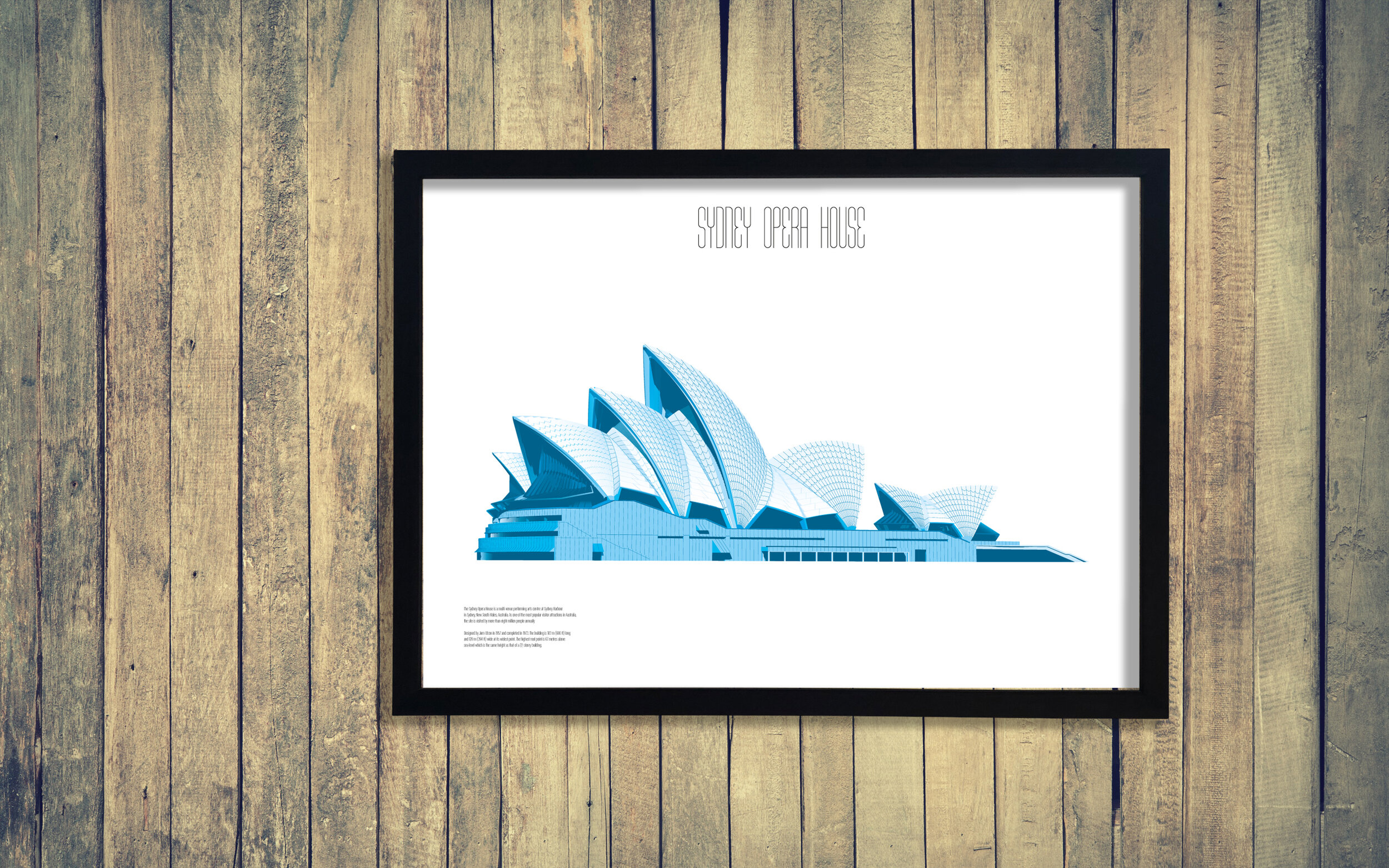
sydney opera house
The Sydney Opera House. Designed by Danish architect Jørn Utzon in 1957 and formally opening it’s doors to the public on 20 October 1973. The building comprises multiple performance venues, which together host well over 1,500 performances annually (on a regular year) and attended by more than 1.2 million people. As one of the most popular visitor attractions in Australia, the site is visited by more than eight million people annually.
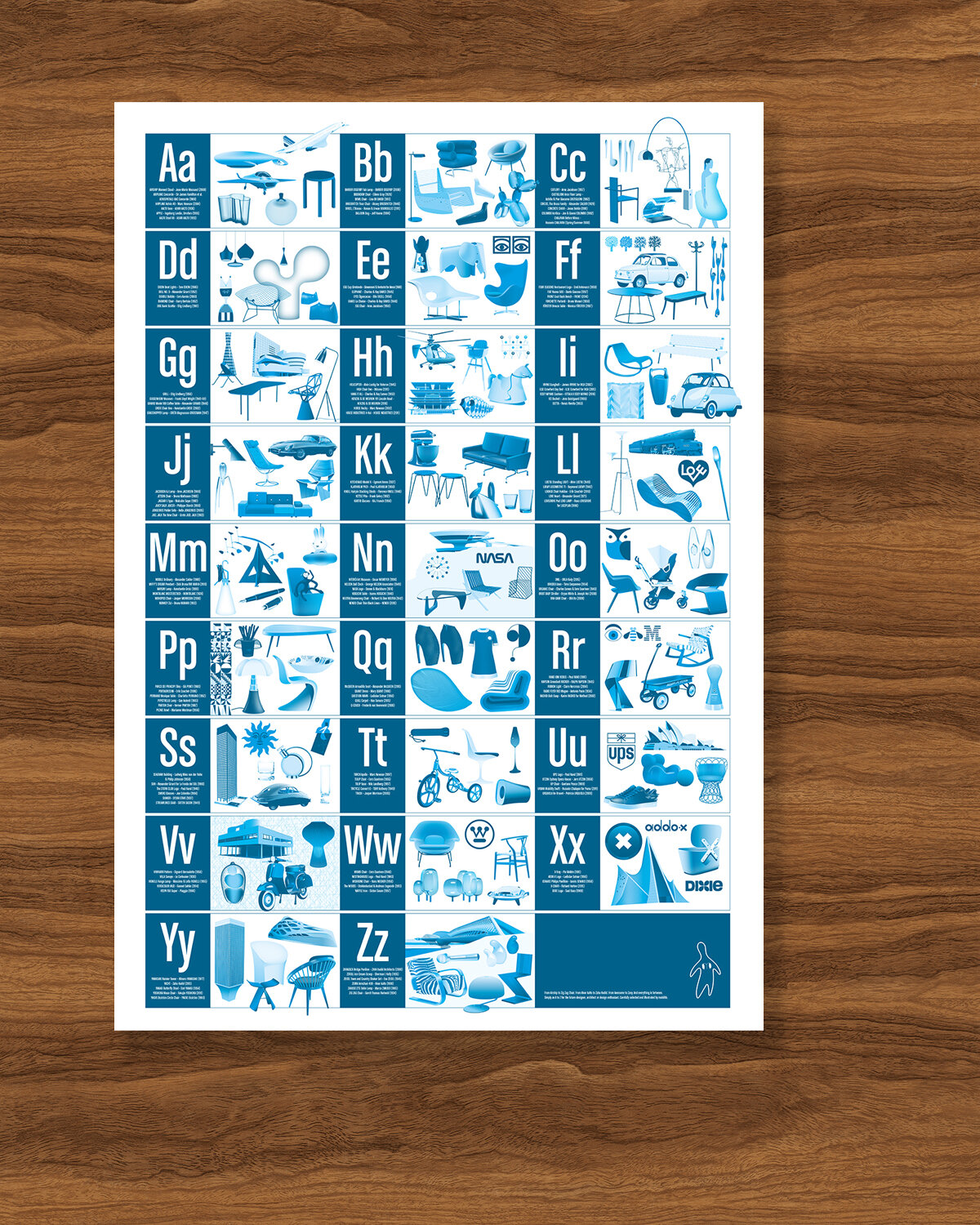
design a–z
From Airship to Zig Zag Chair. From Alvar Aalto to Zaha Hadid. And everything in between. Simply an A to Z for the future designer, architect or design enthusiast. Carefully selected and illustrated by mobilità.
Ask for price and shipping.
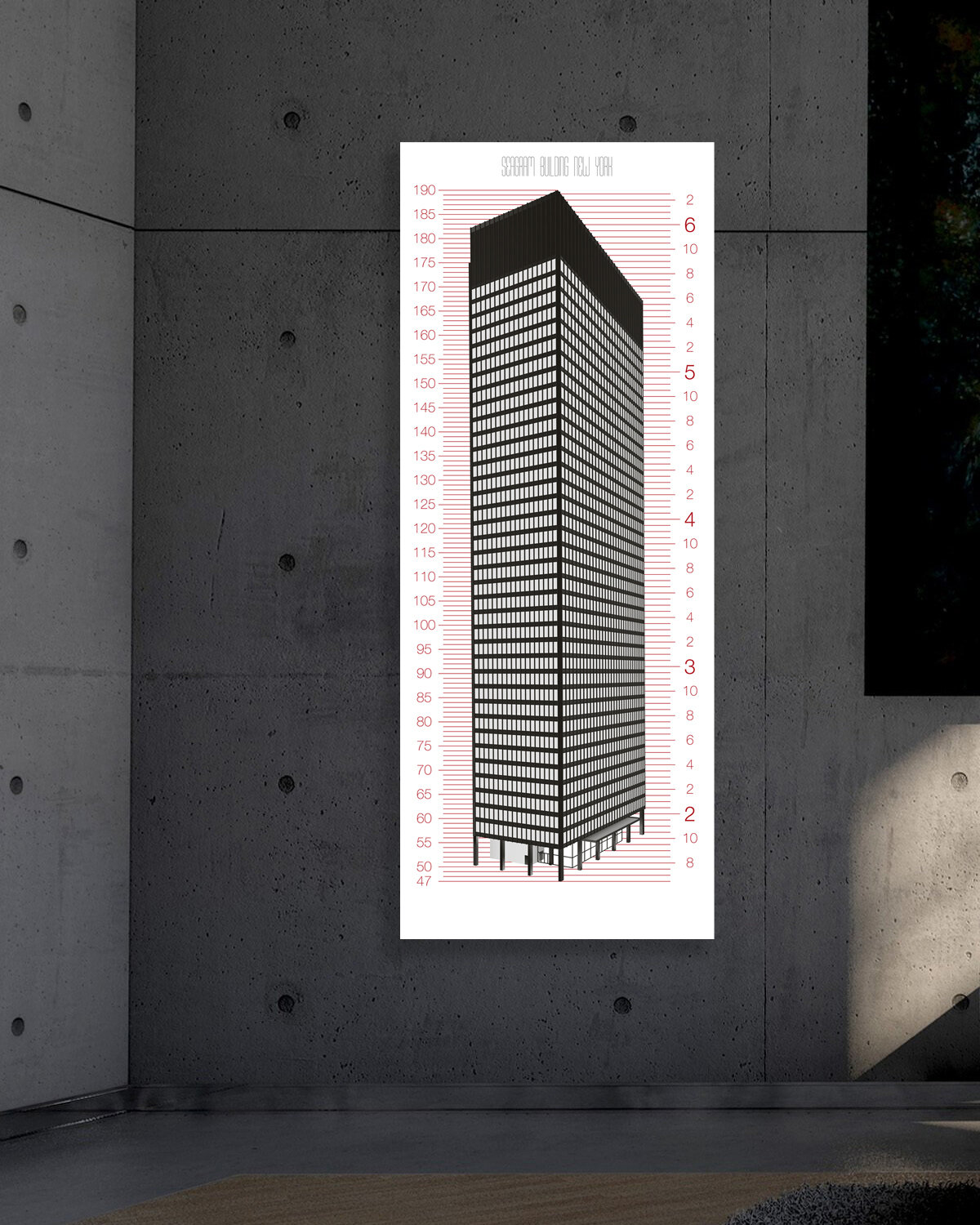
growth chart
The best way to measure your hight must clearly be to compare yourself to an iconic skyscraper. This is a growth chart to check your hight in centimeters and feet.
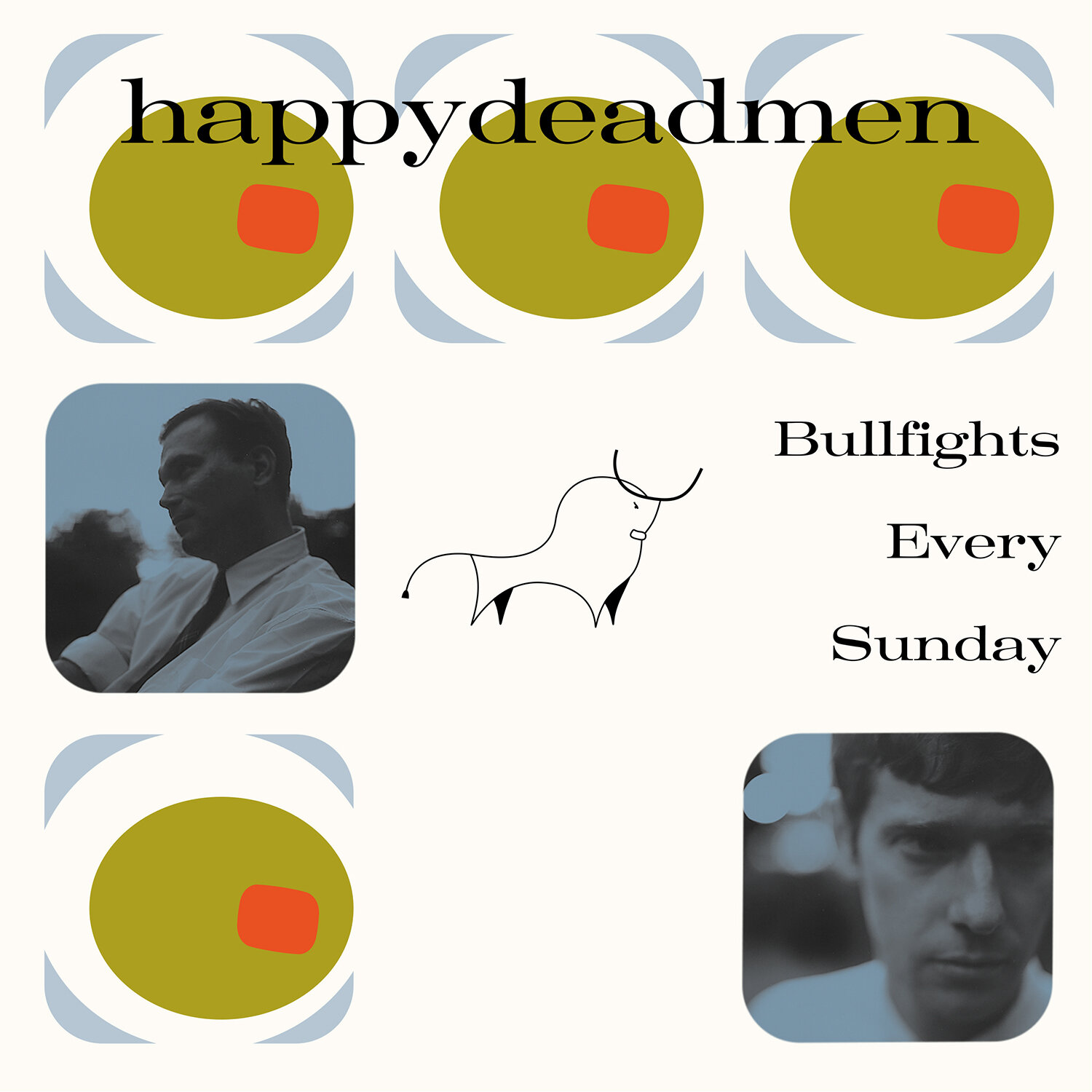
happydeadmen
Cover art for Bullfights Every Sunday. Designed for the Swedish classic indie band Happydeadmen released on Trampoline Records. Photography by Max Fredrikson.
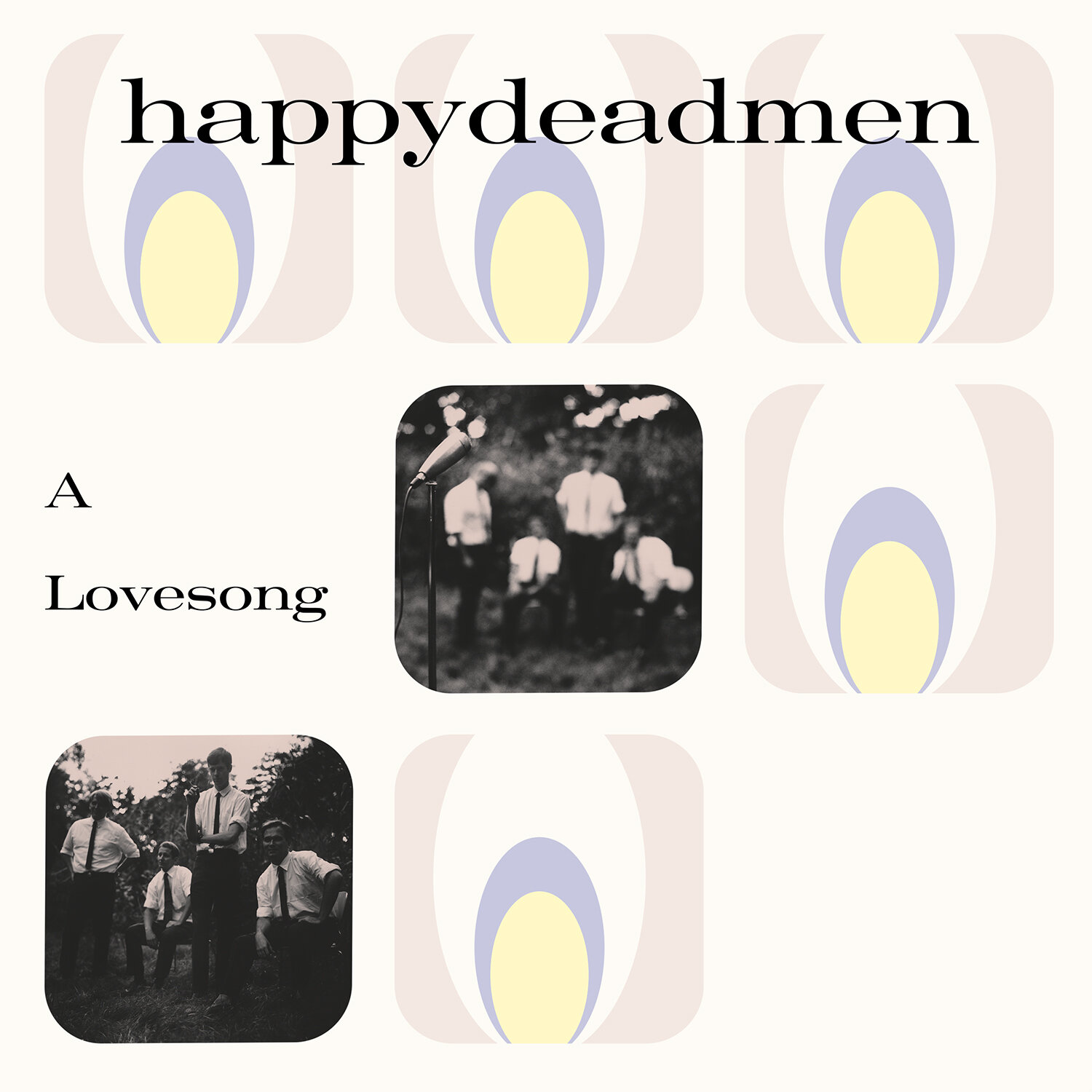
happydeadmen
Cover art for A Lovesong. Designed for the Swedish classic indie band Happydeadmen released on Trampoline Records. Photography by Max Fredrikson.

